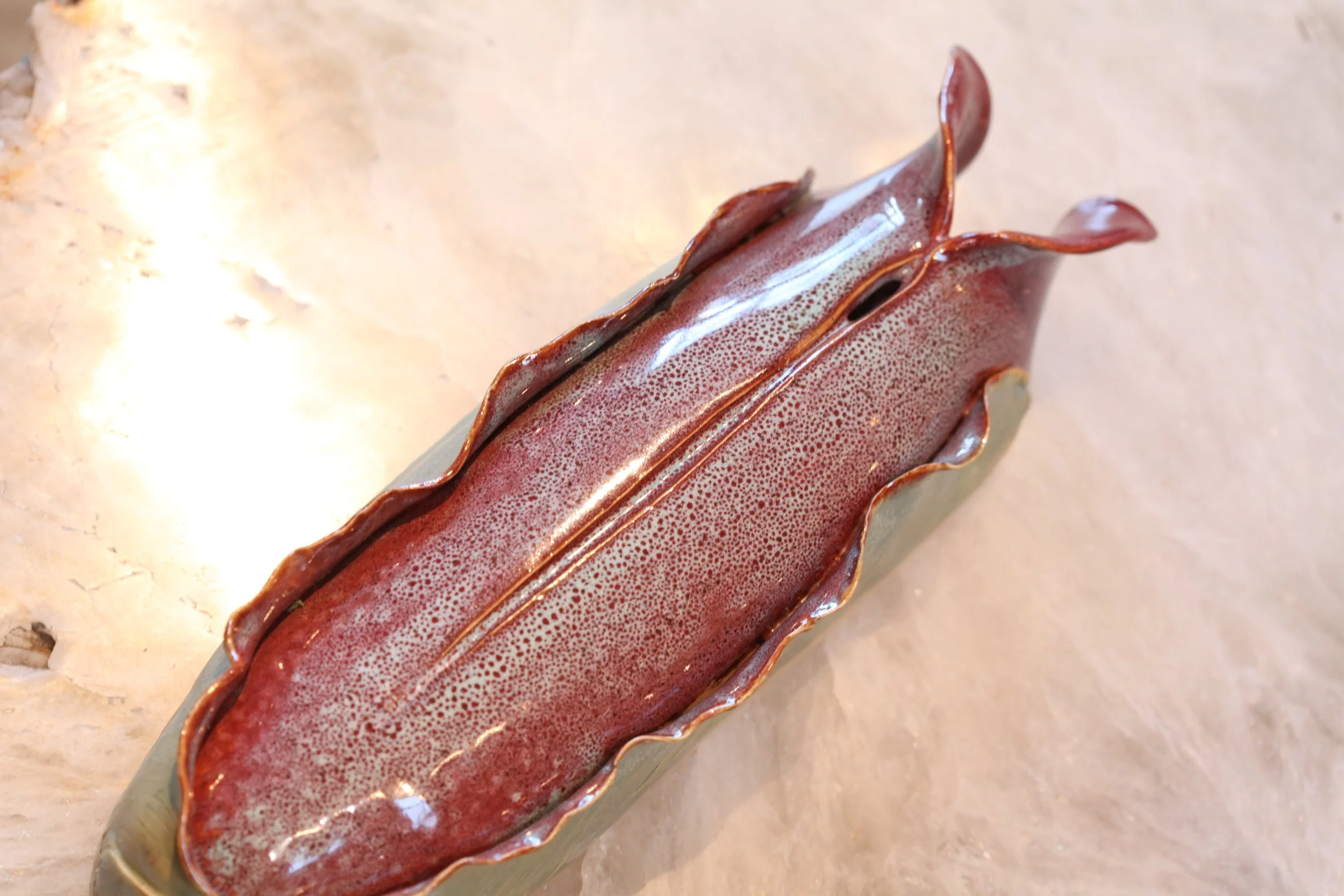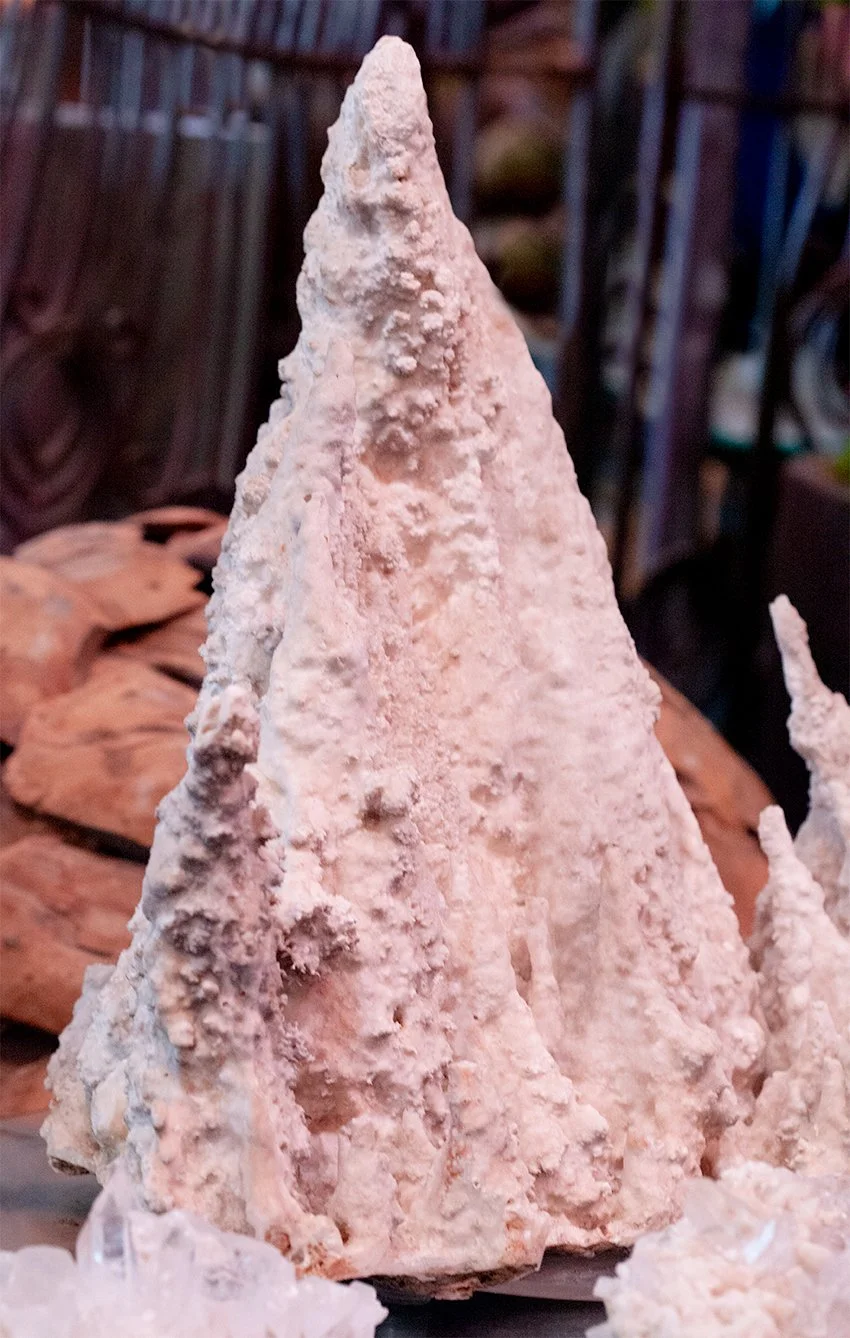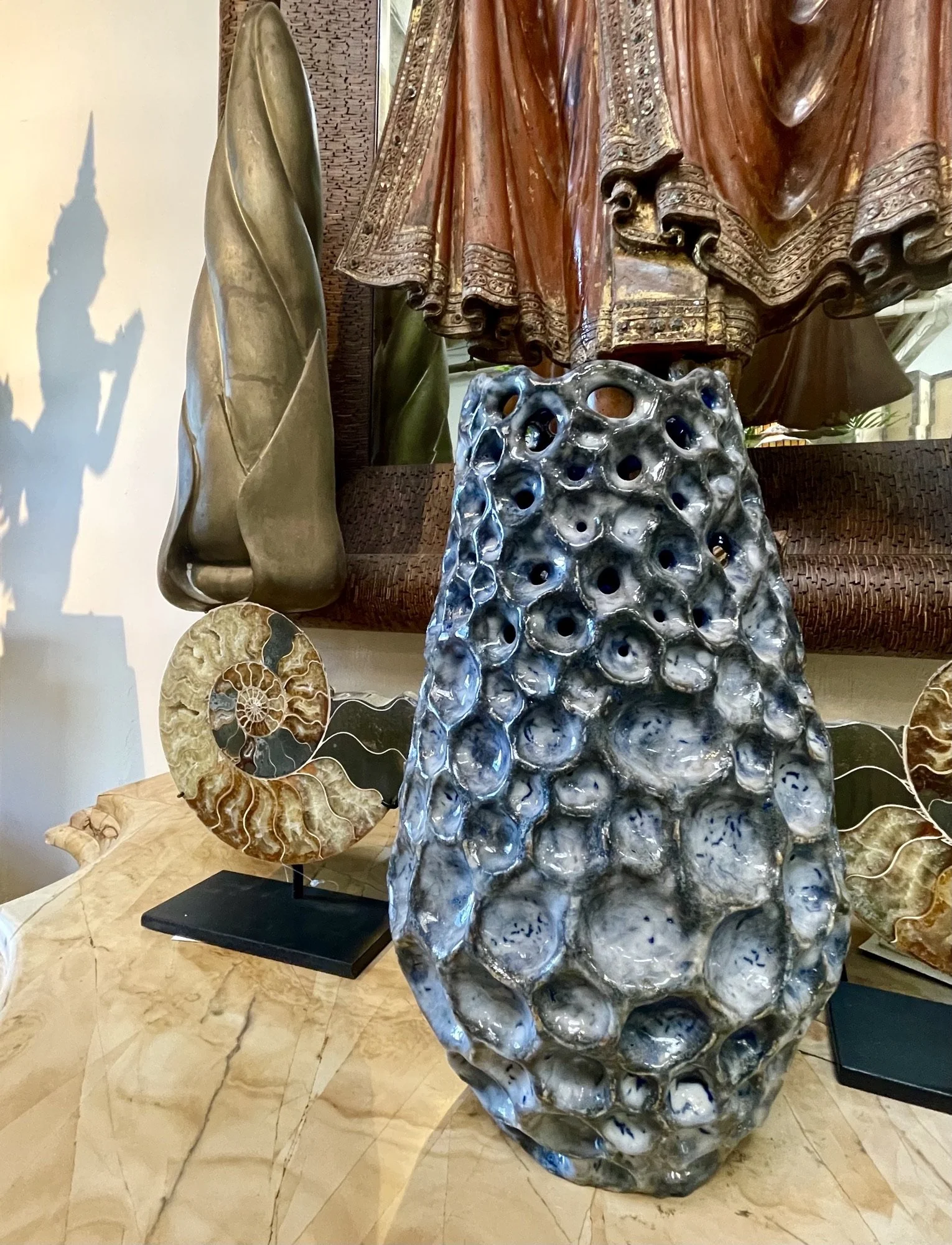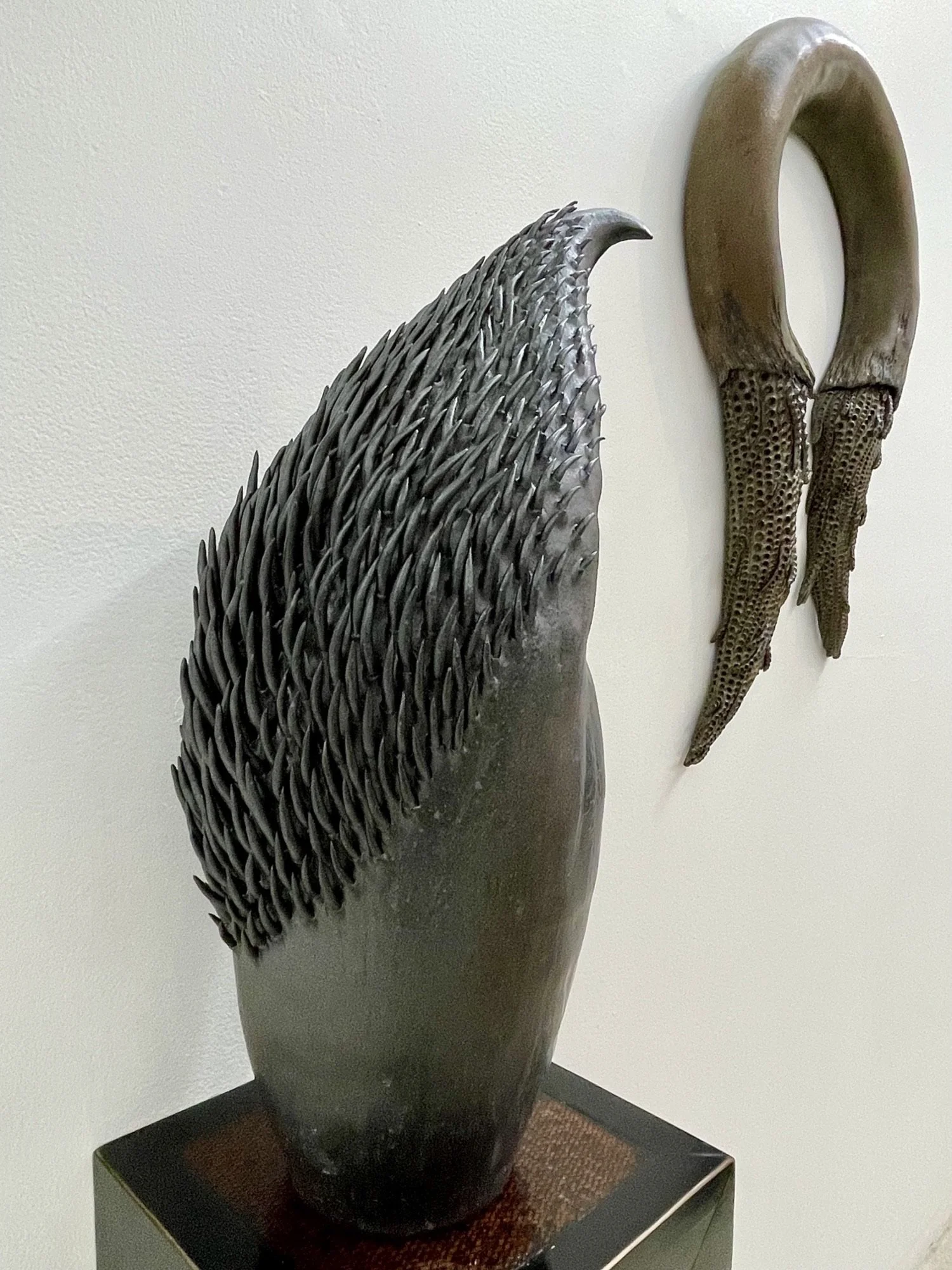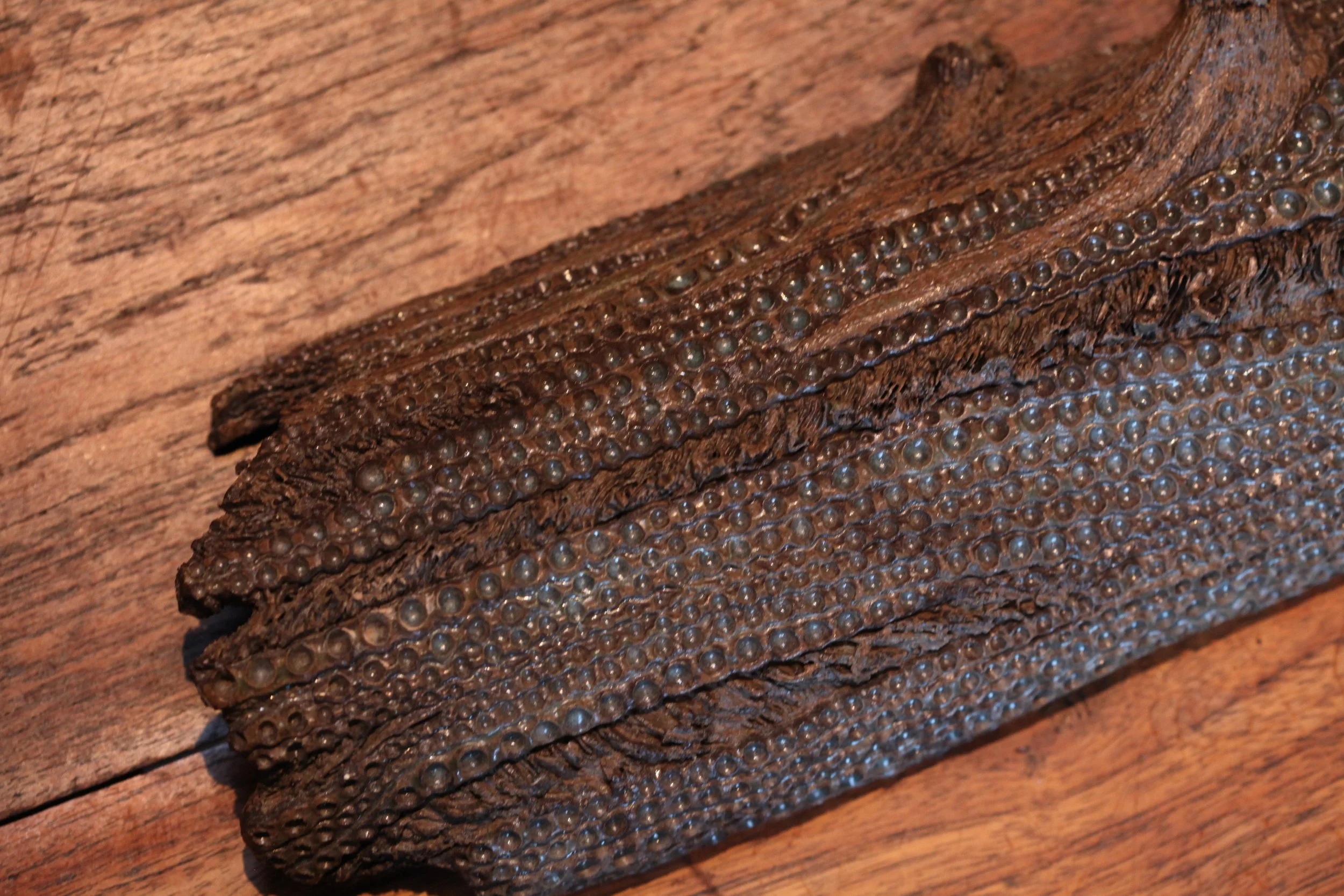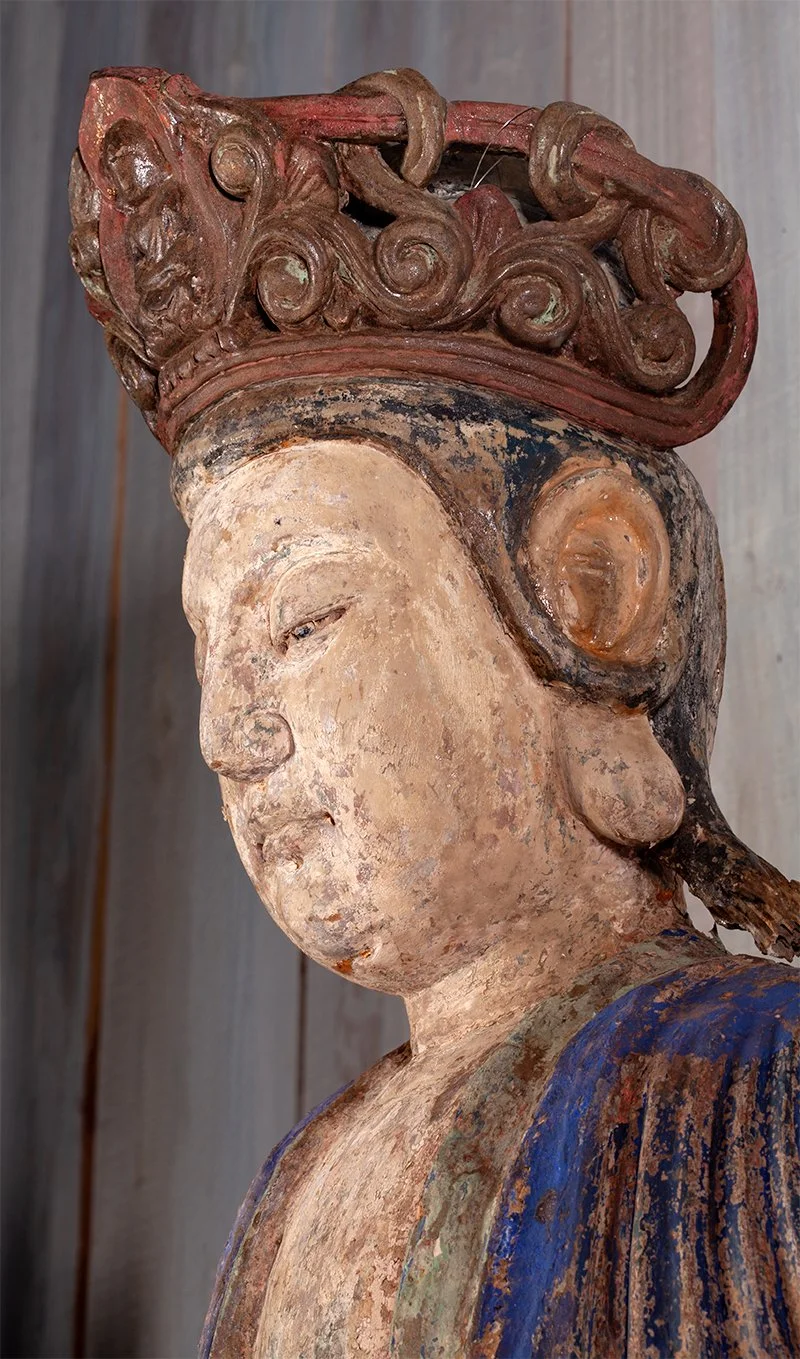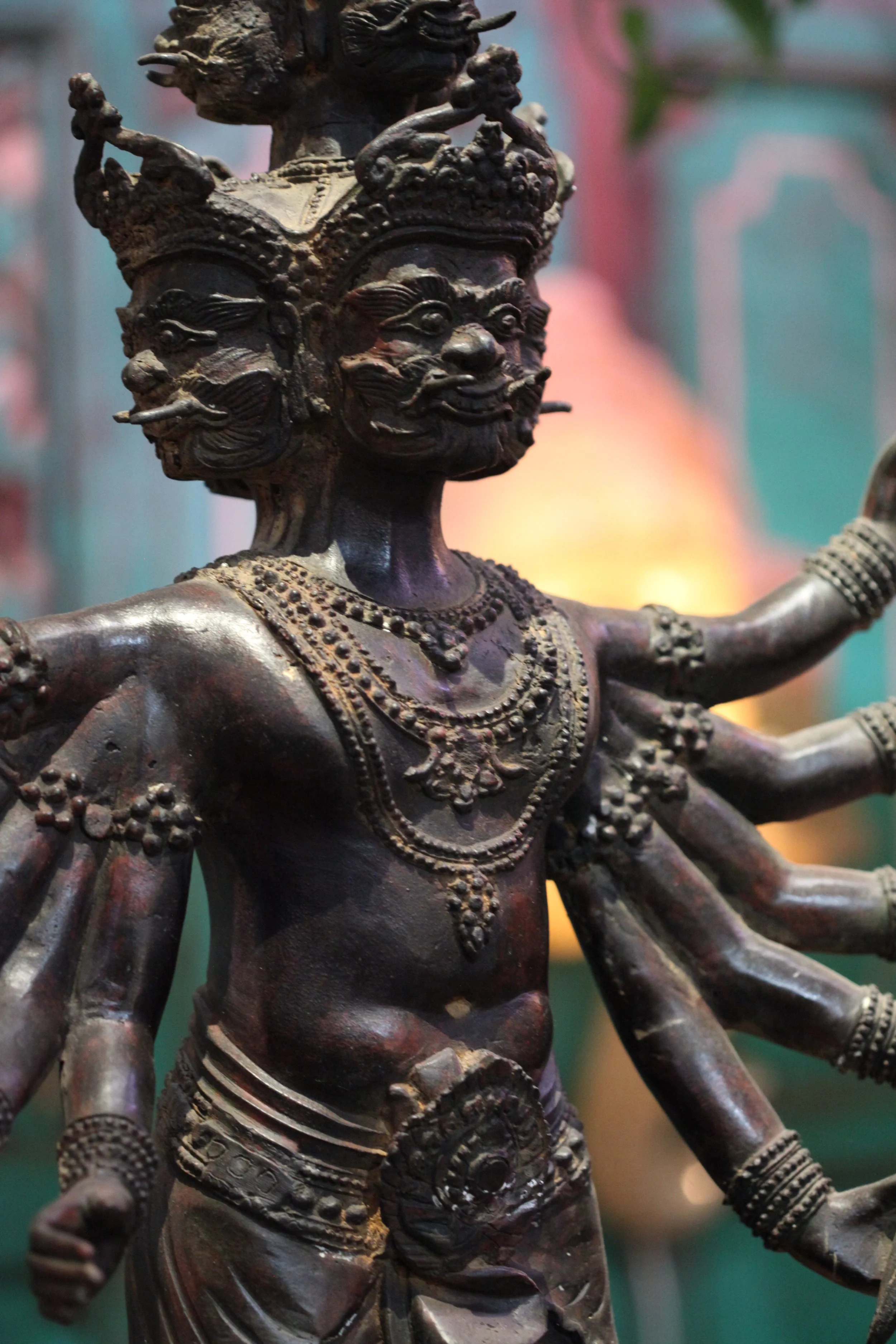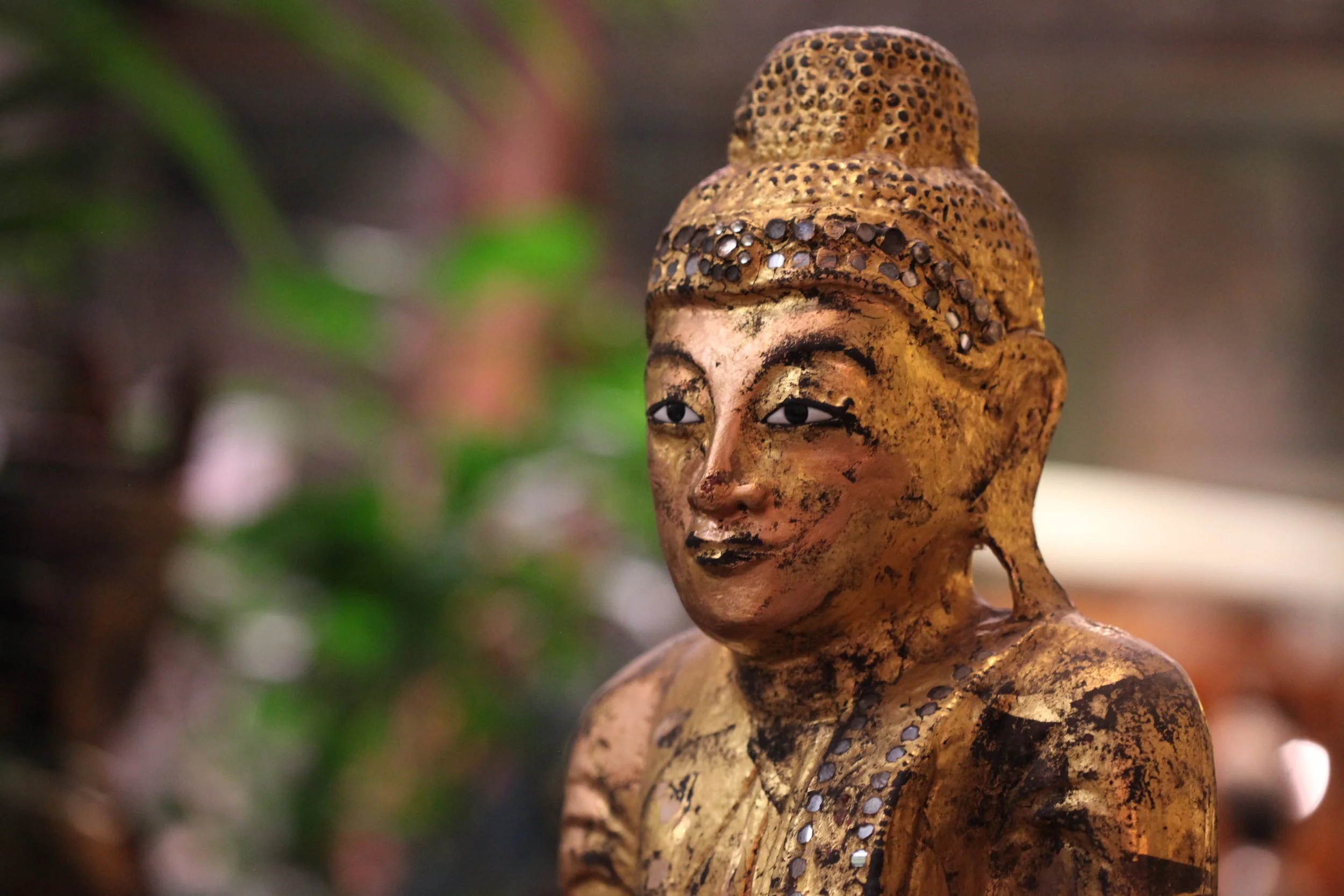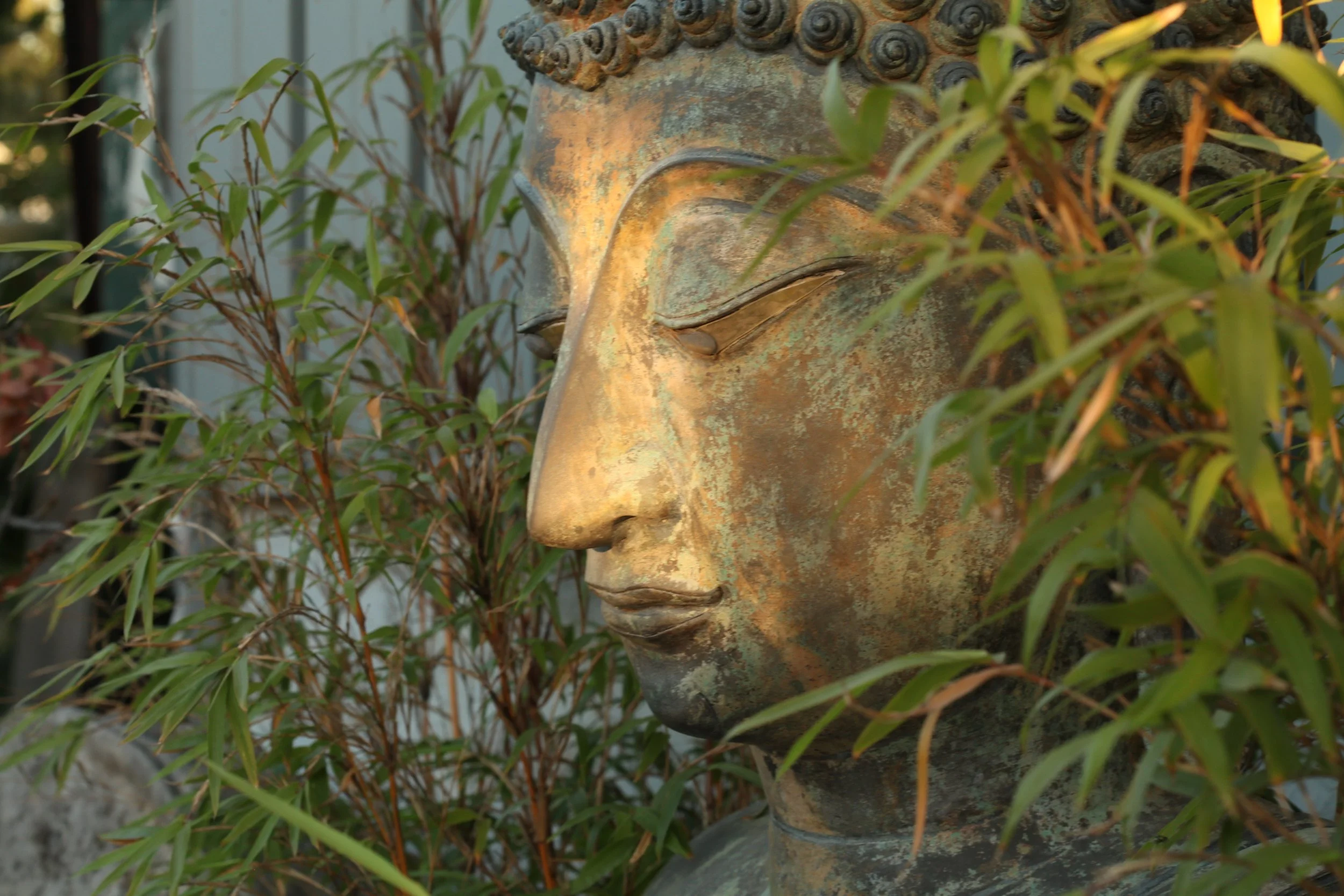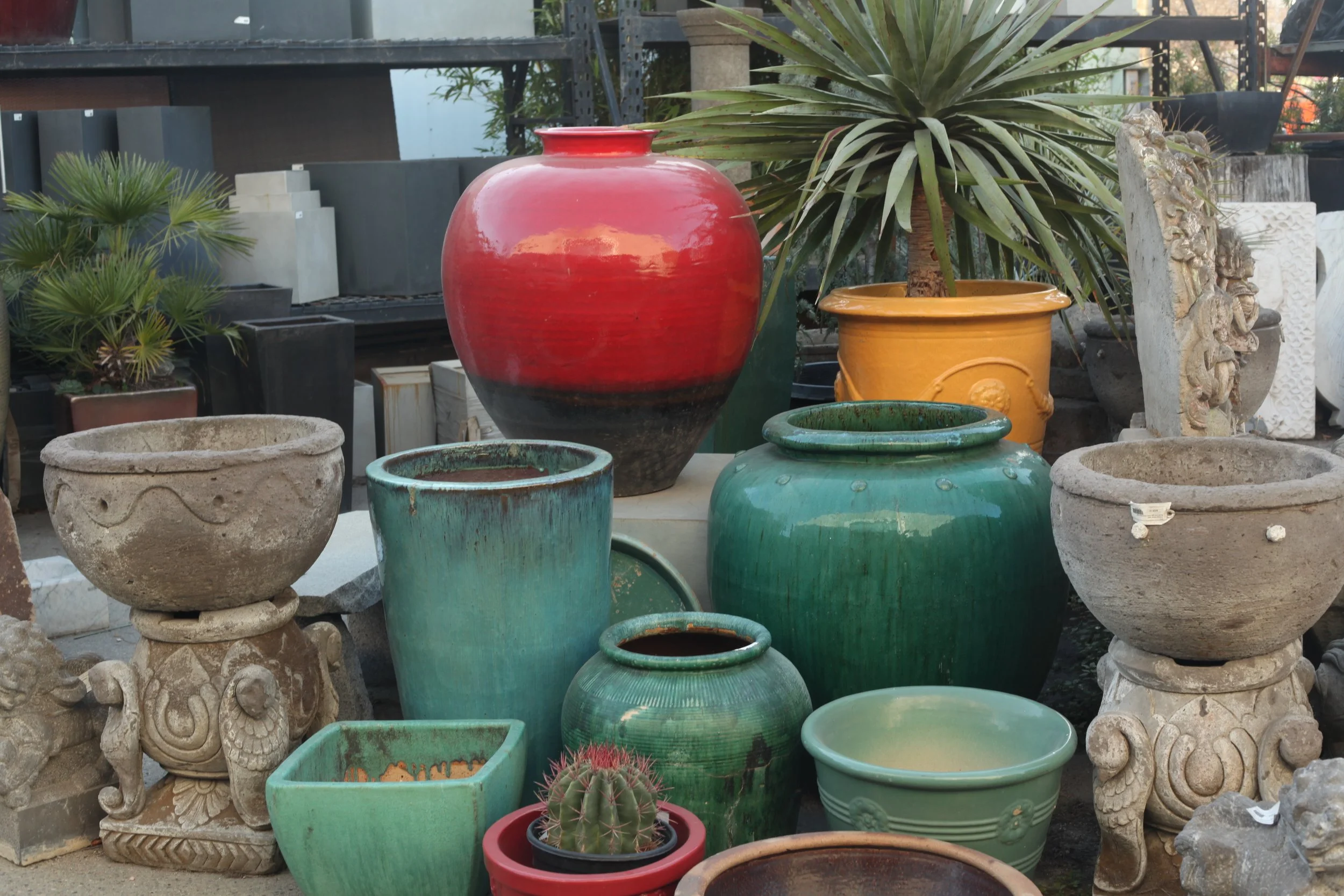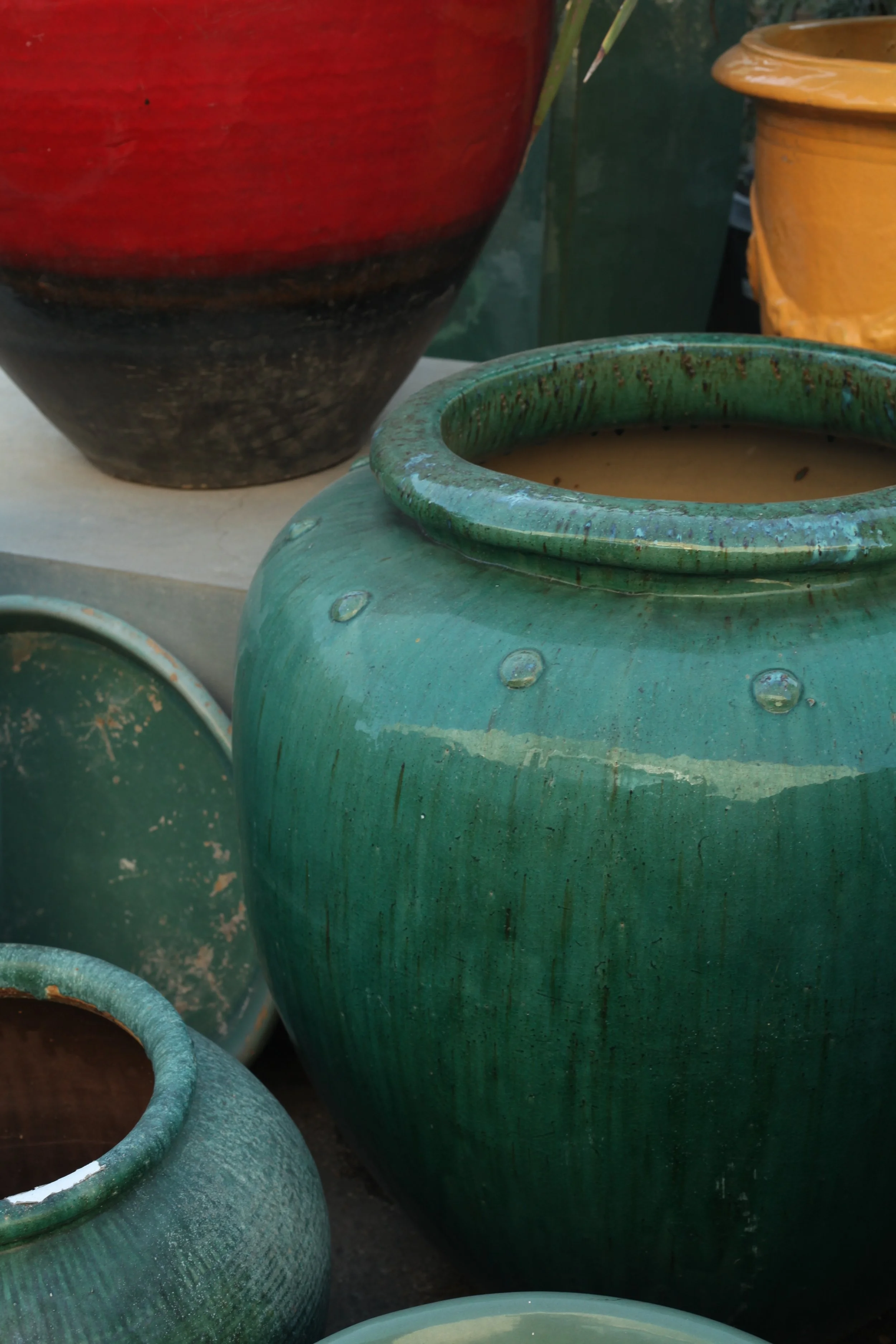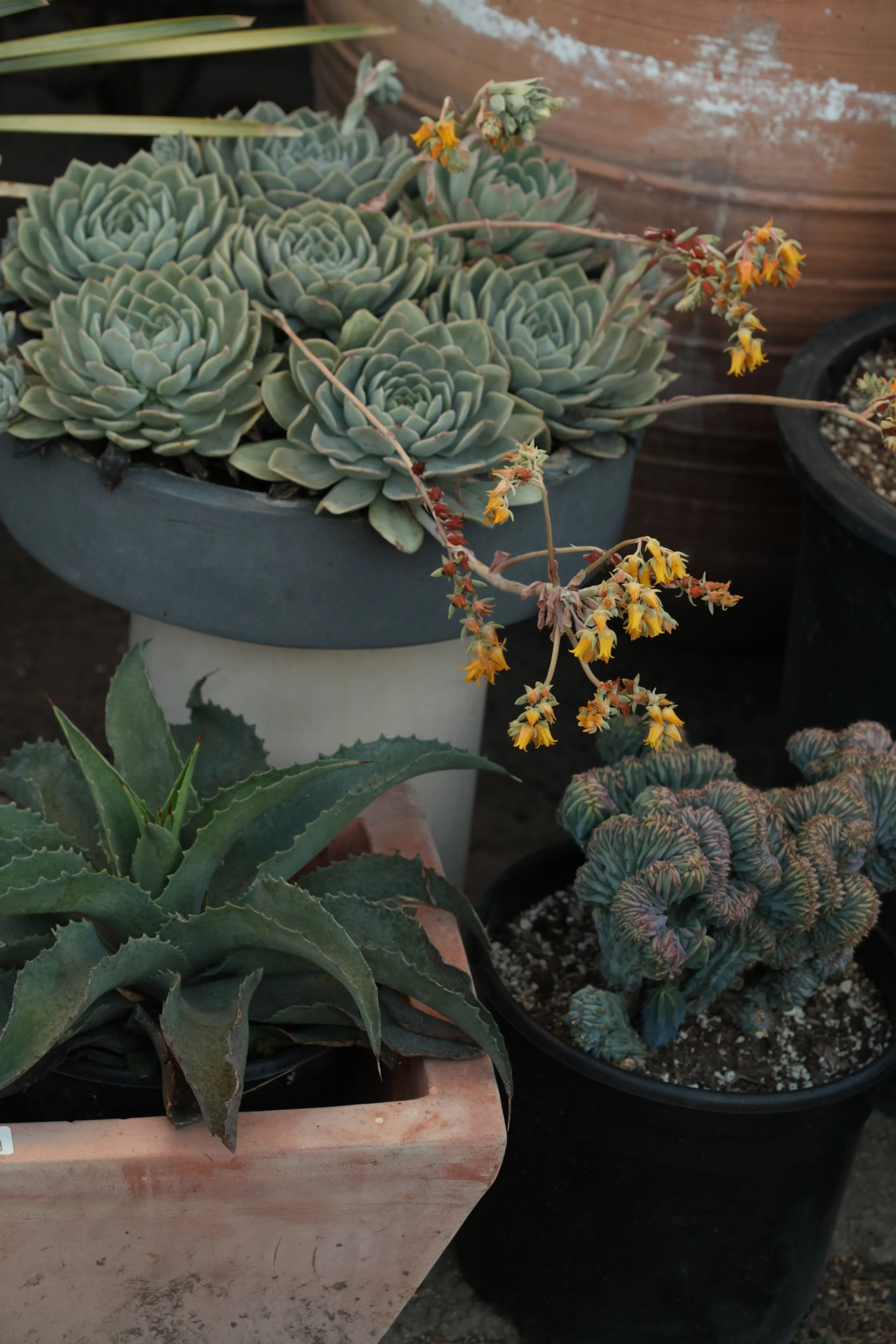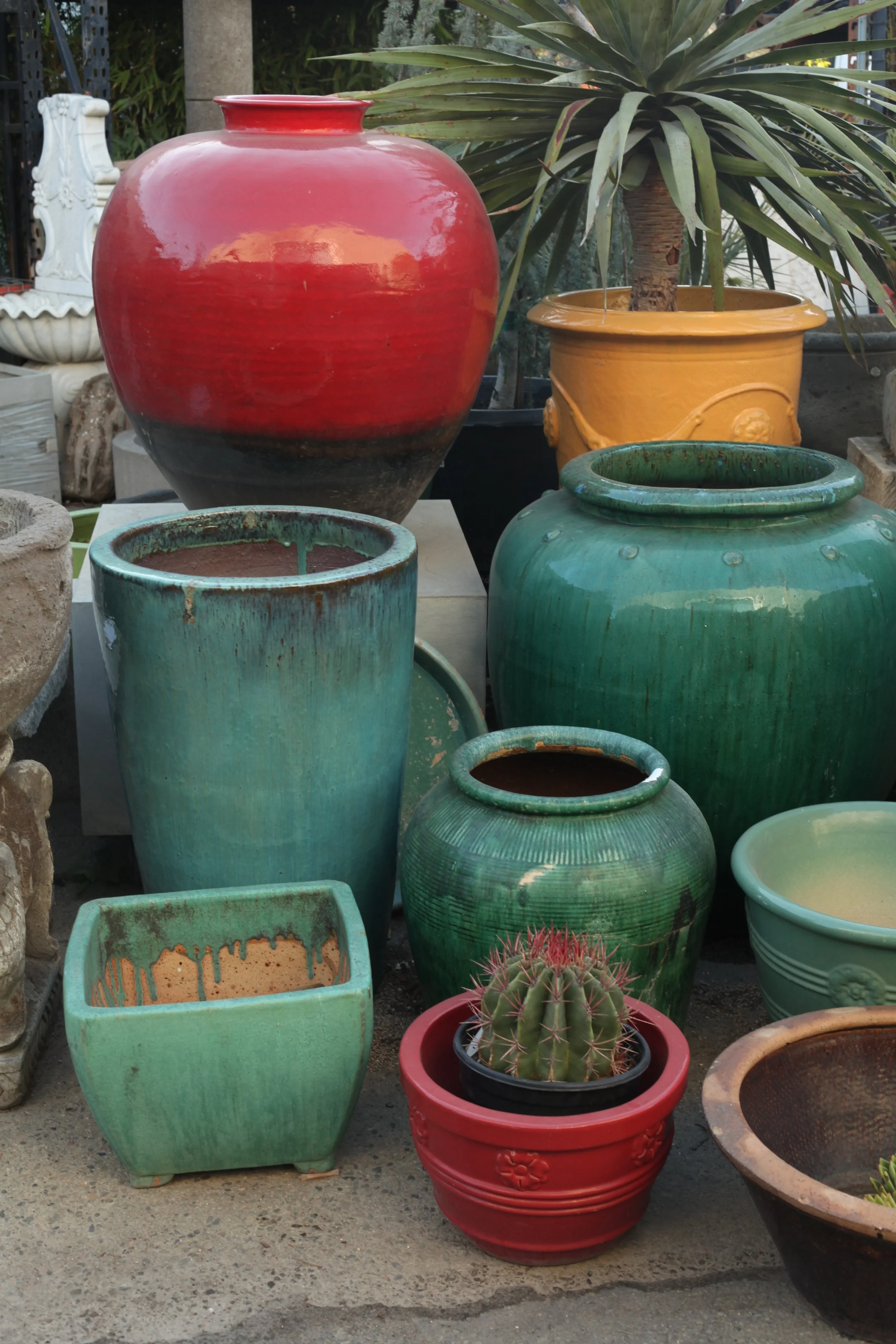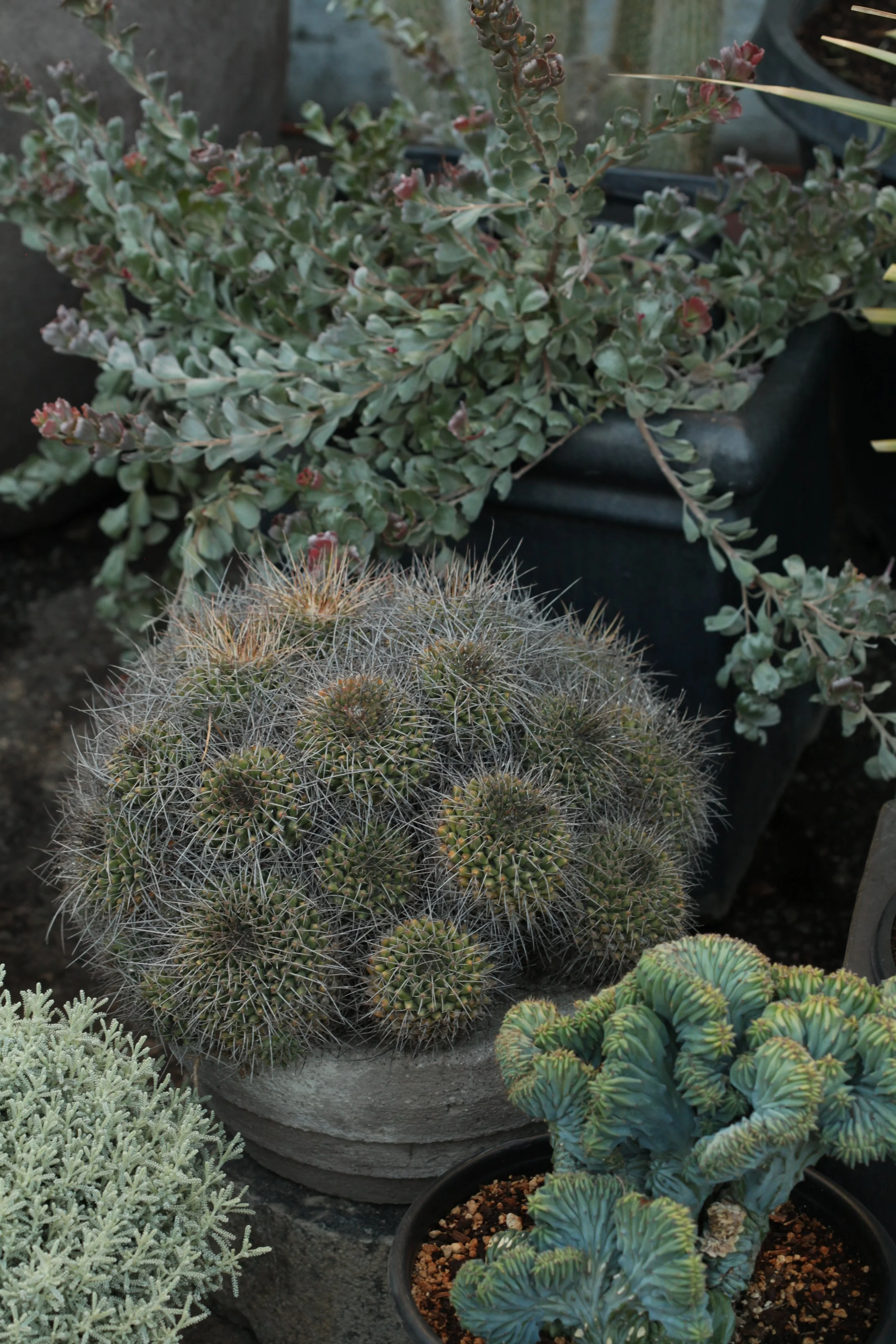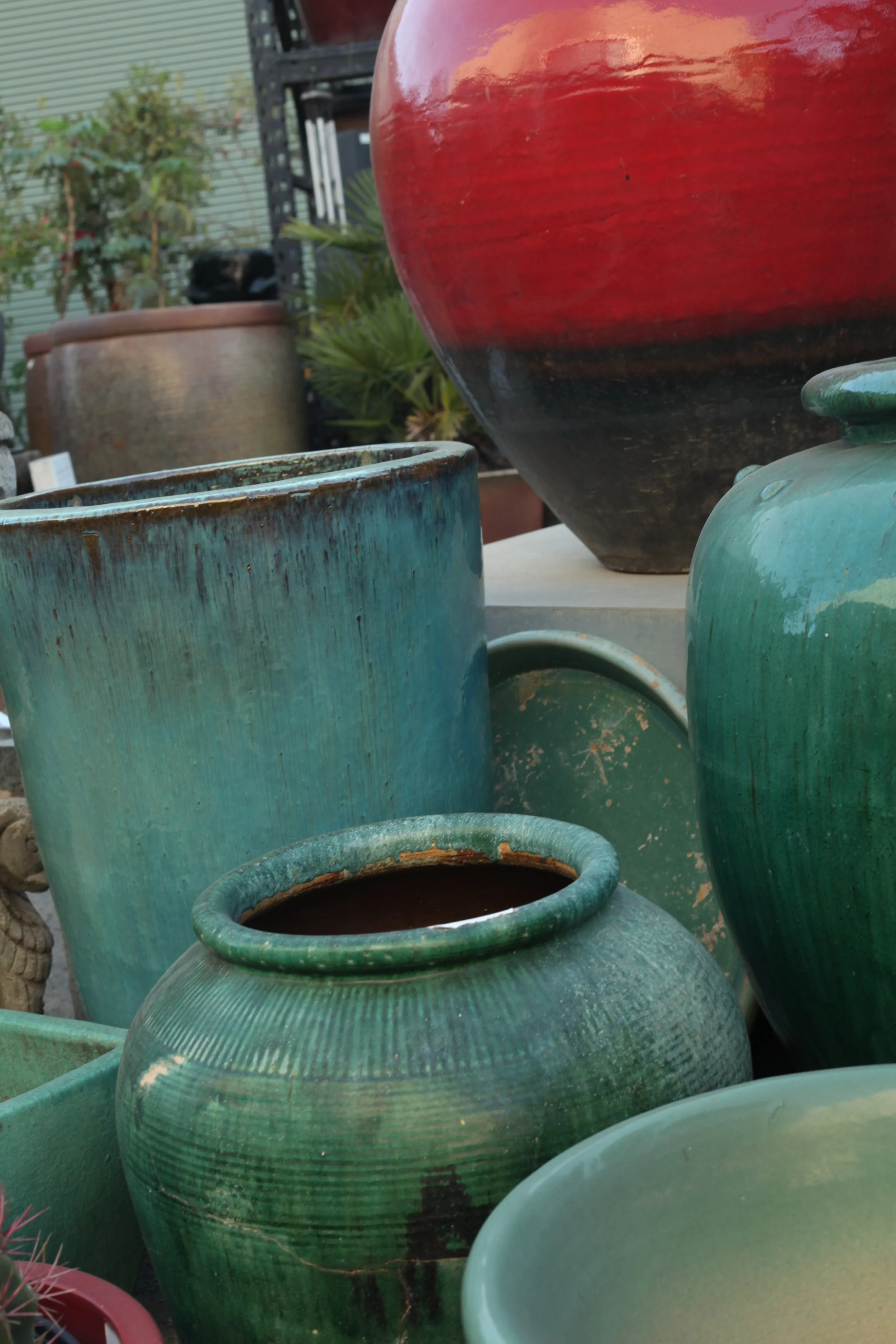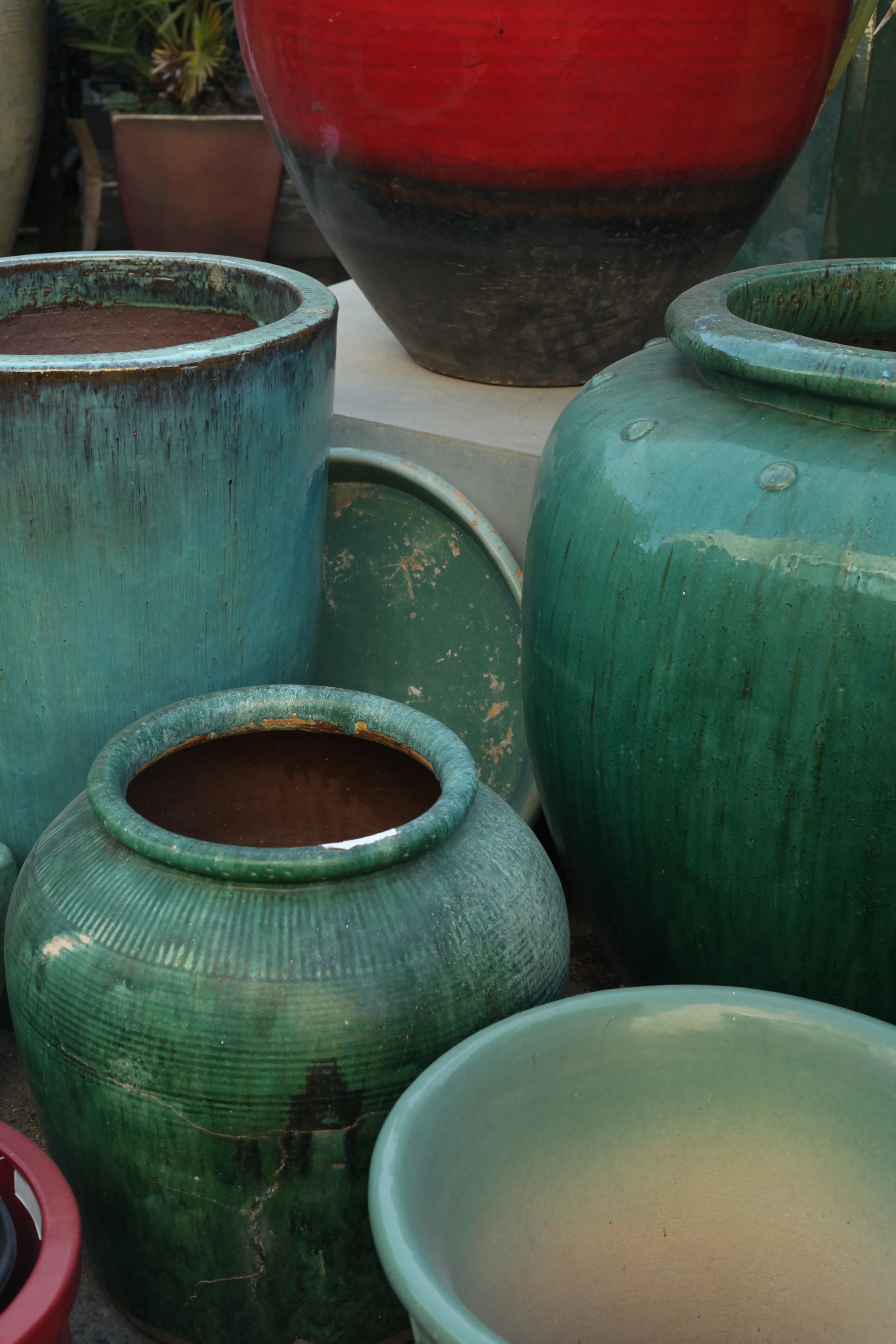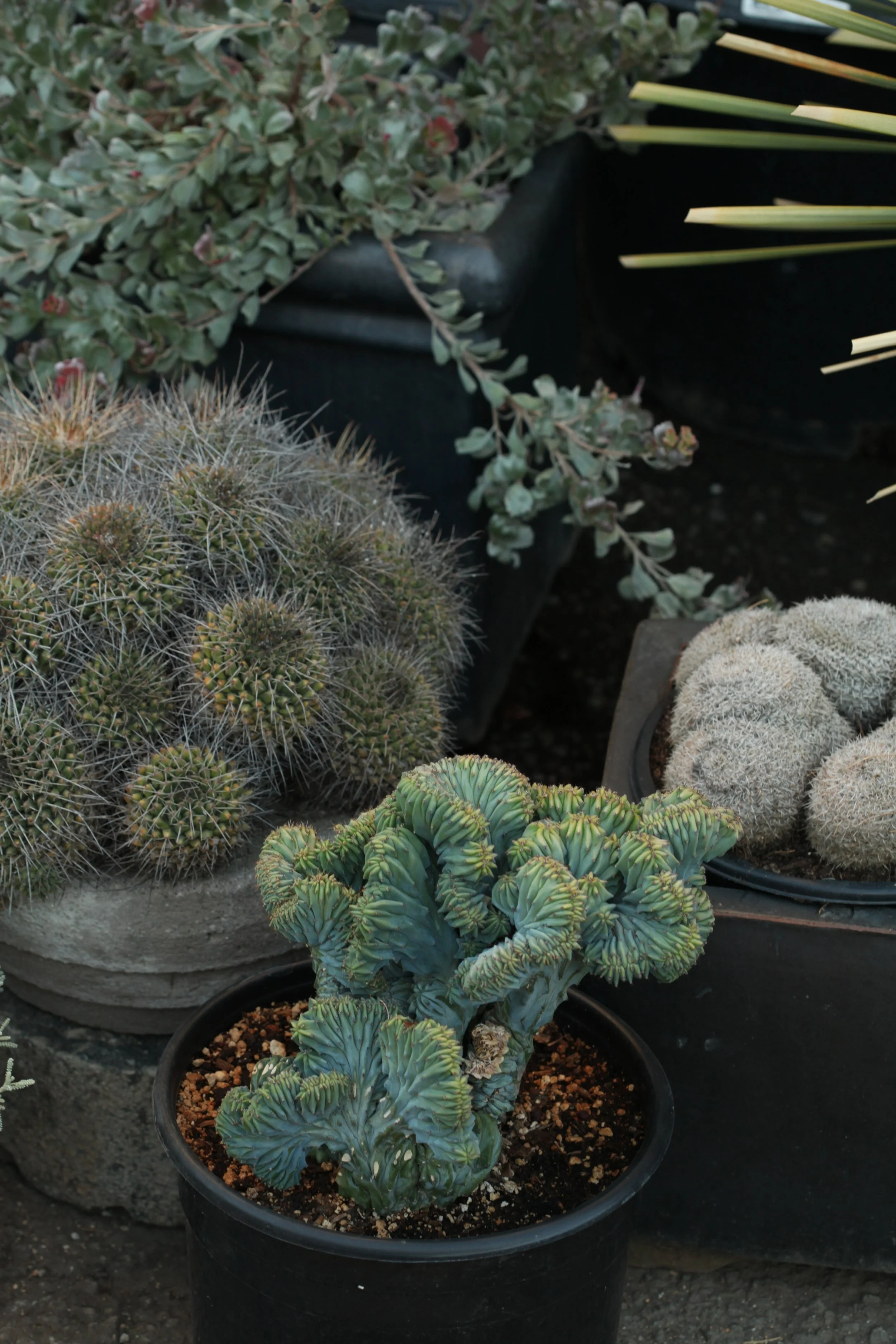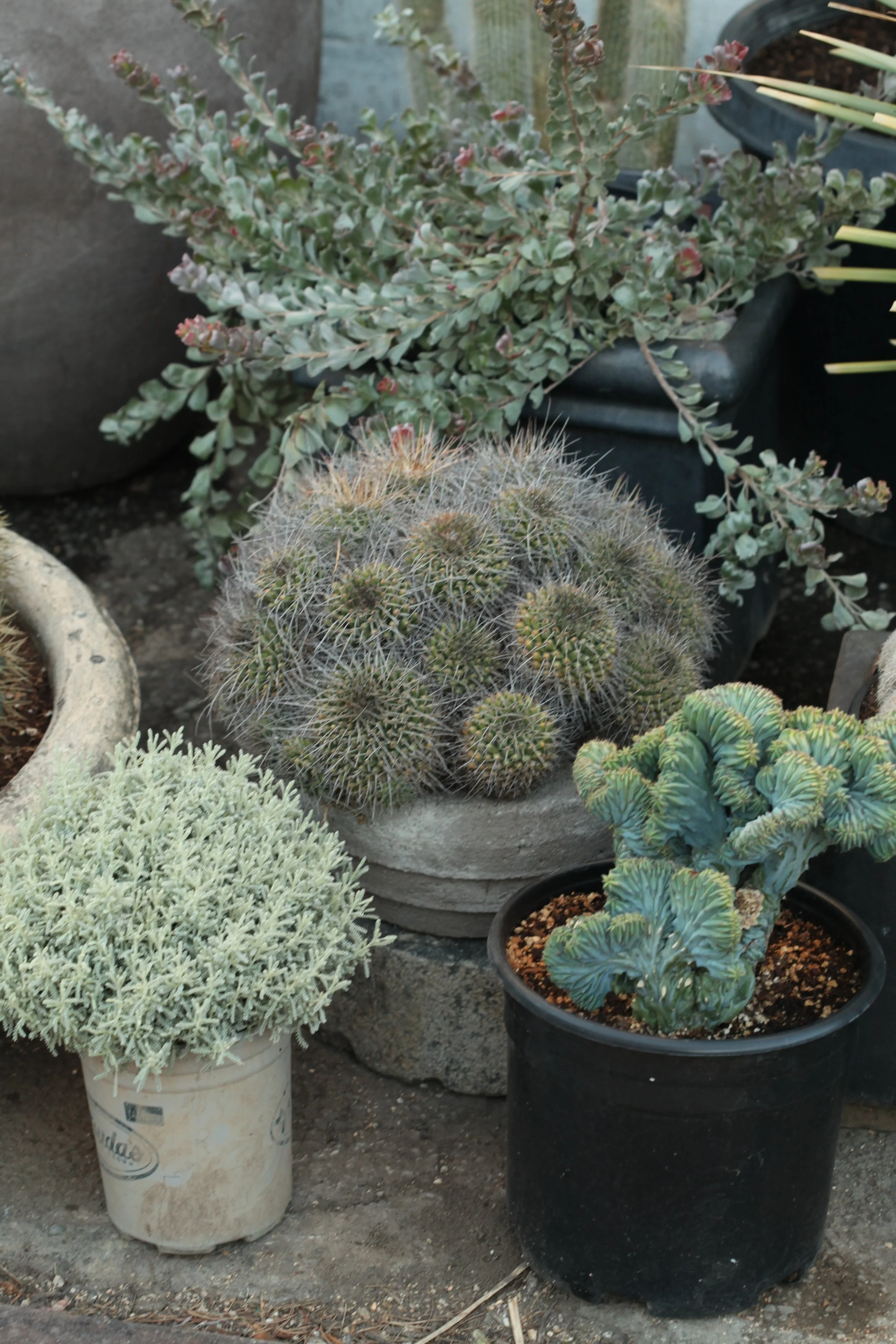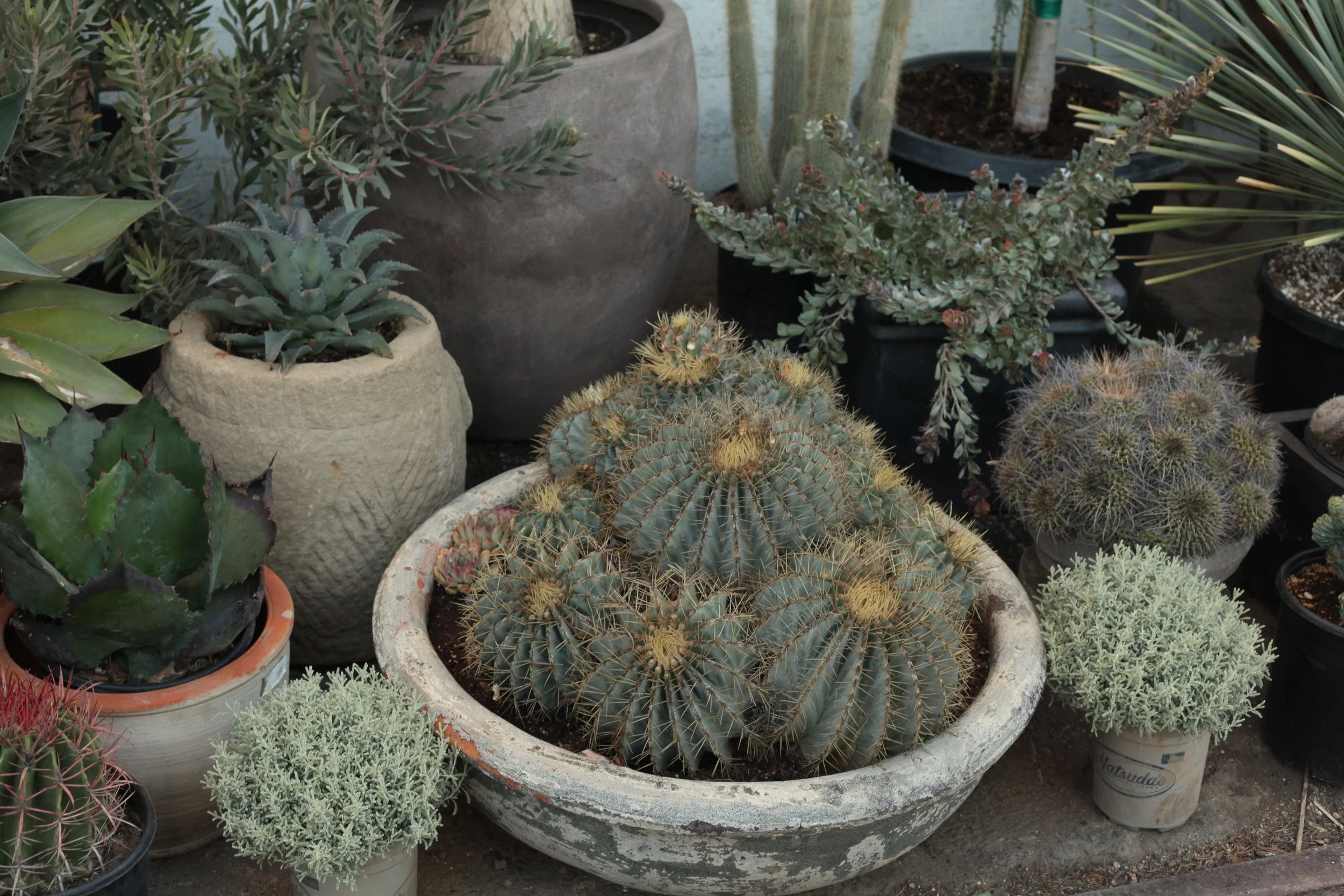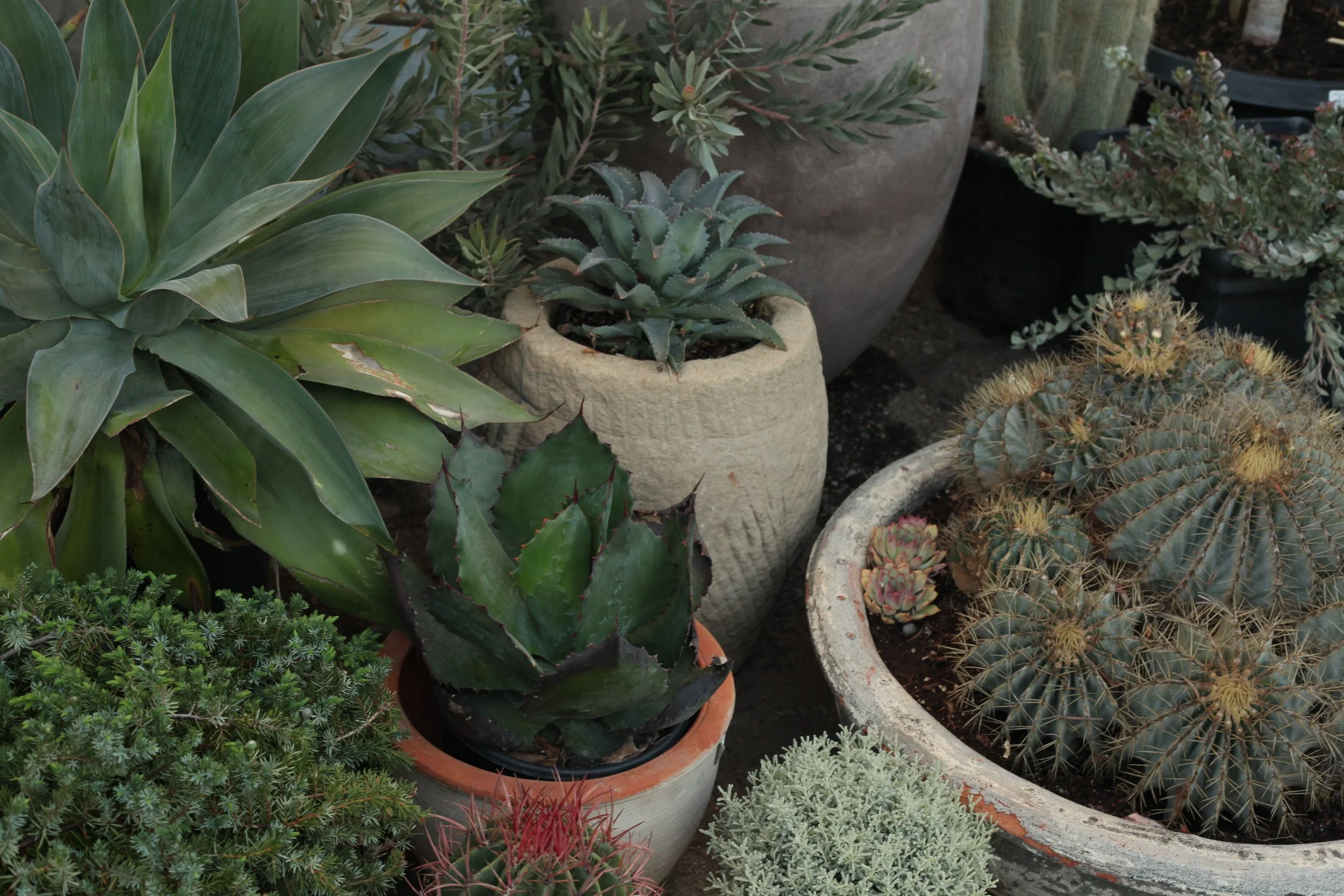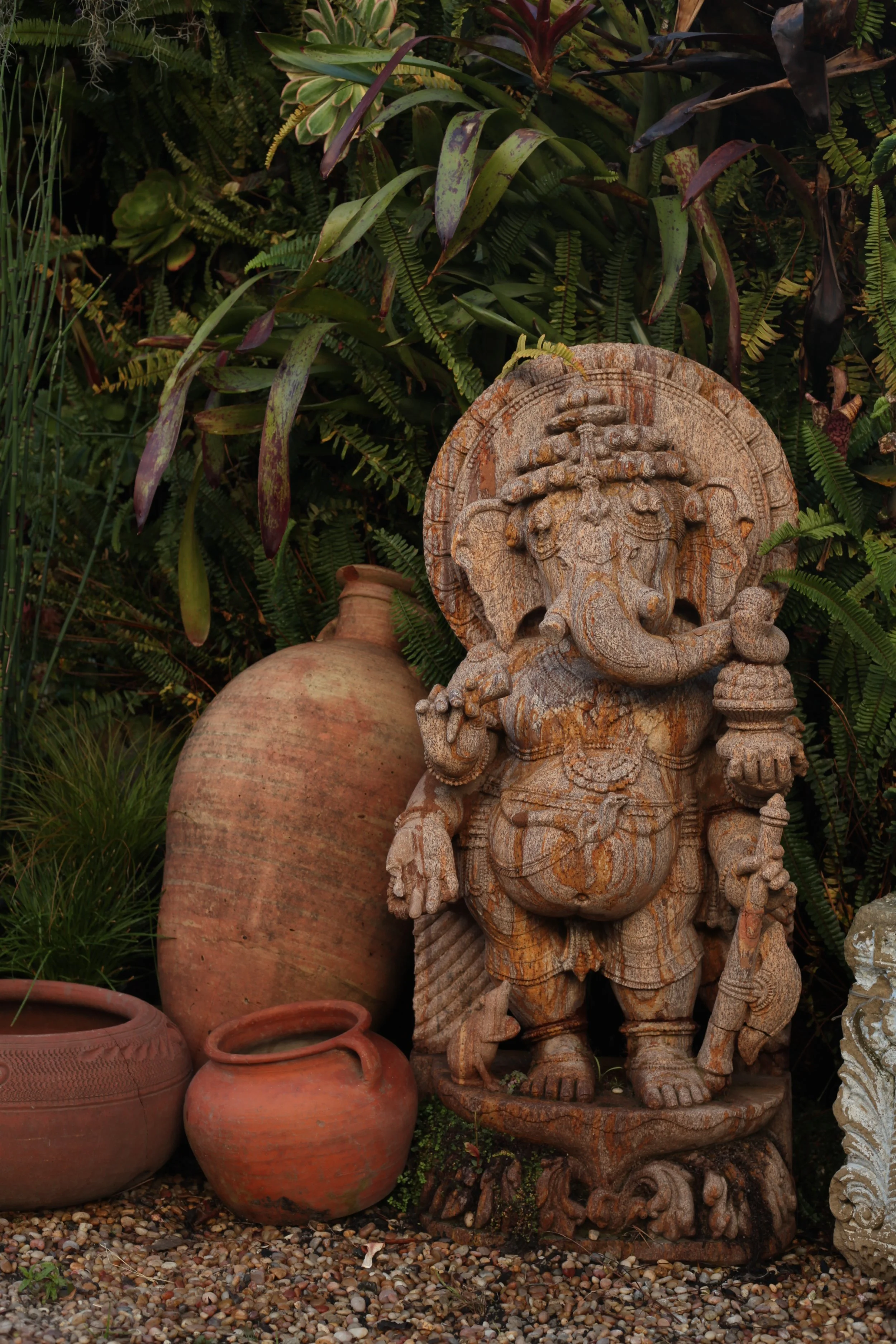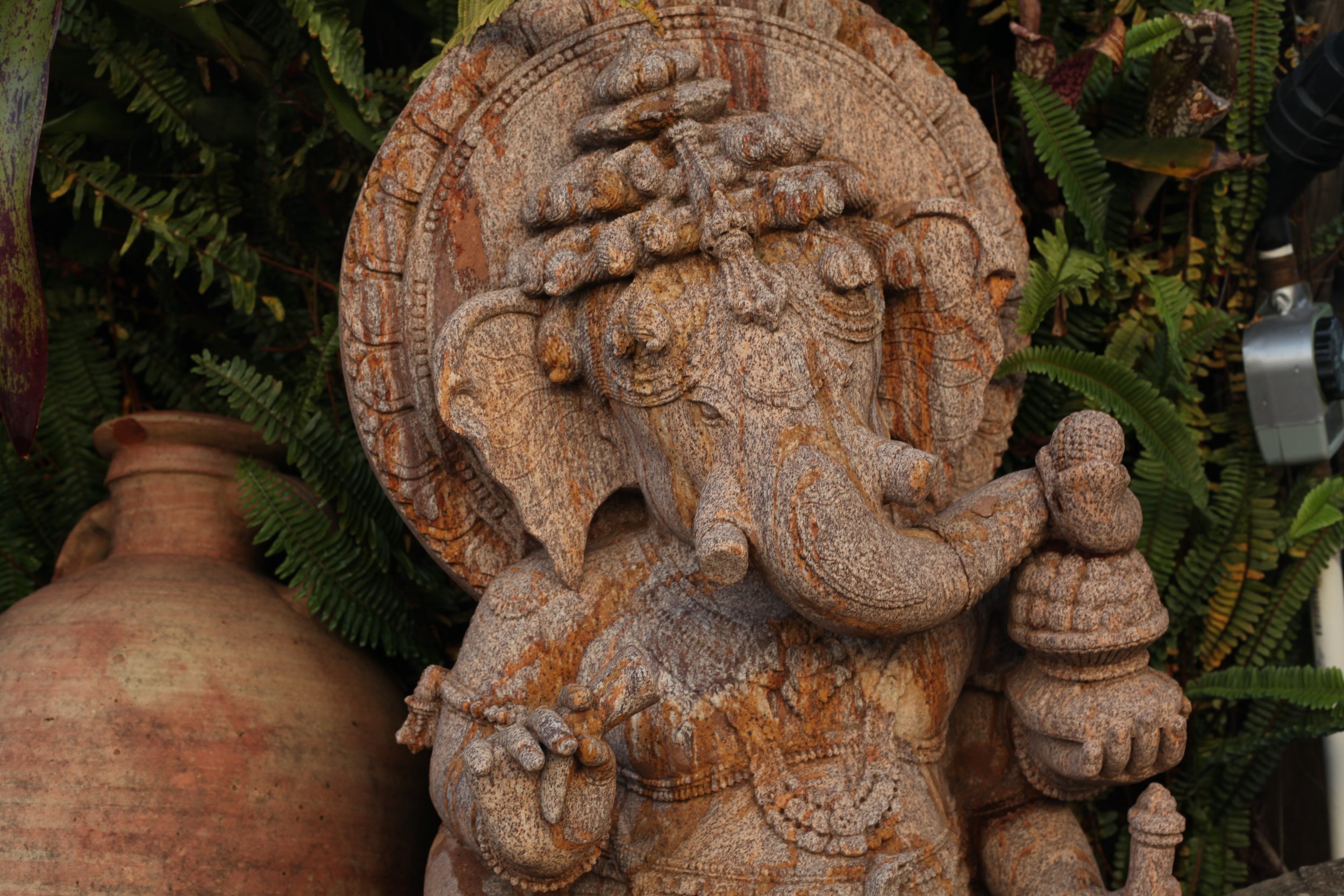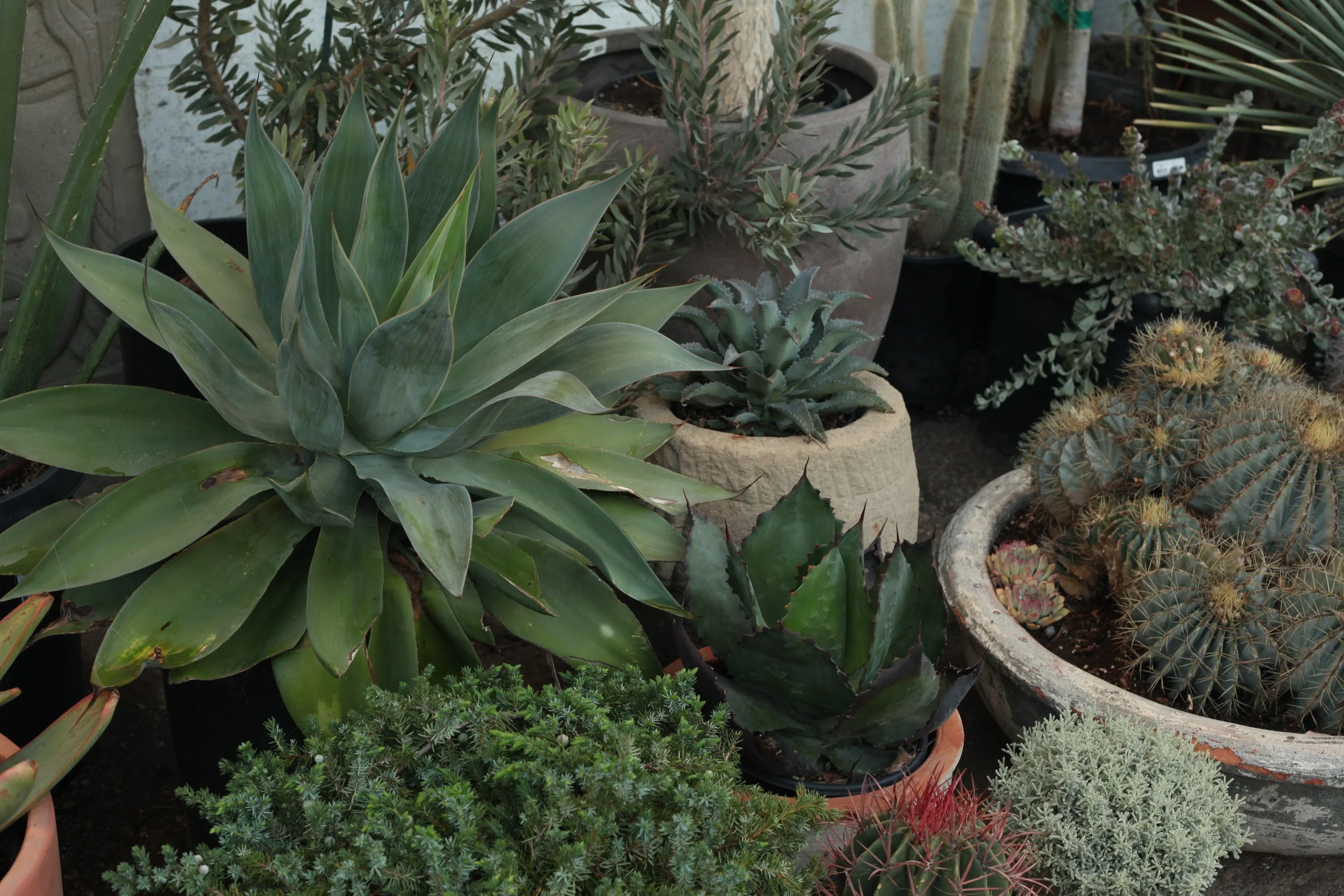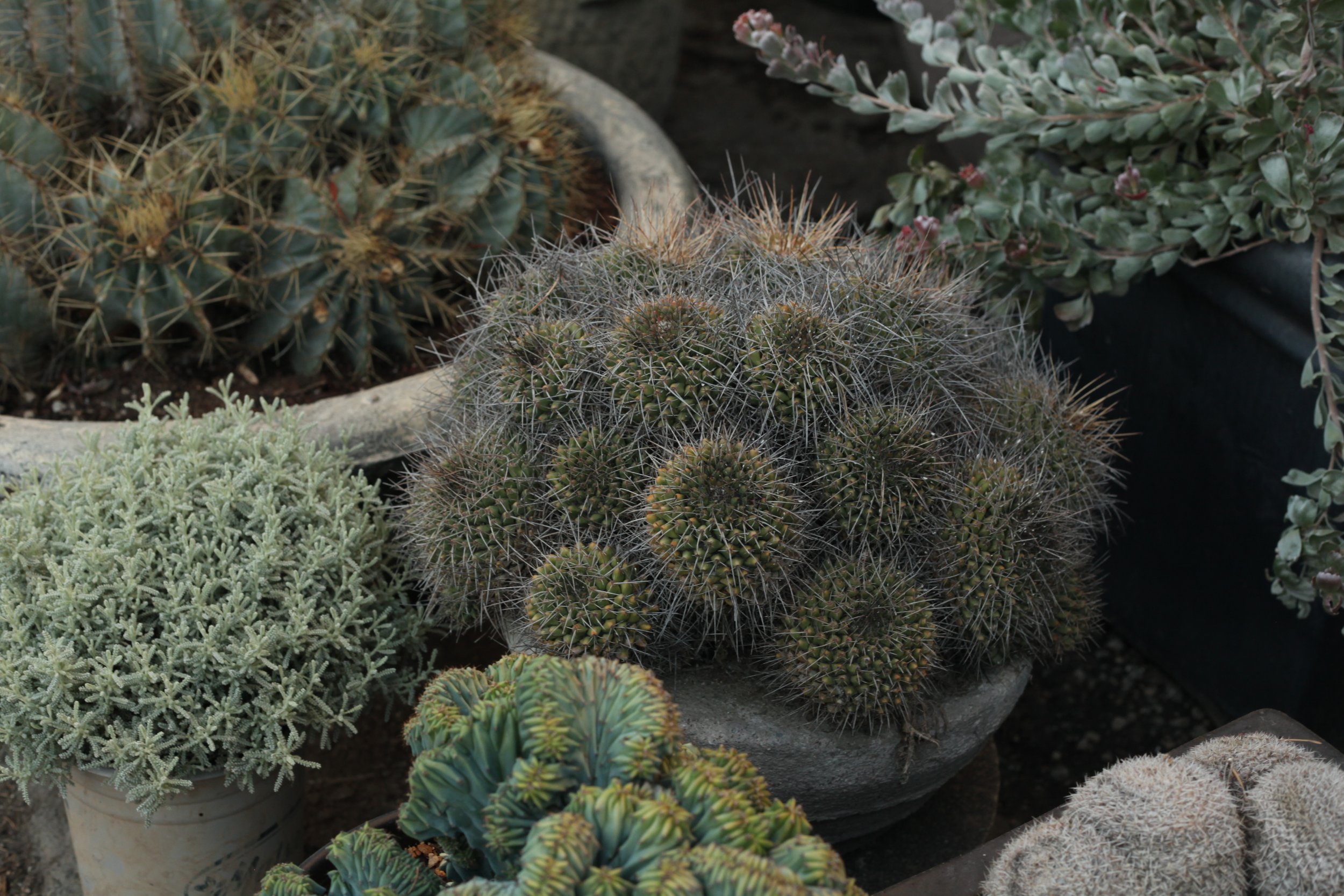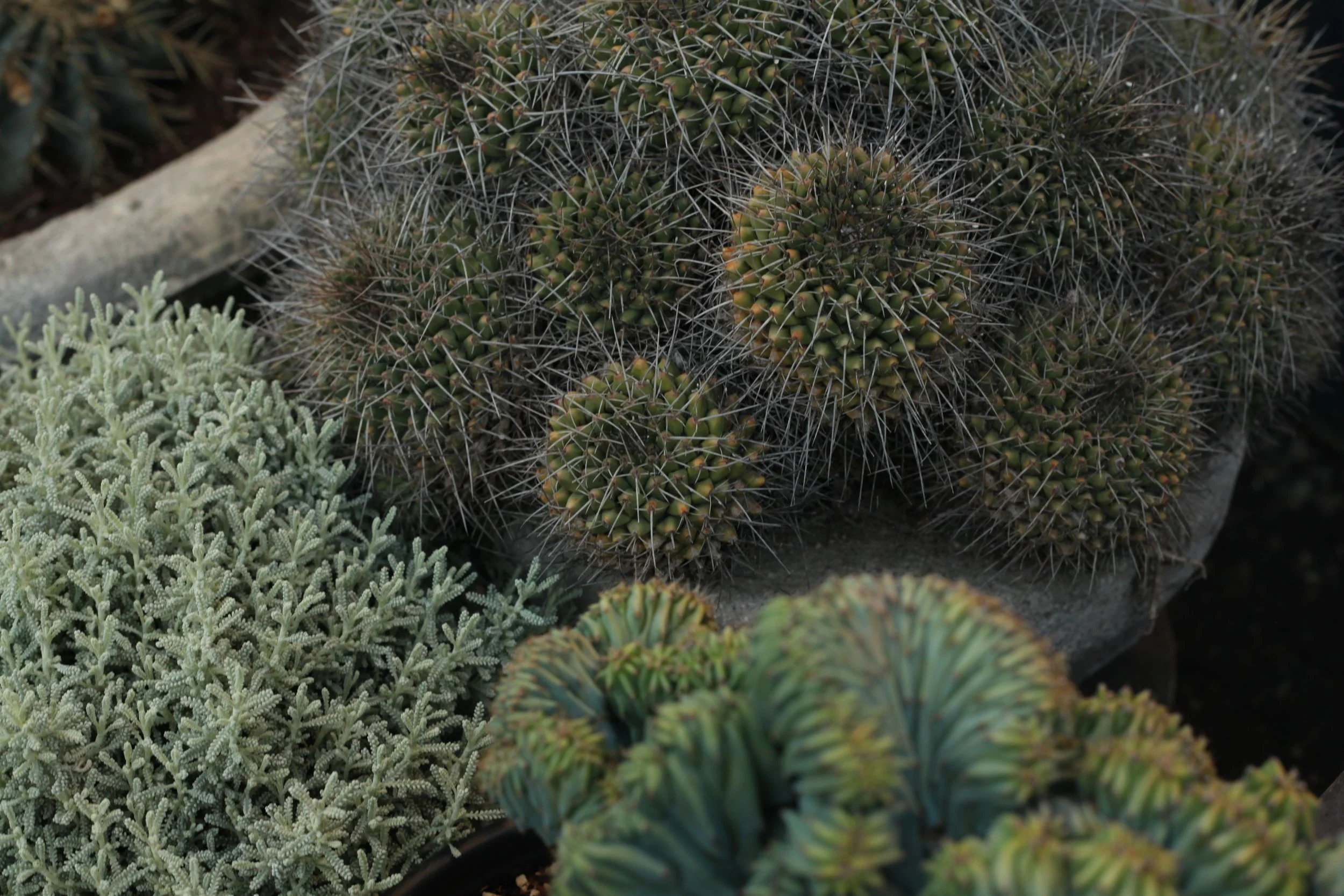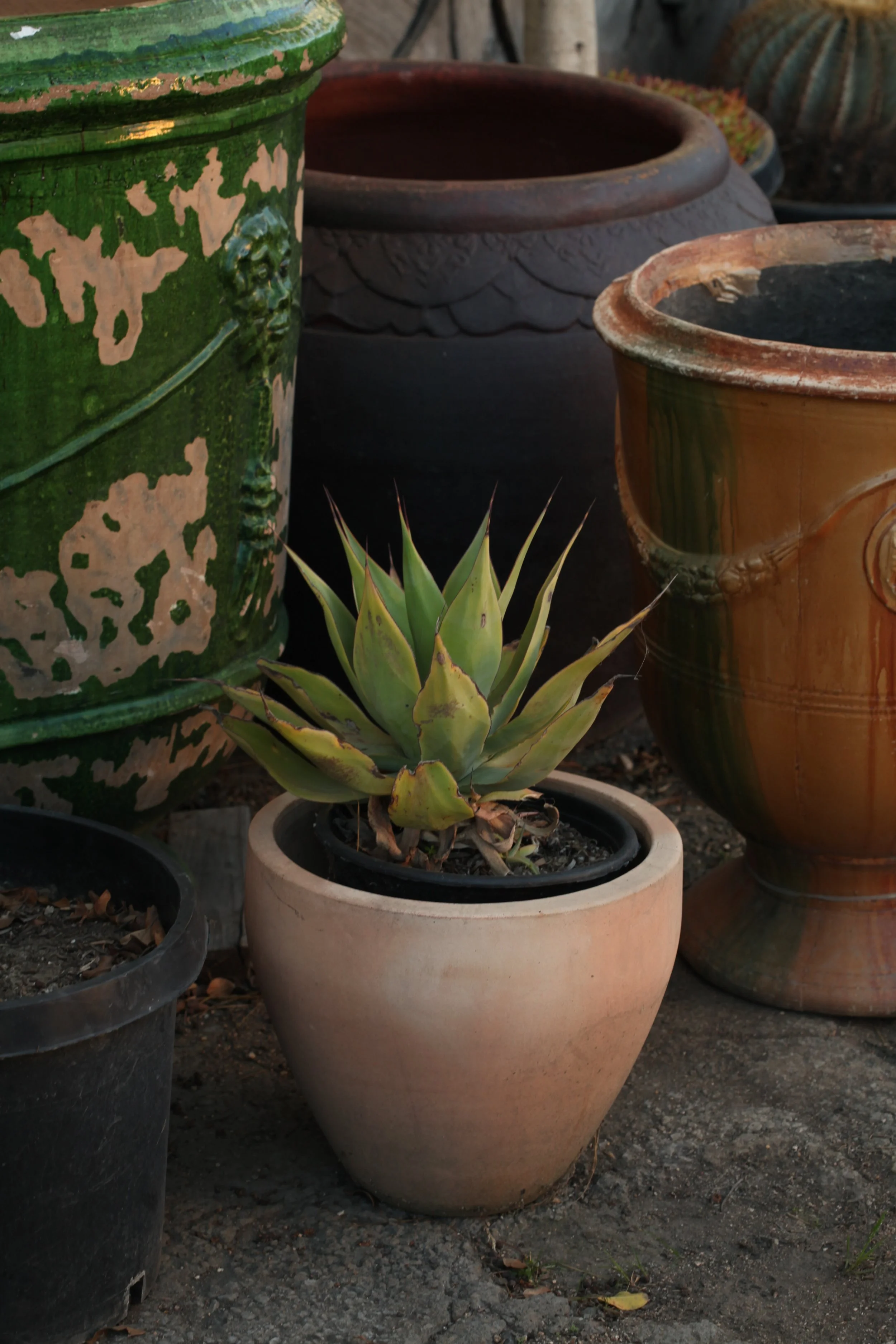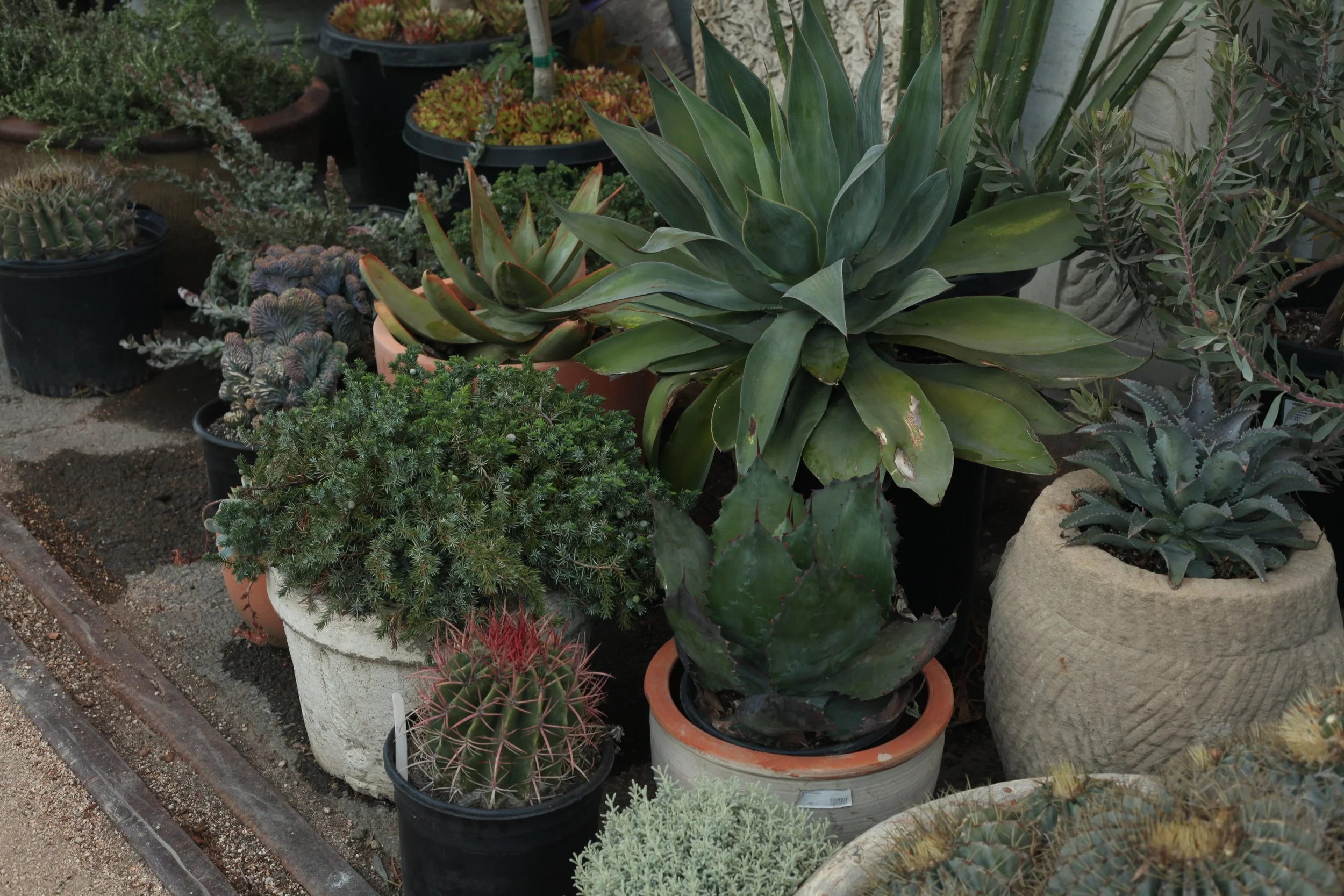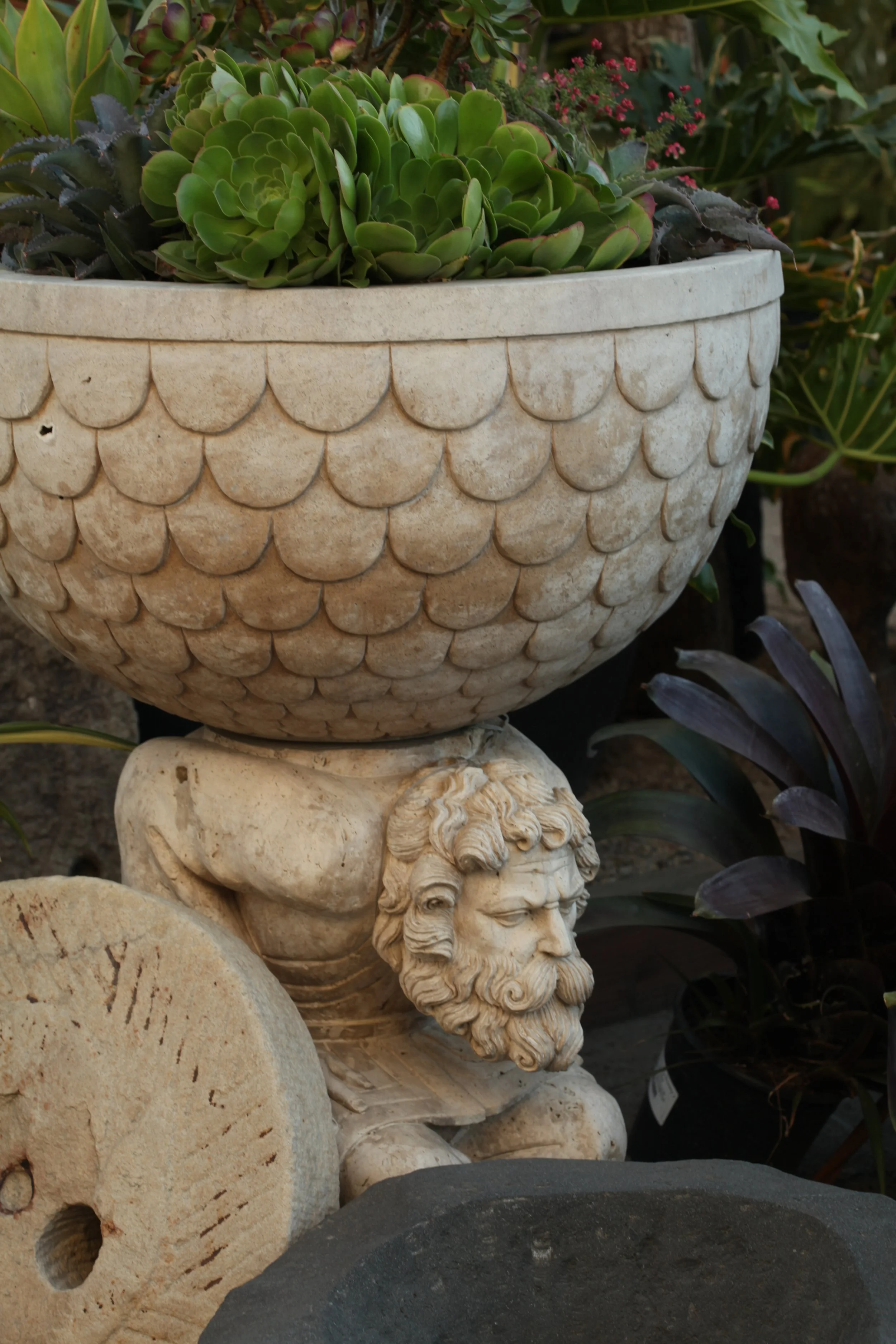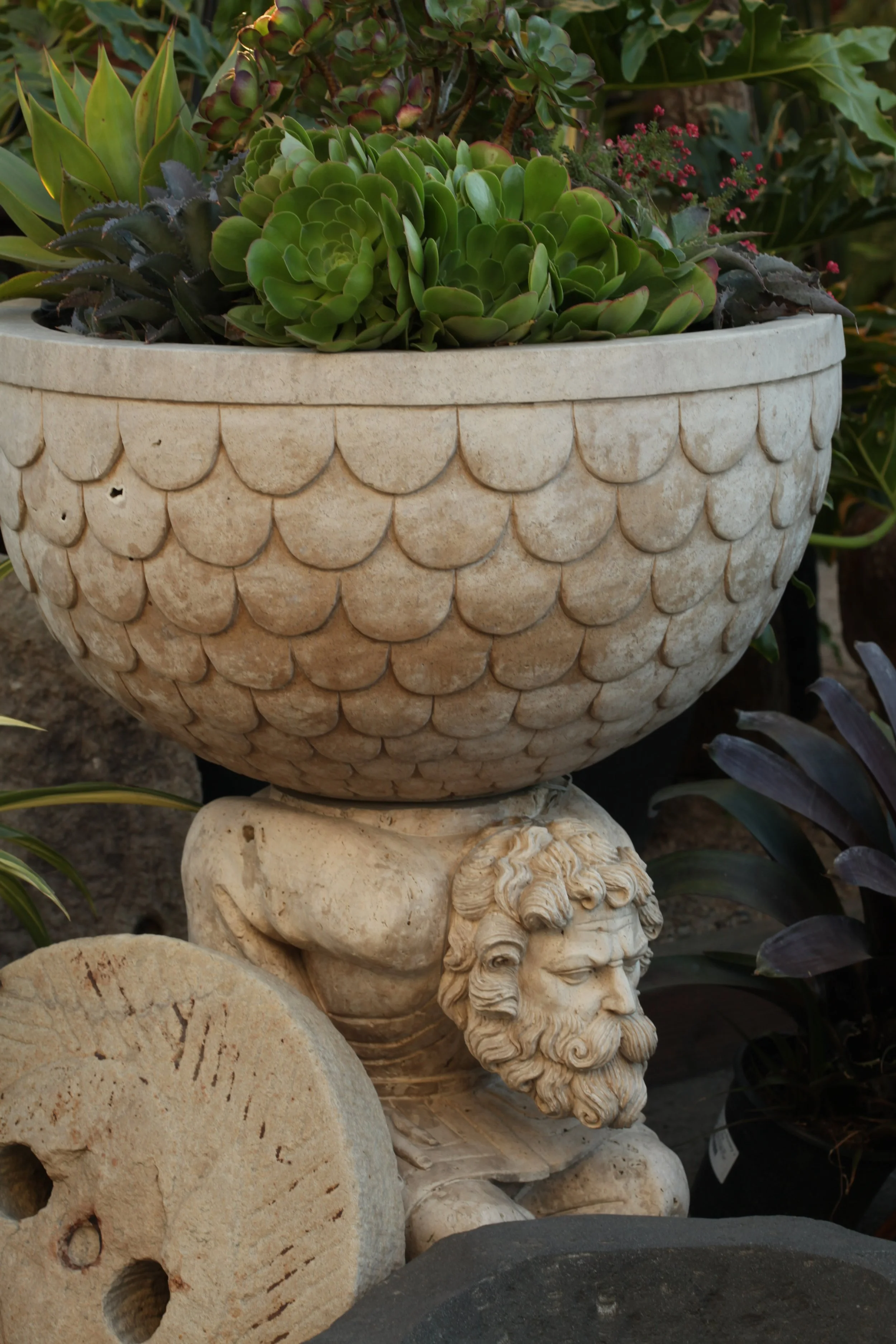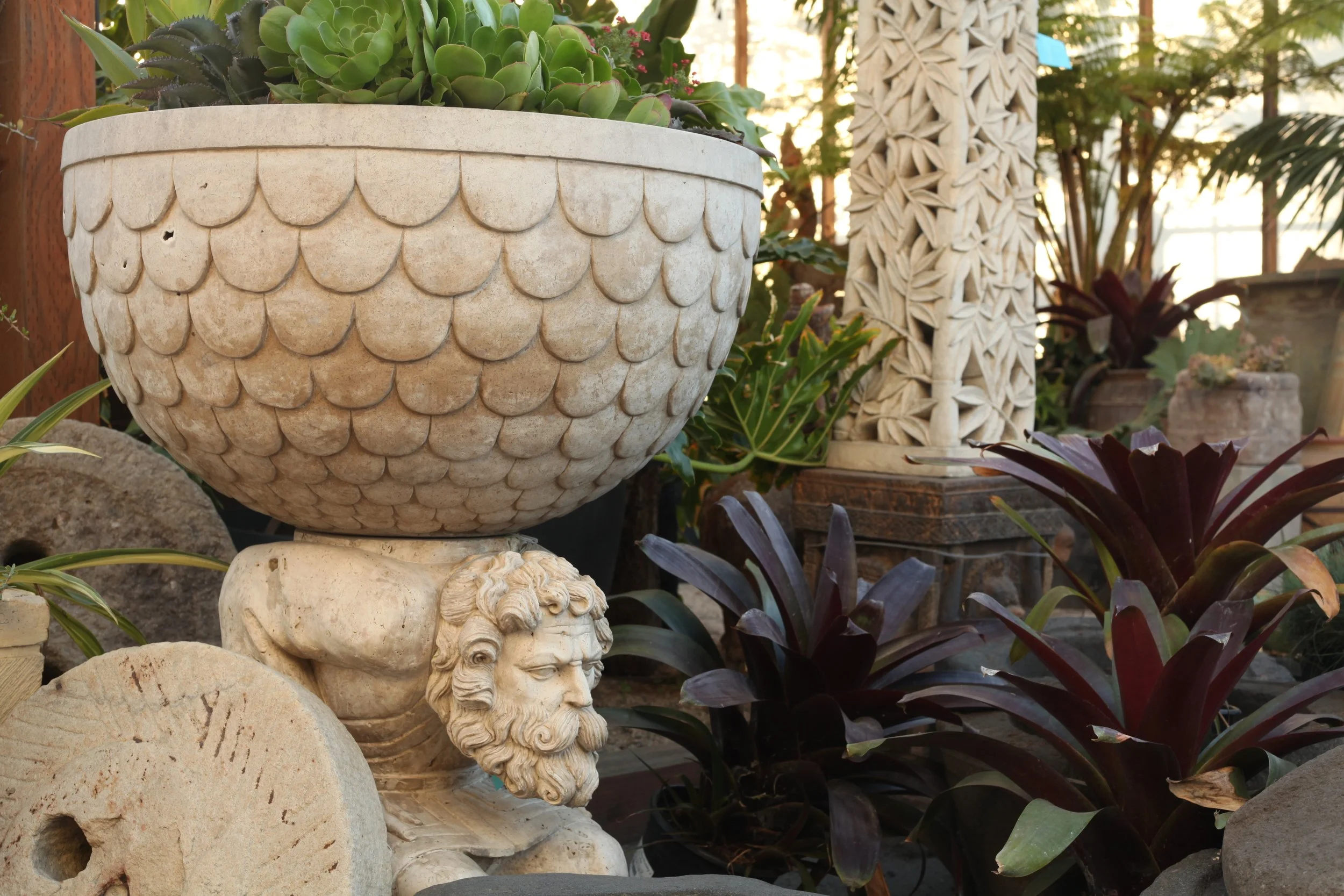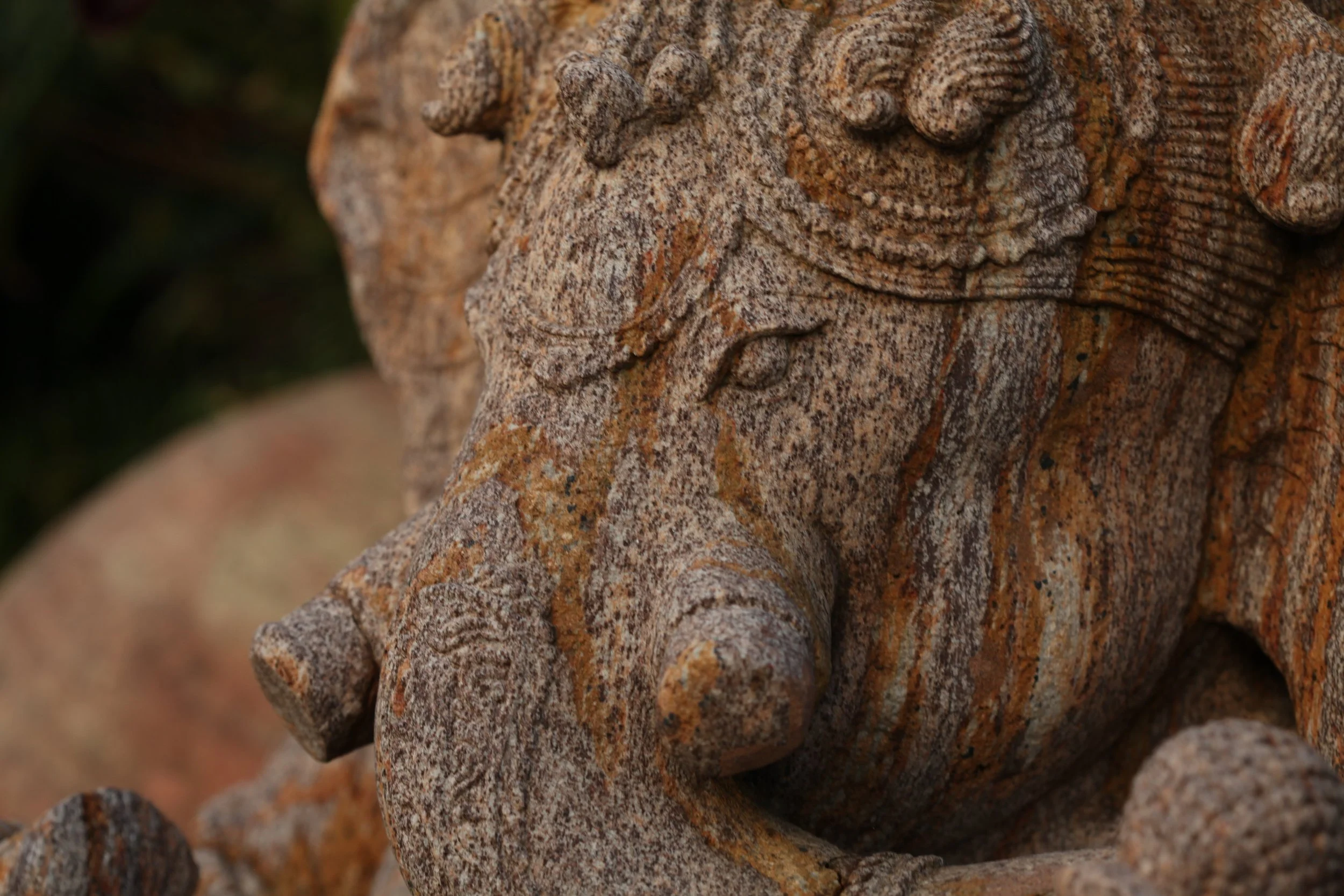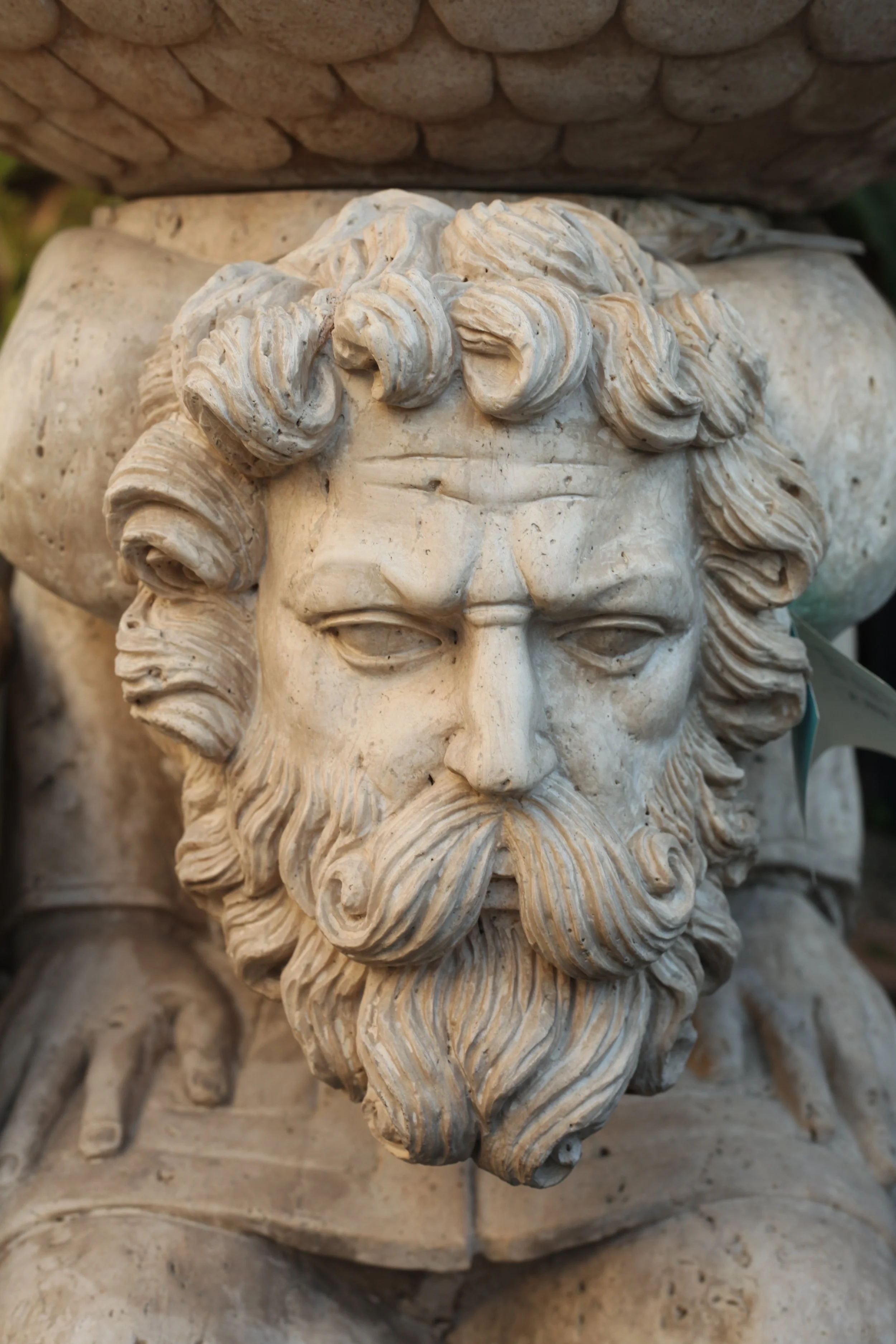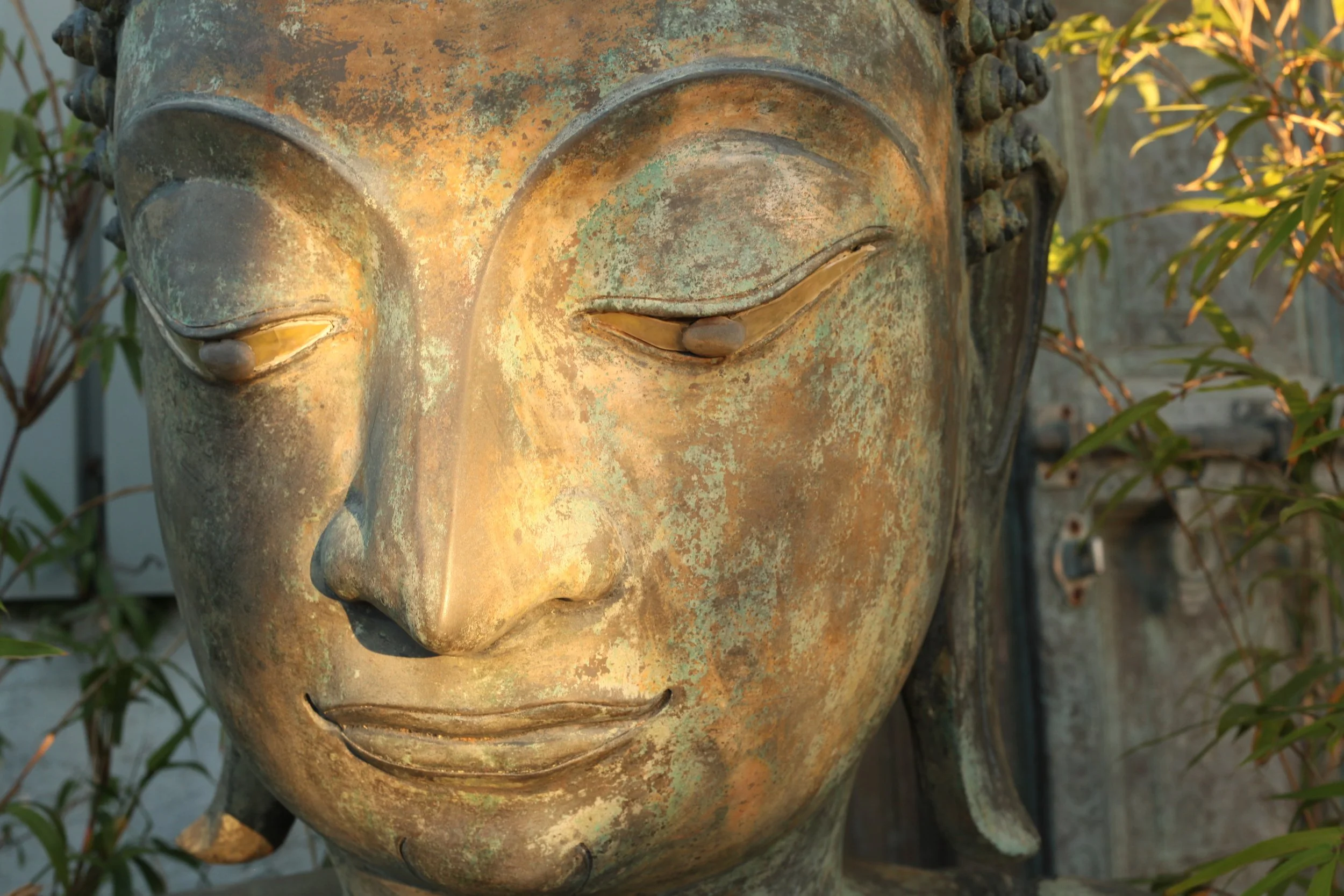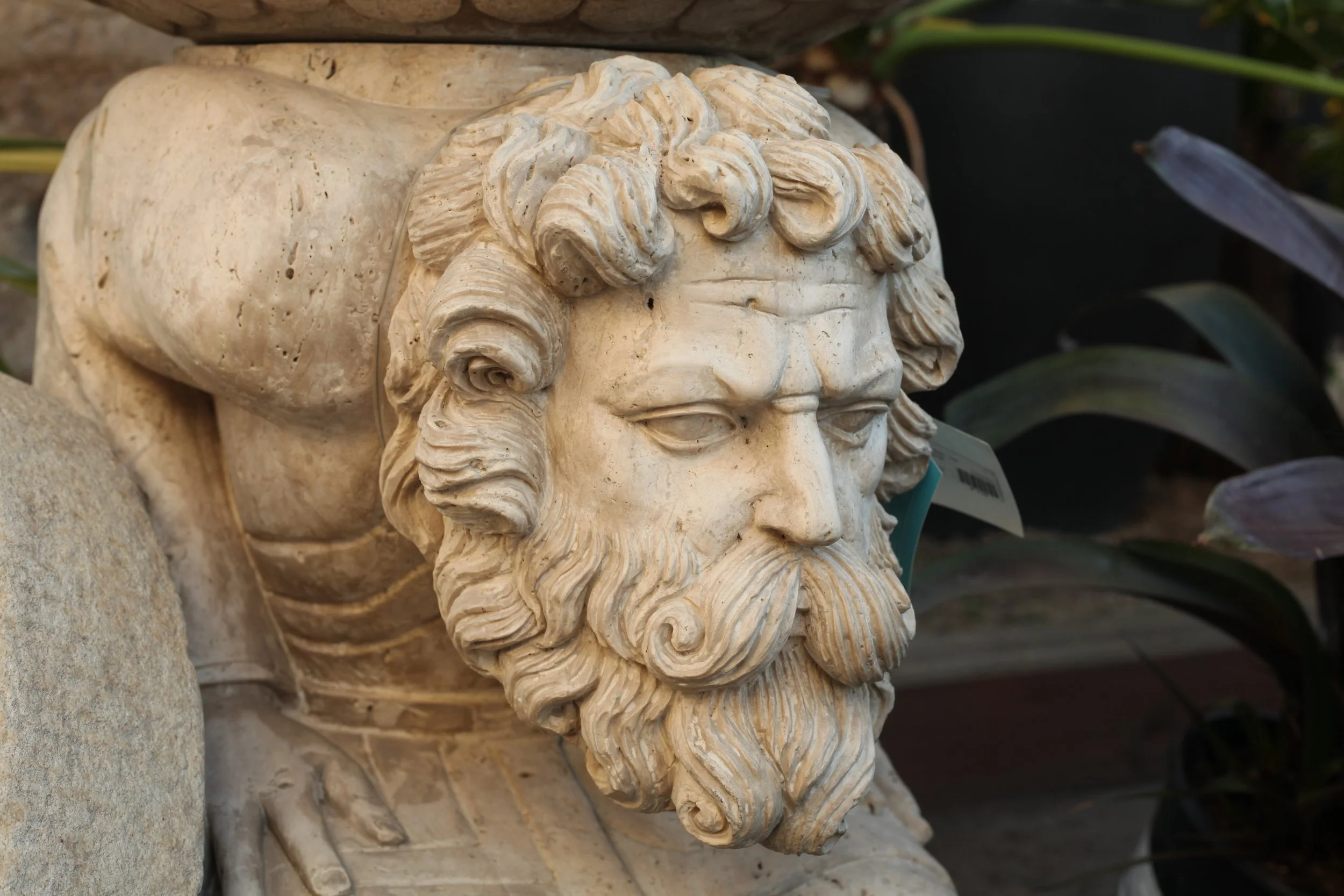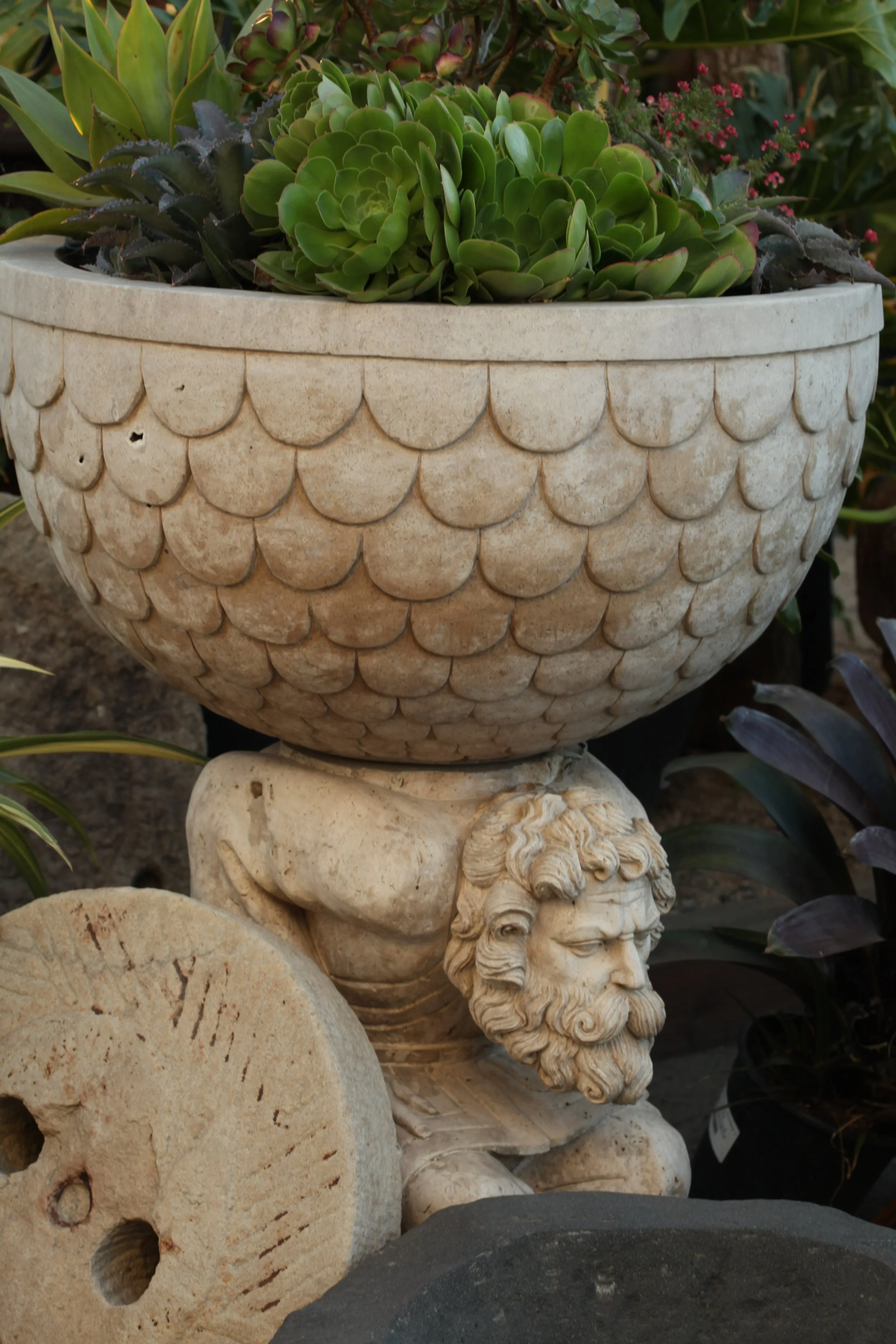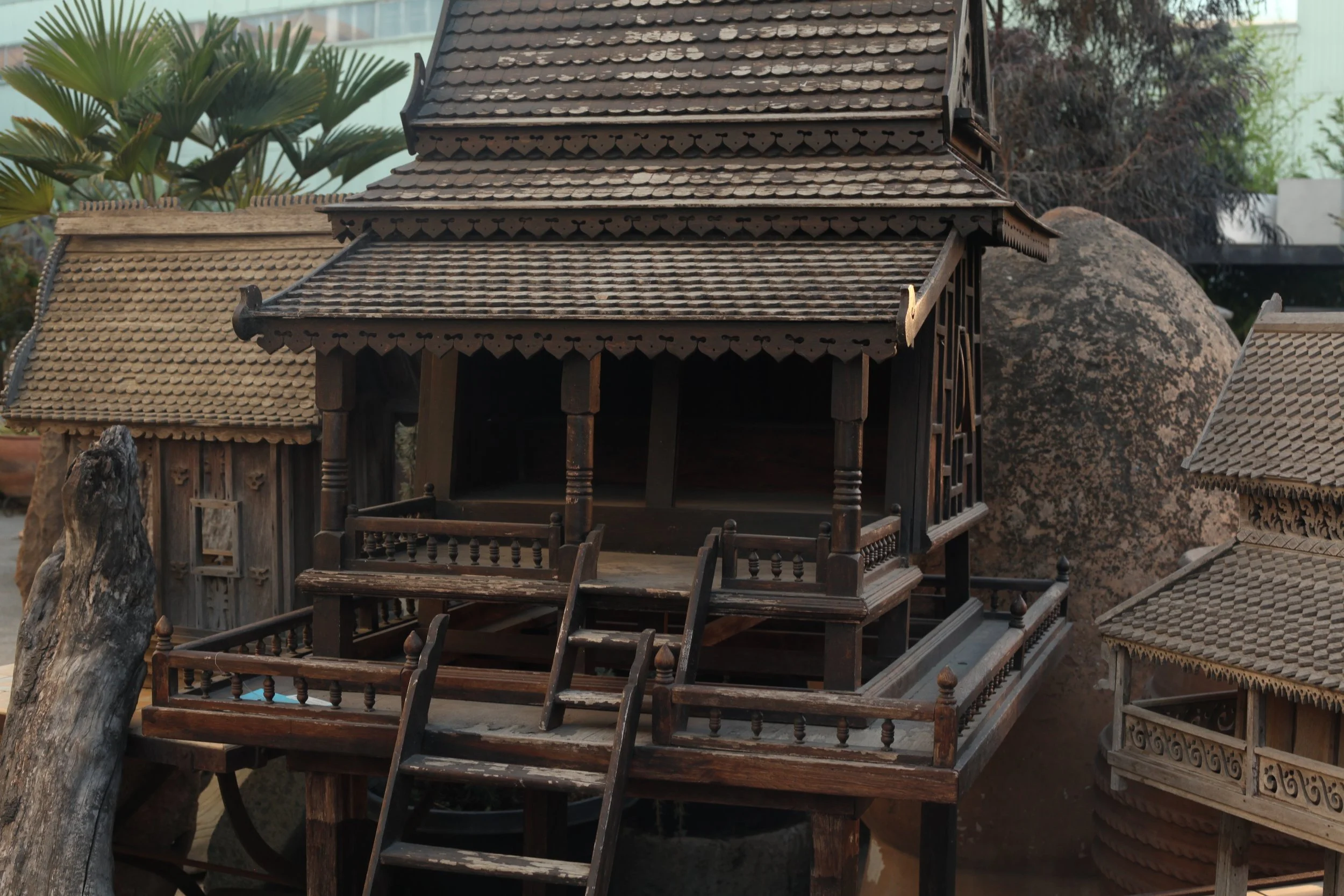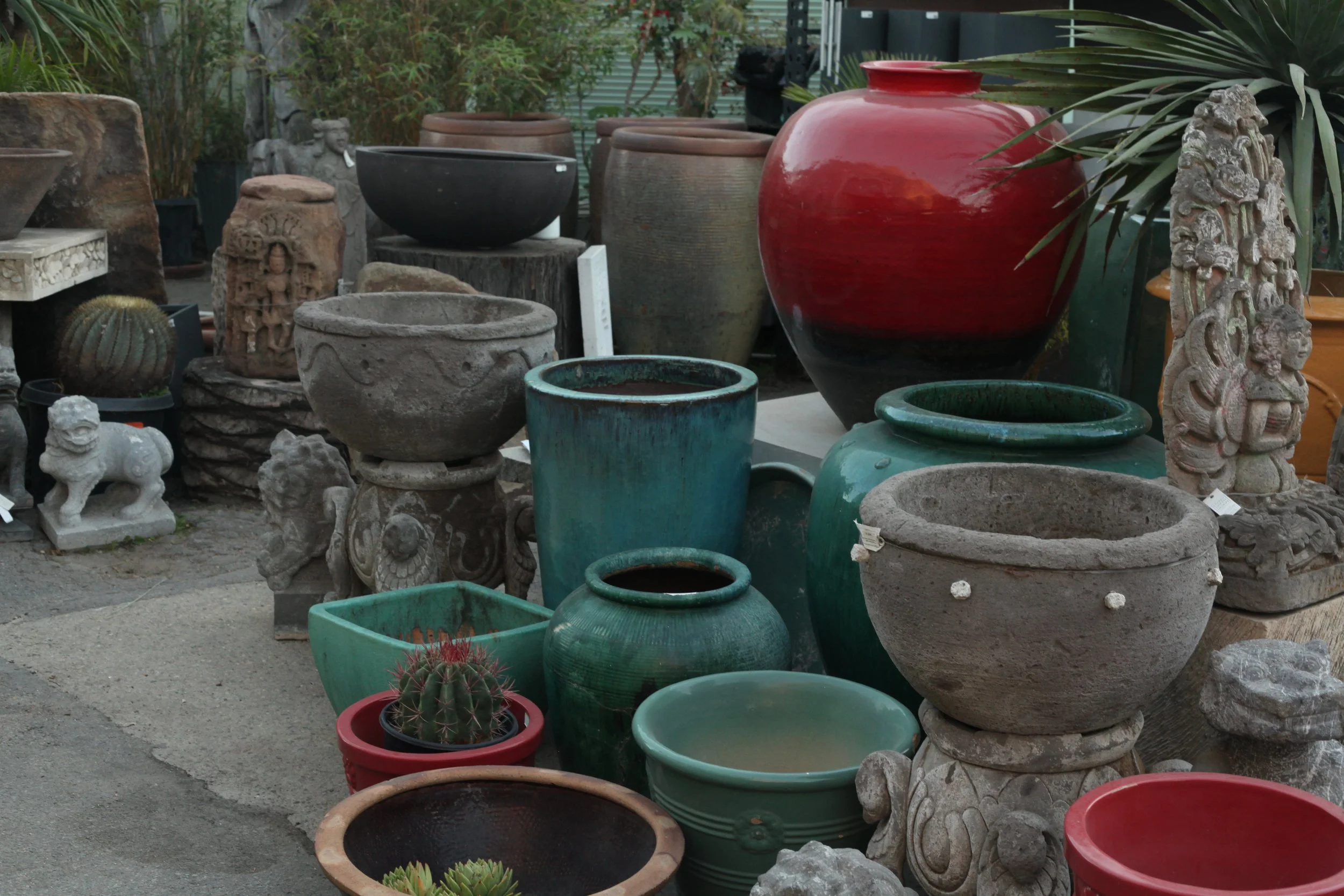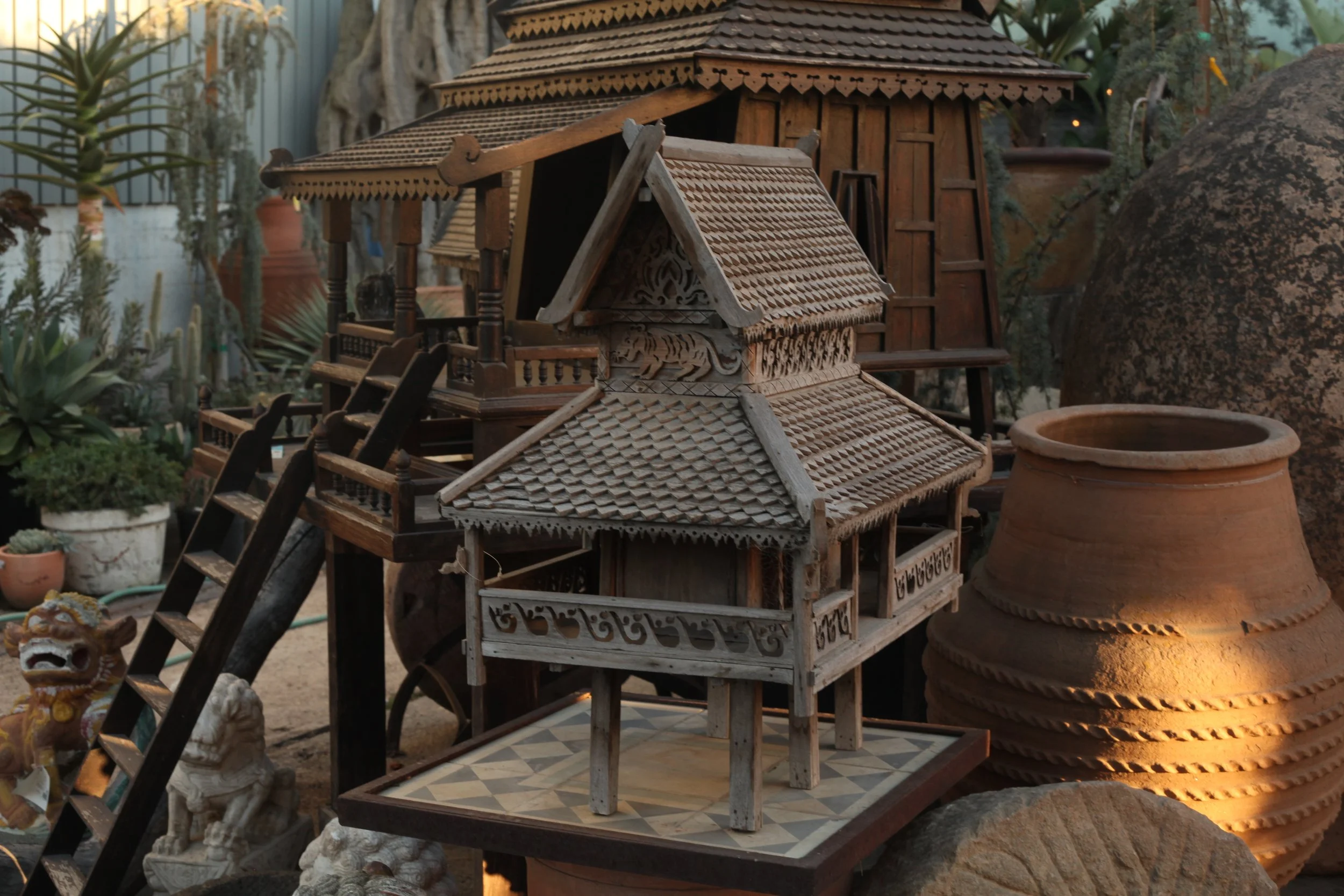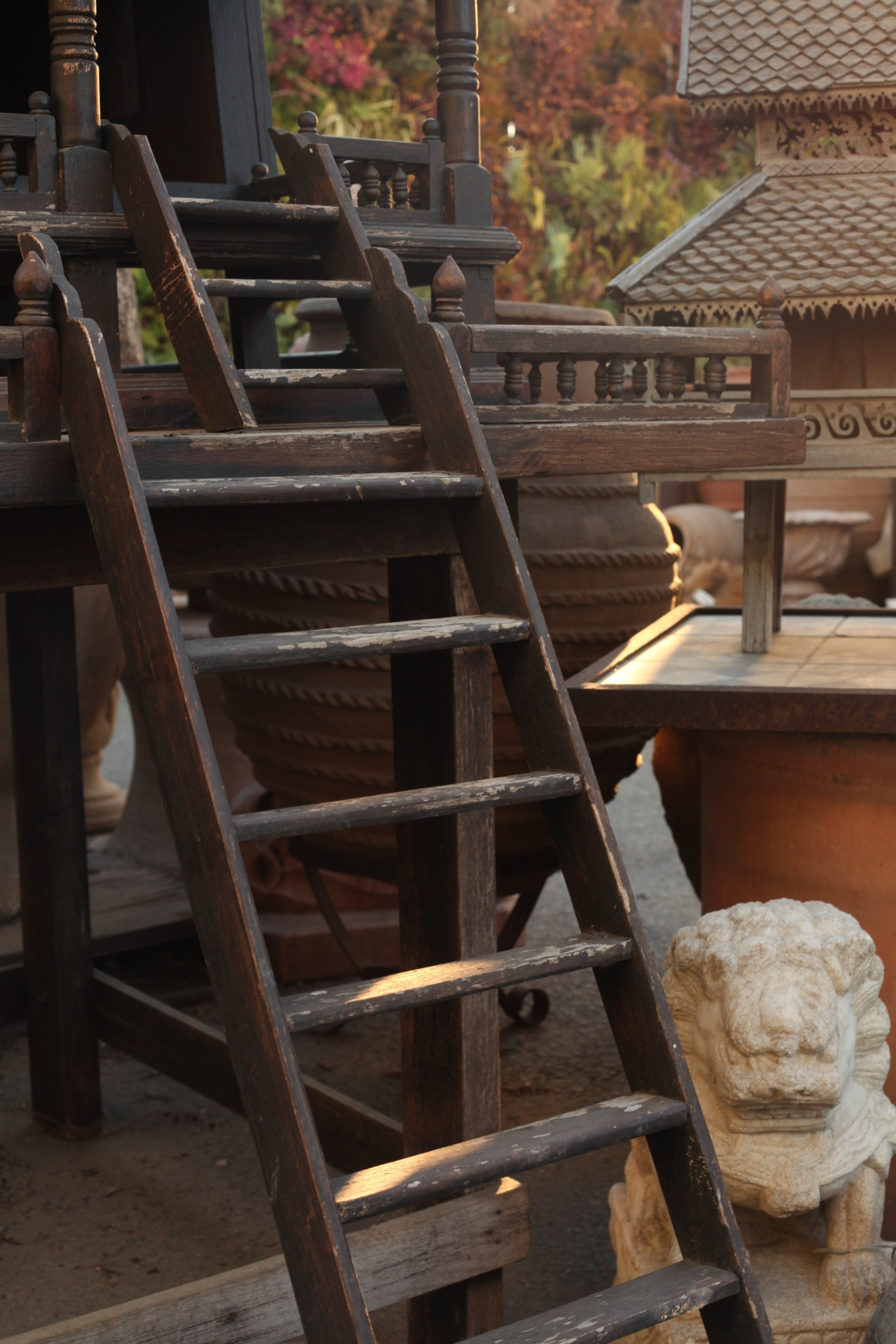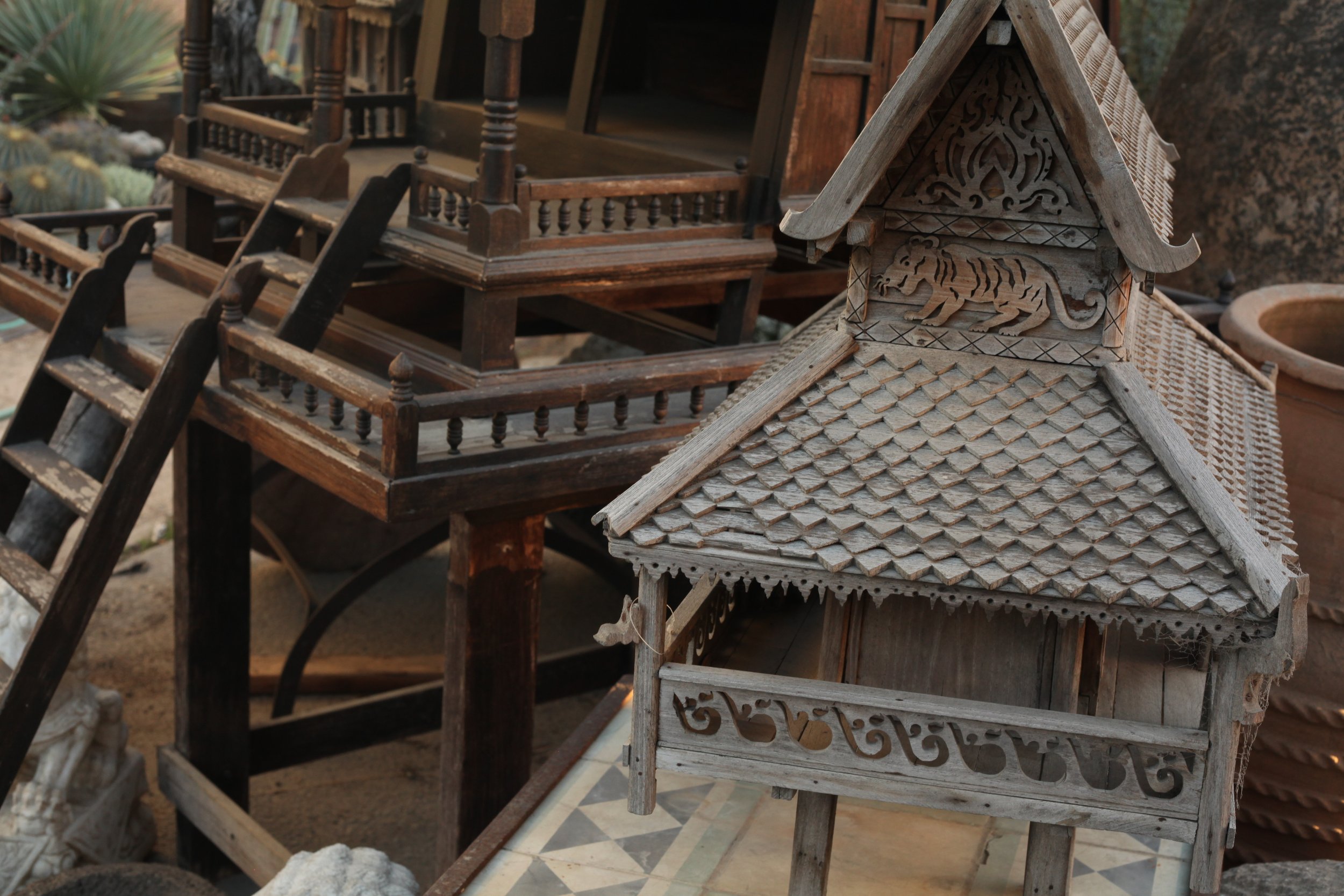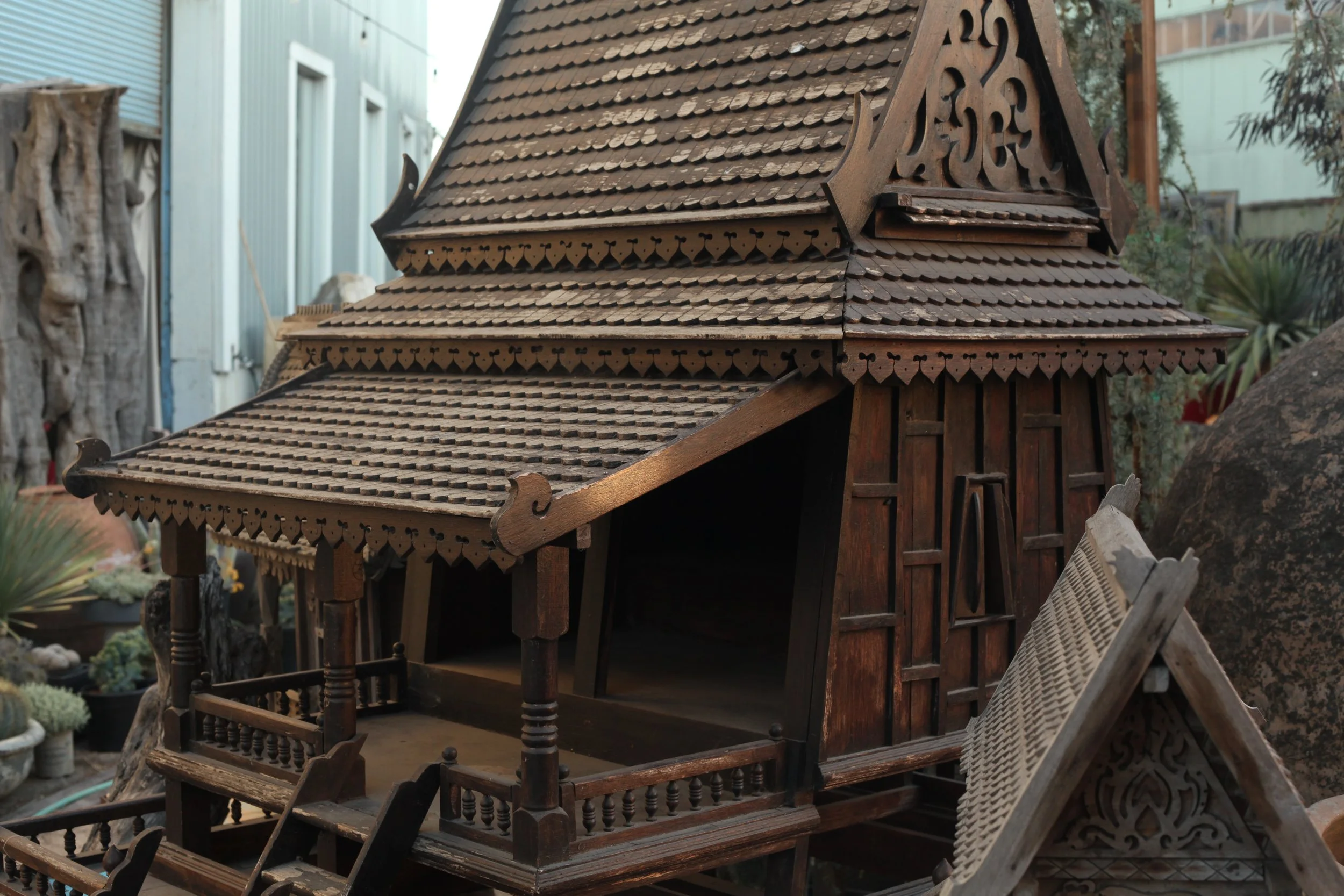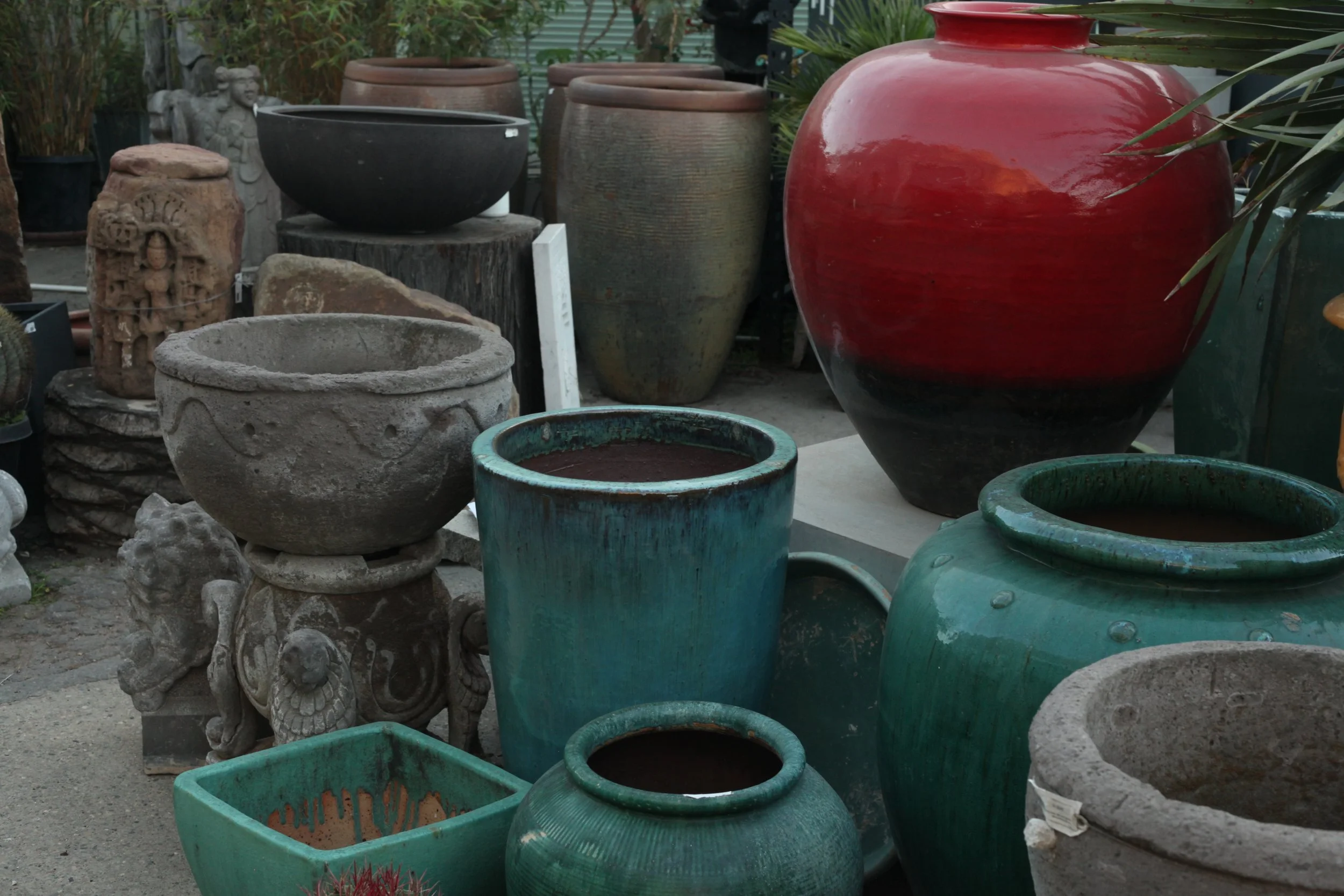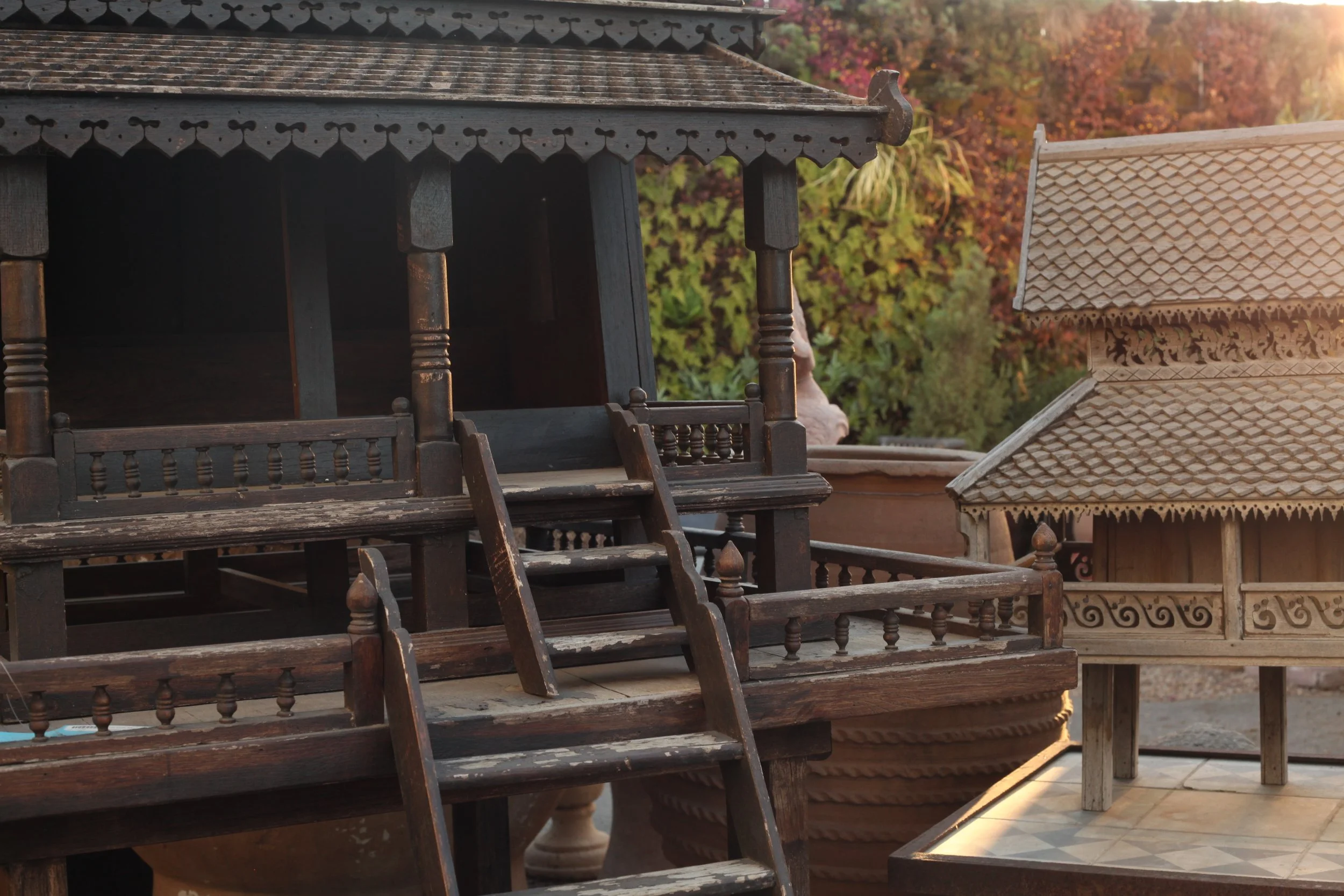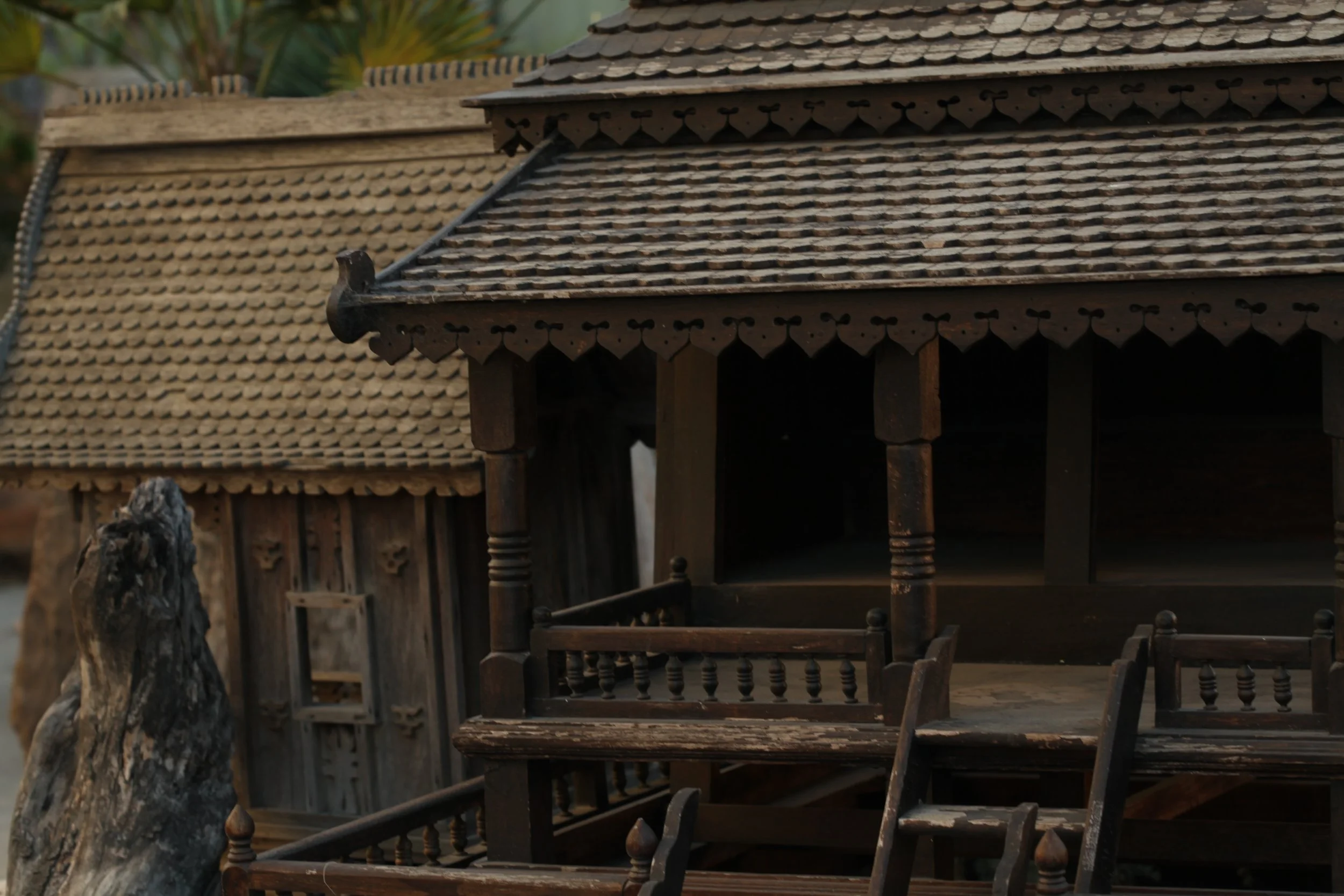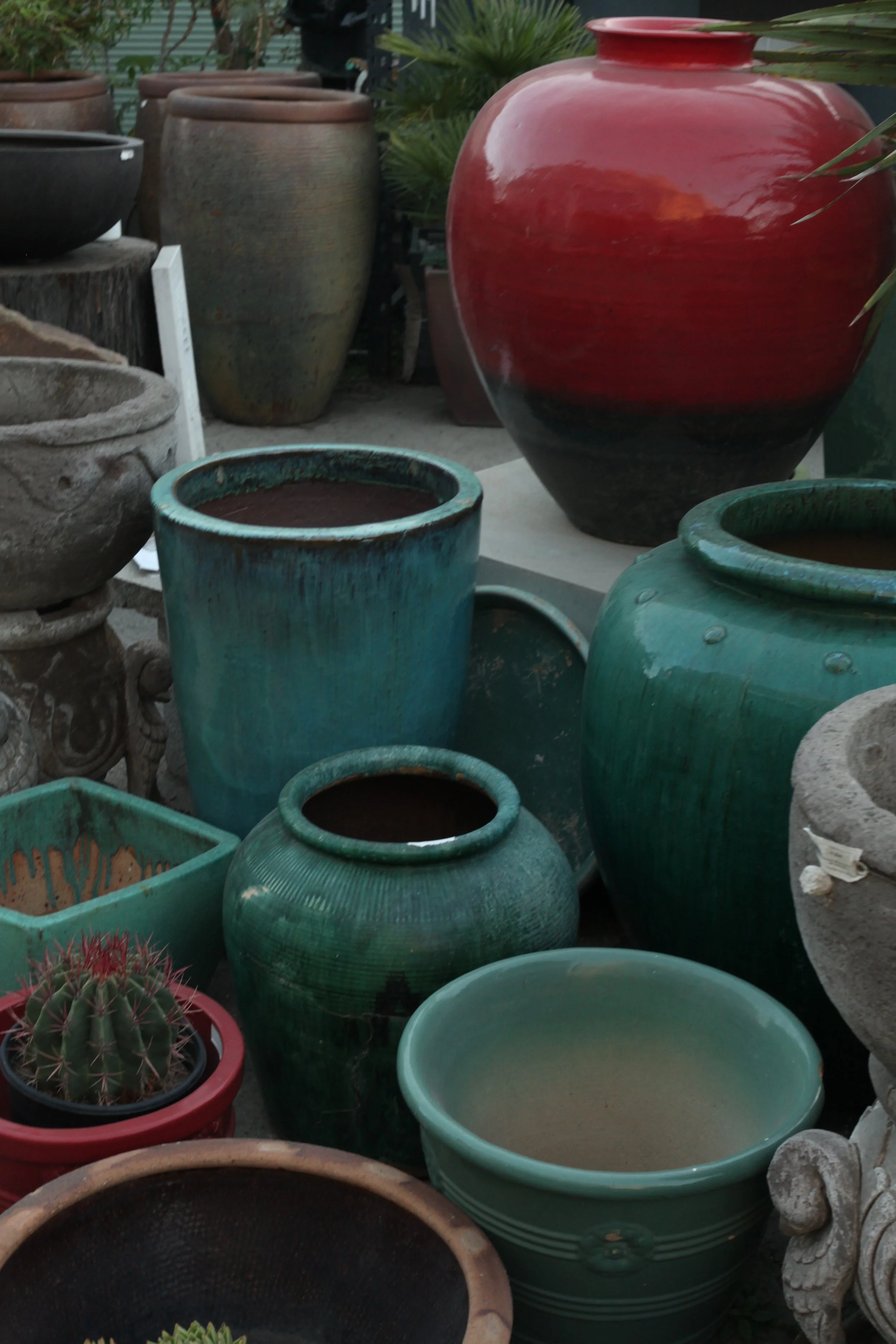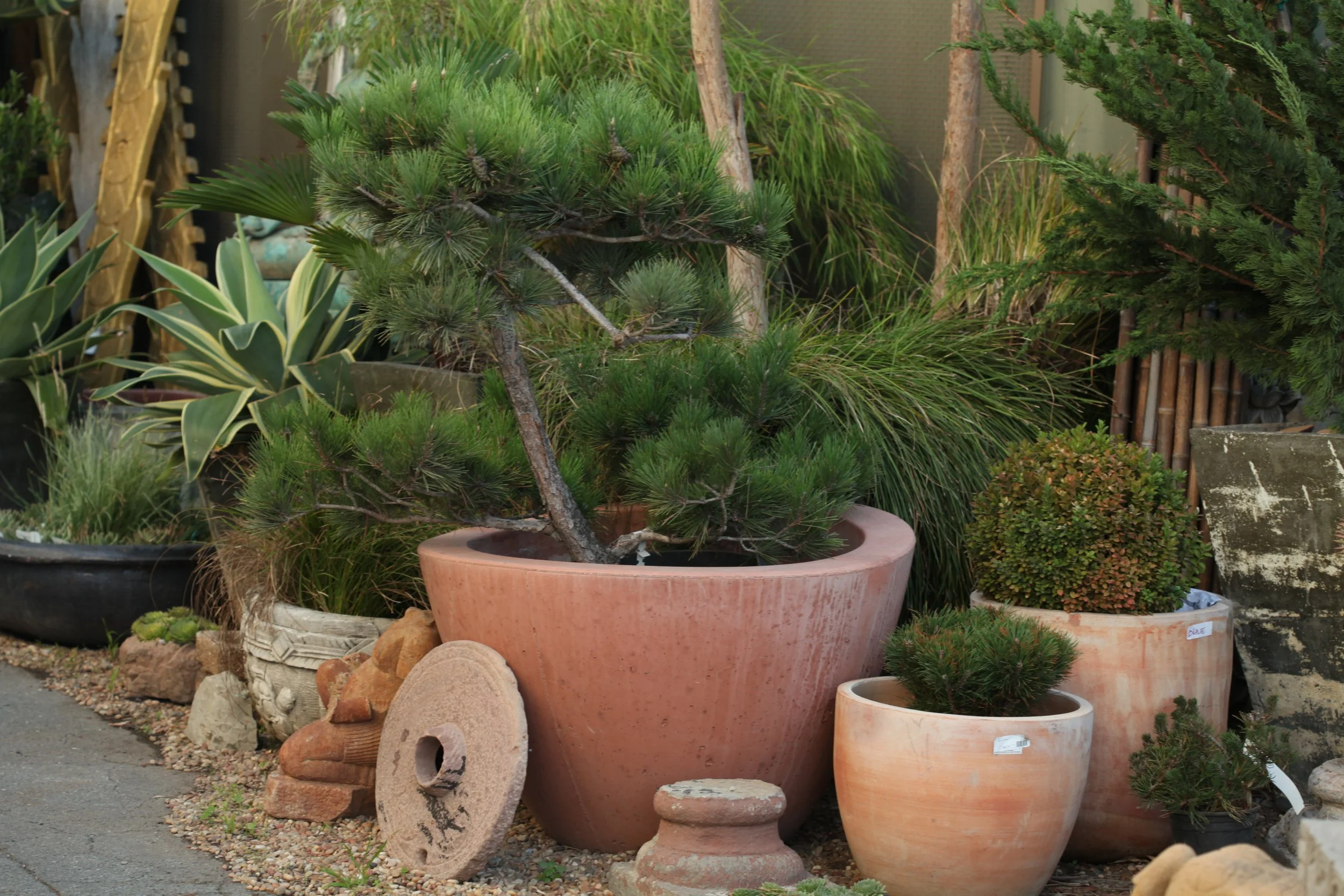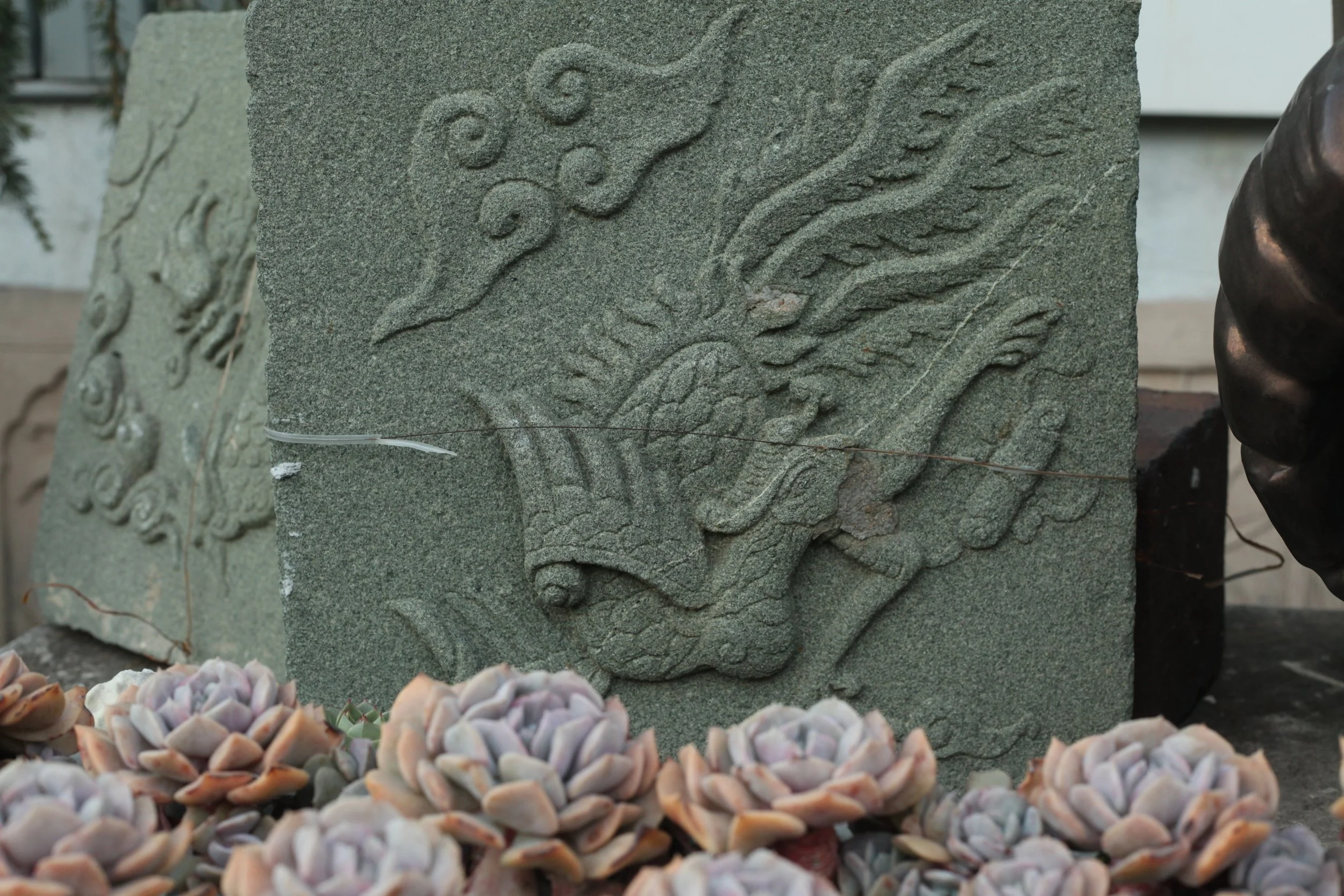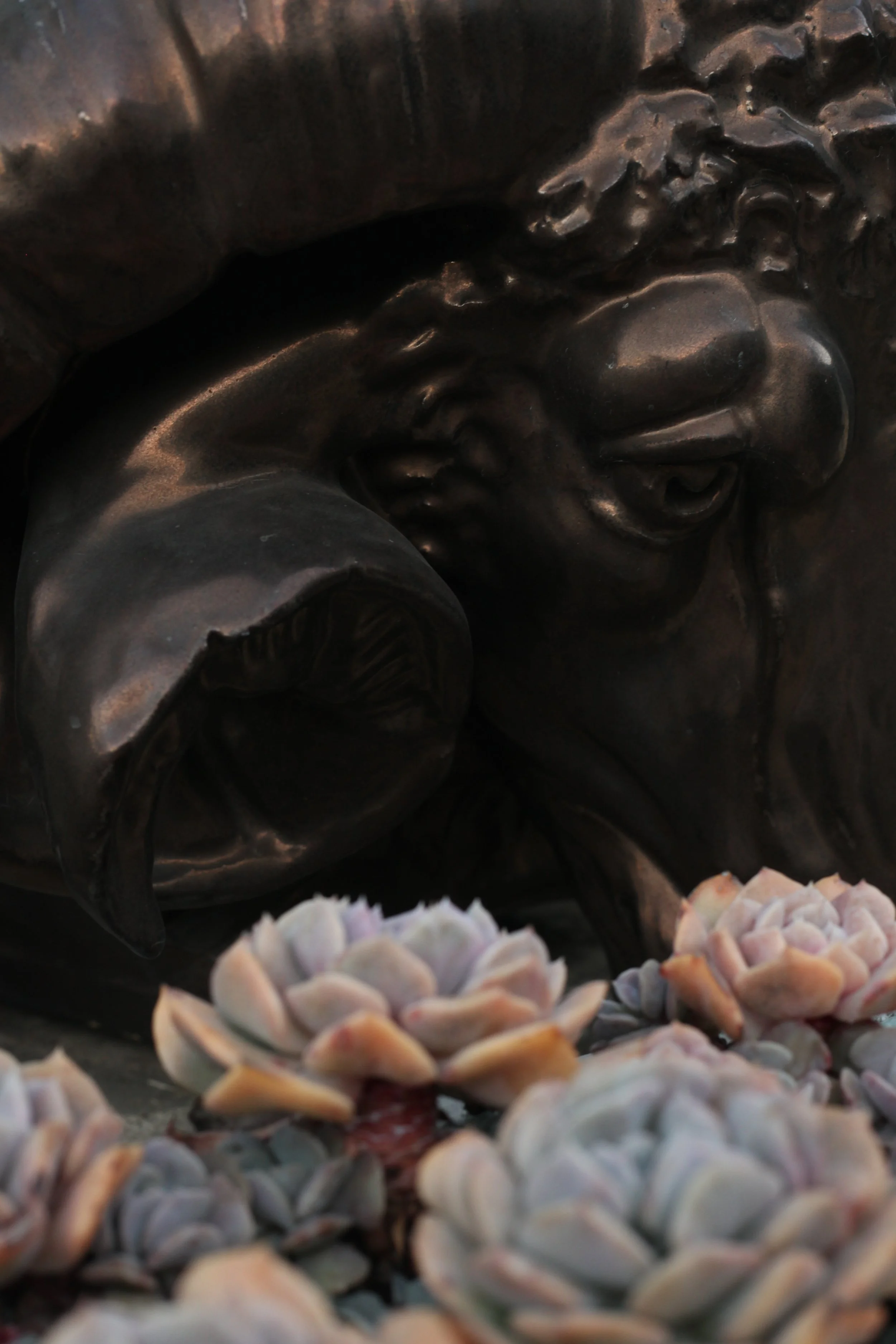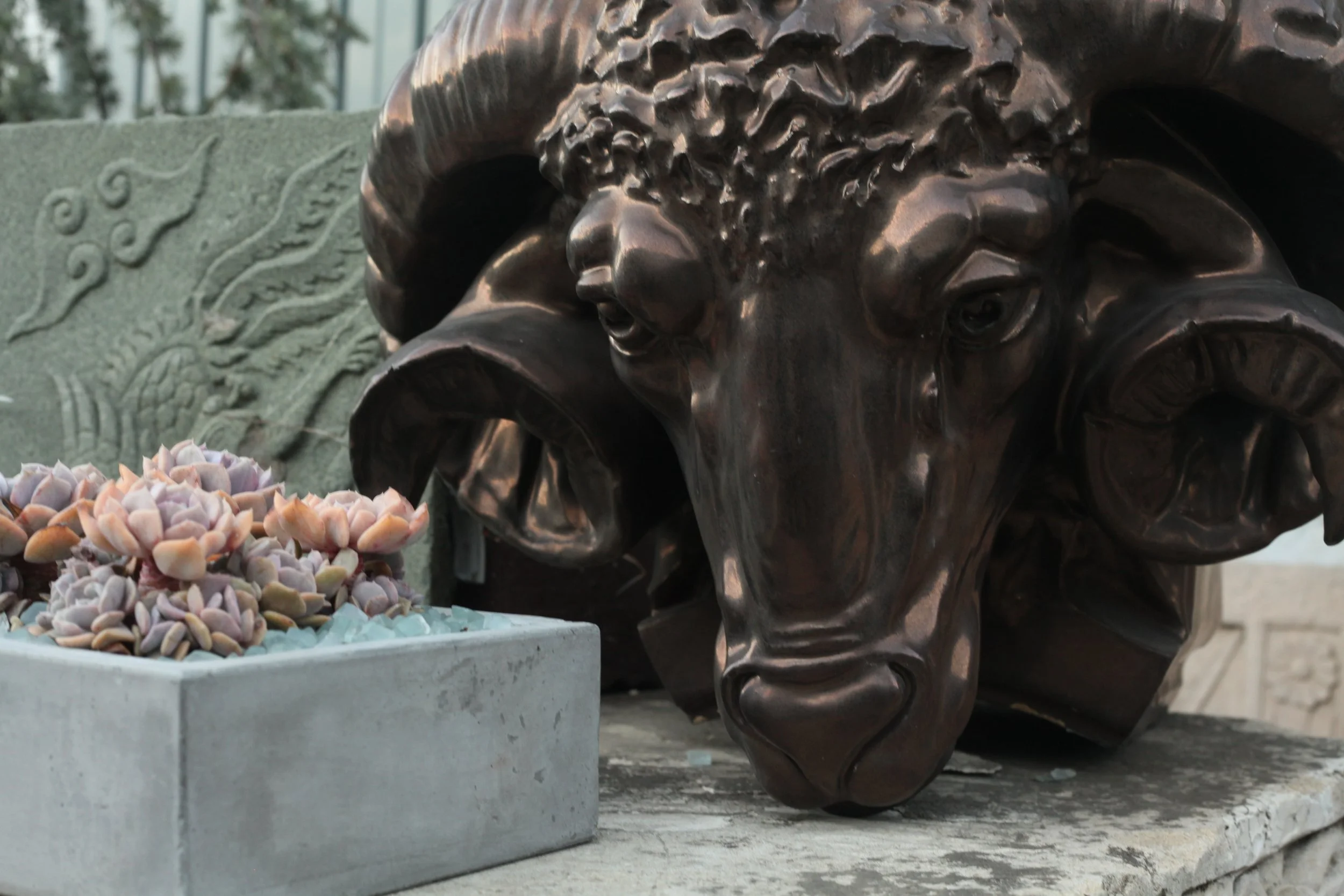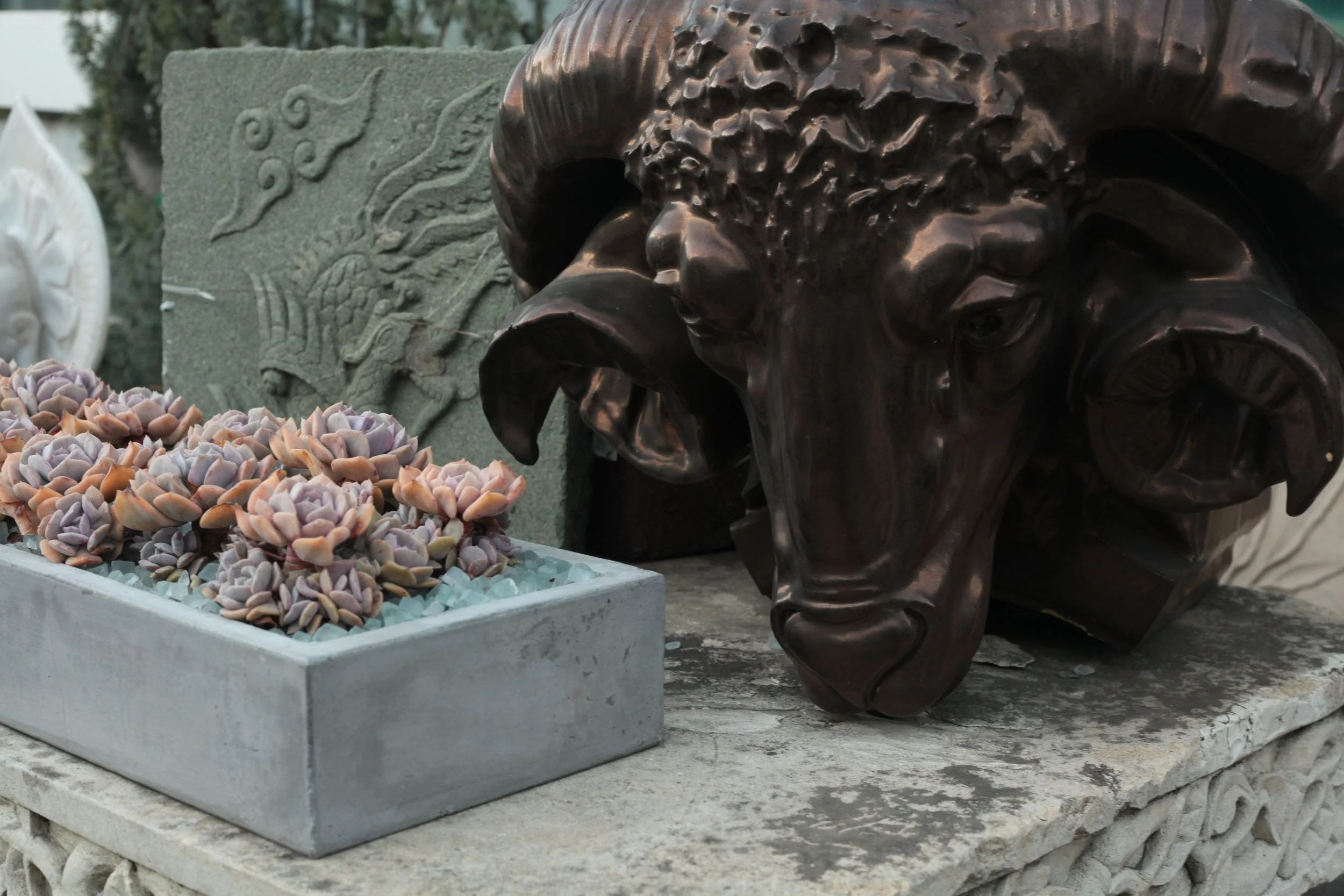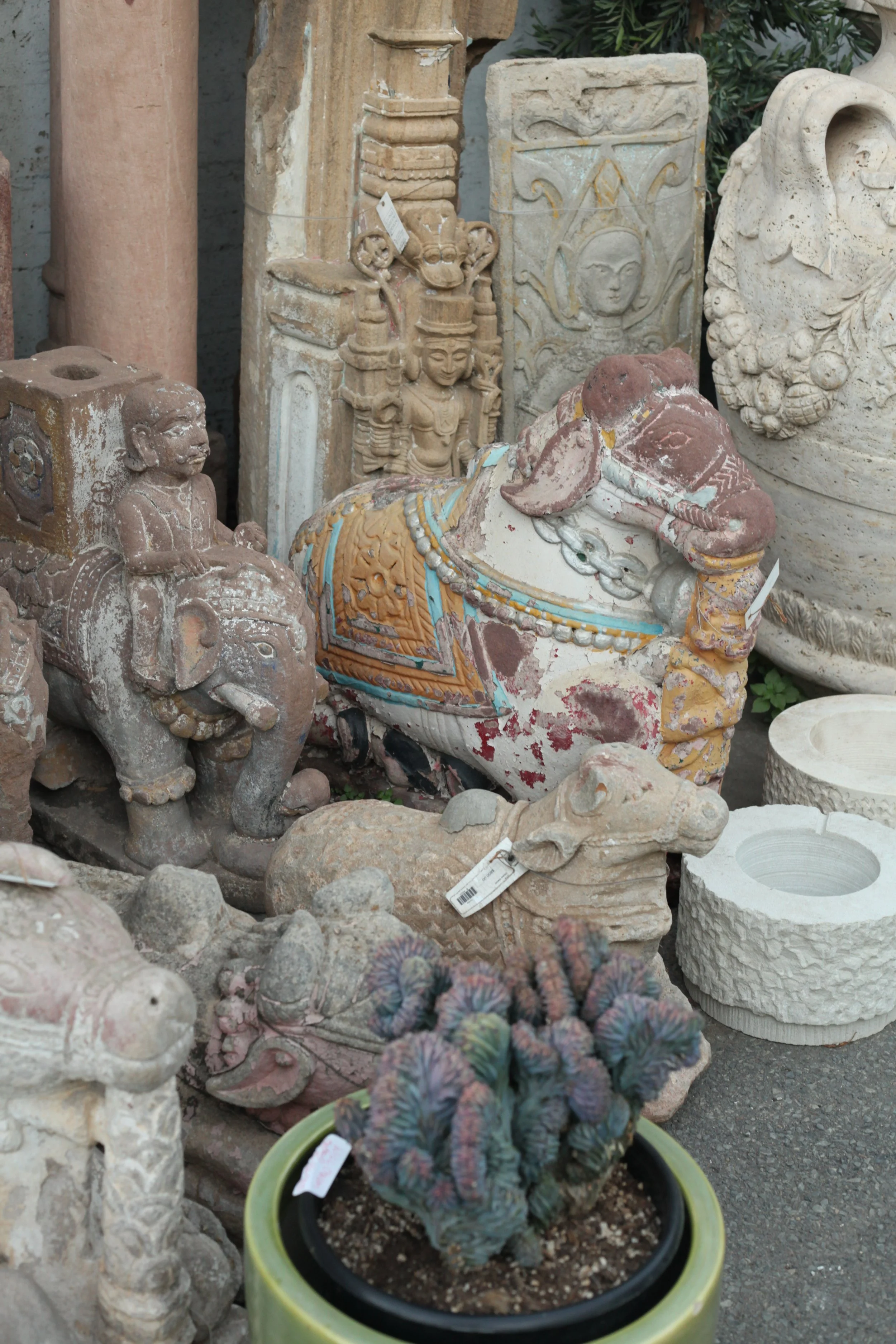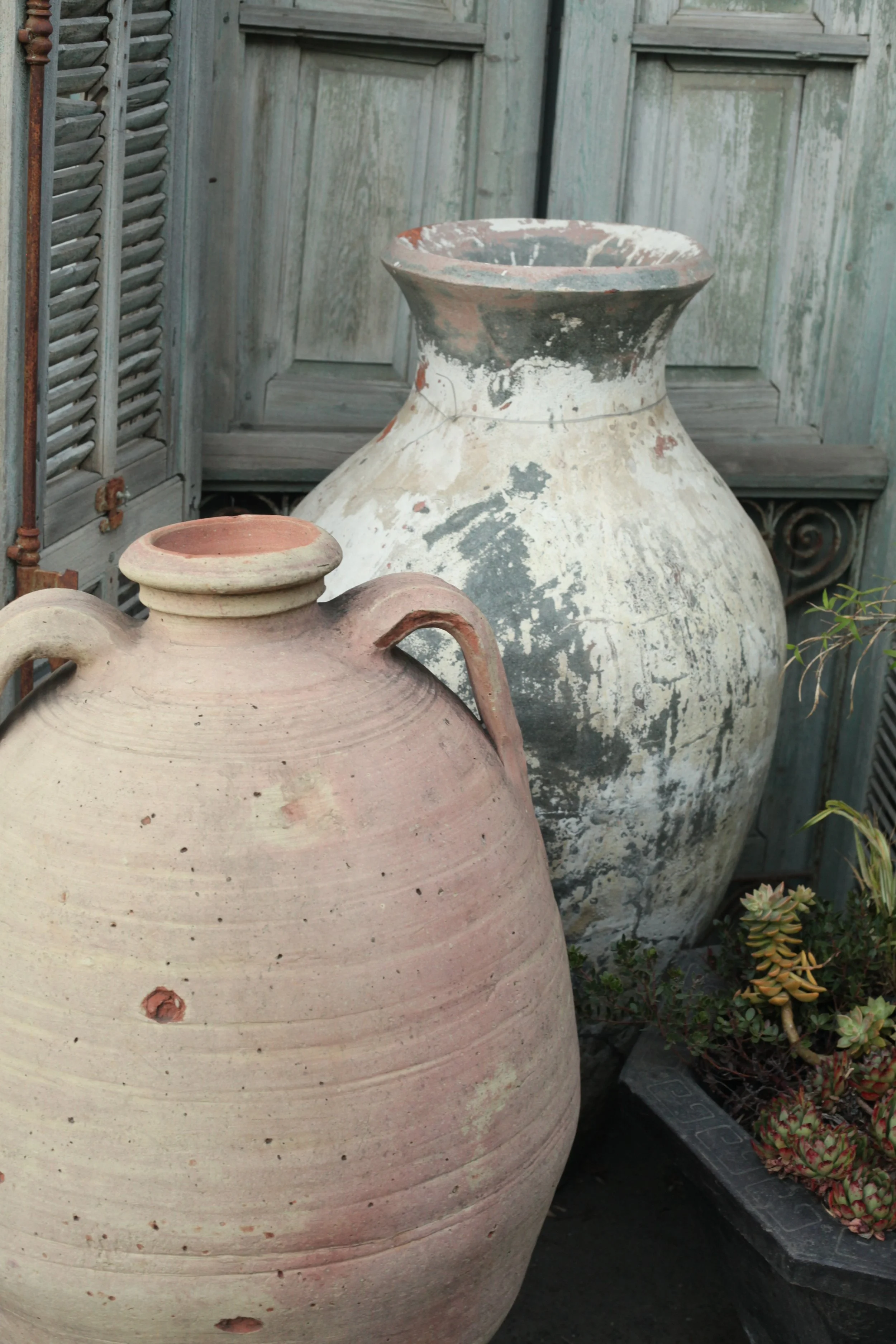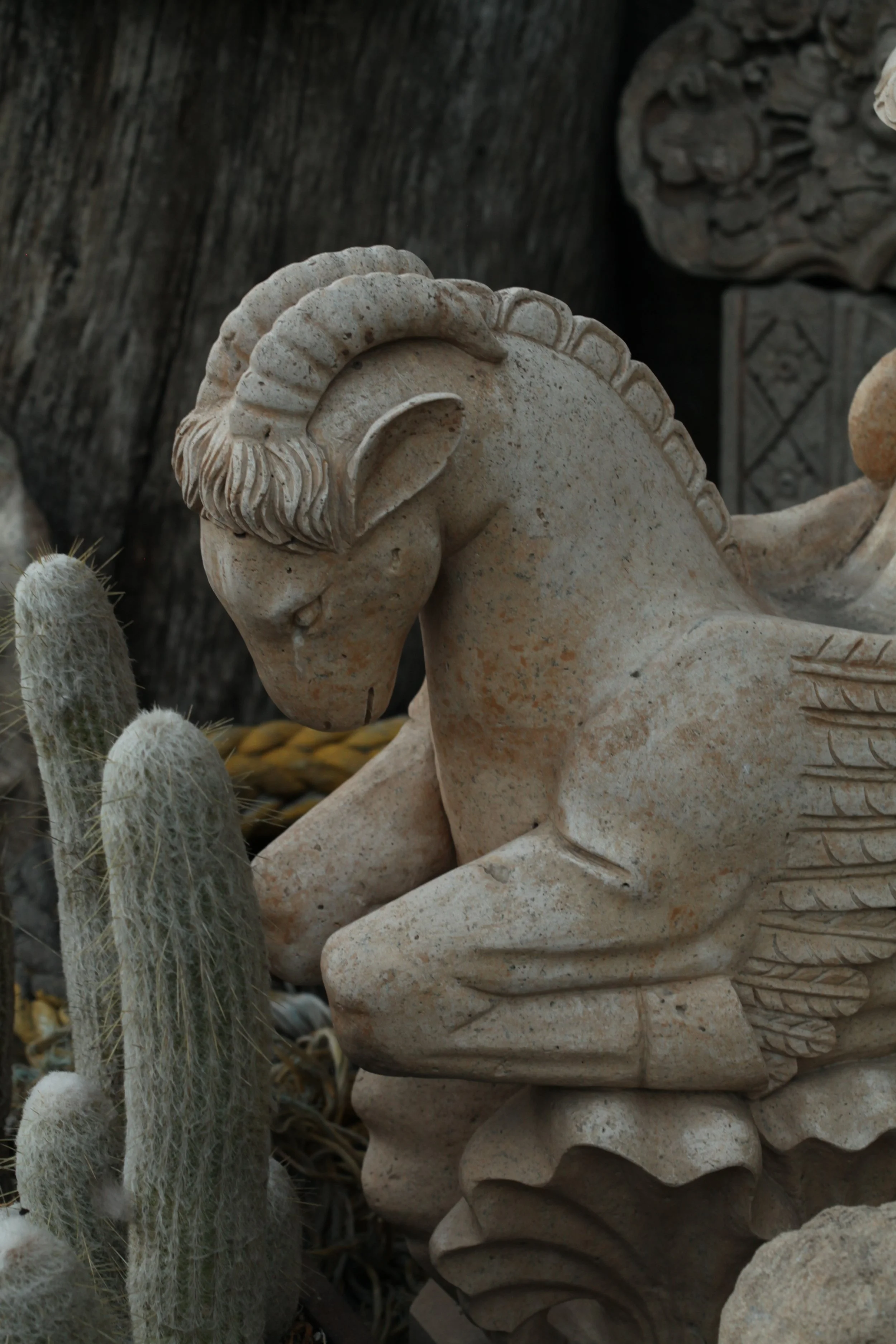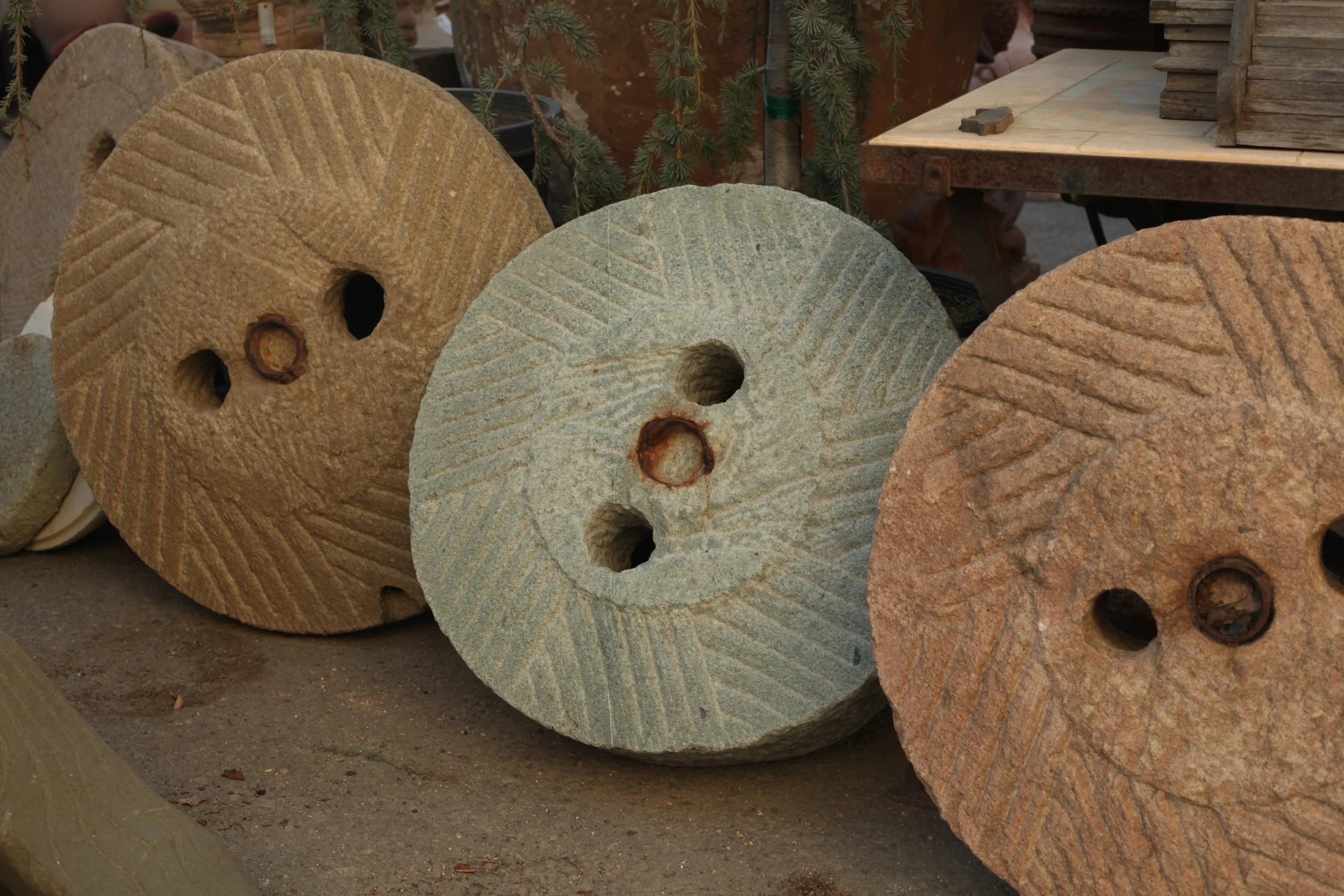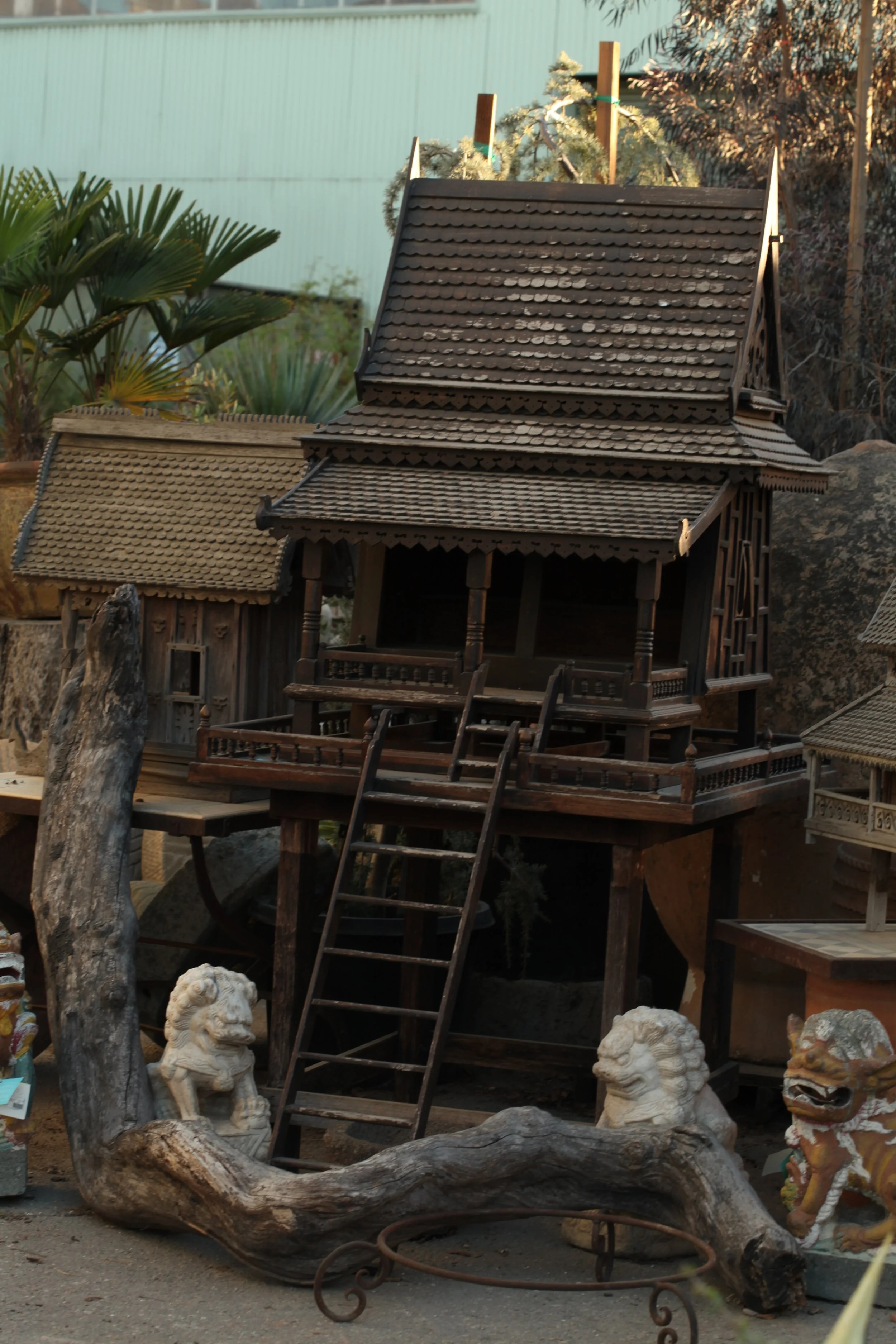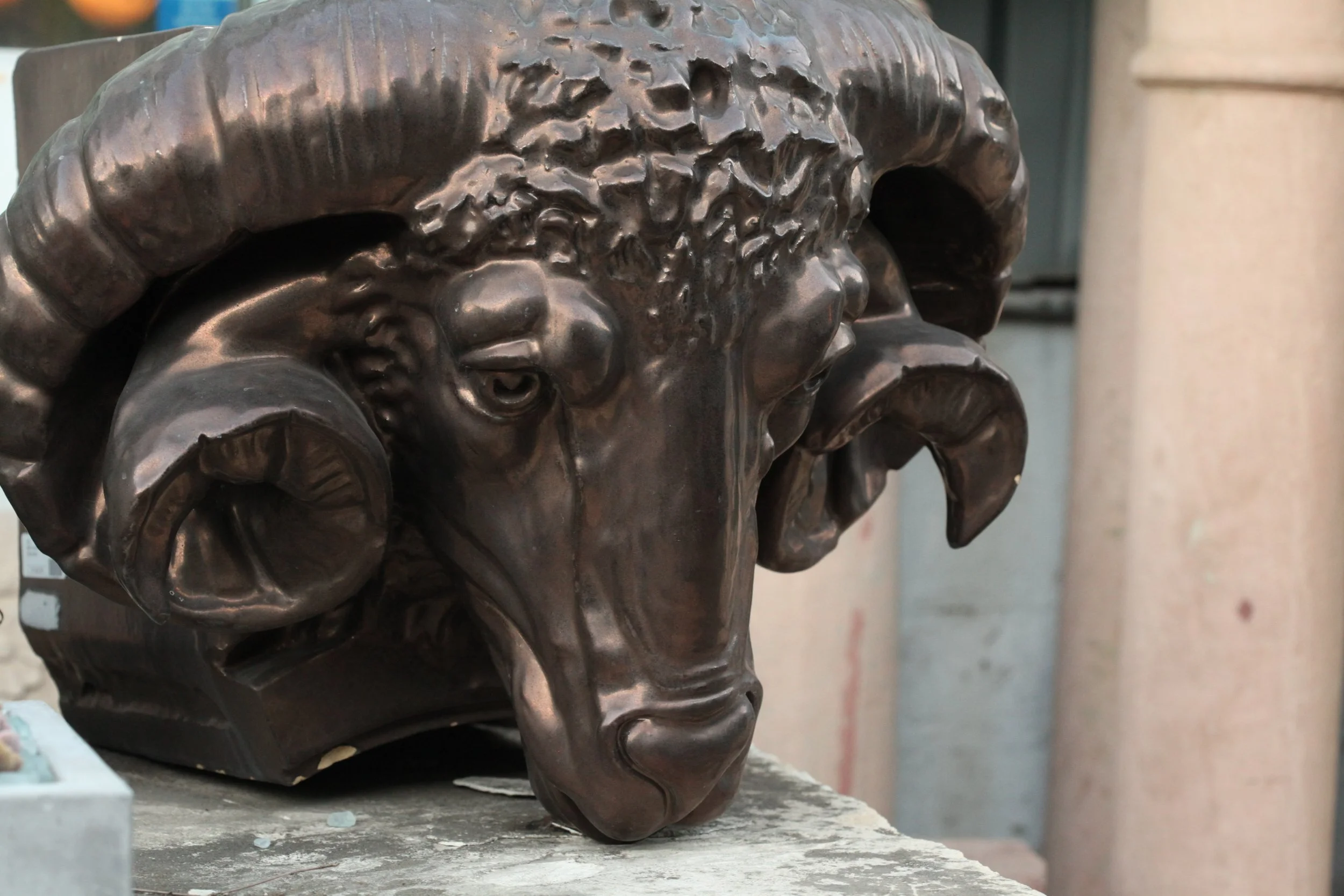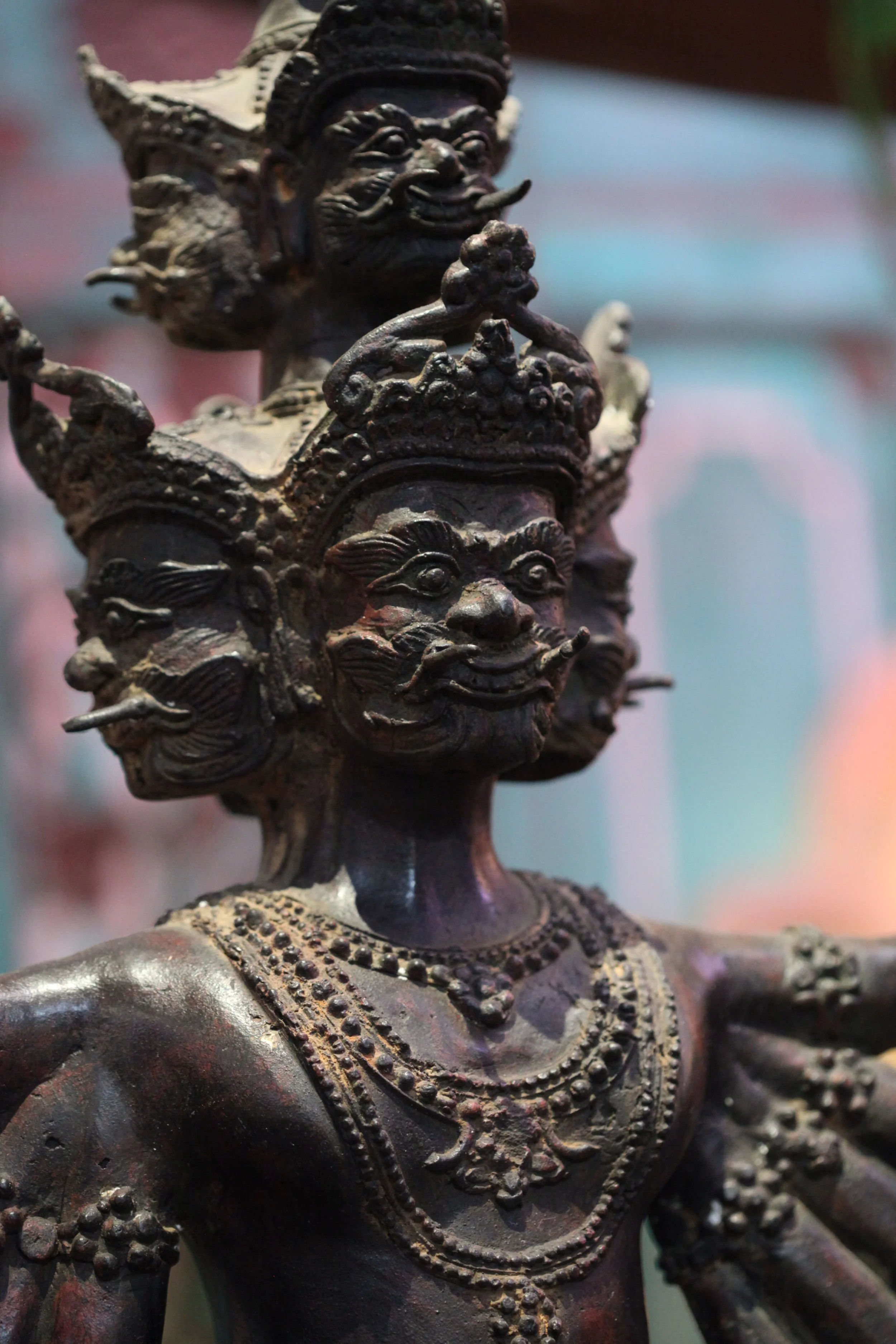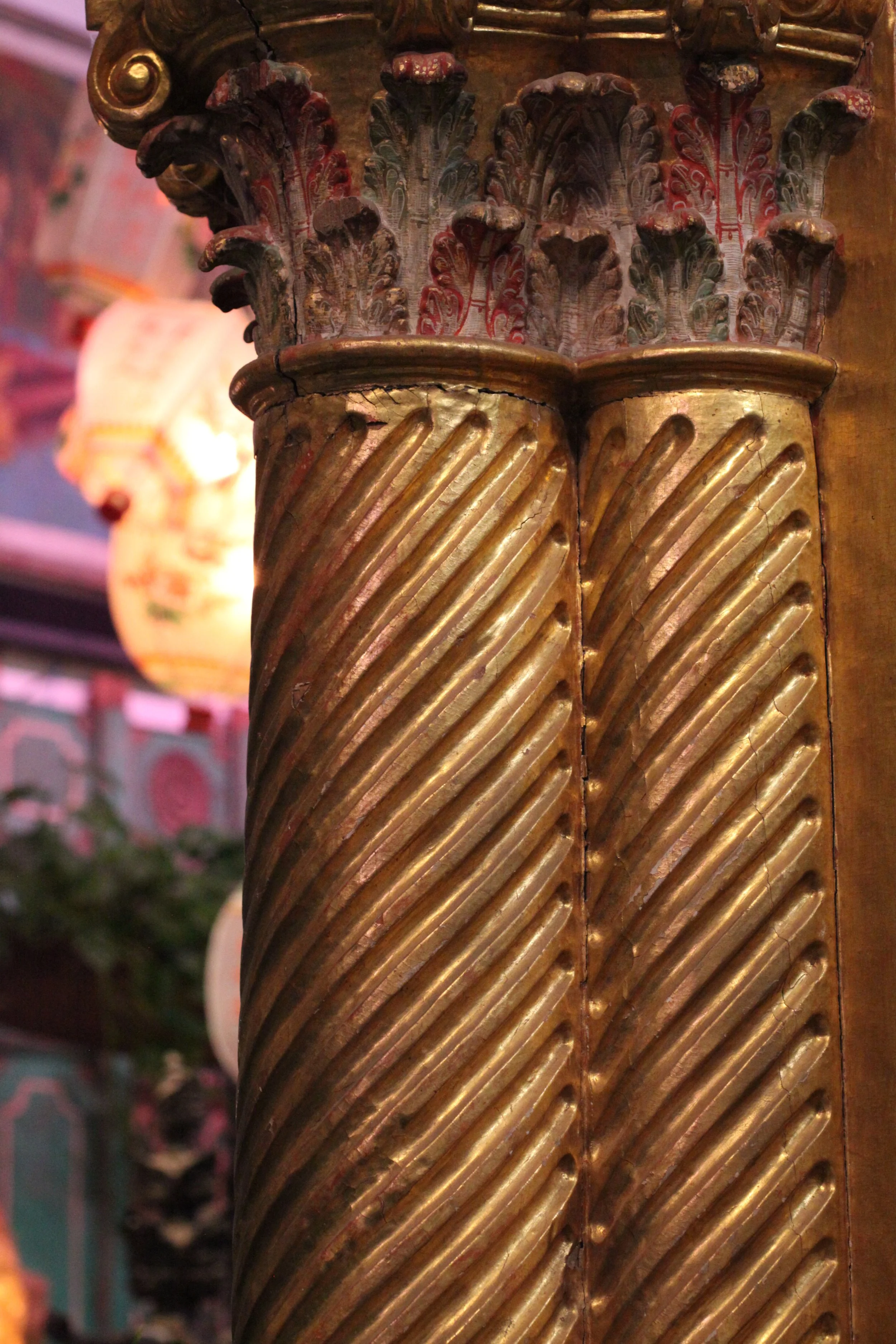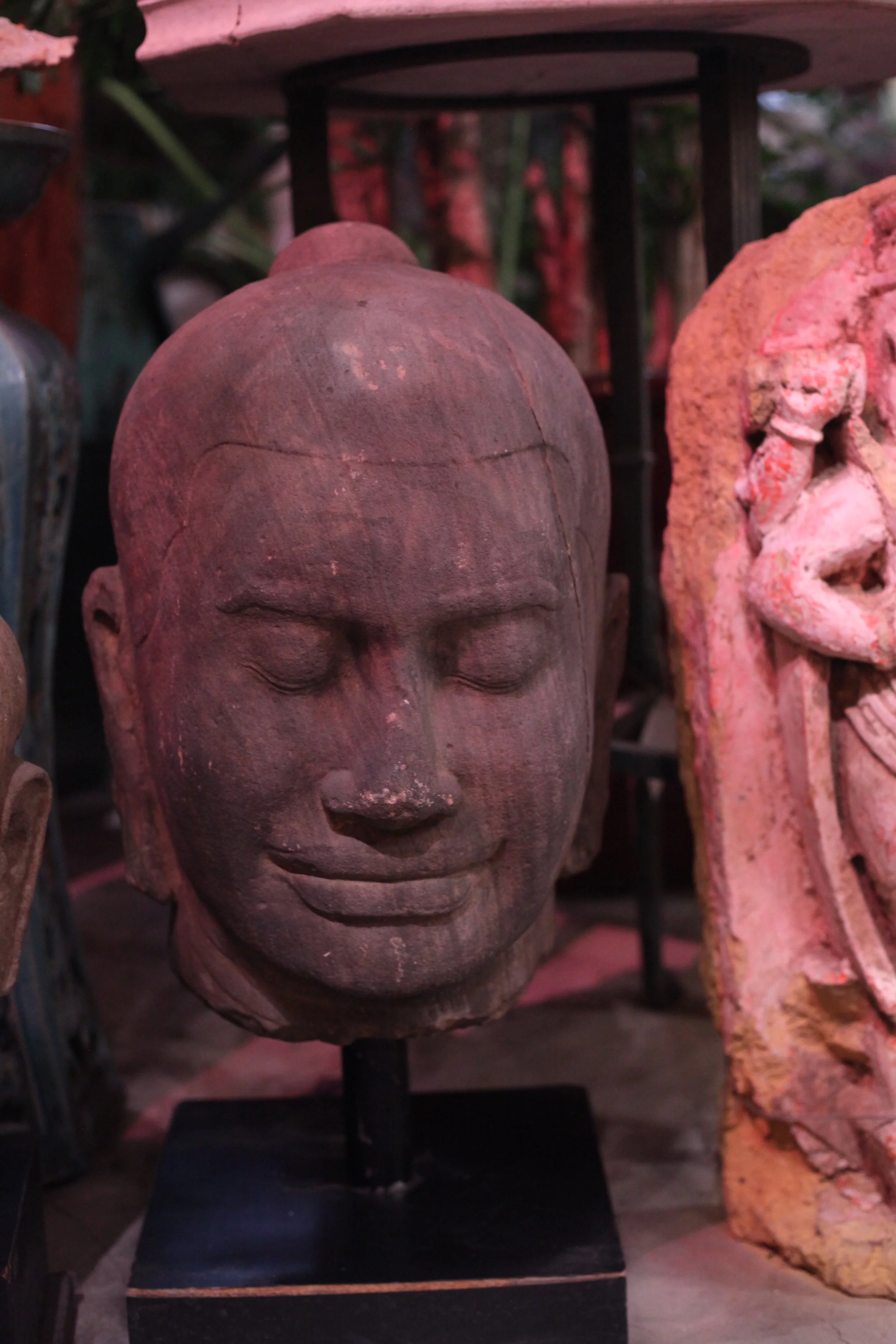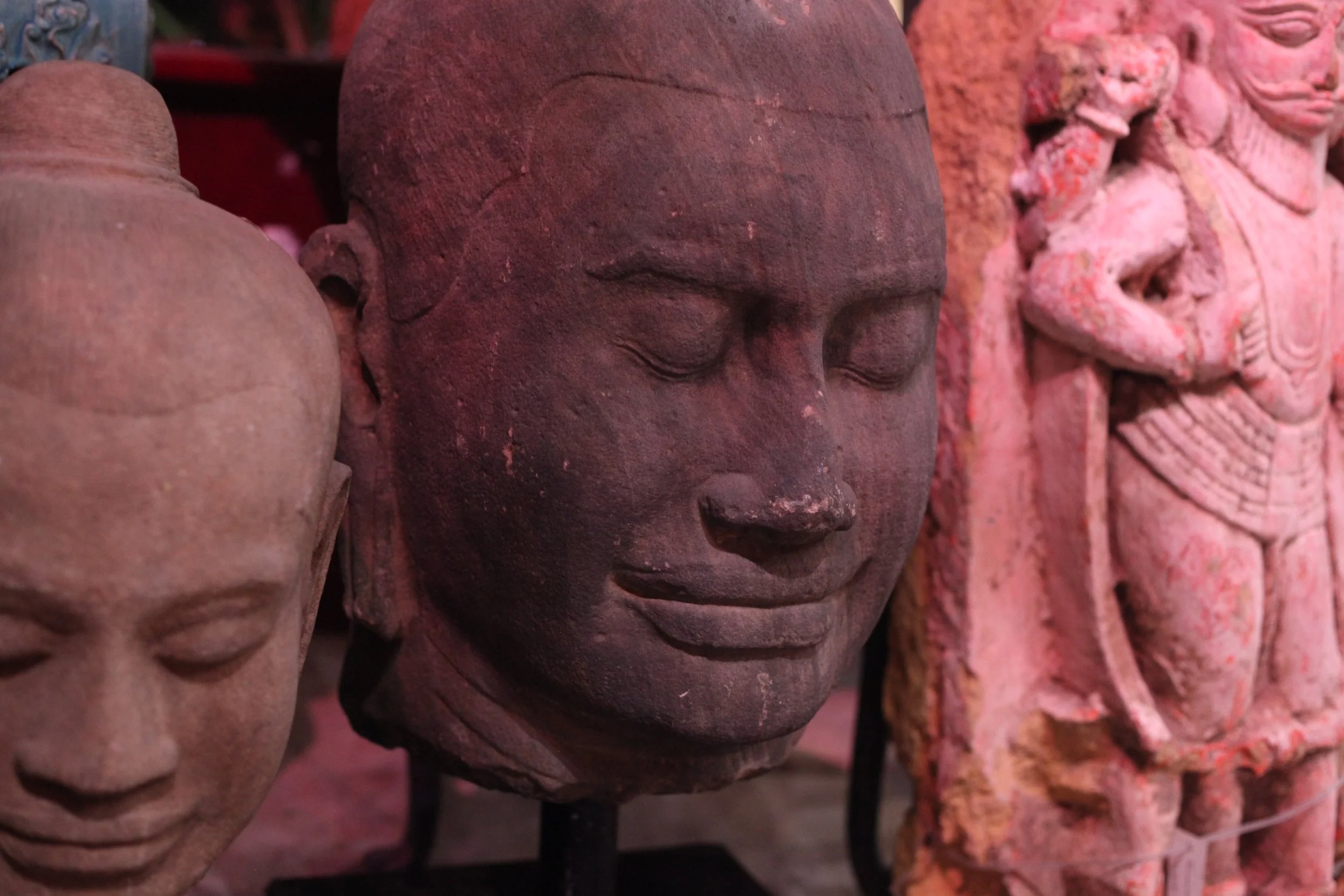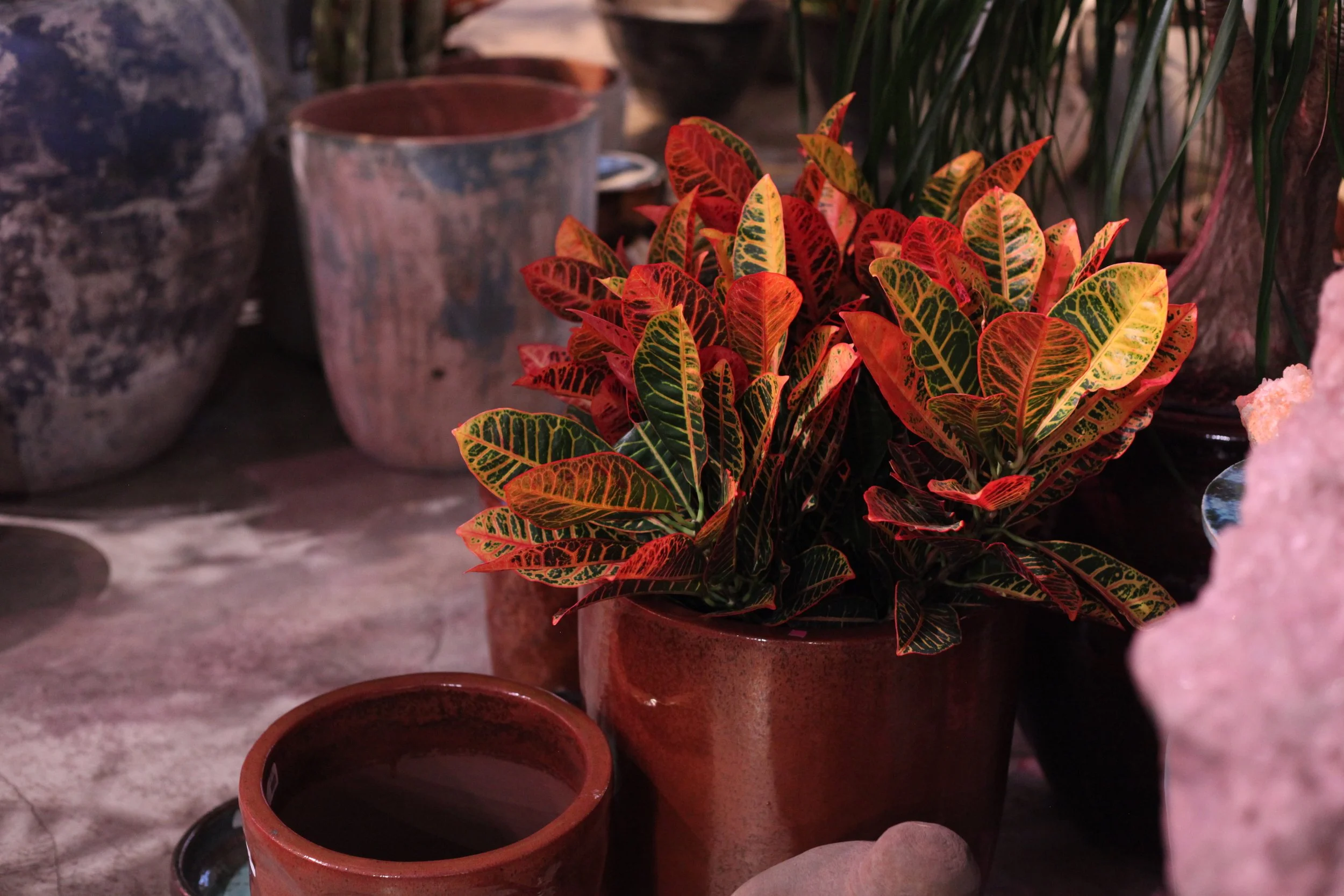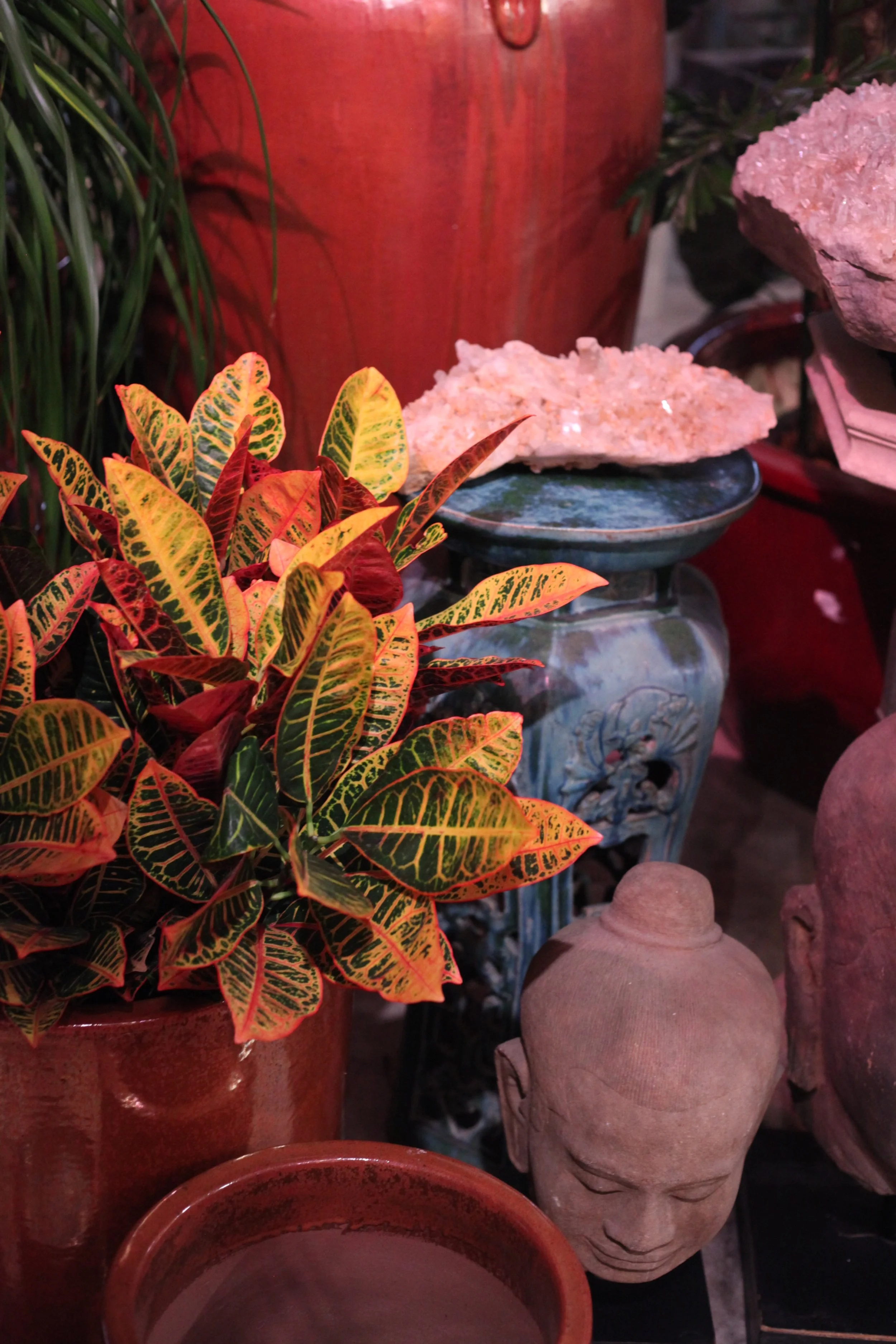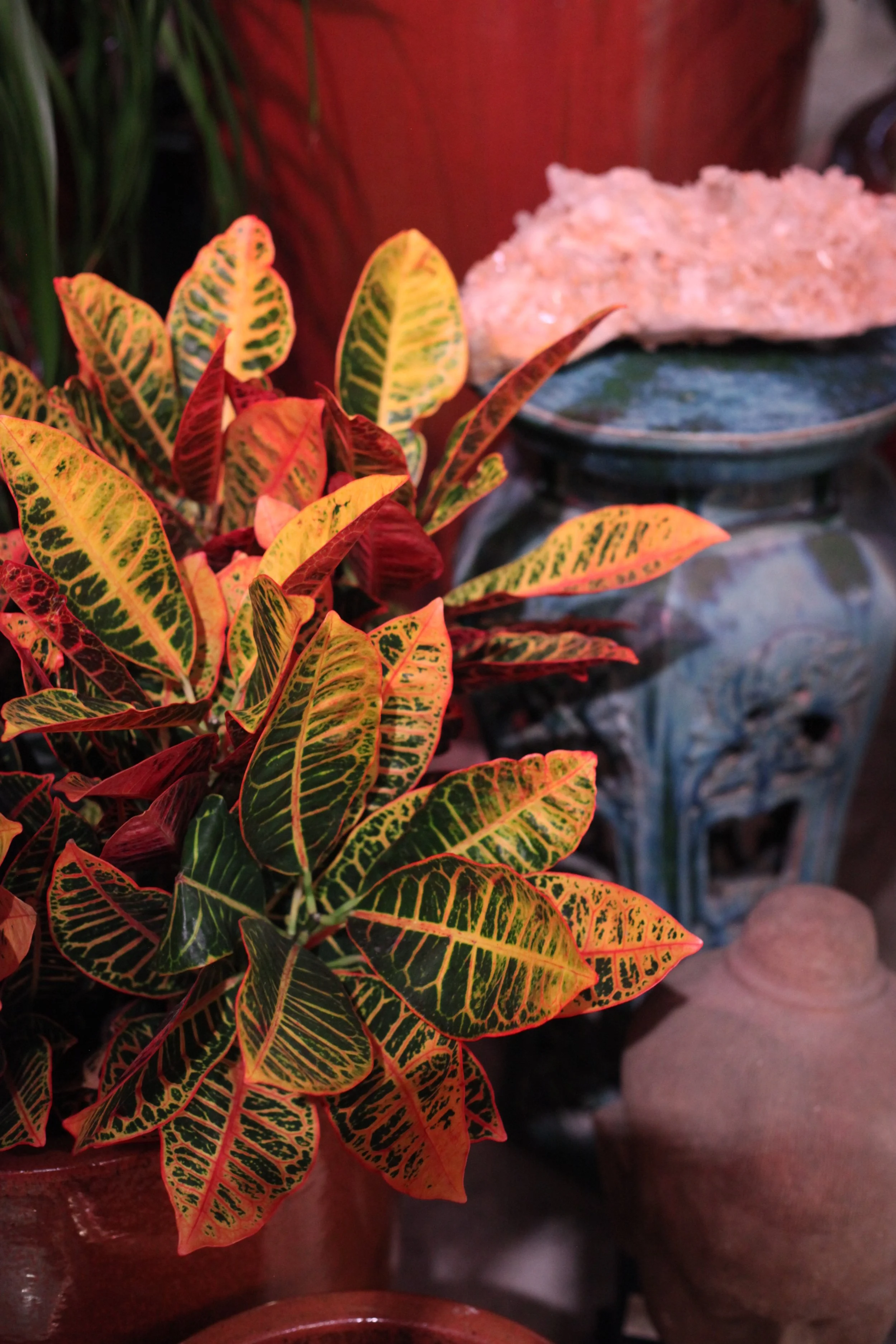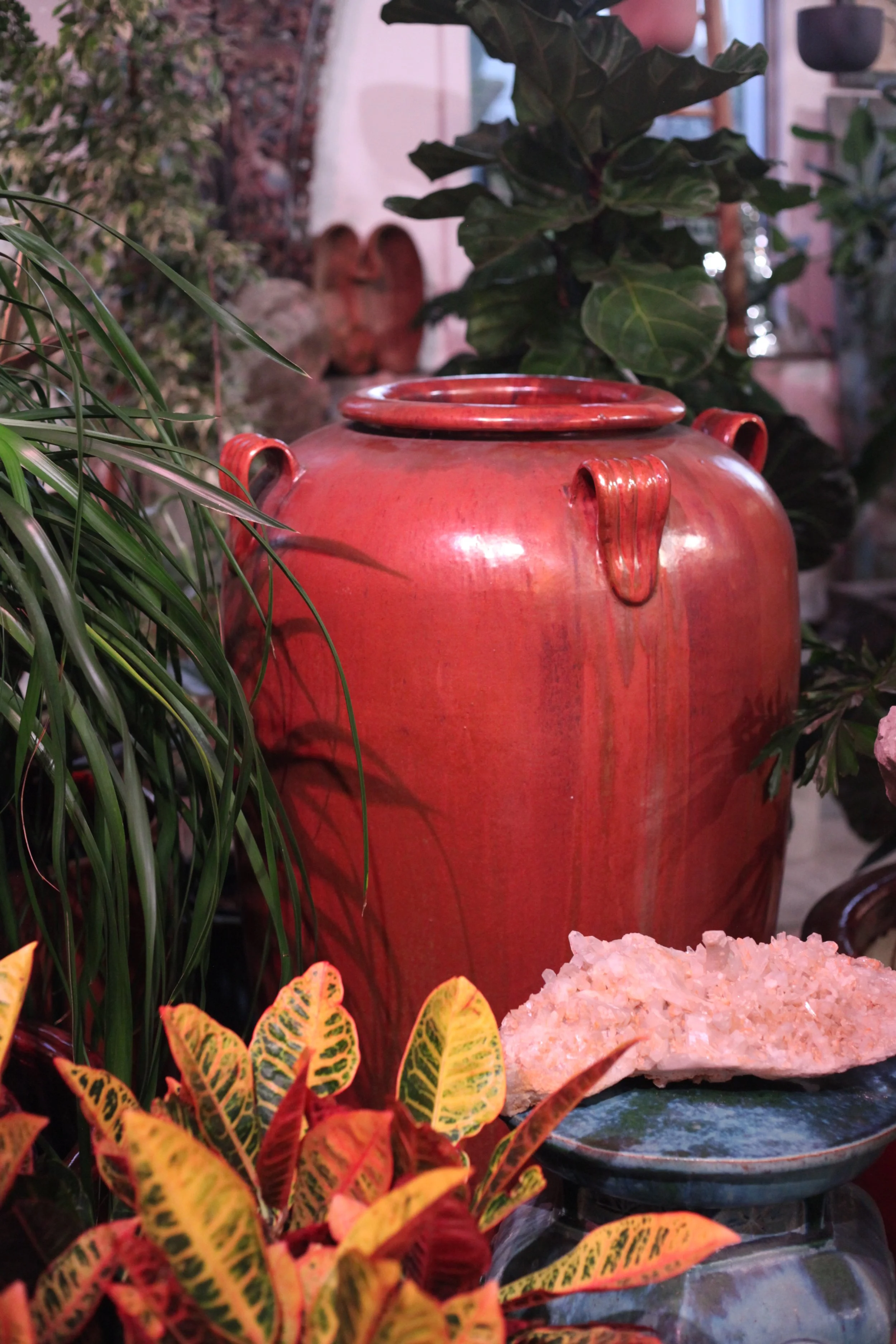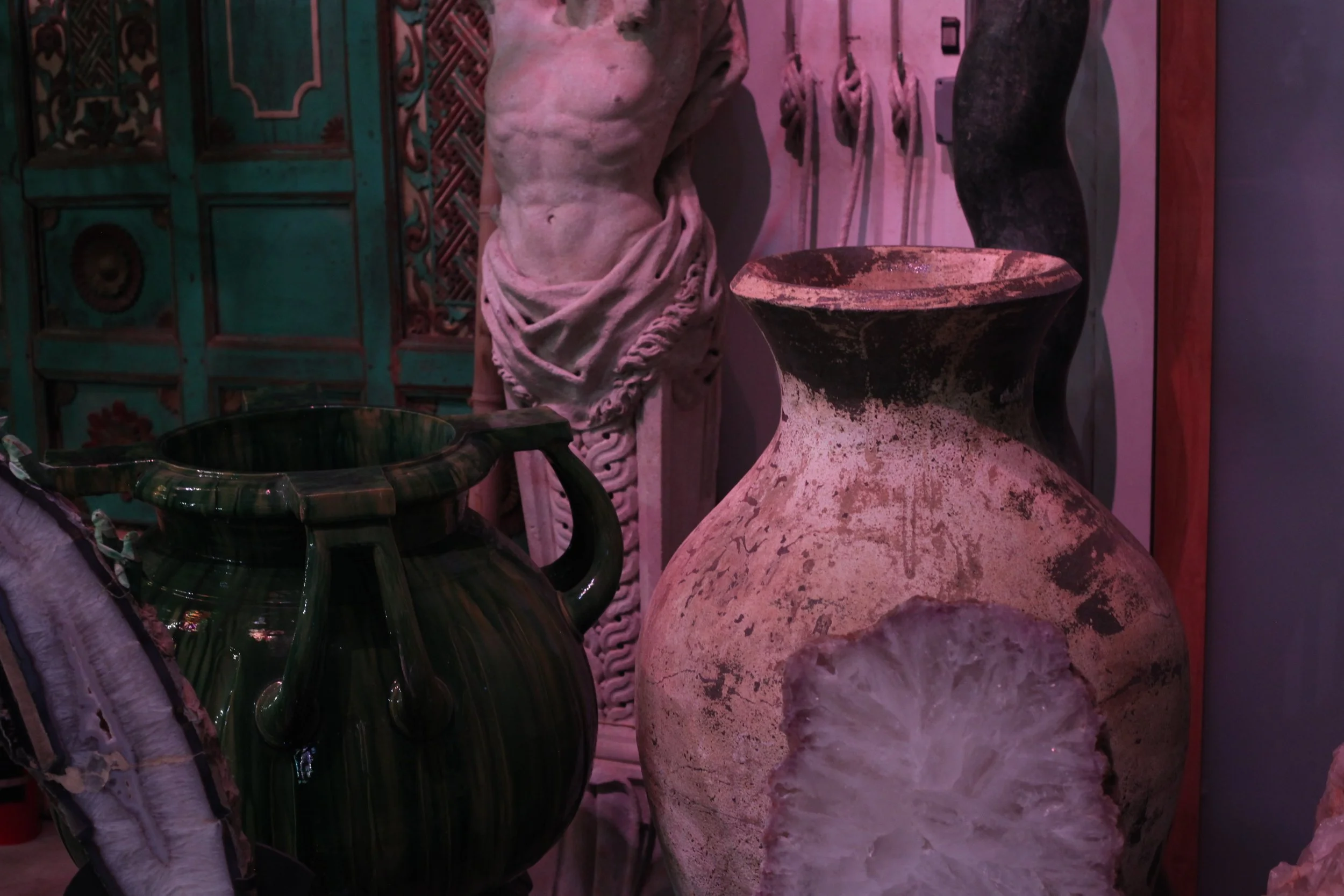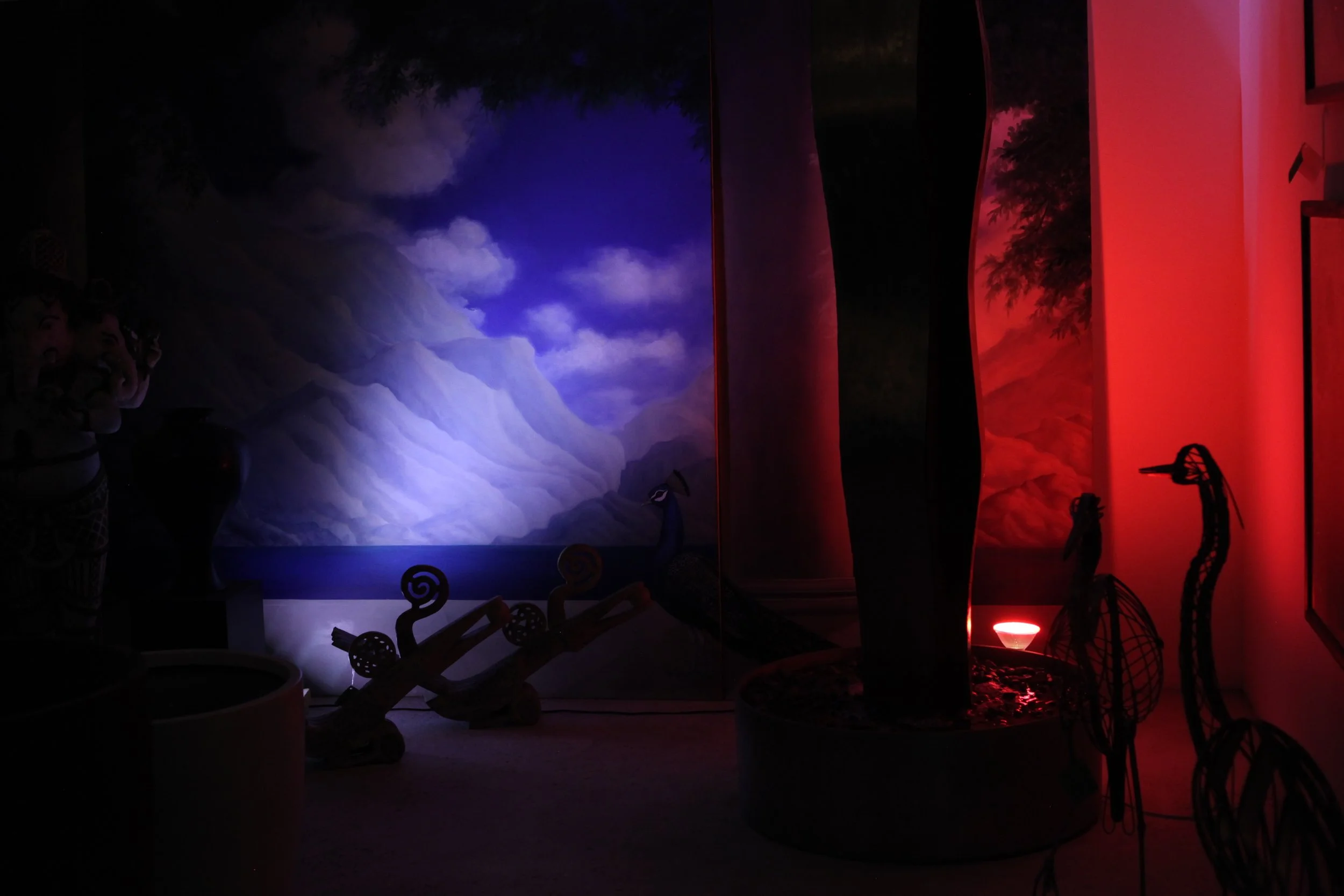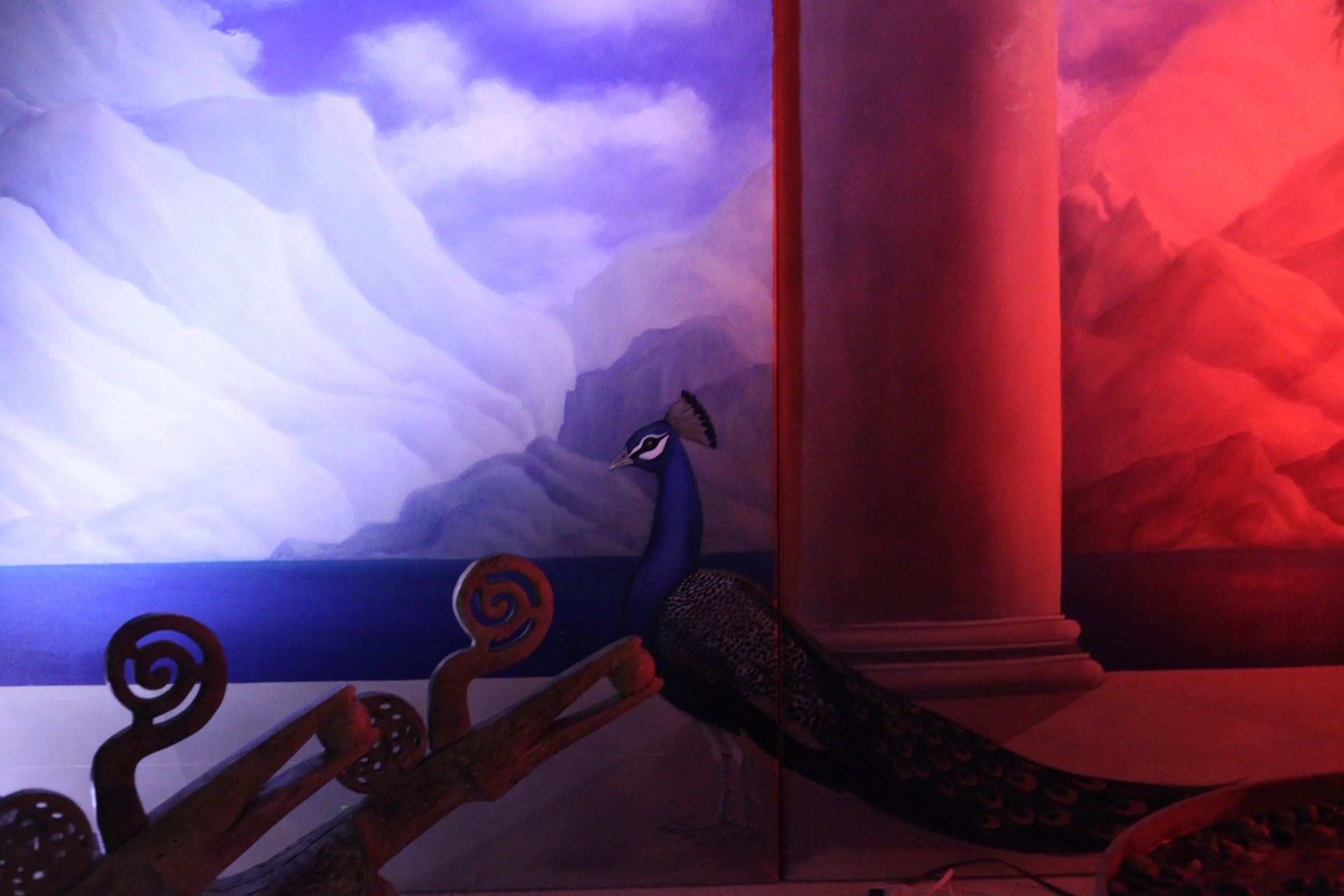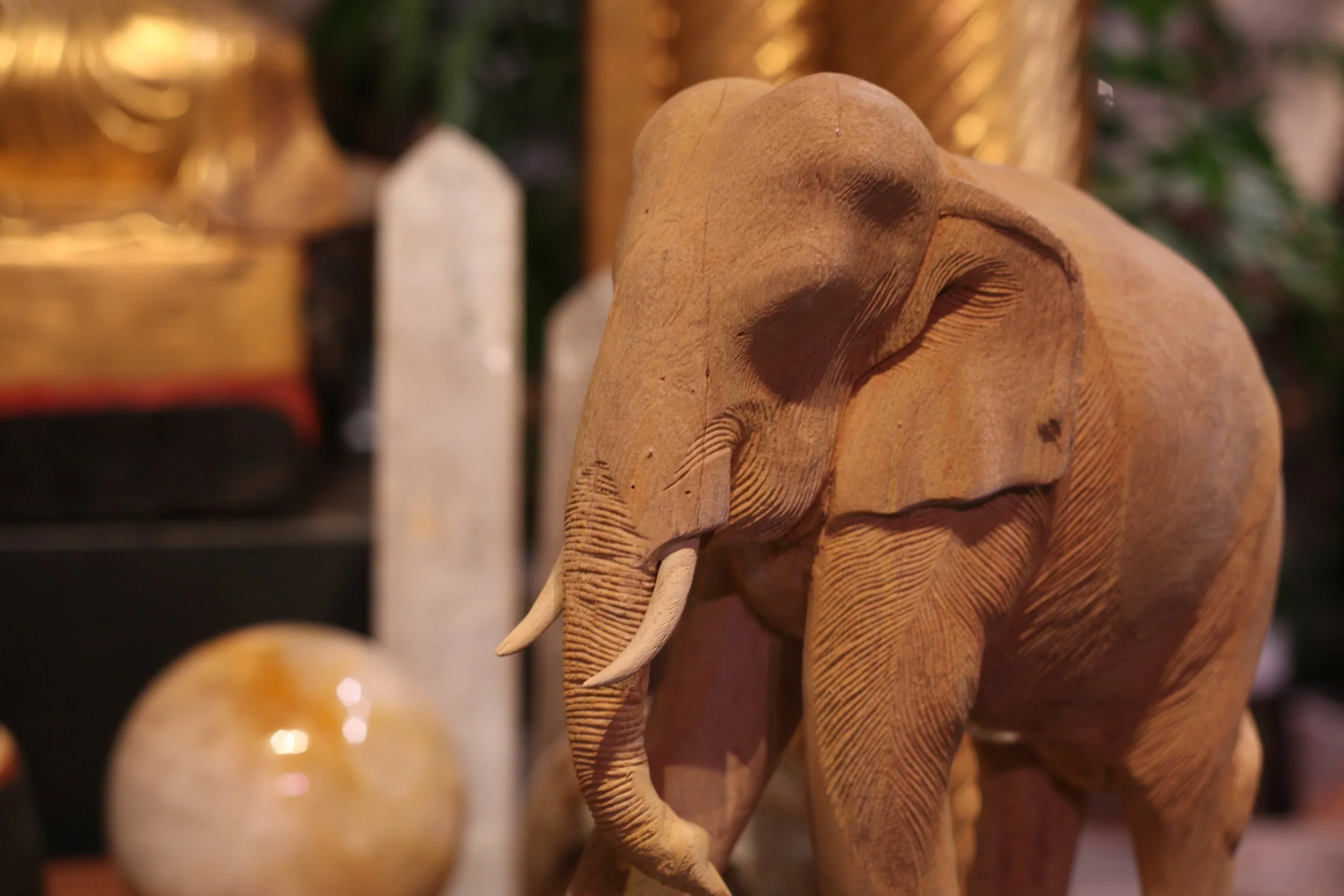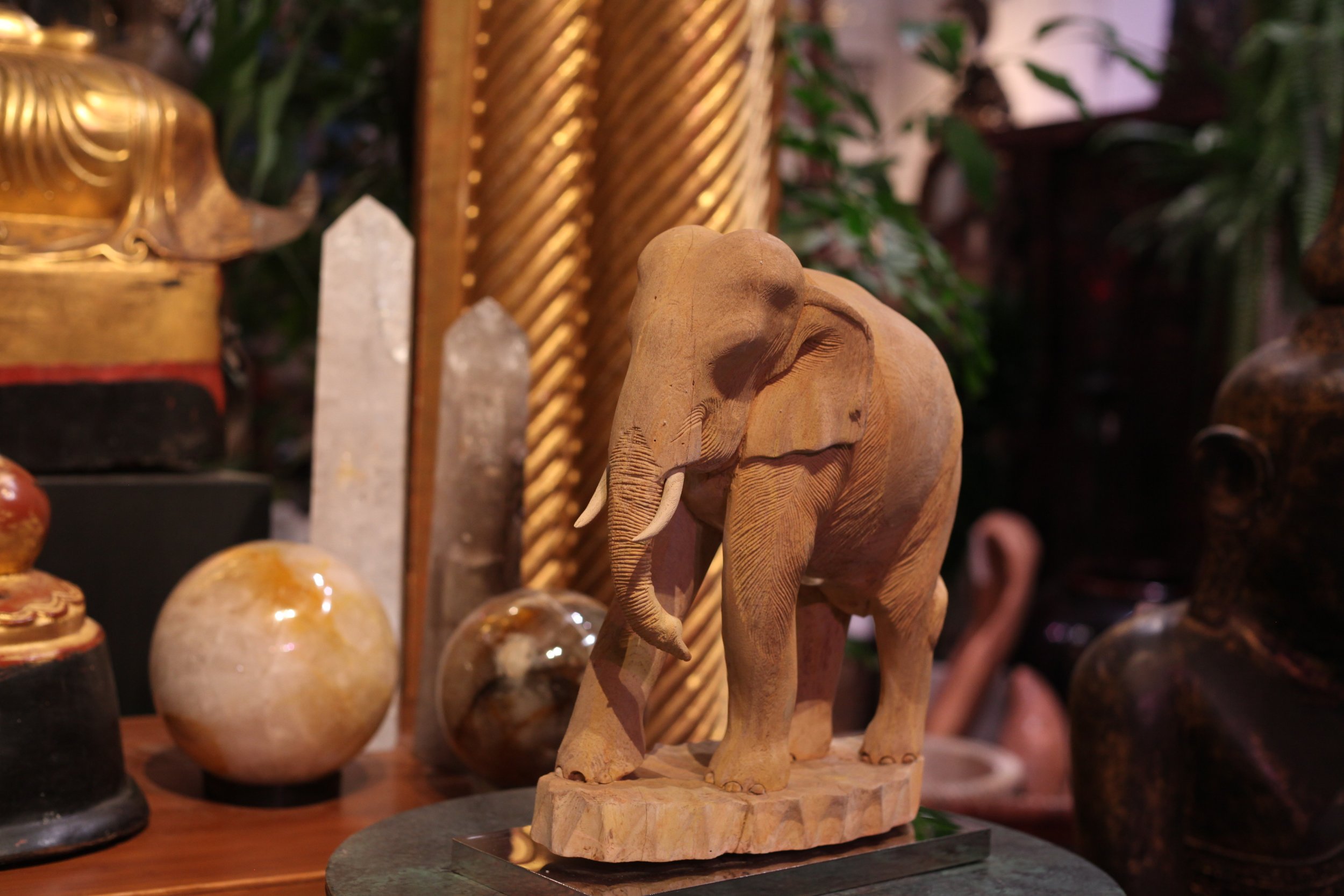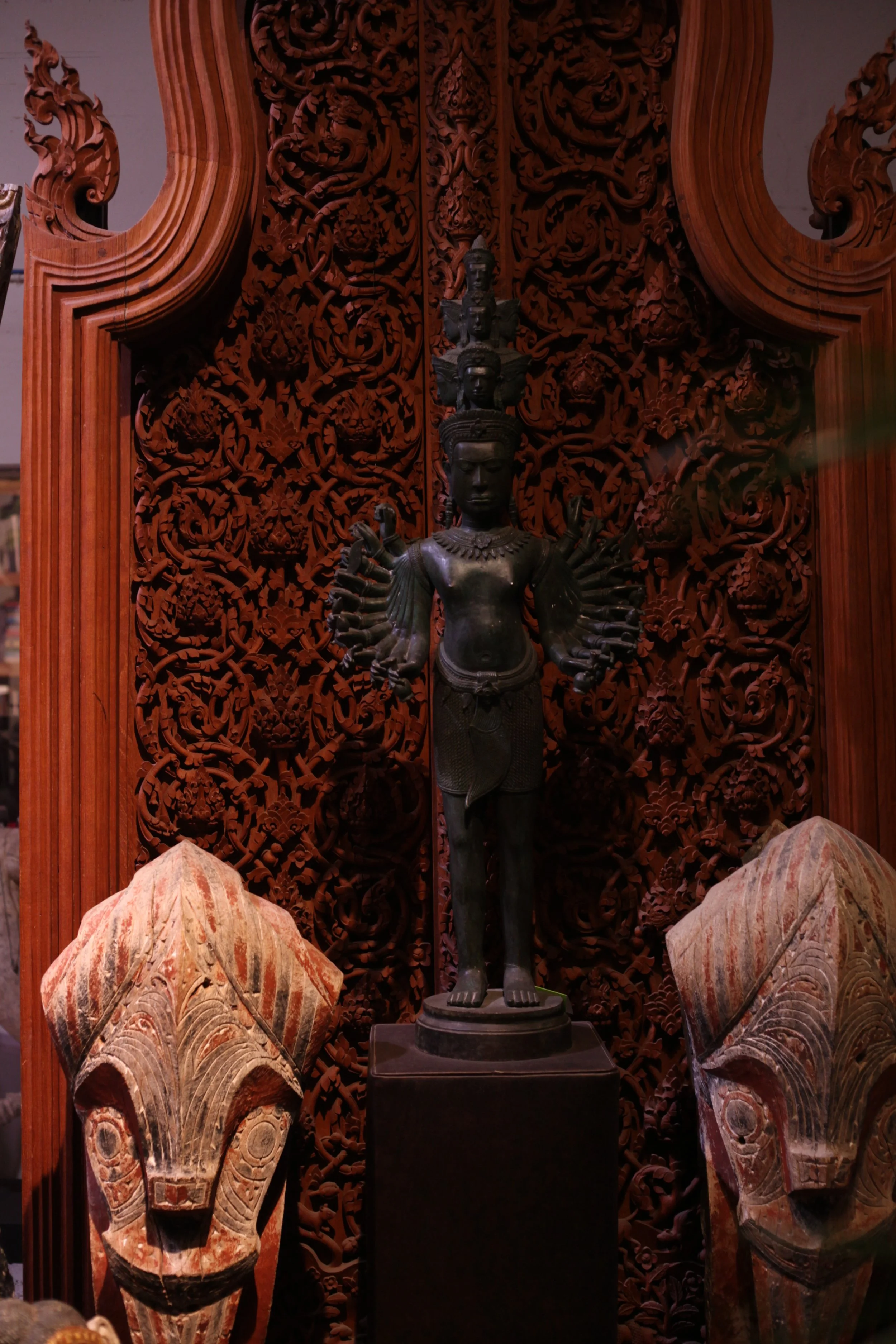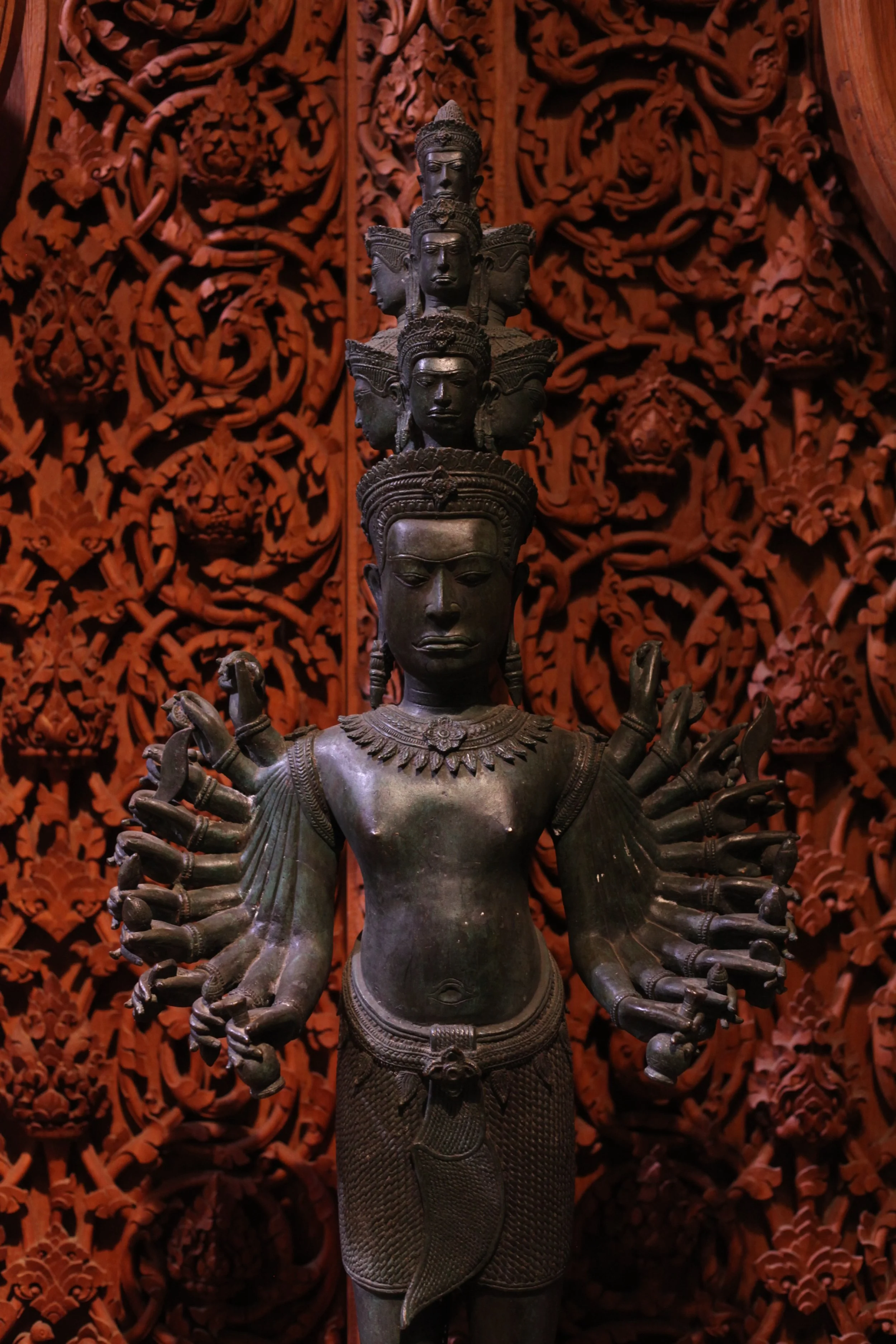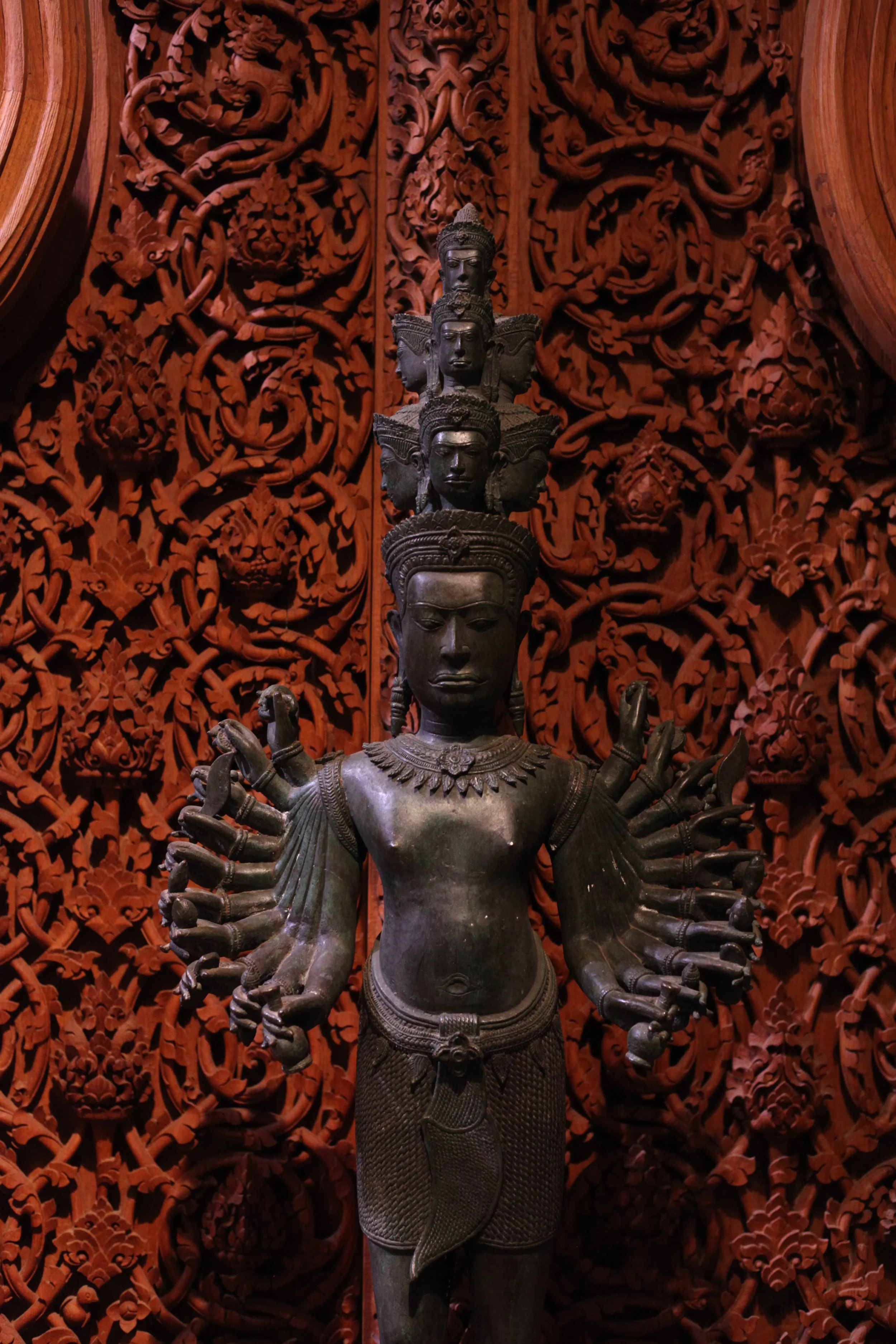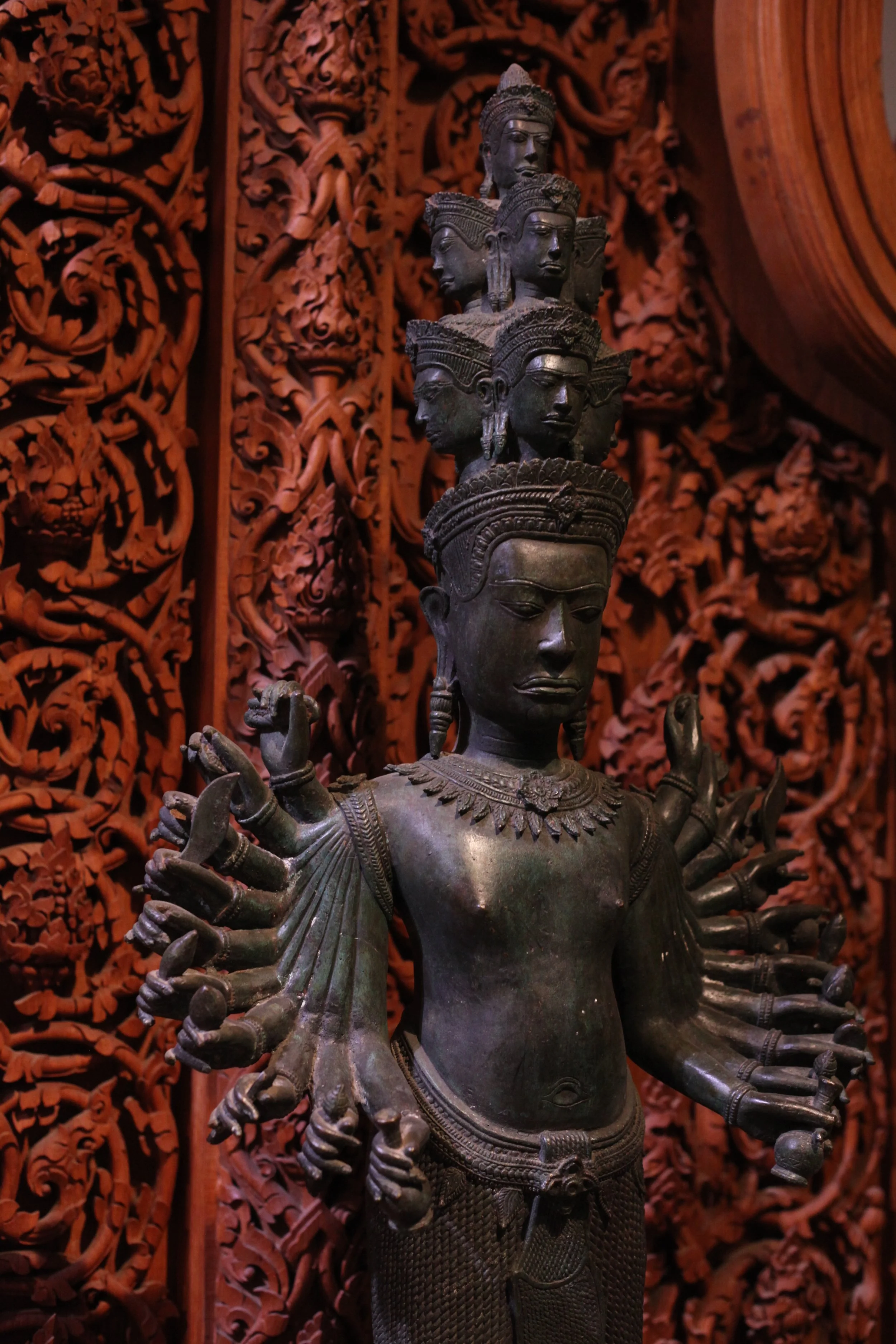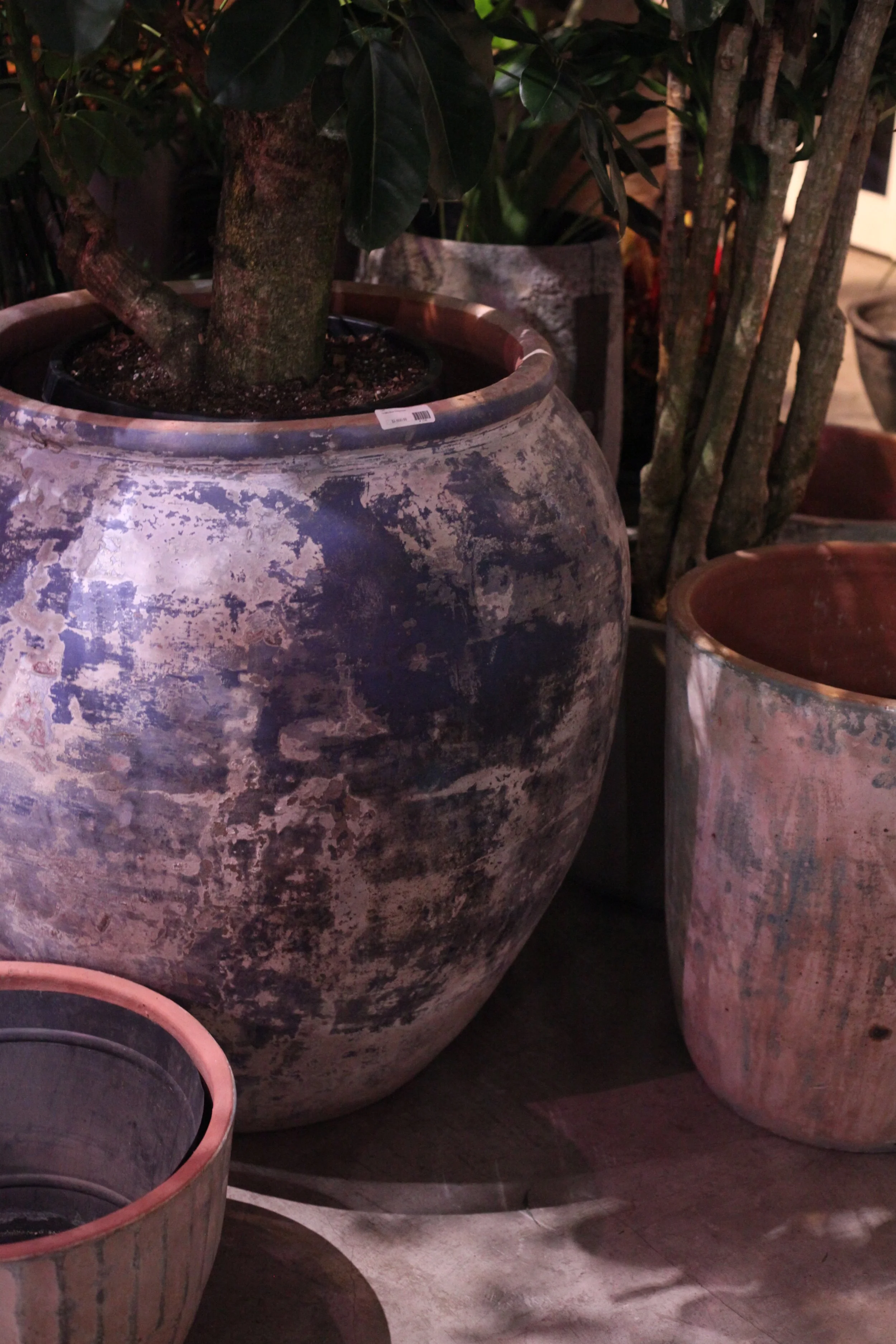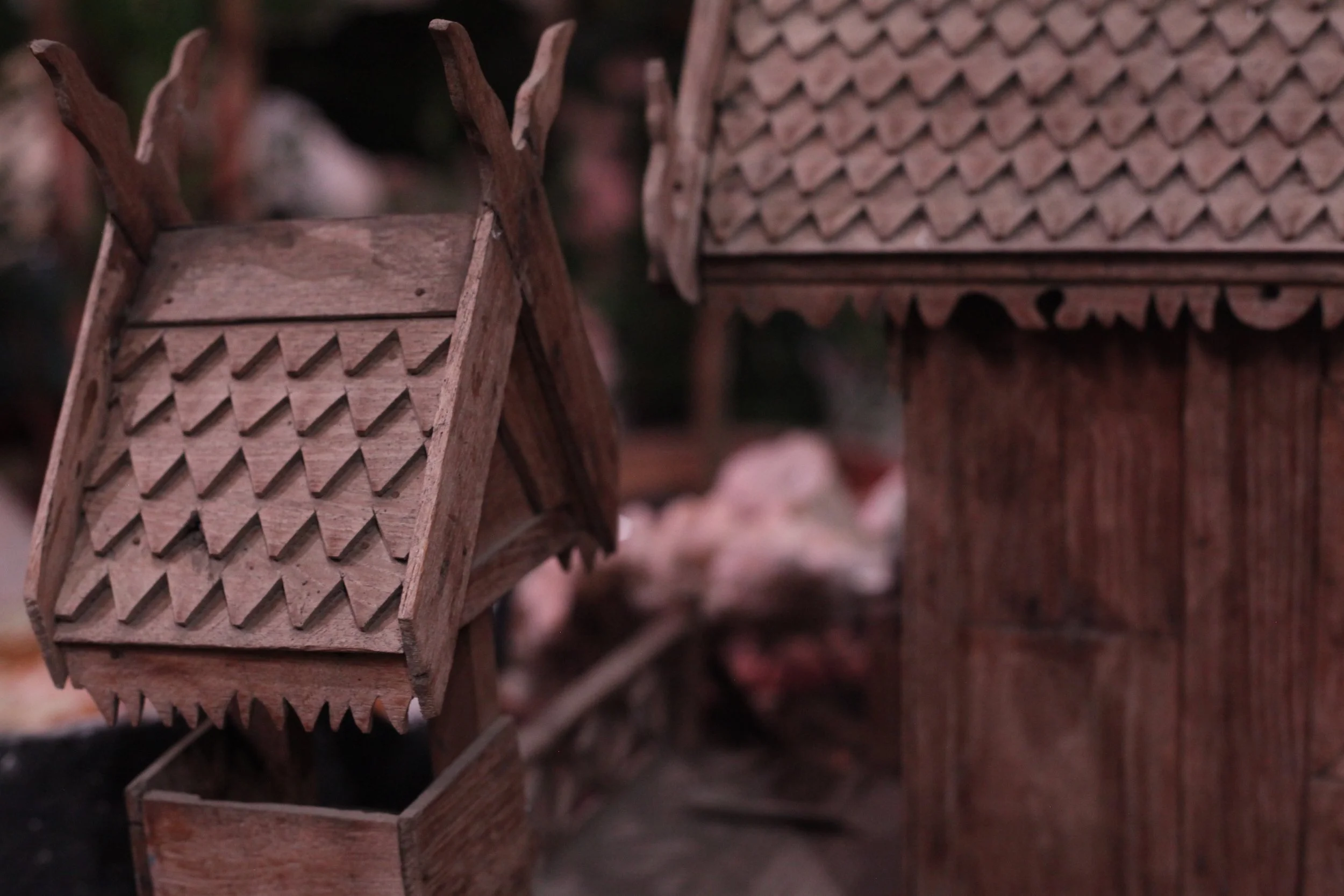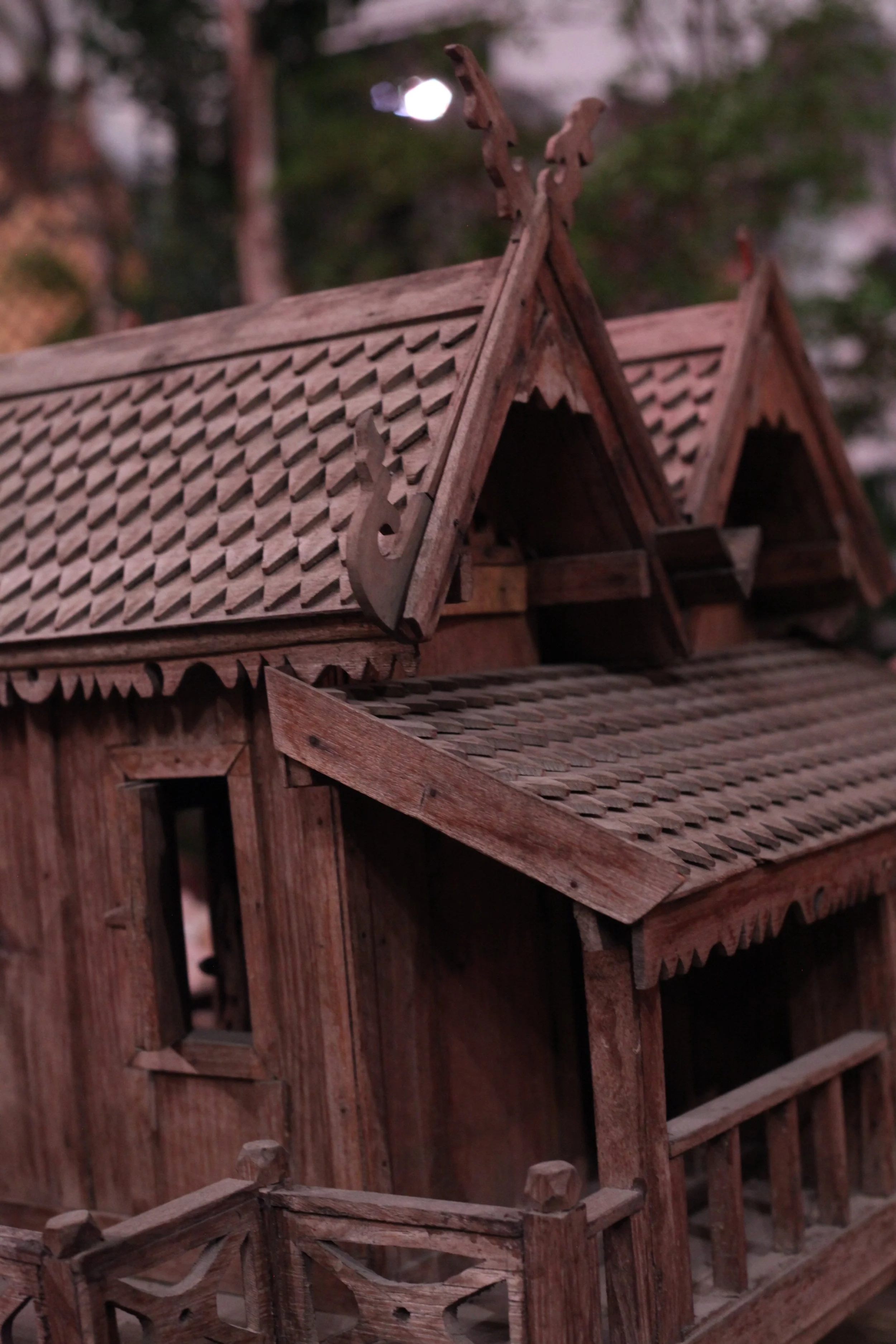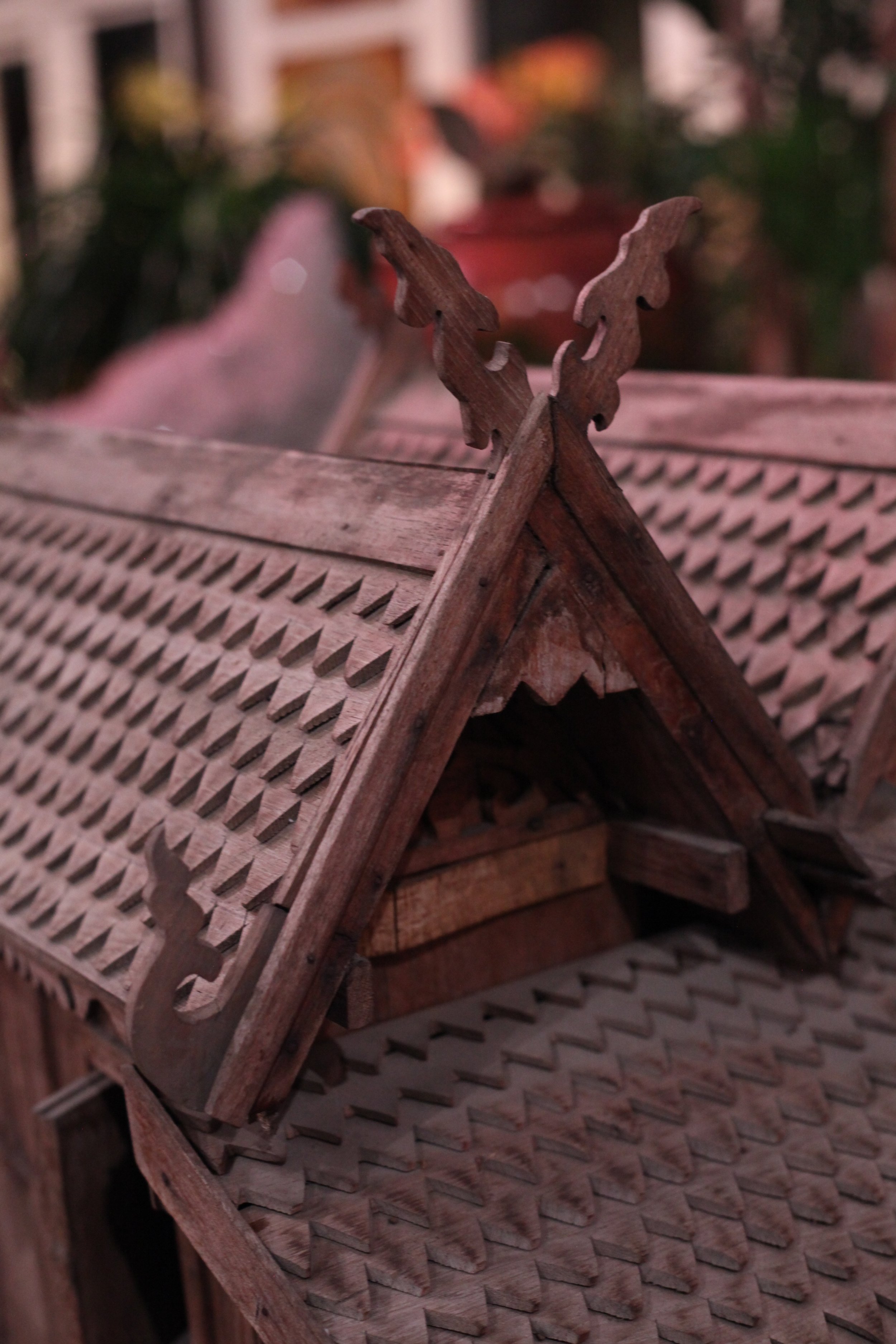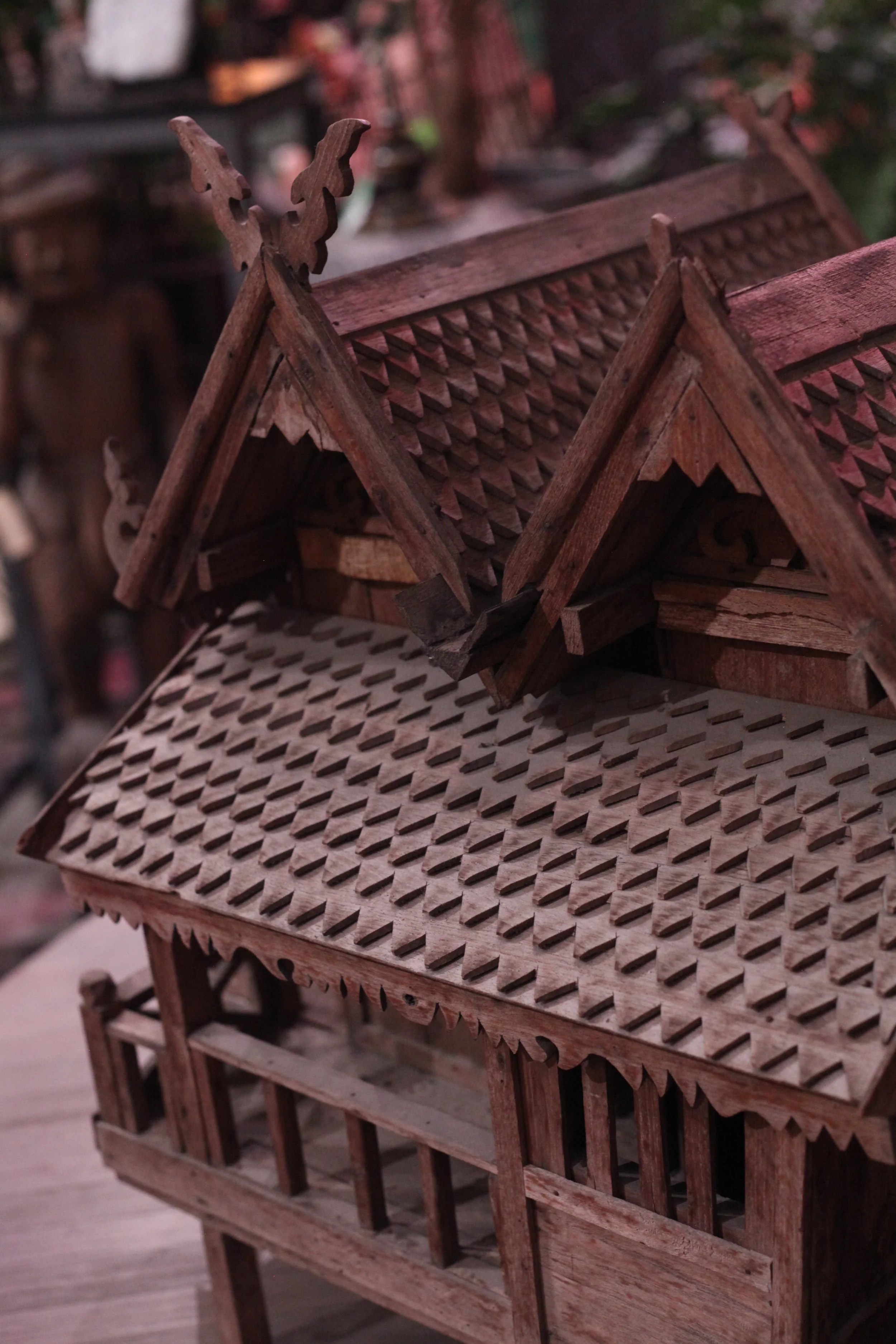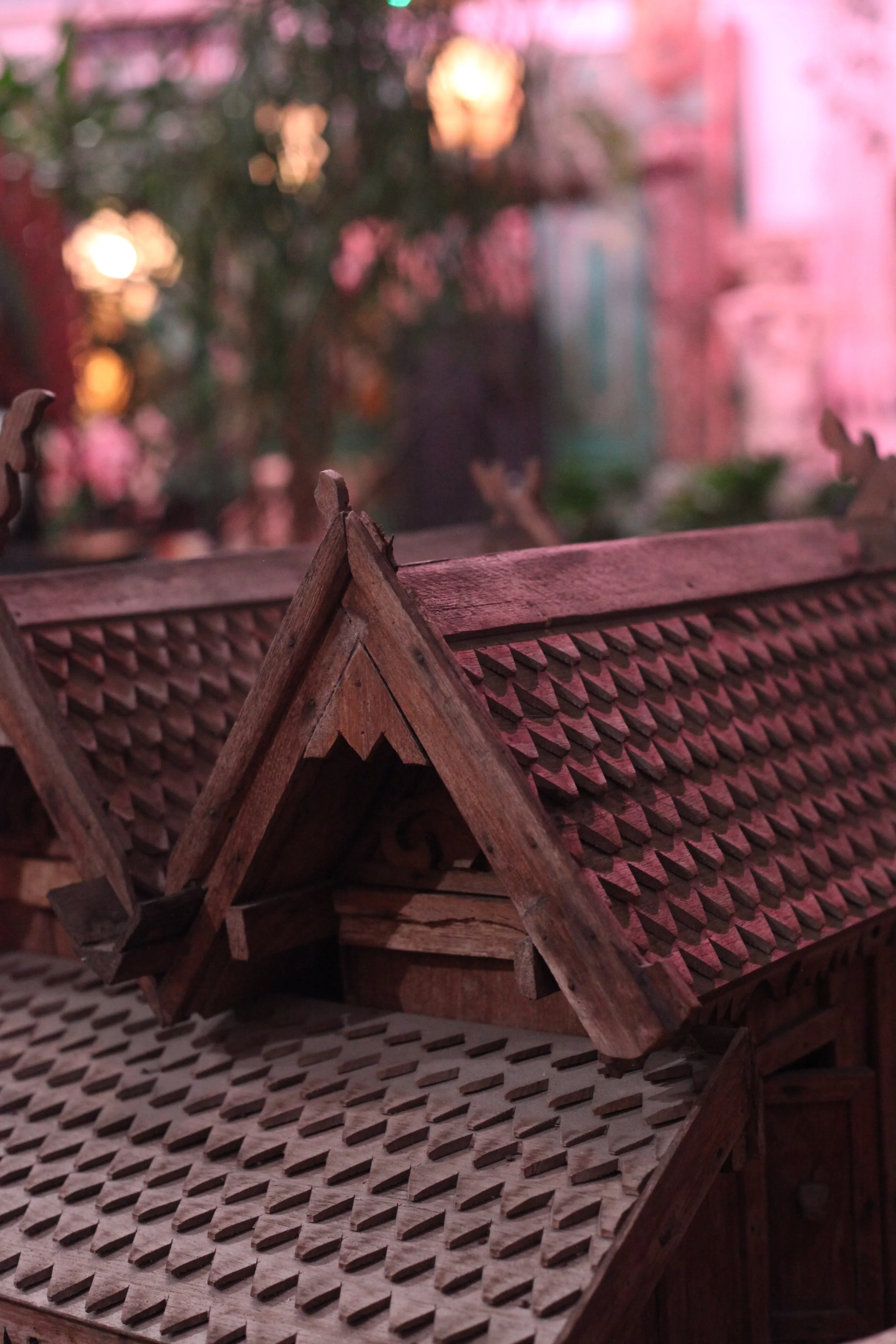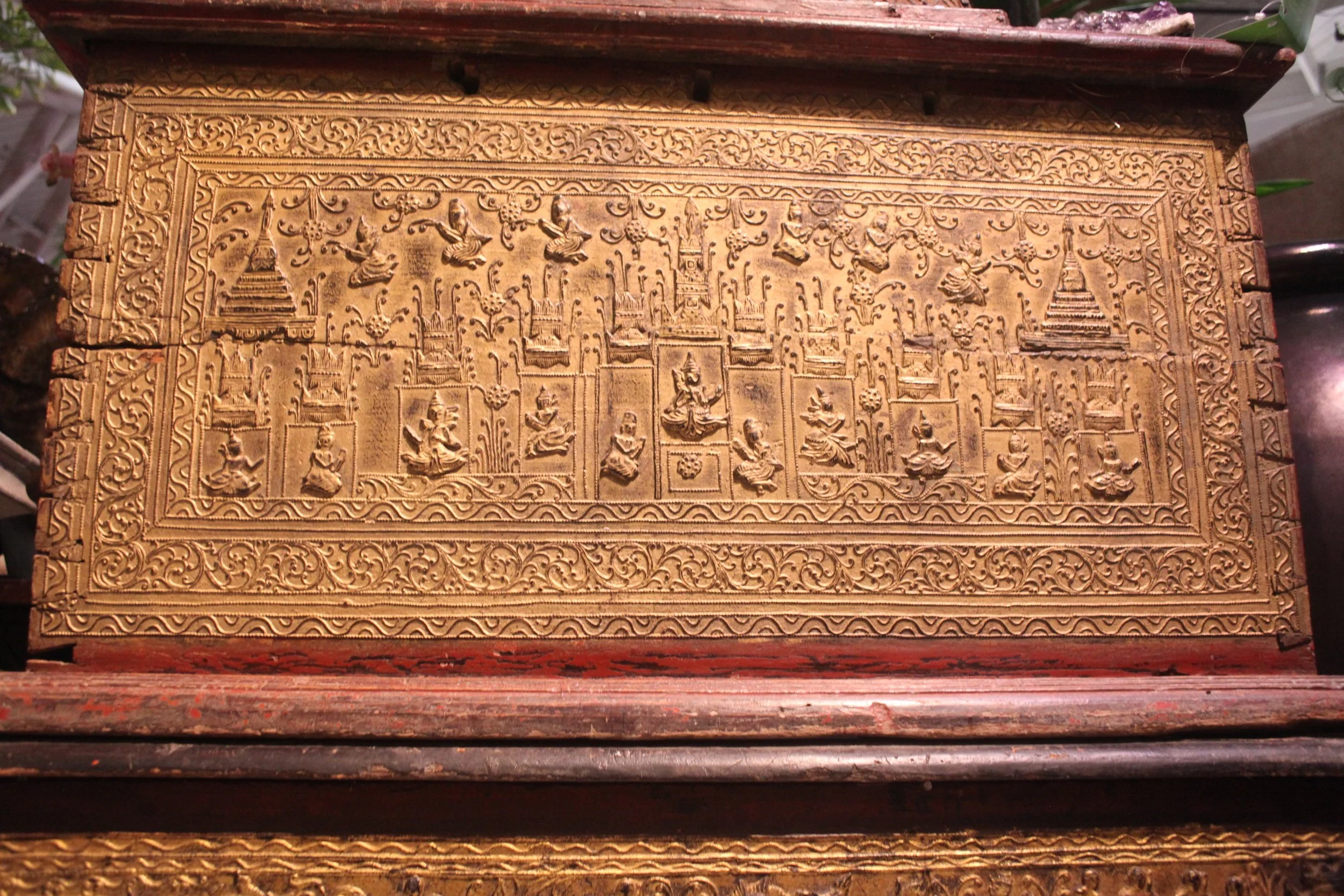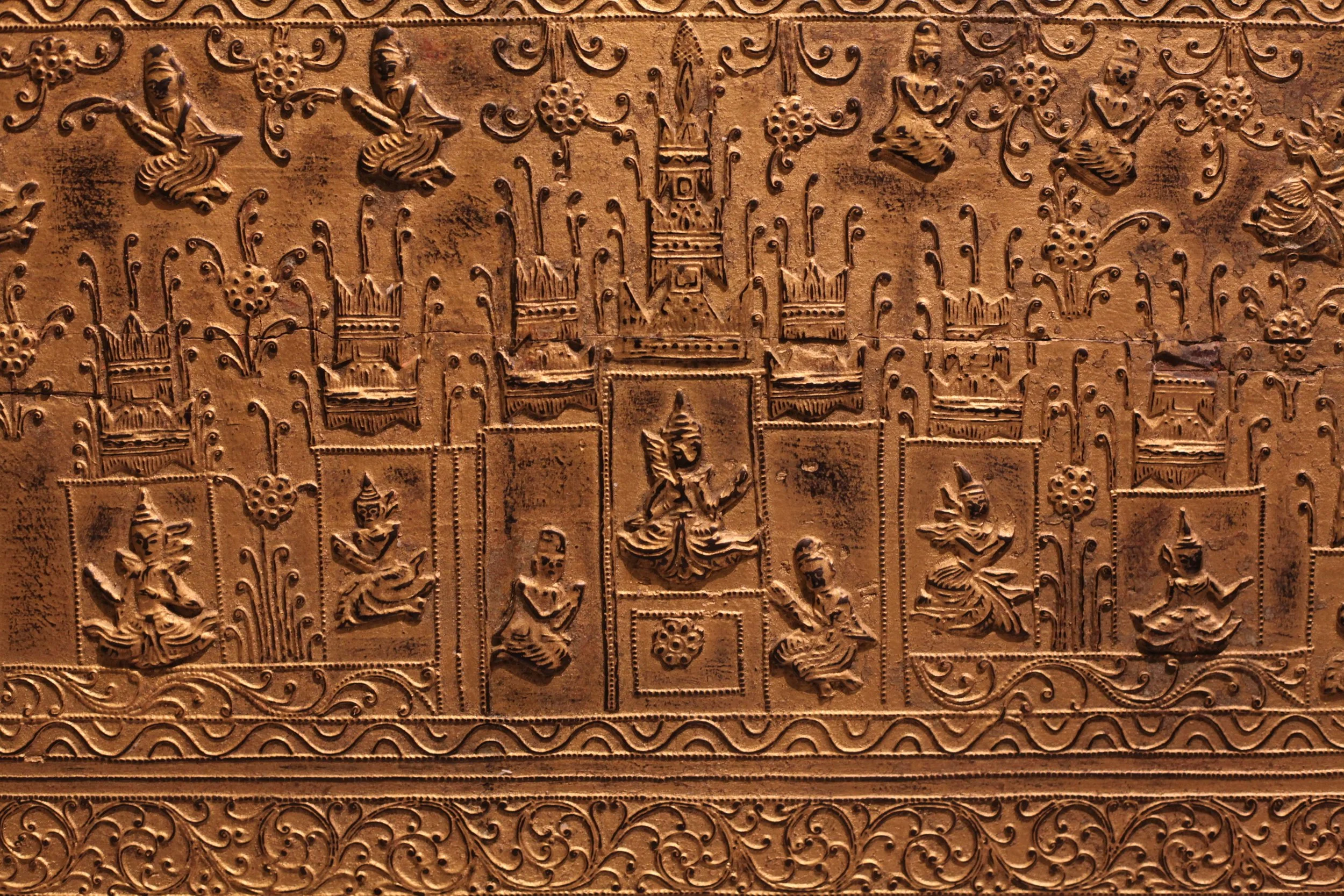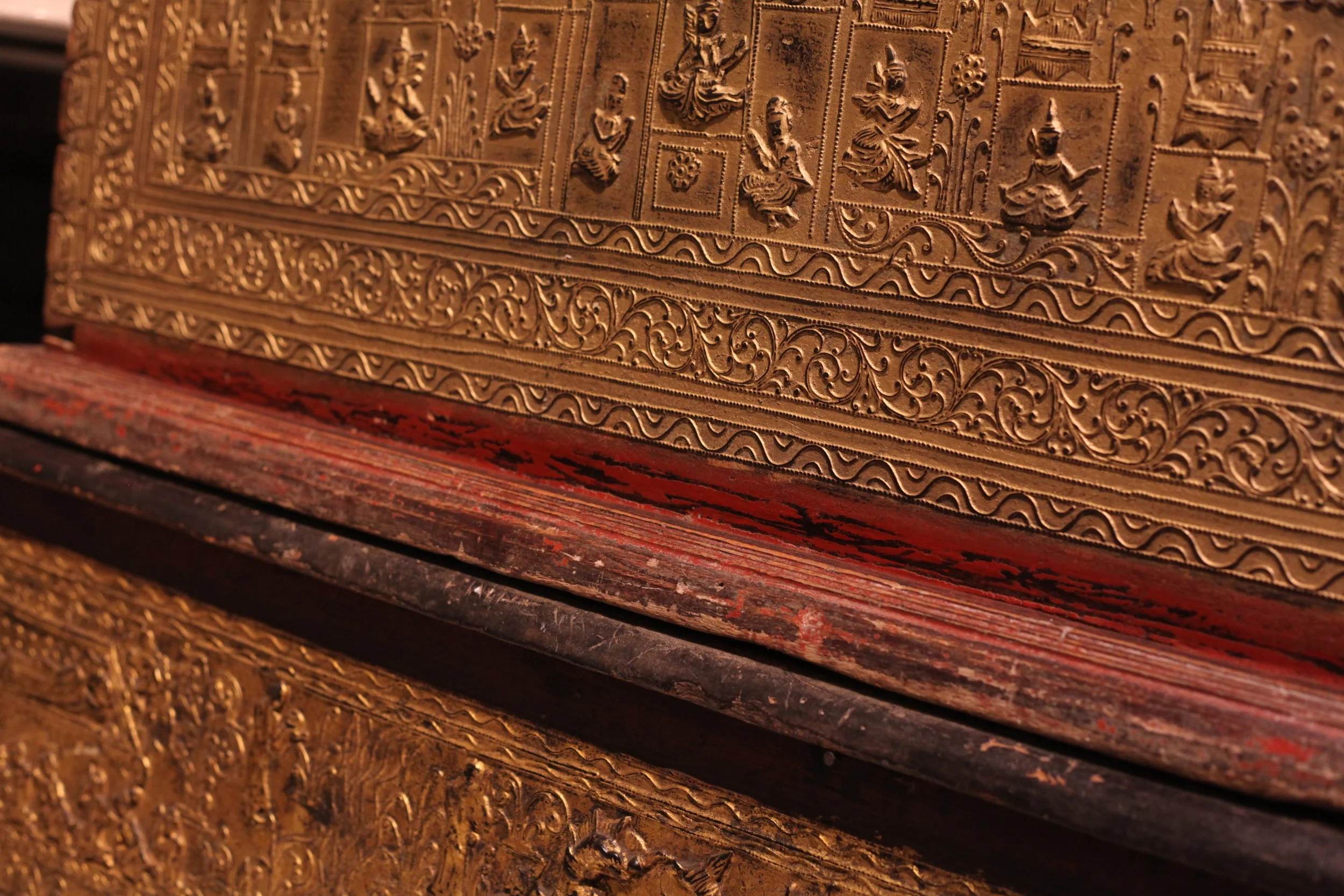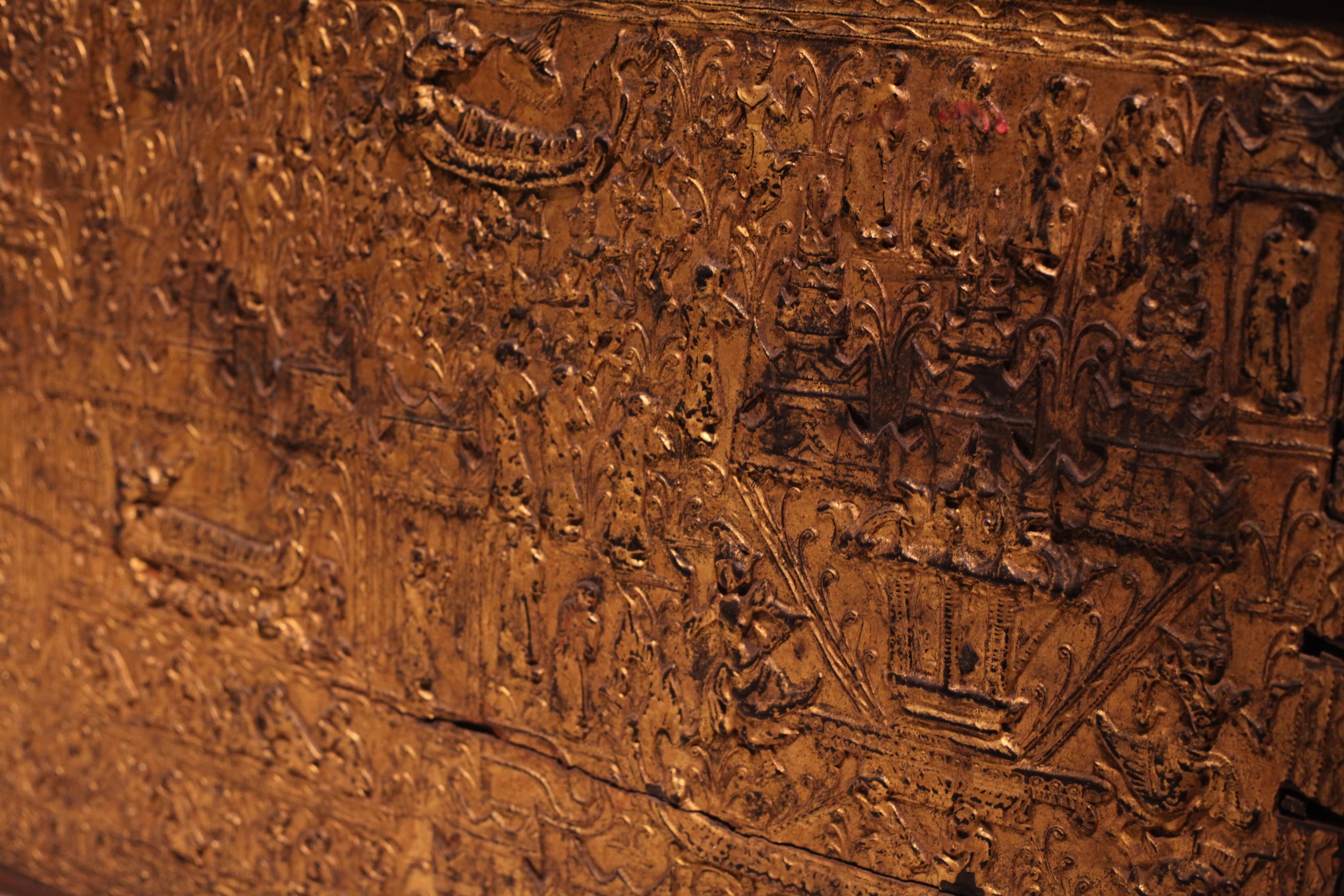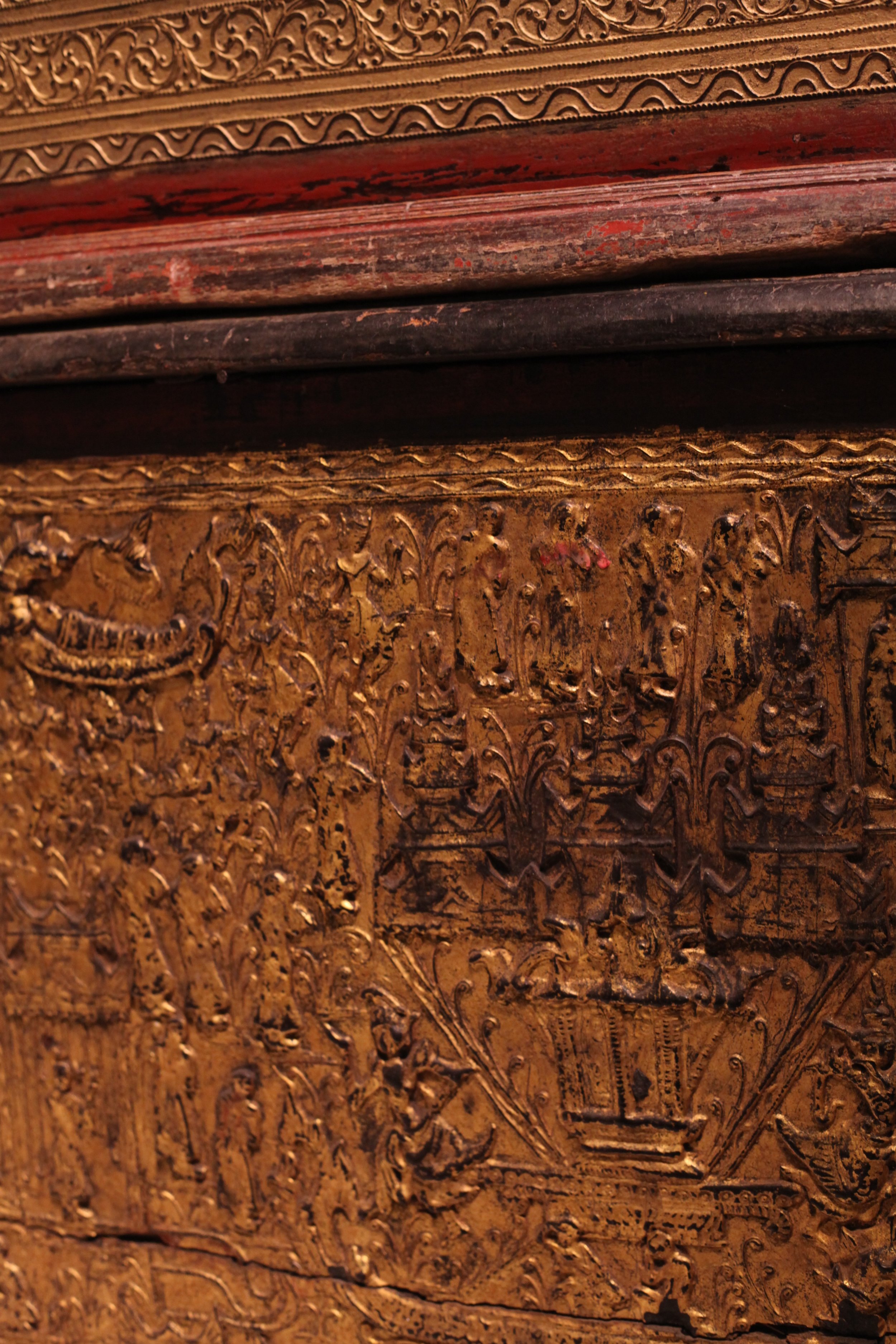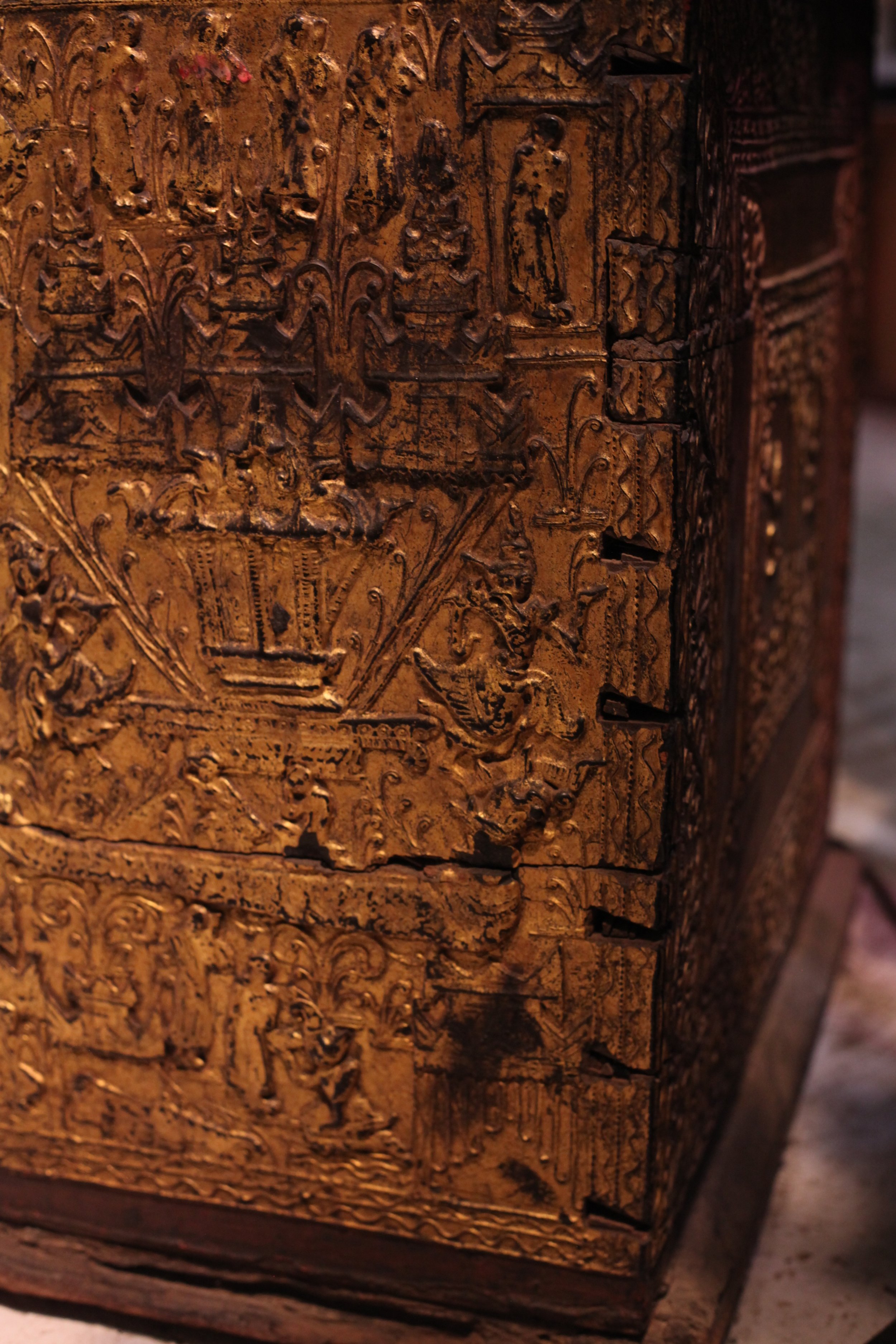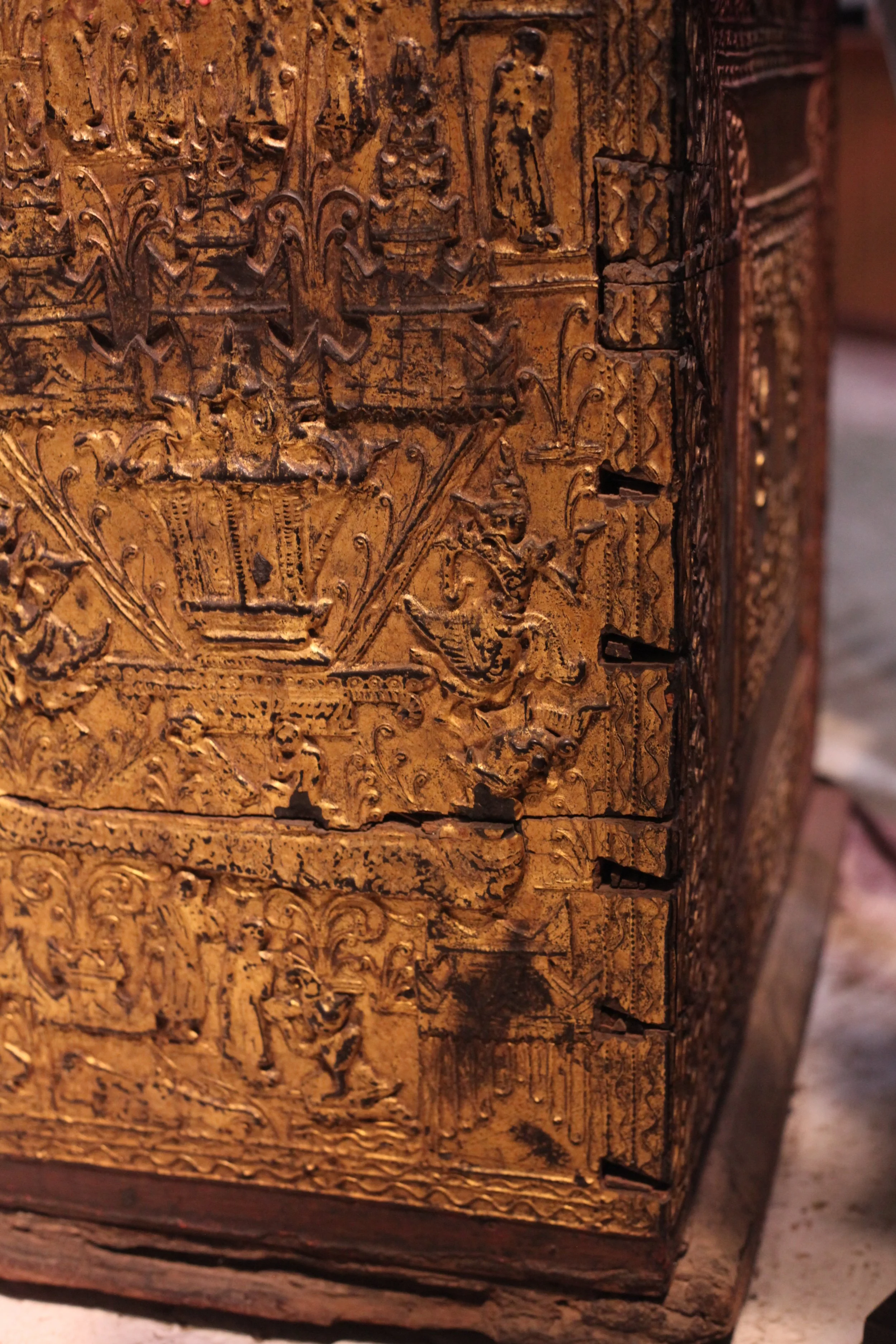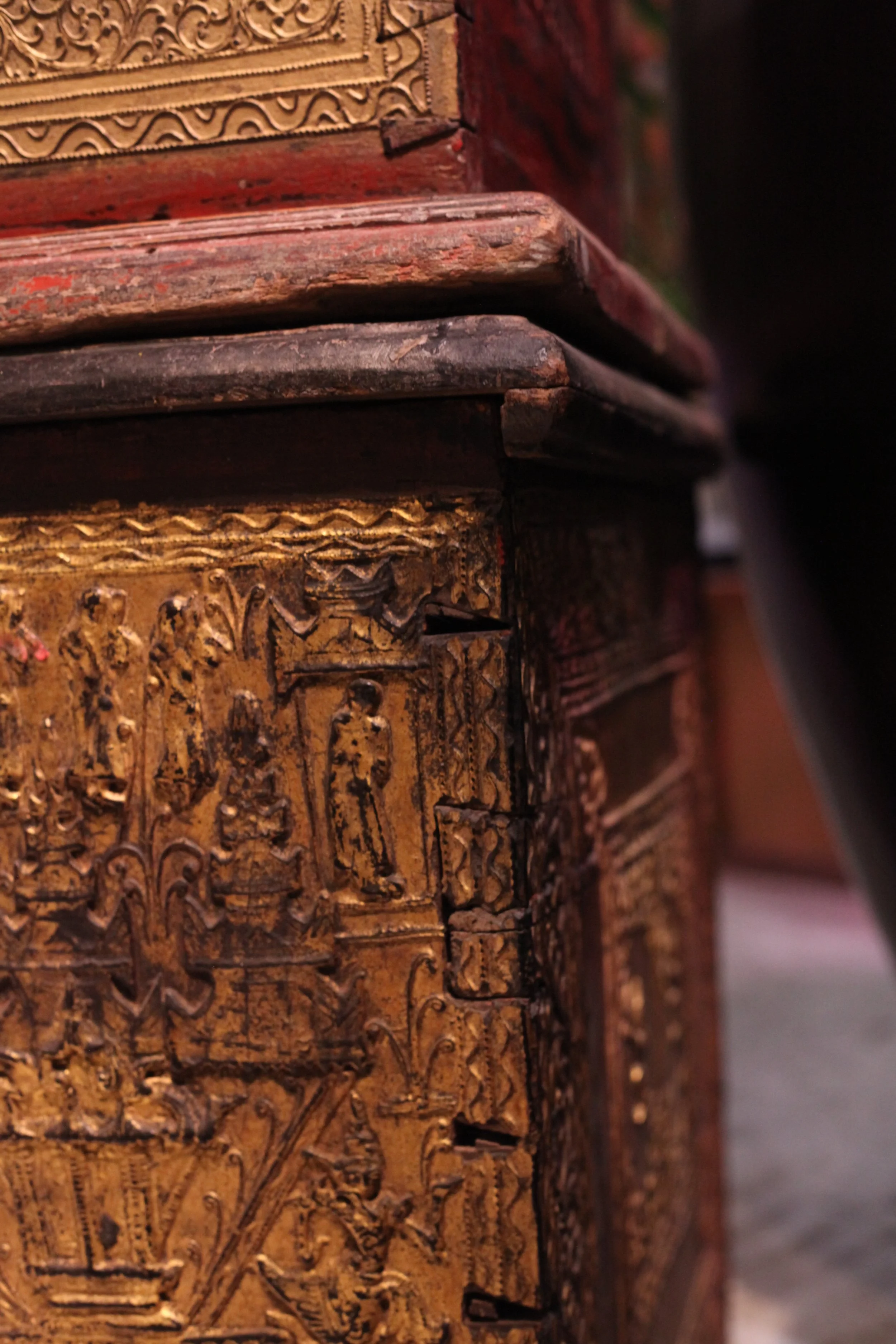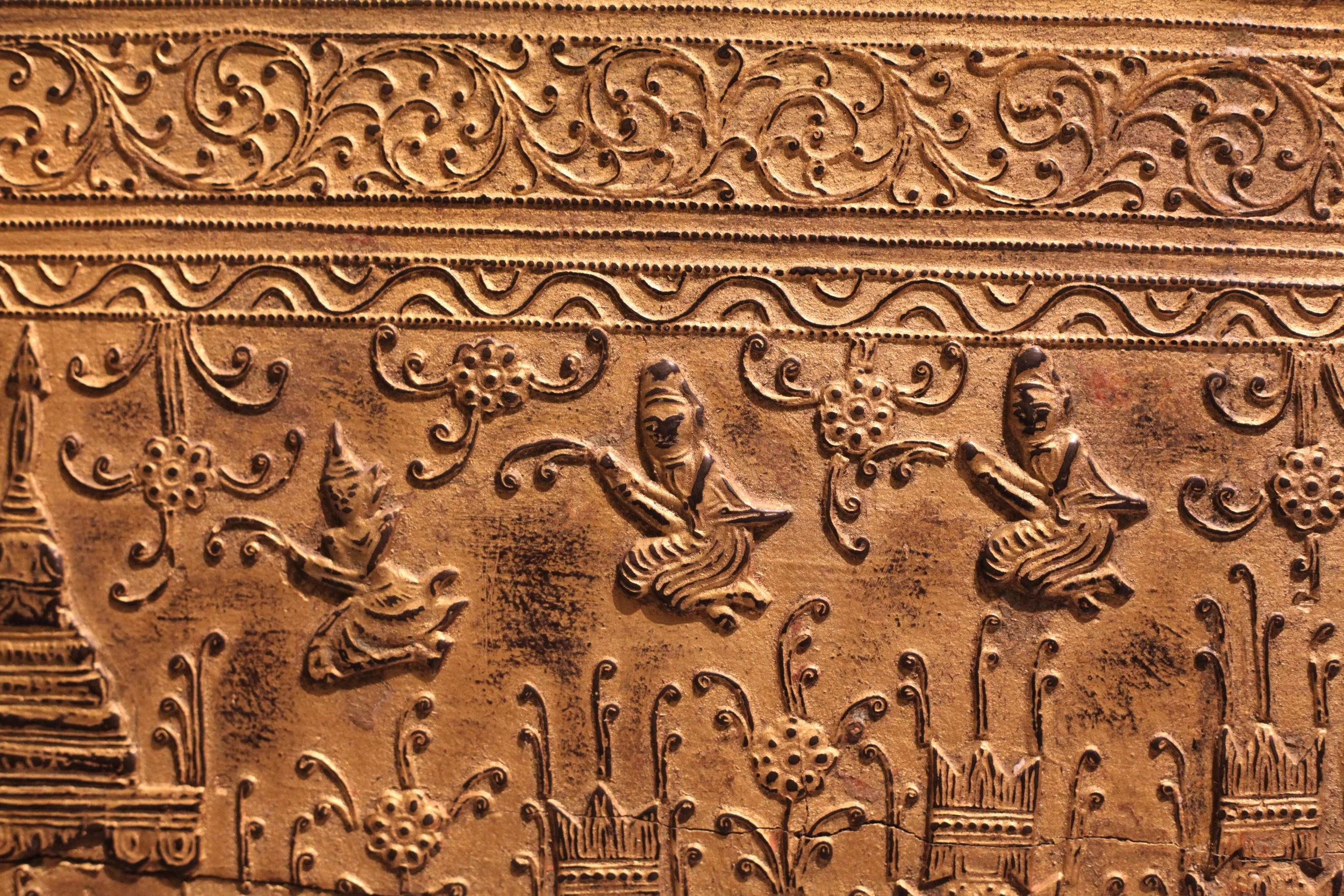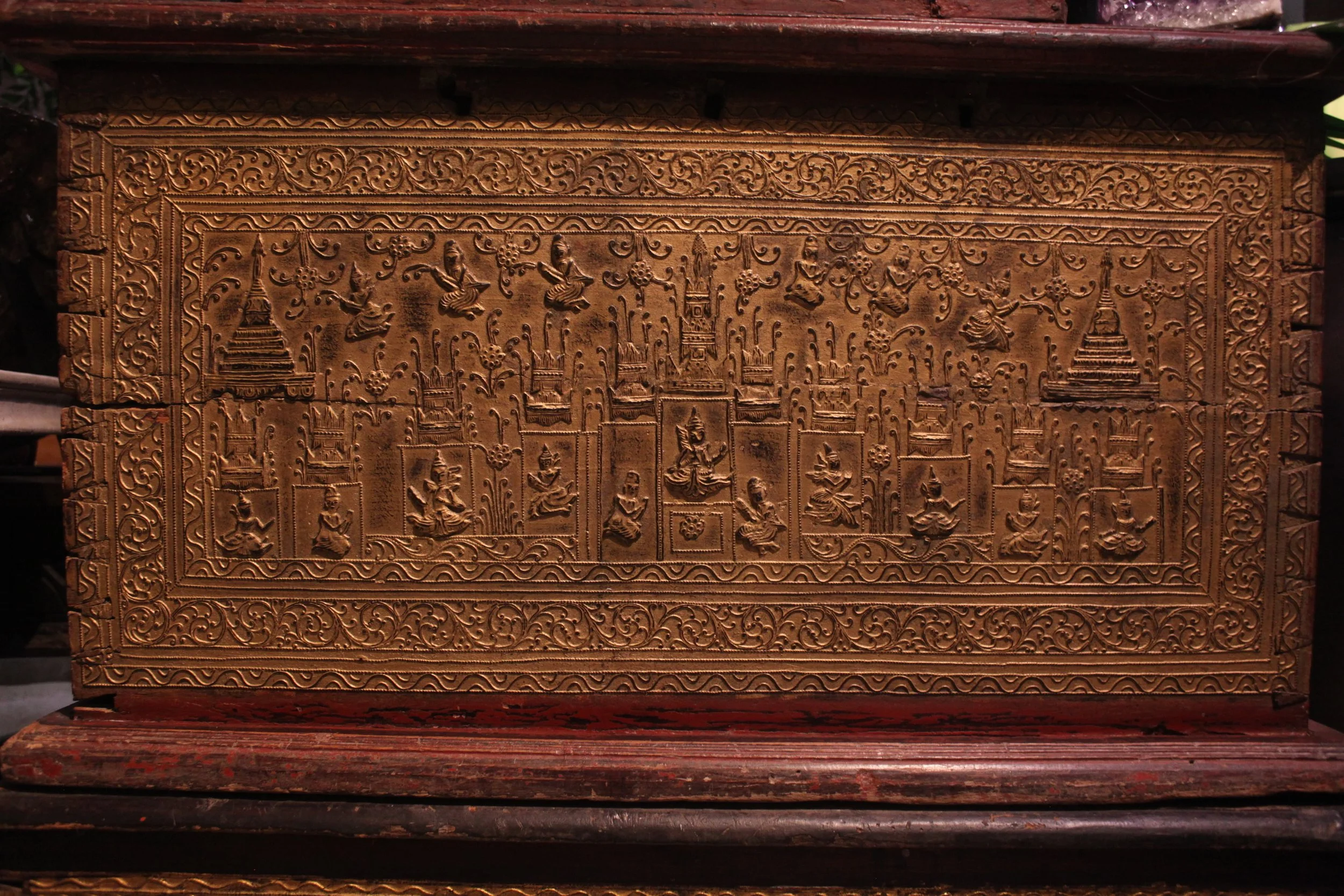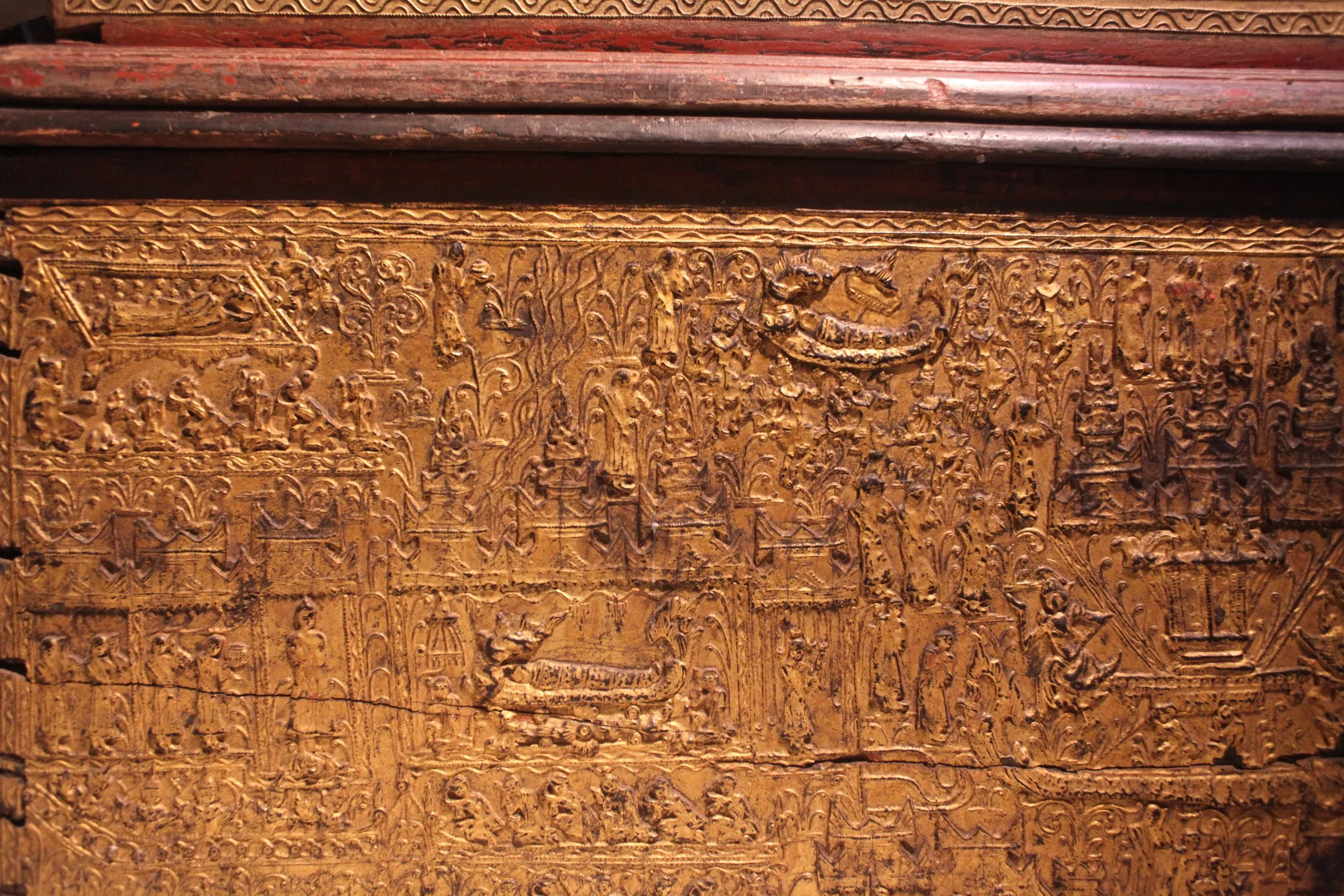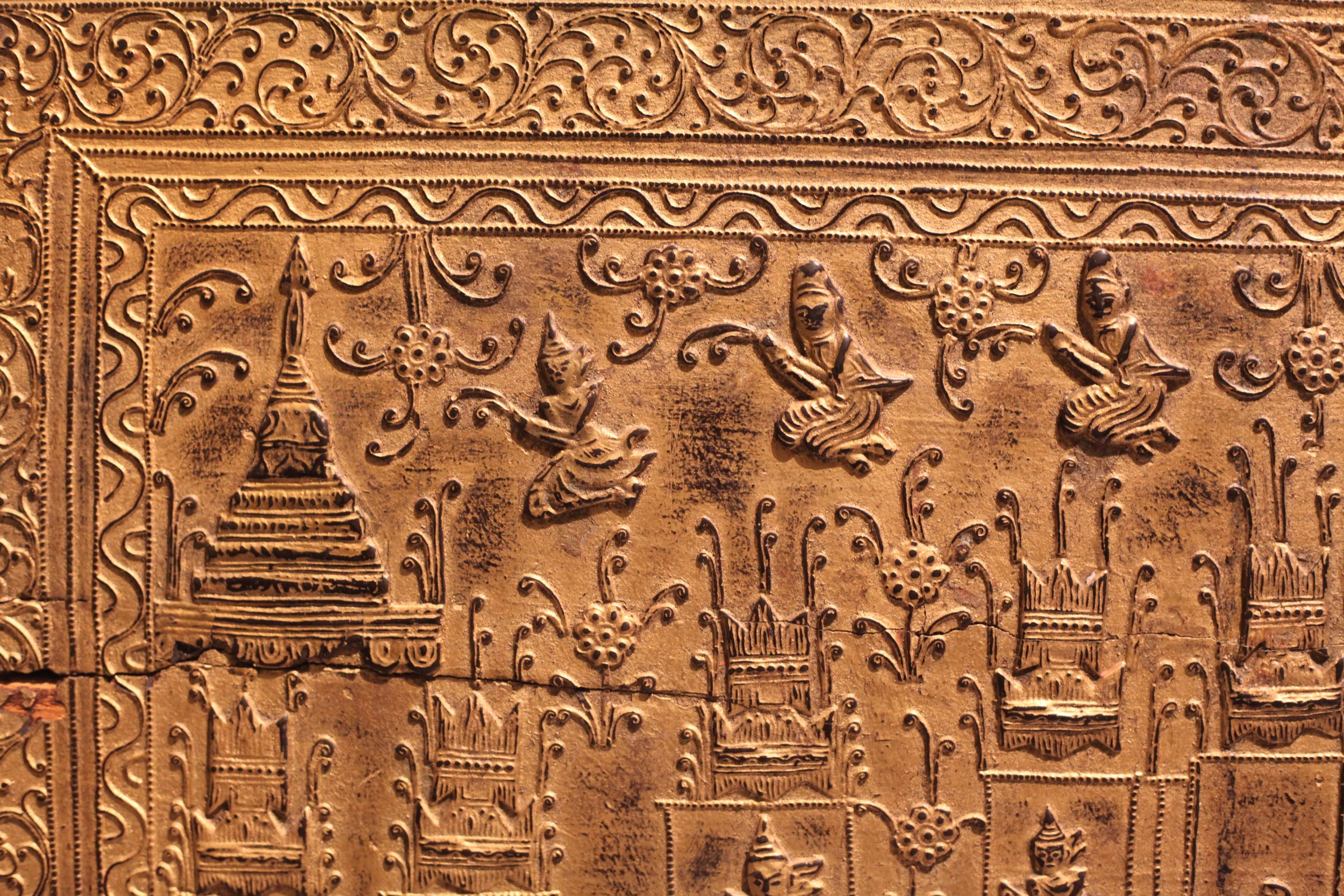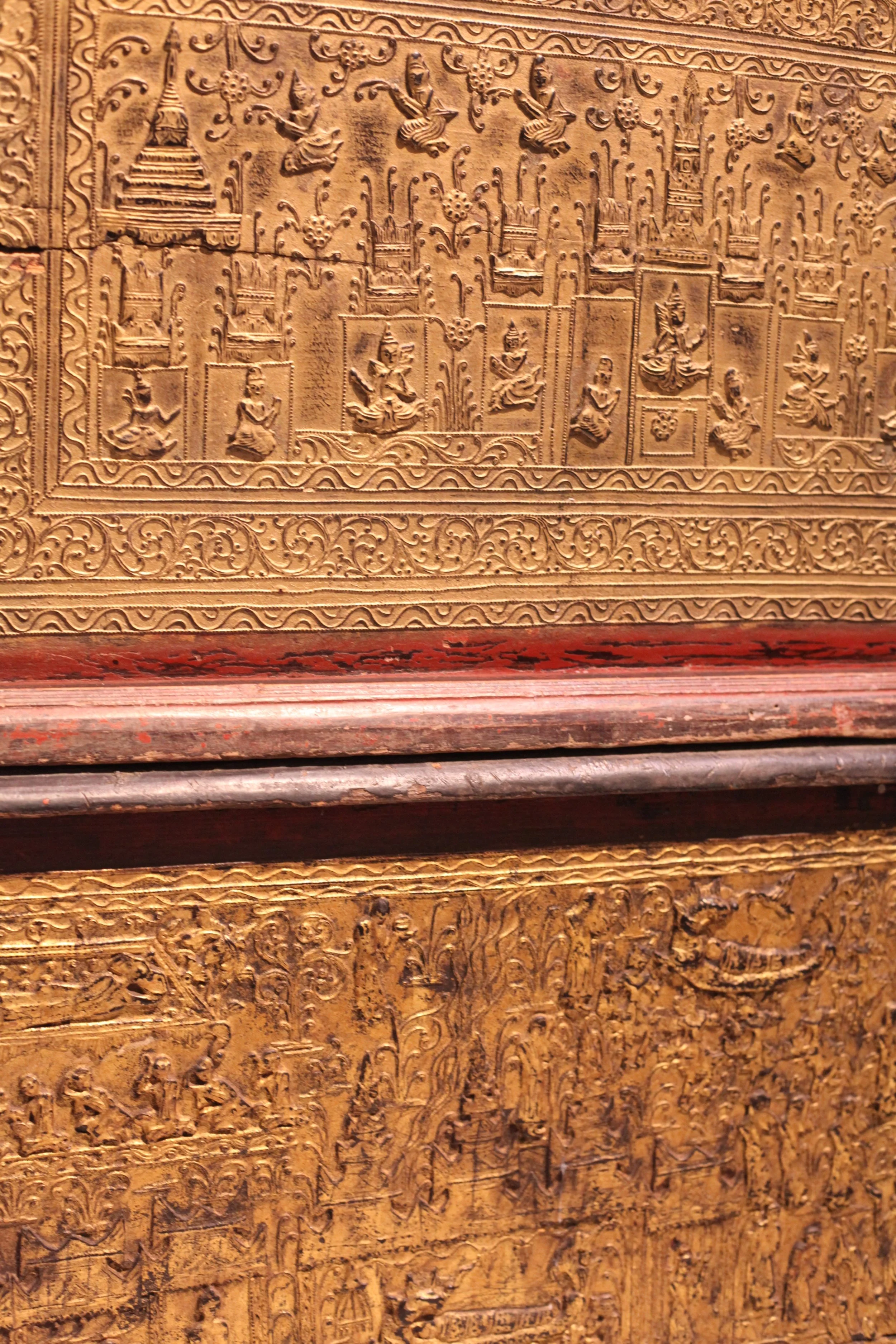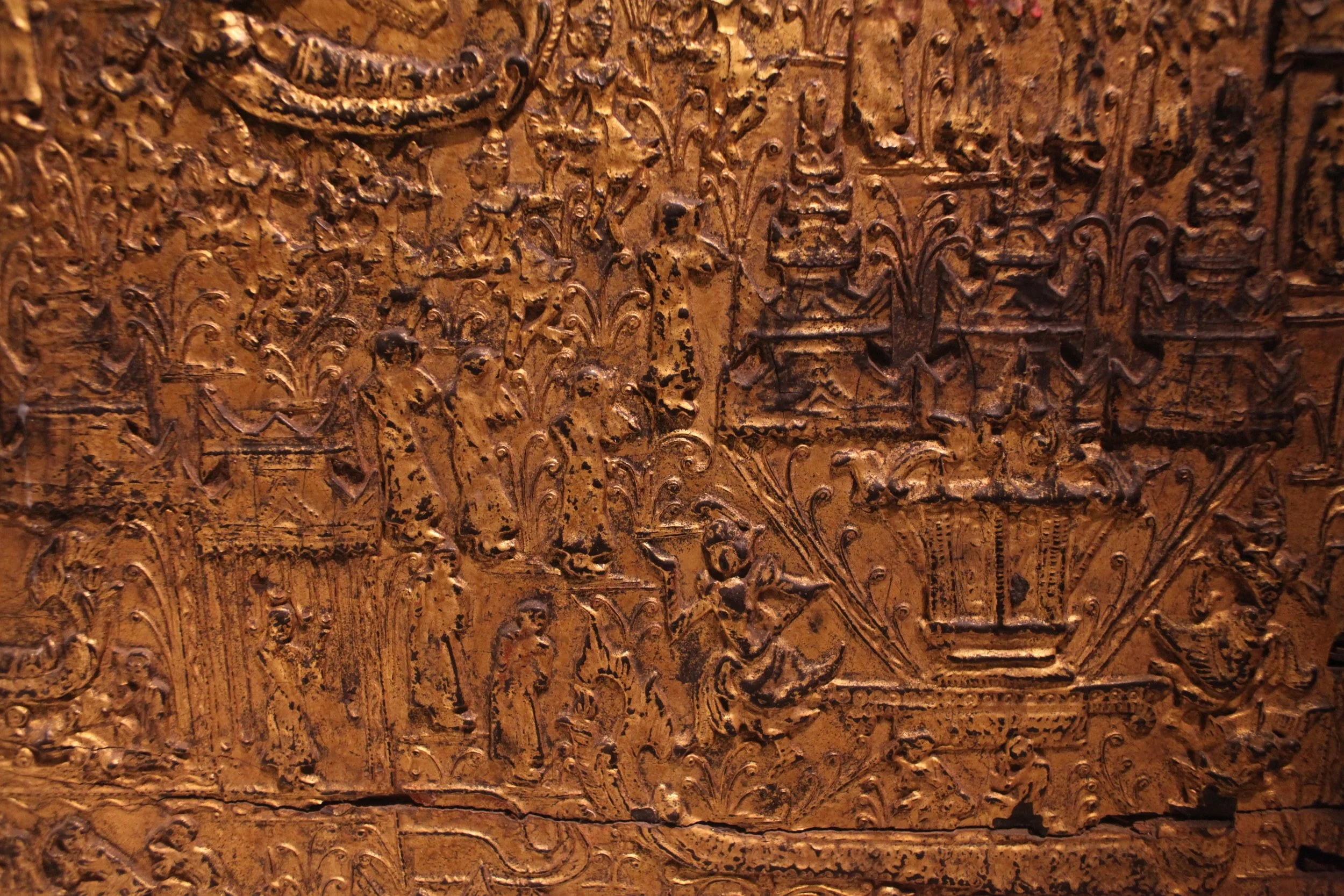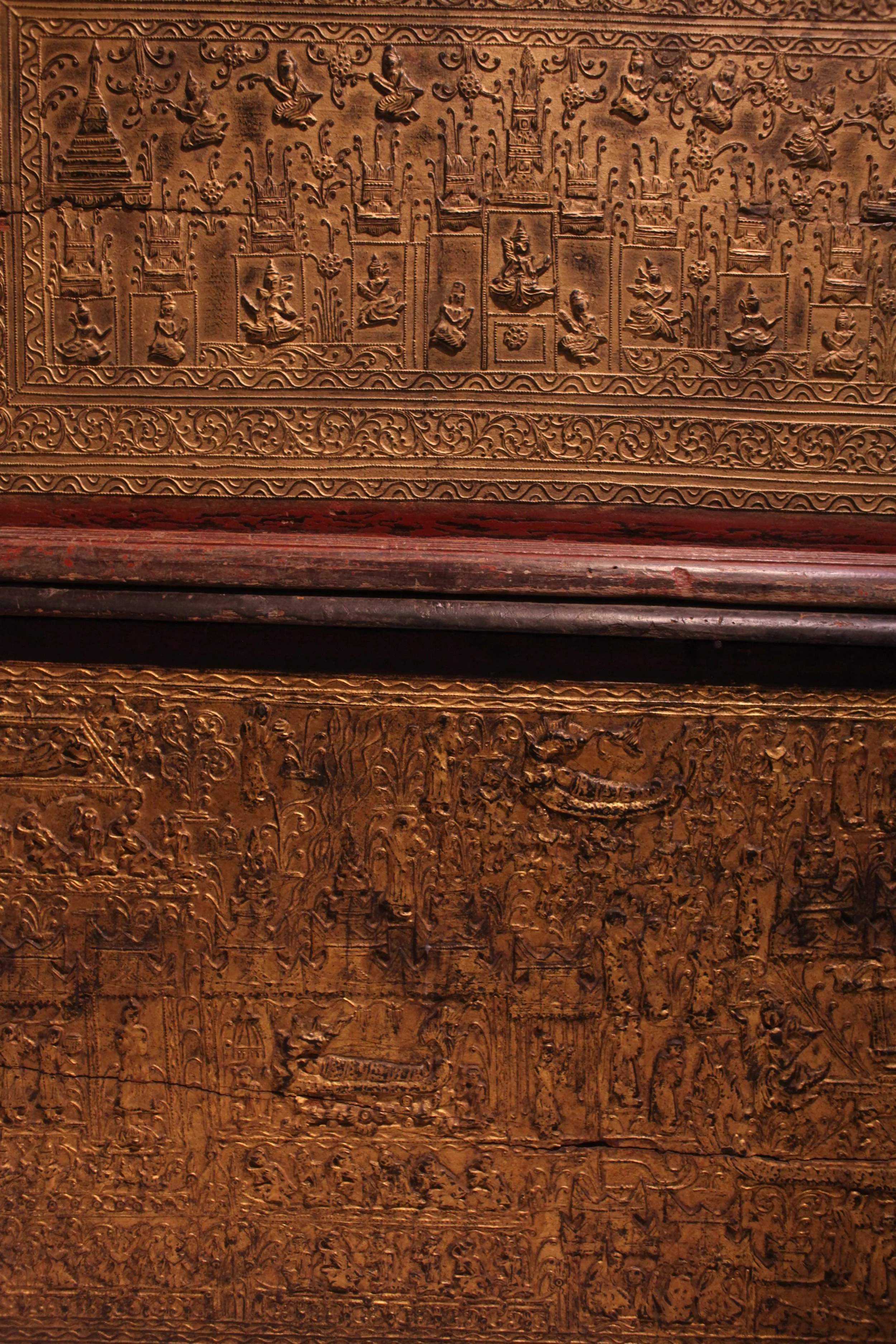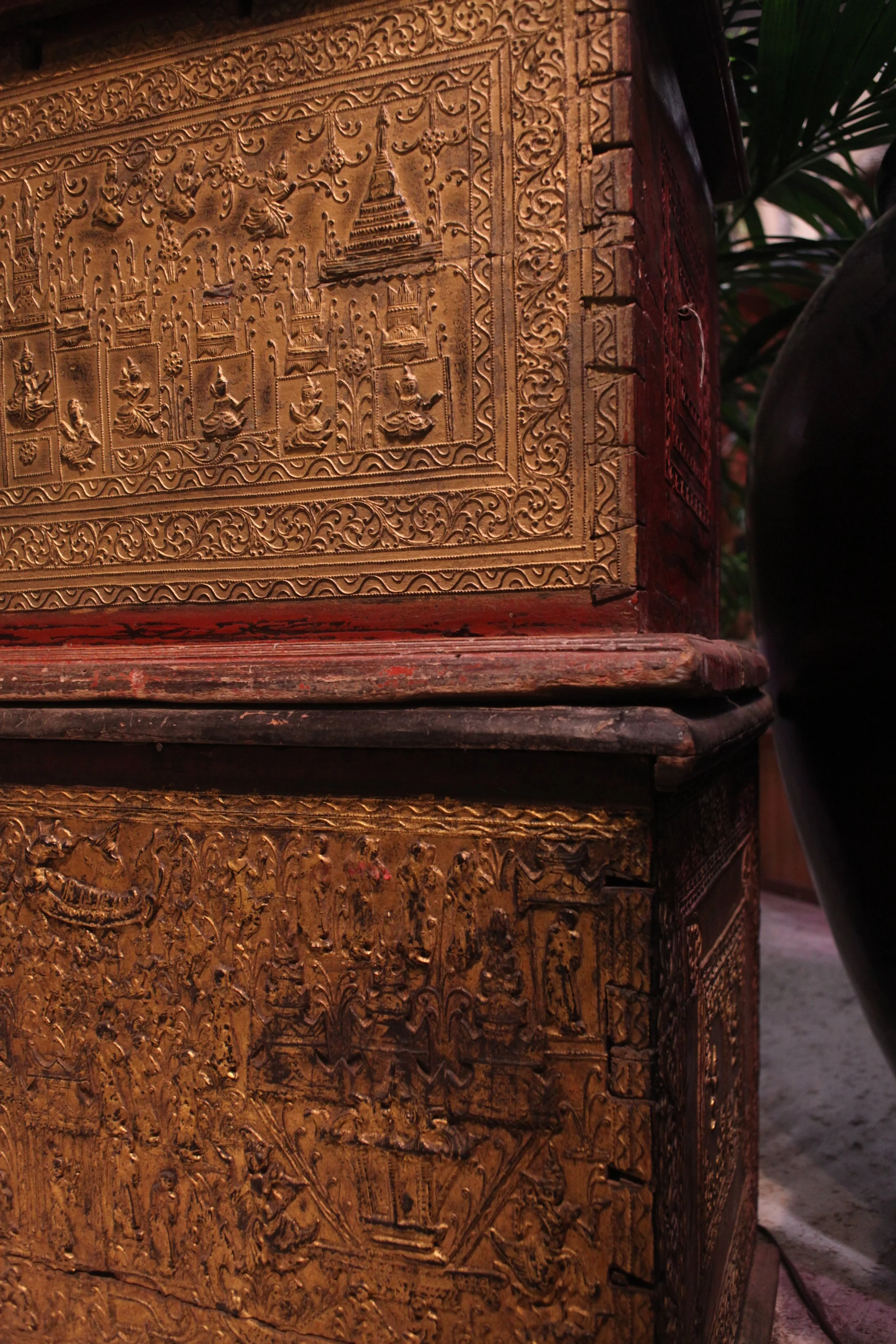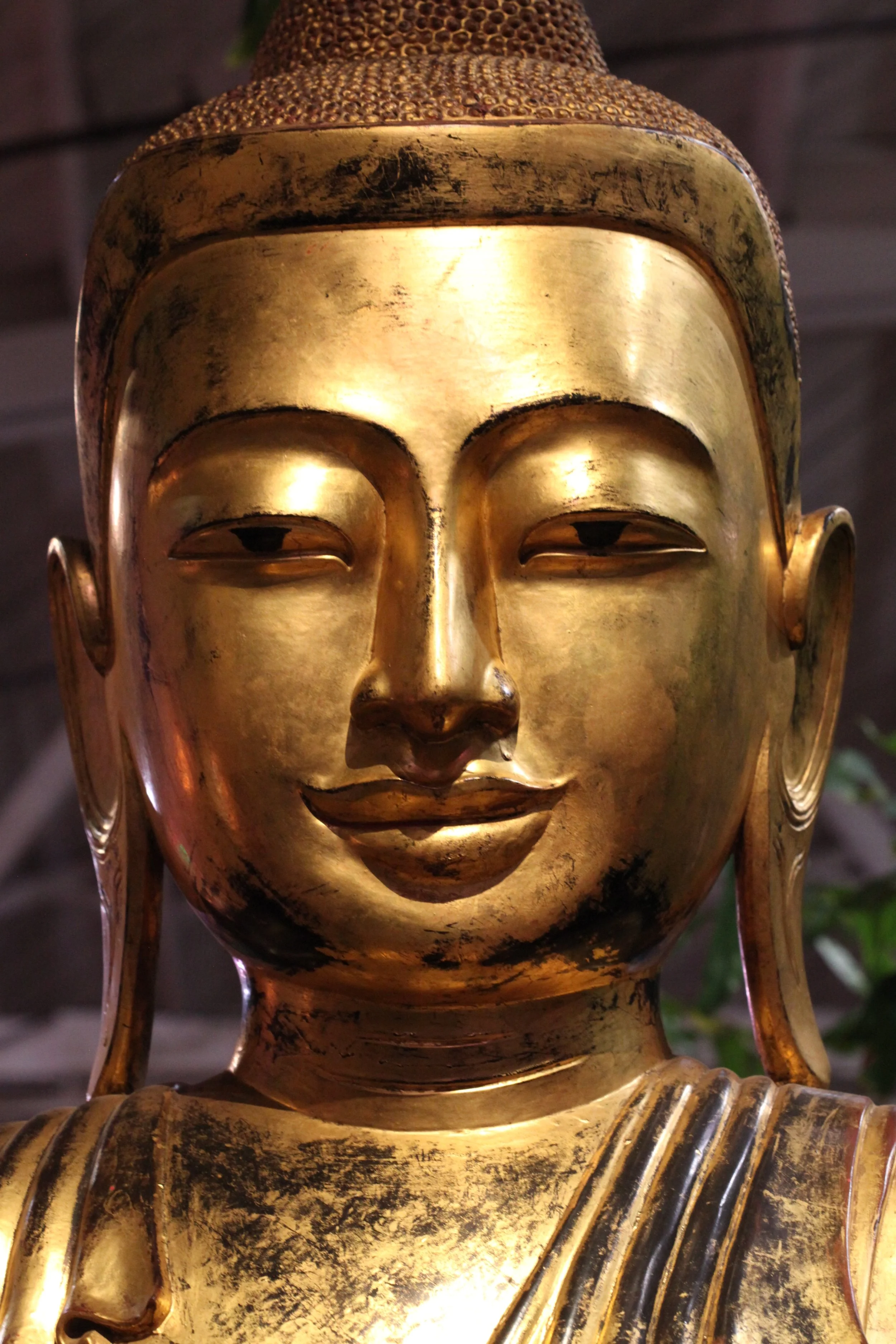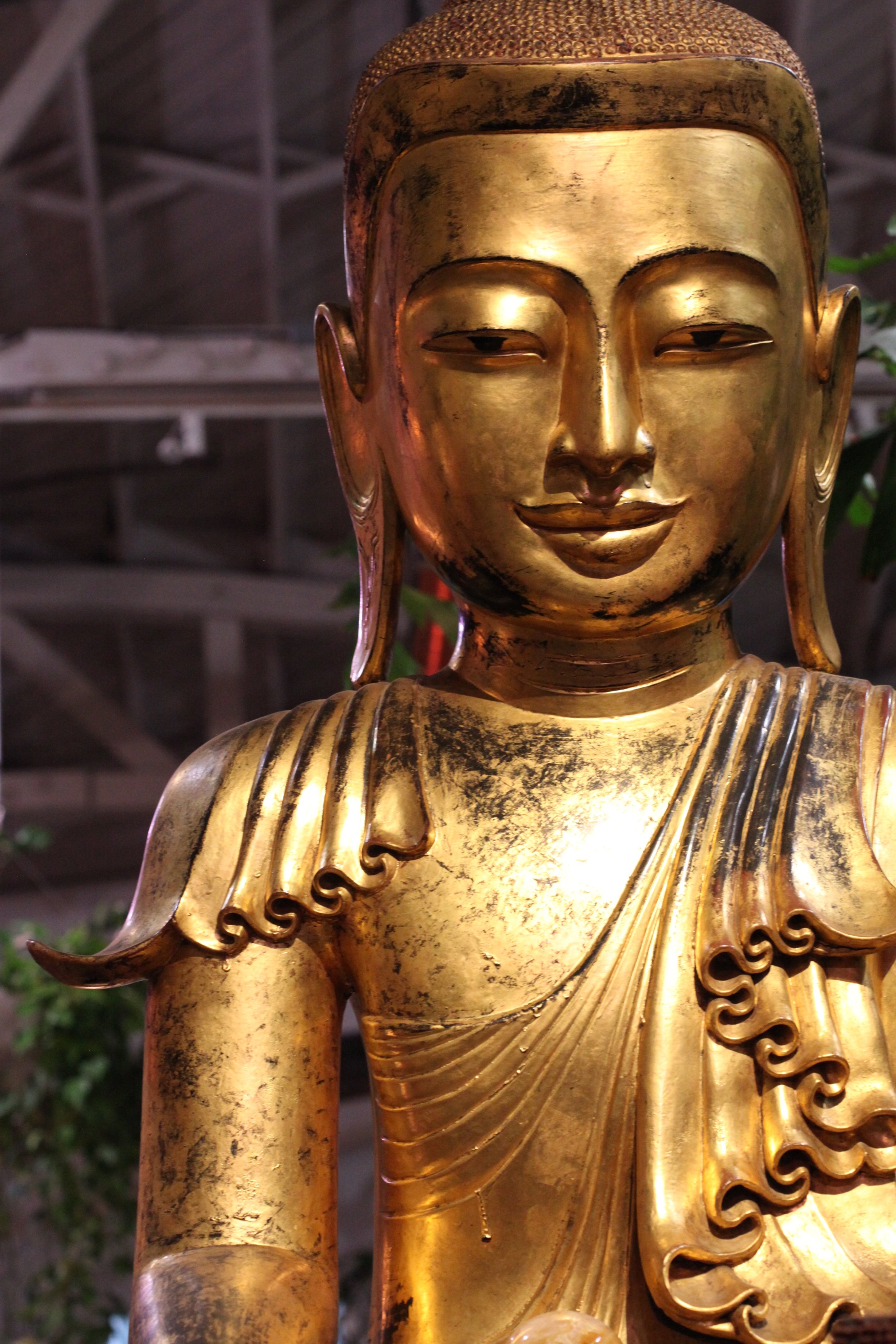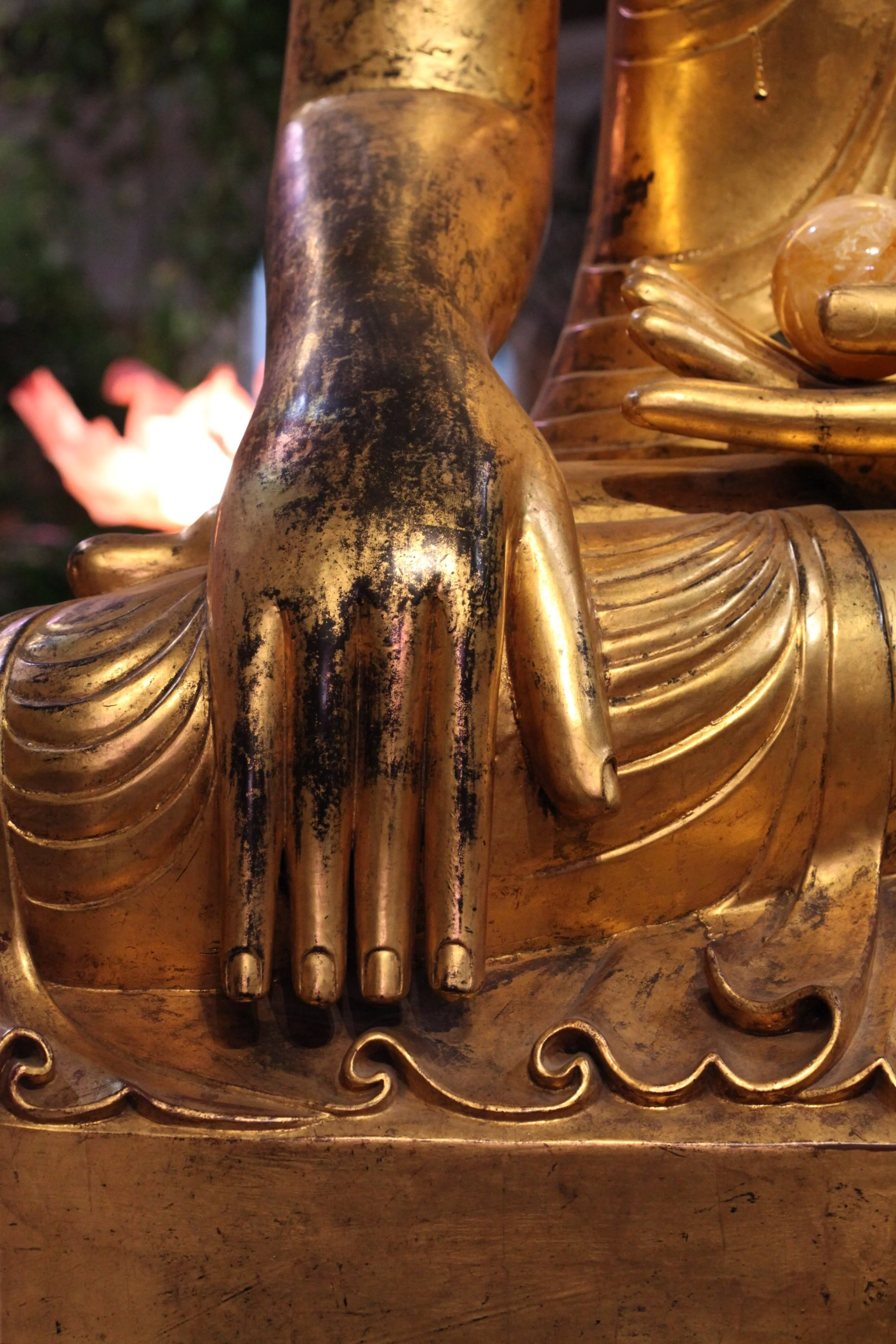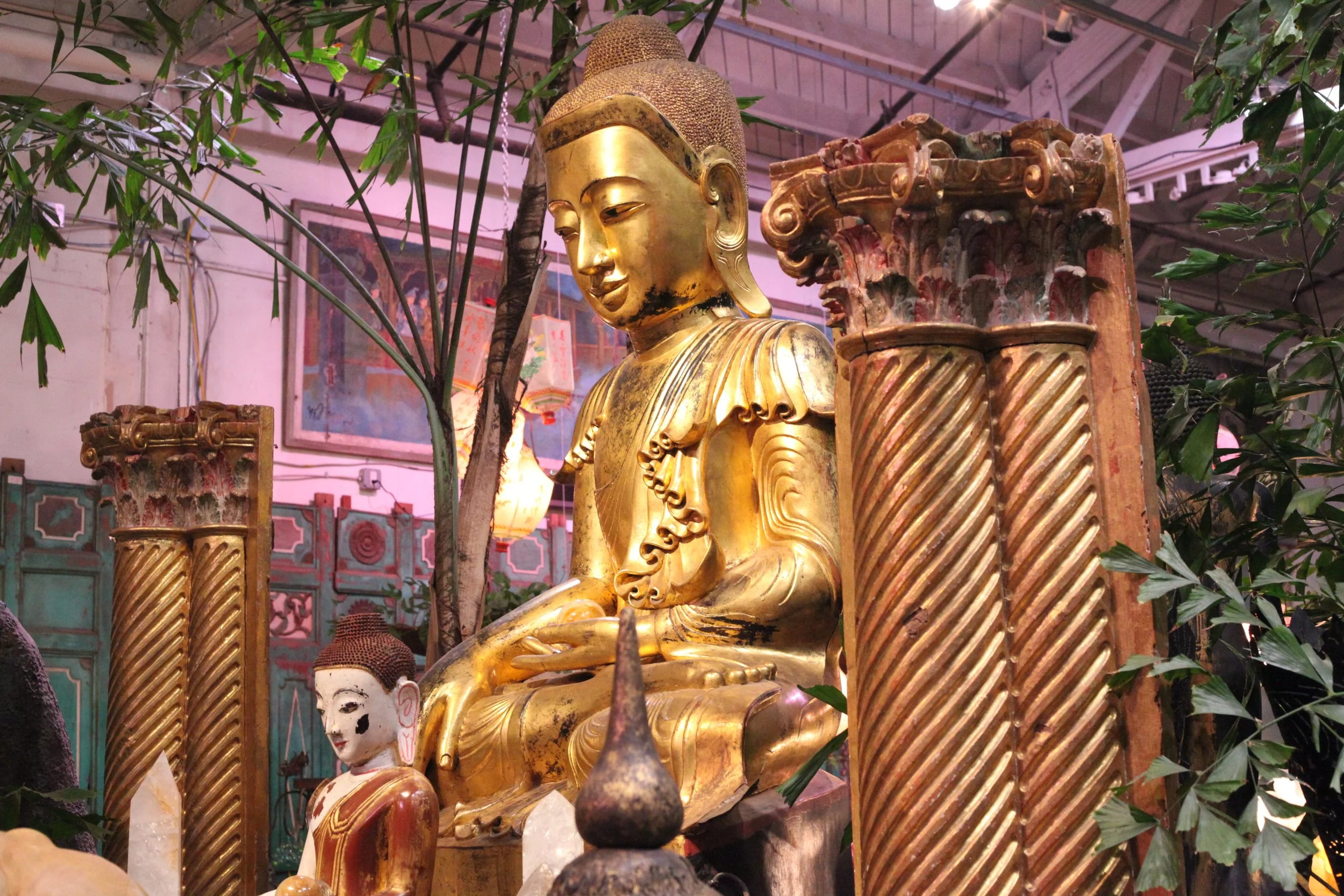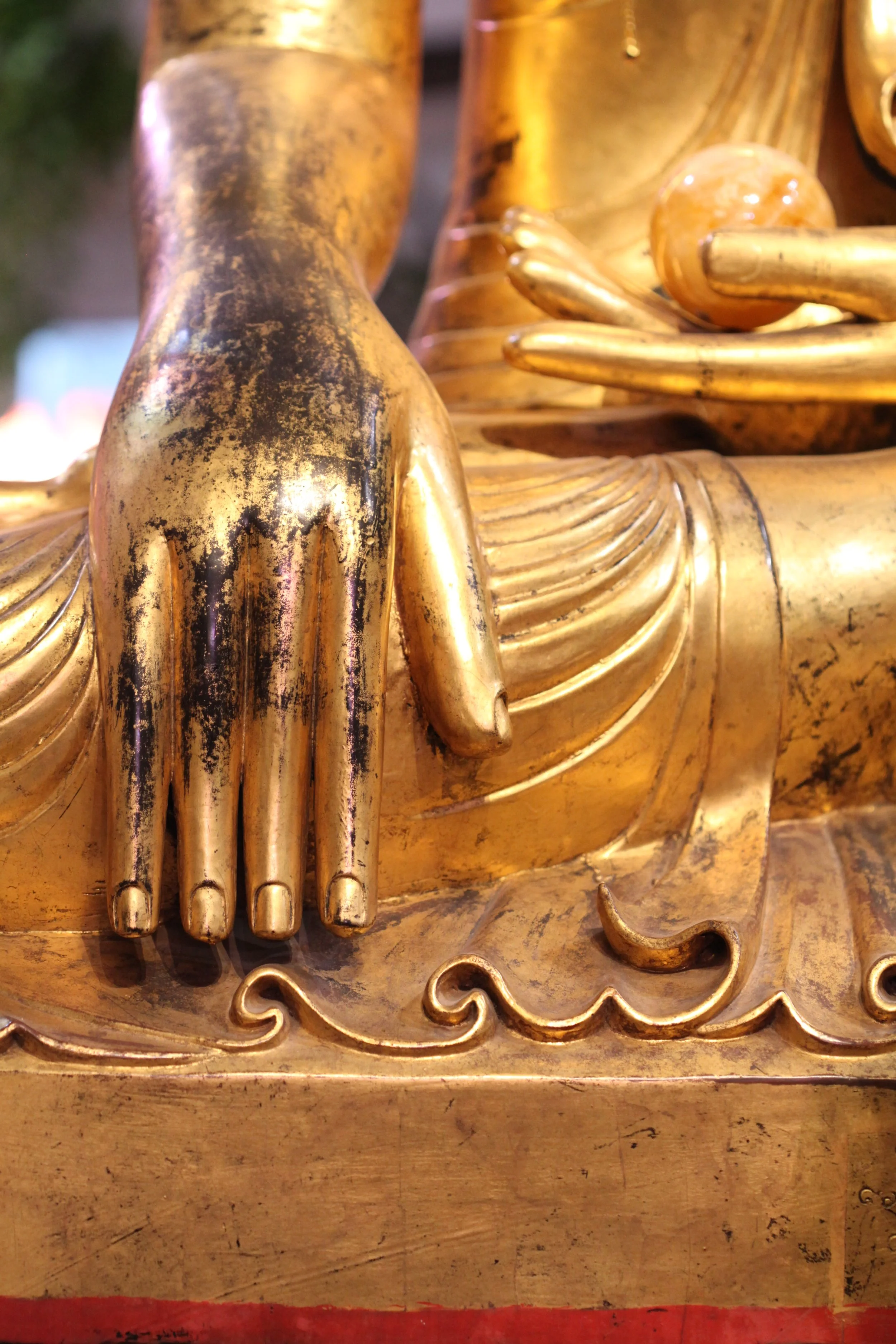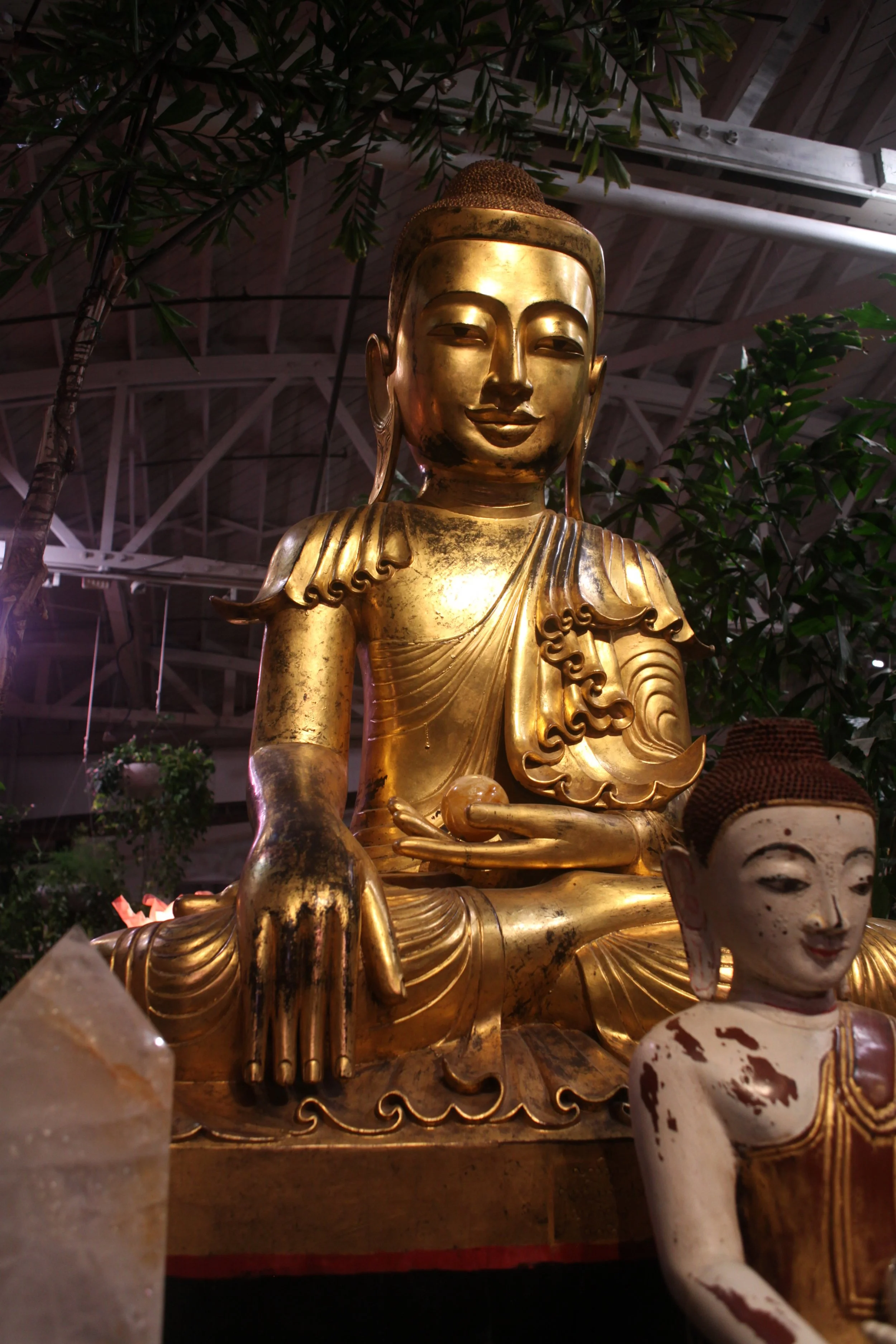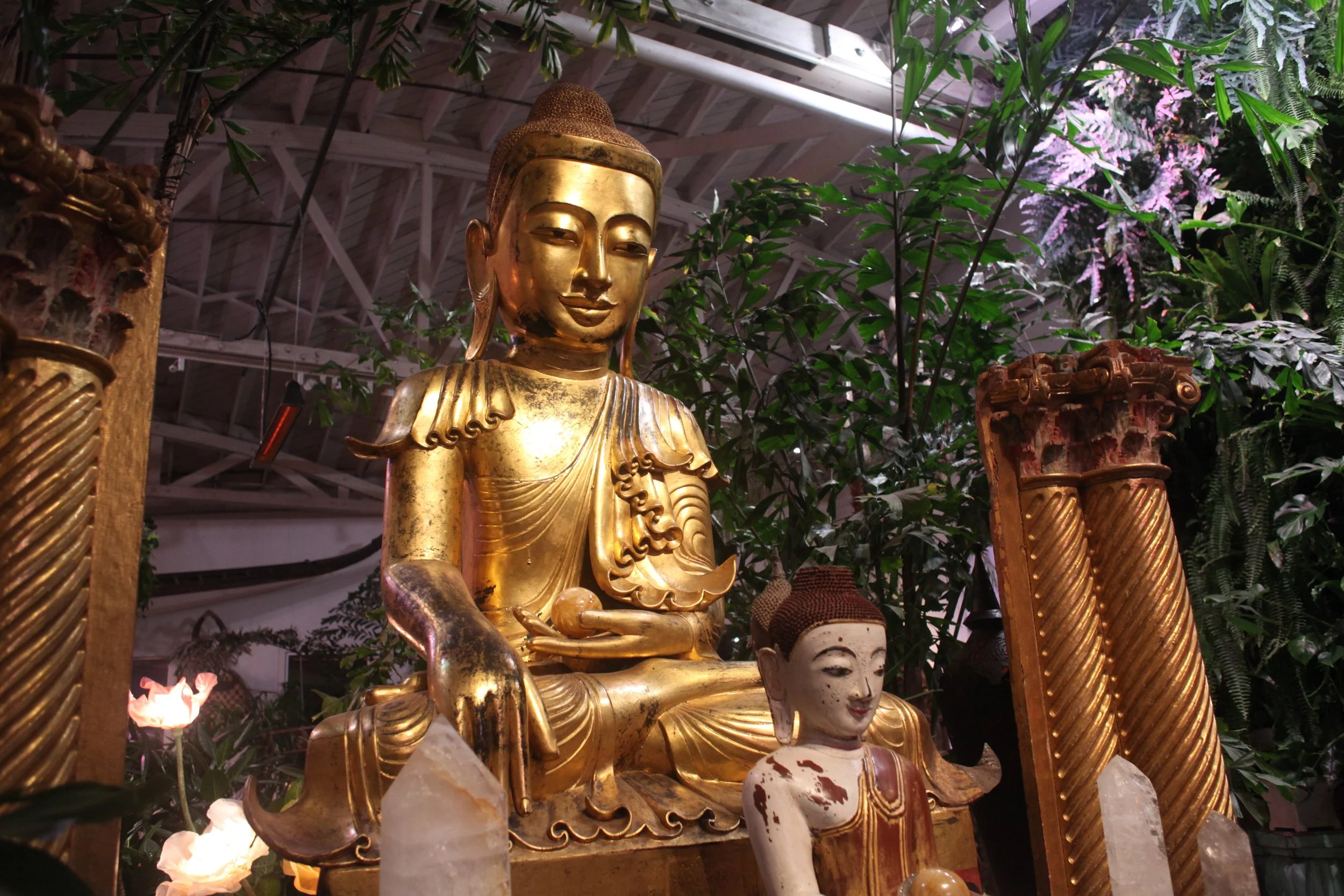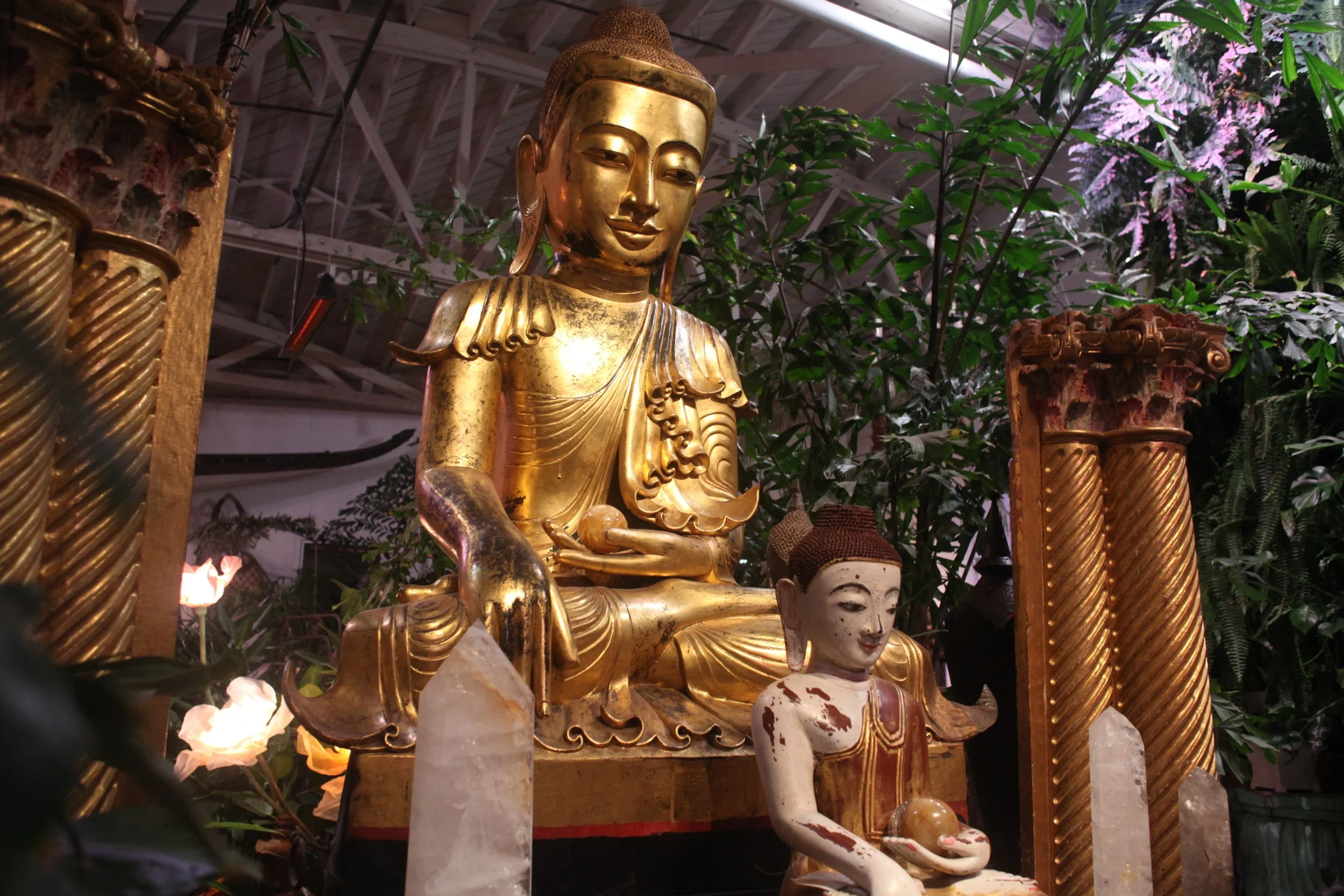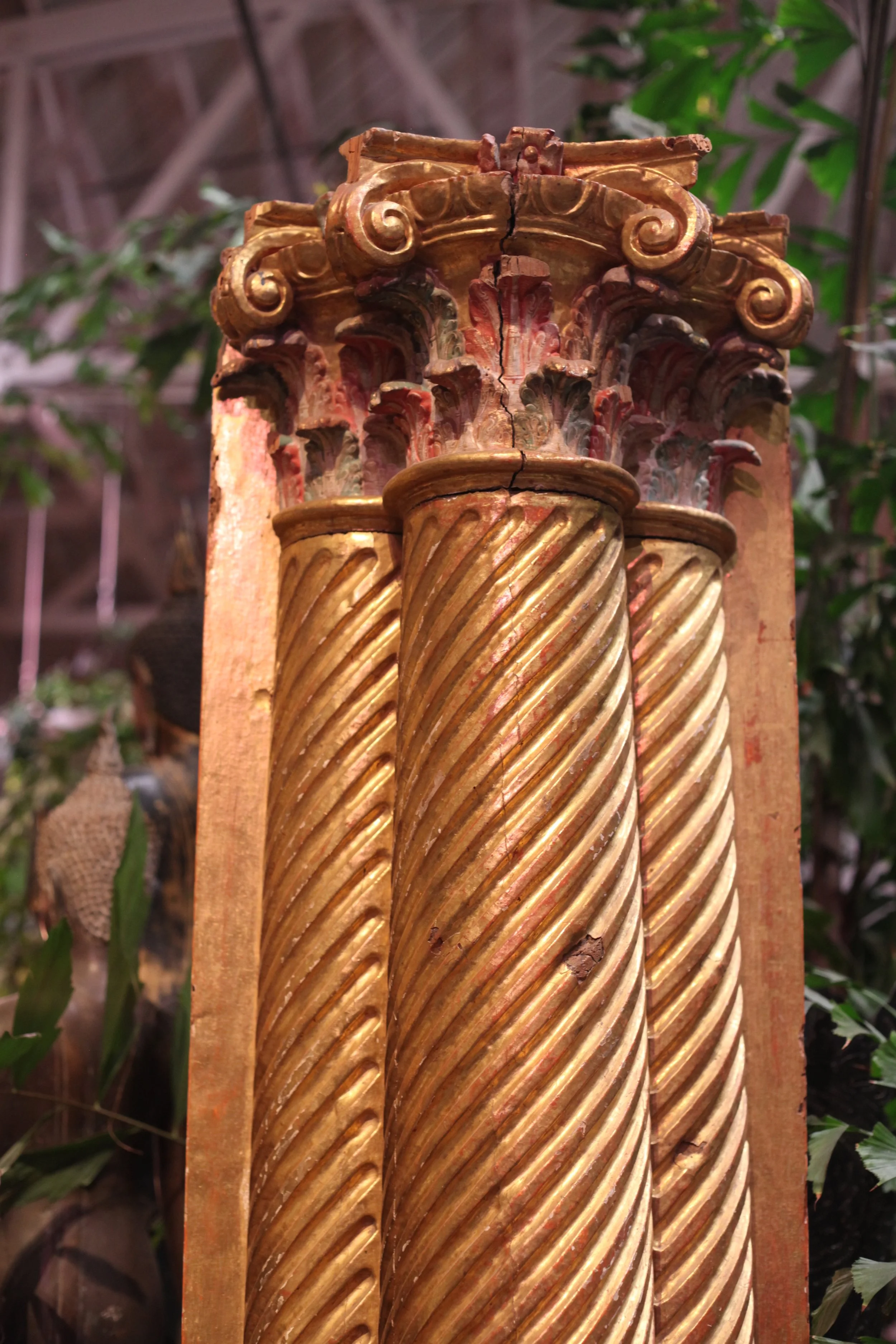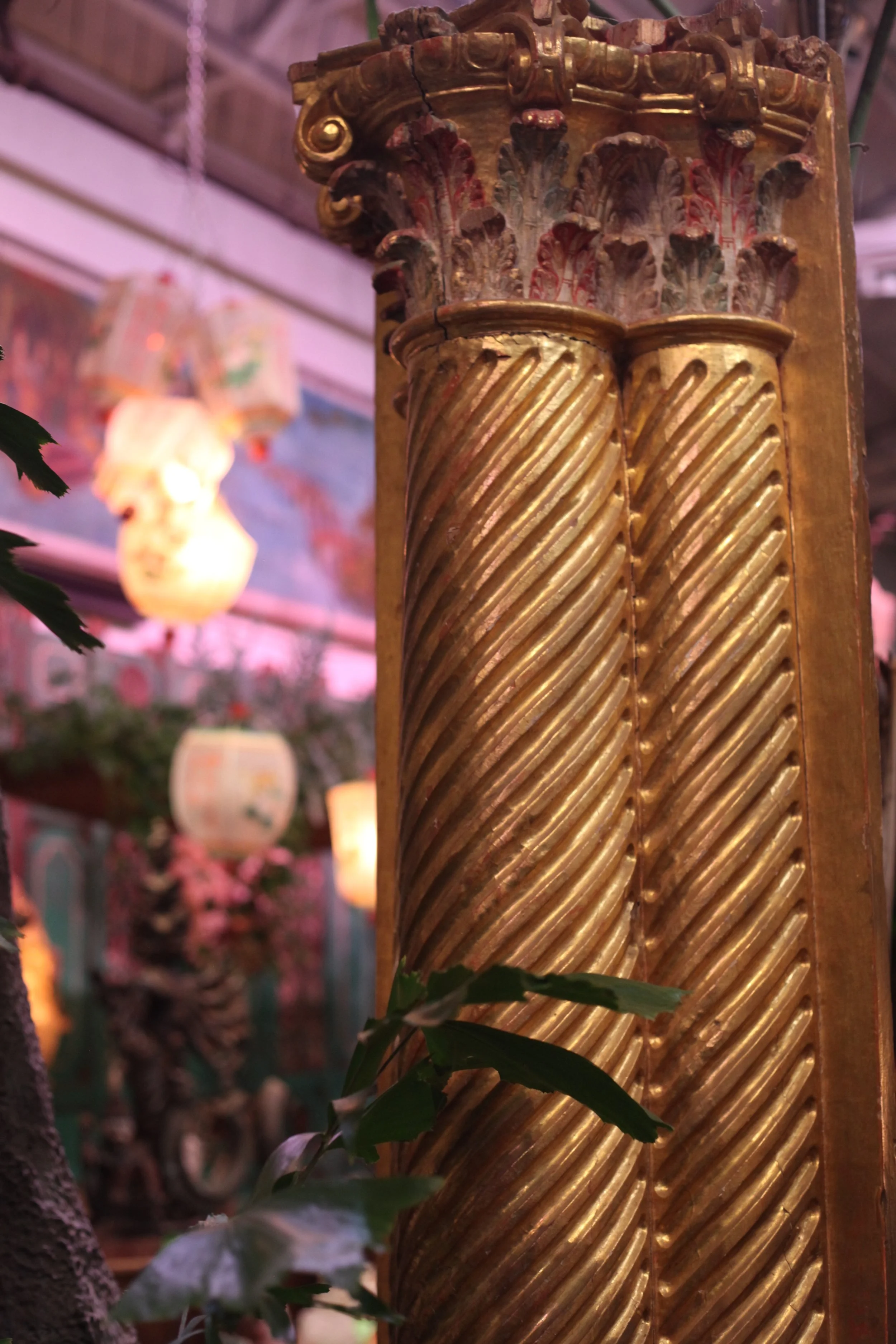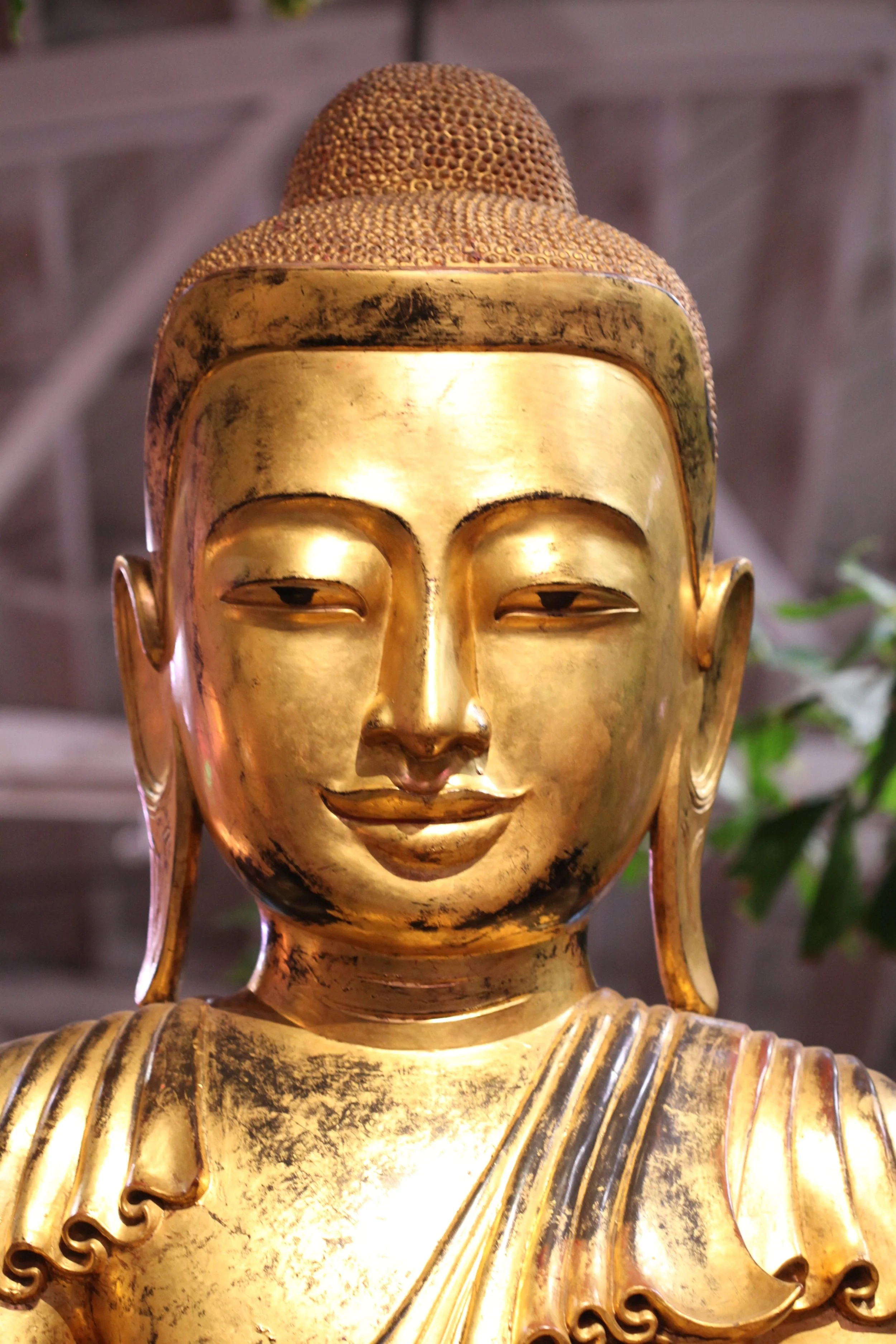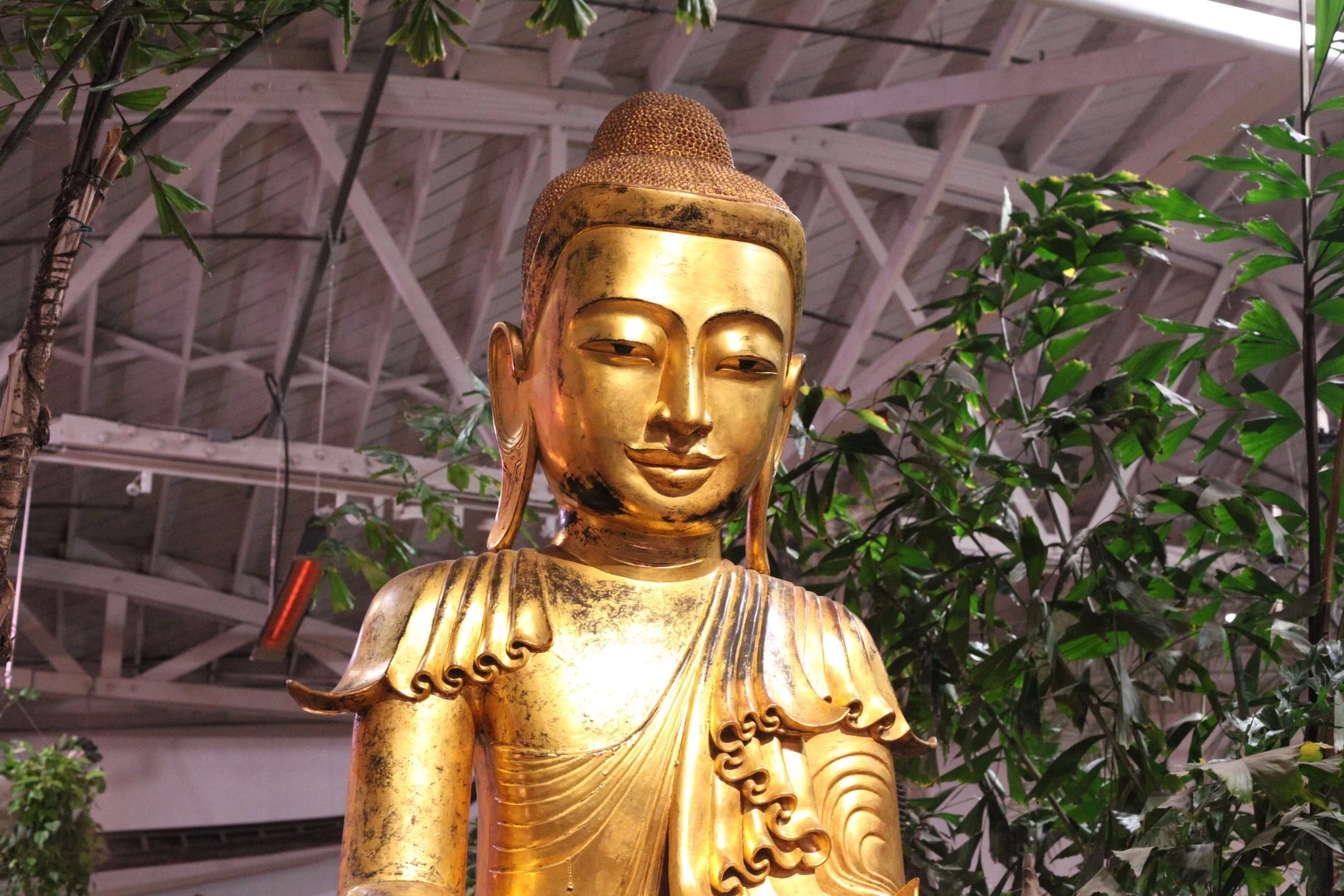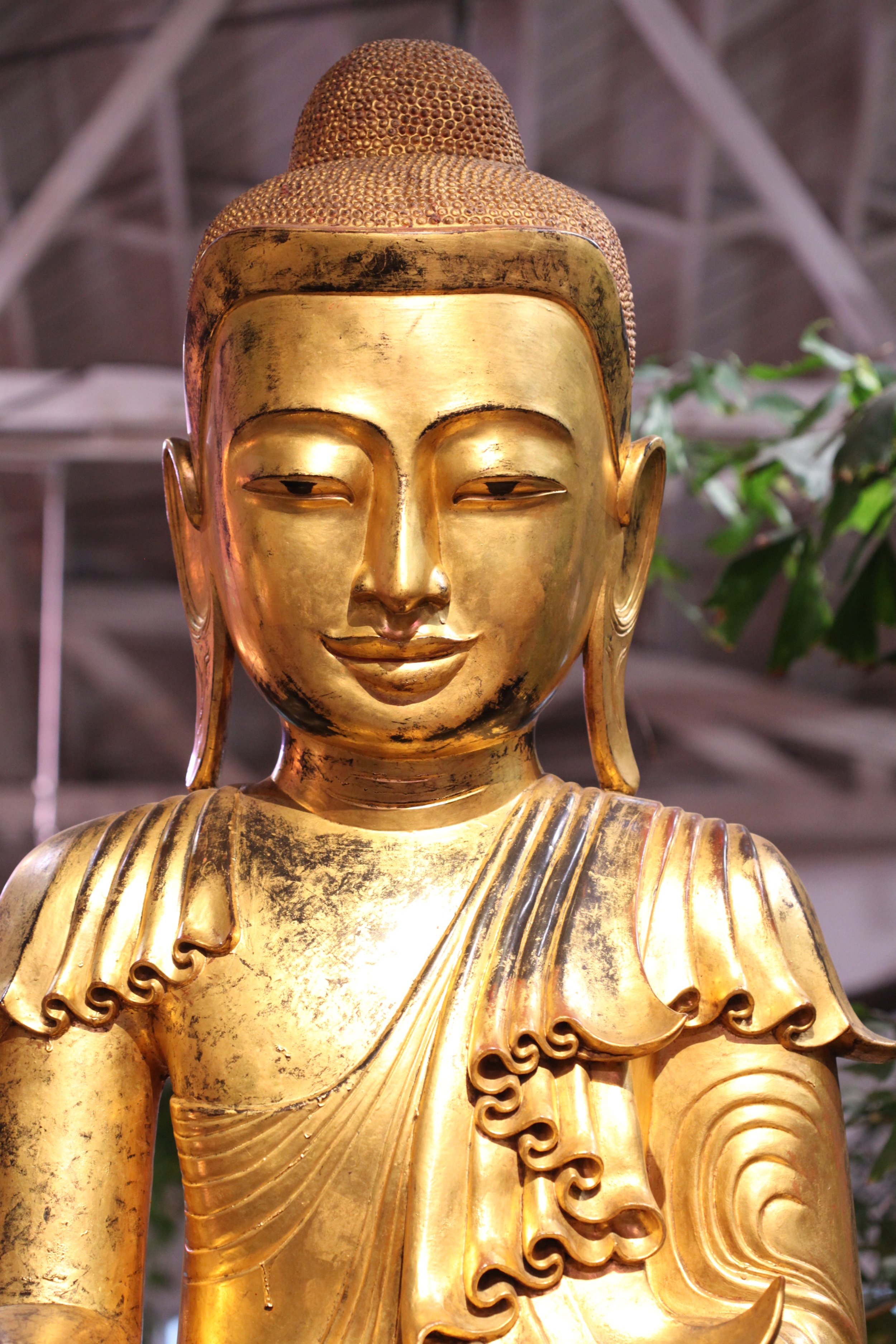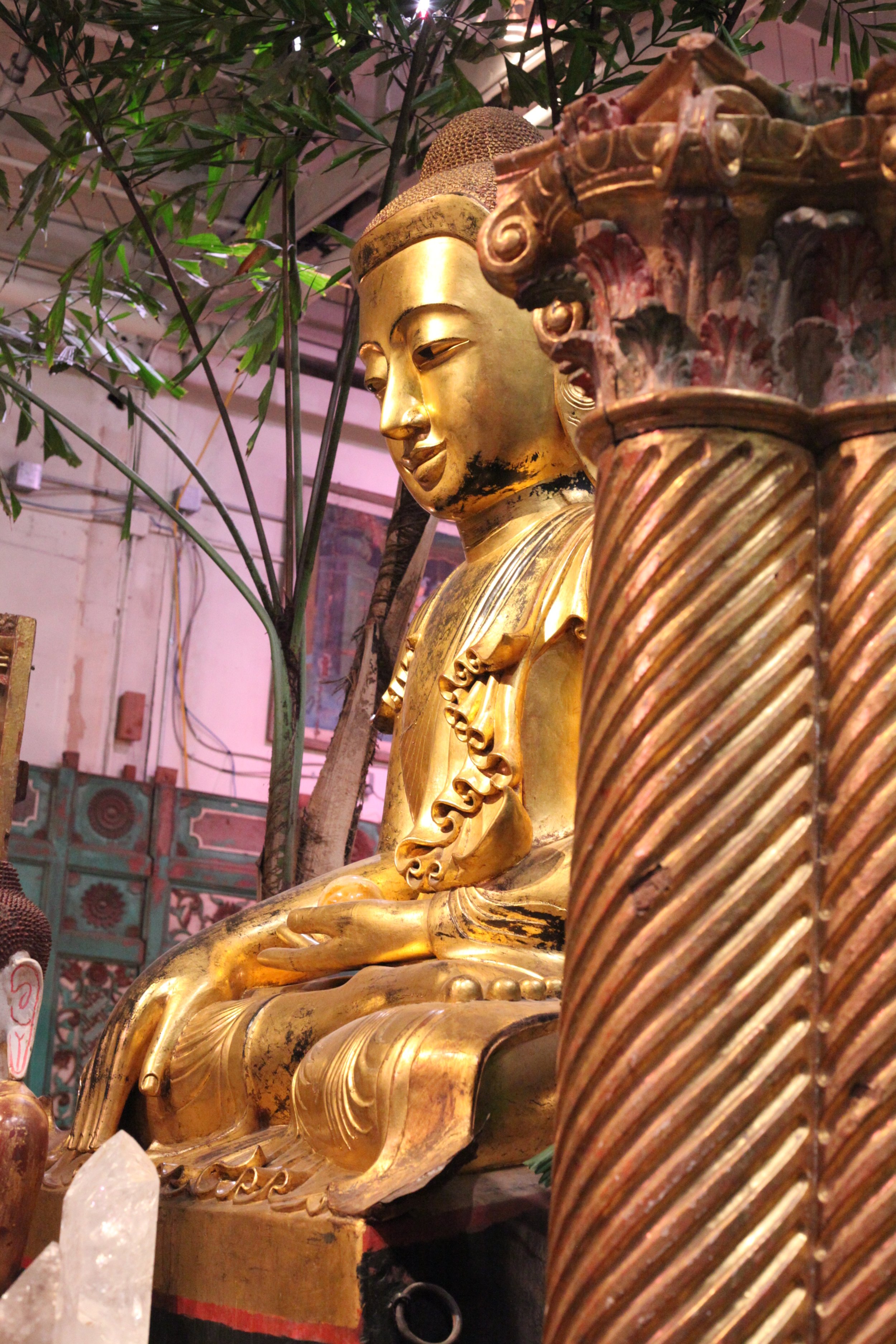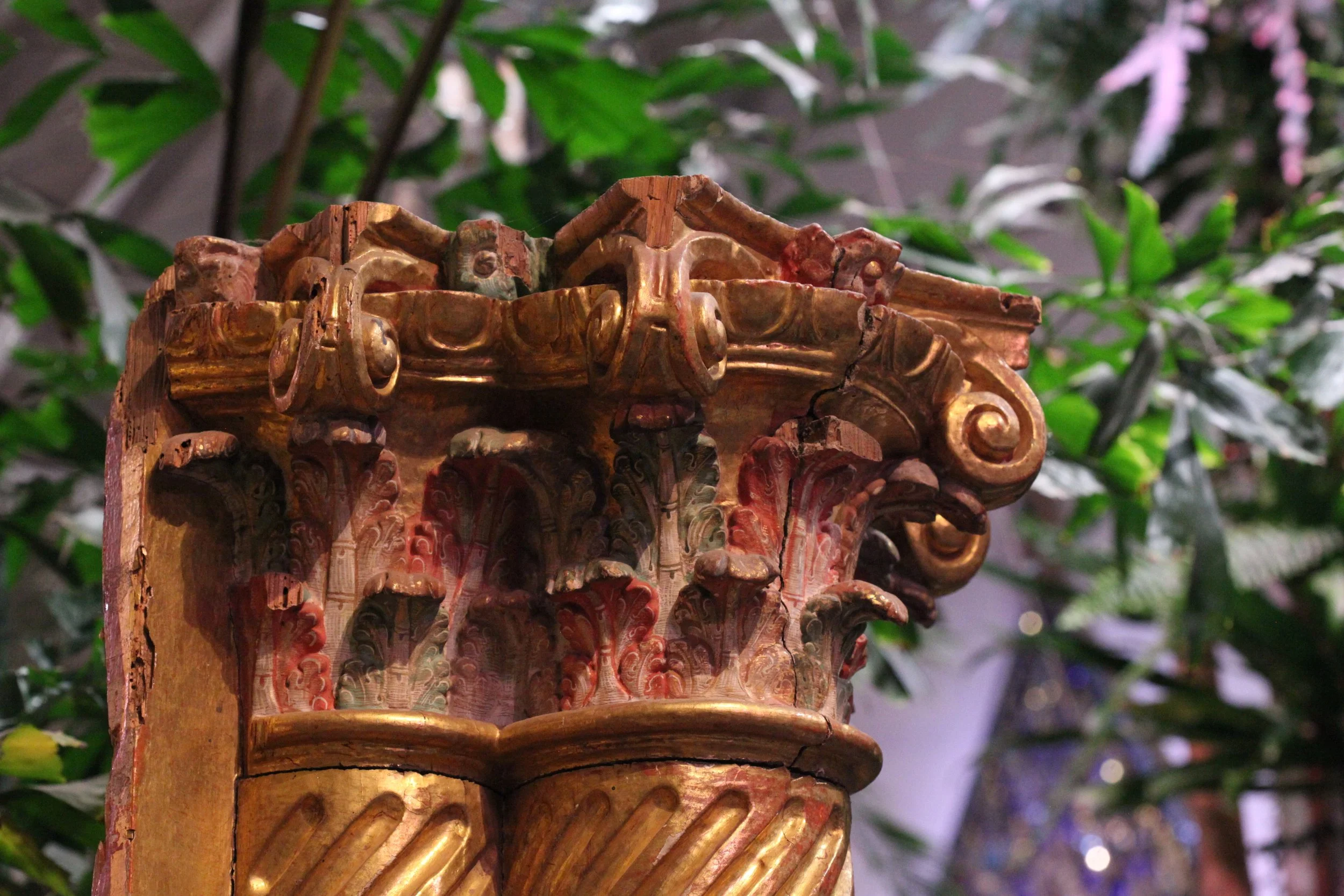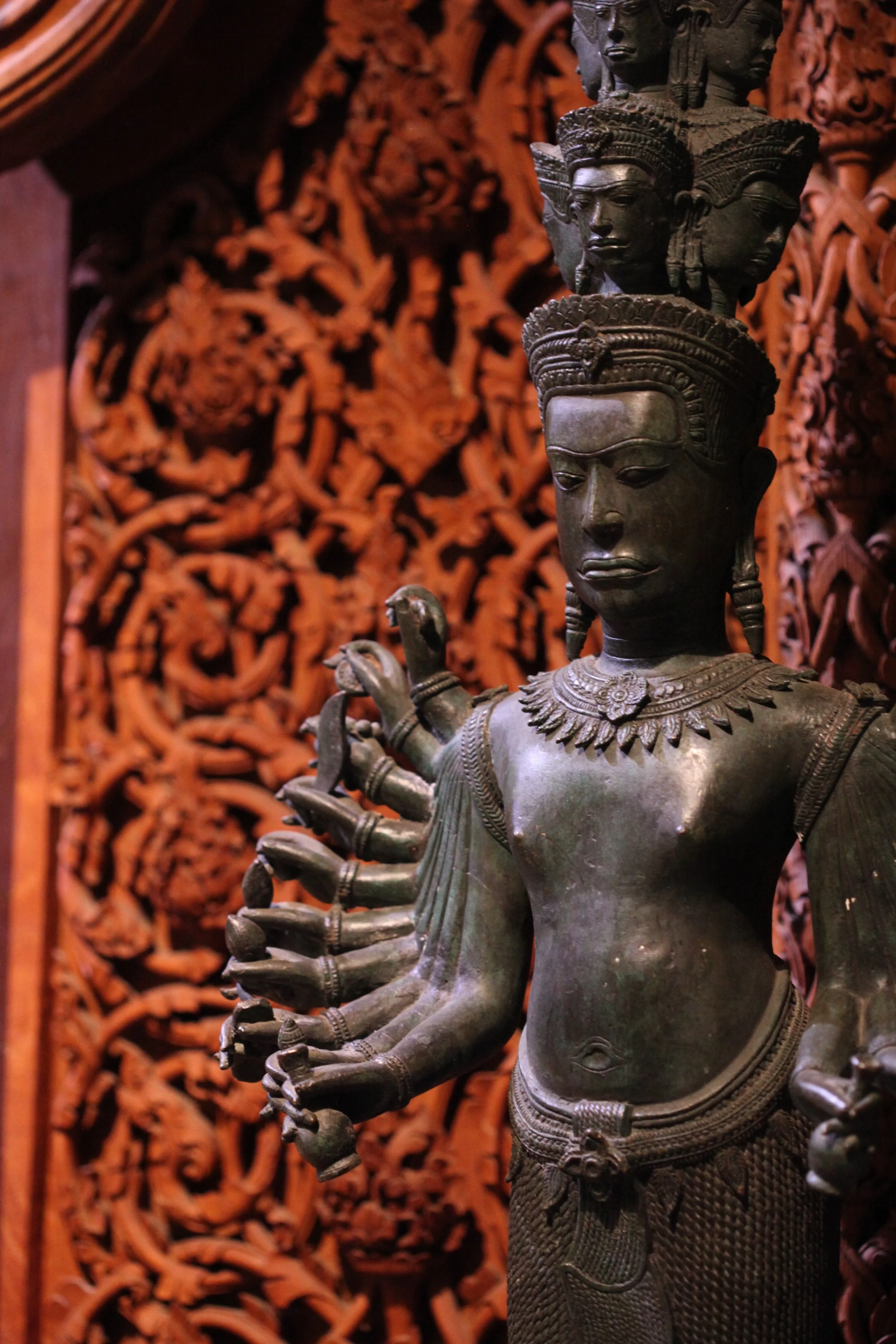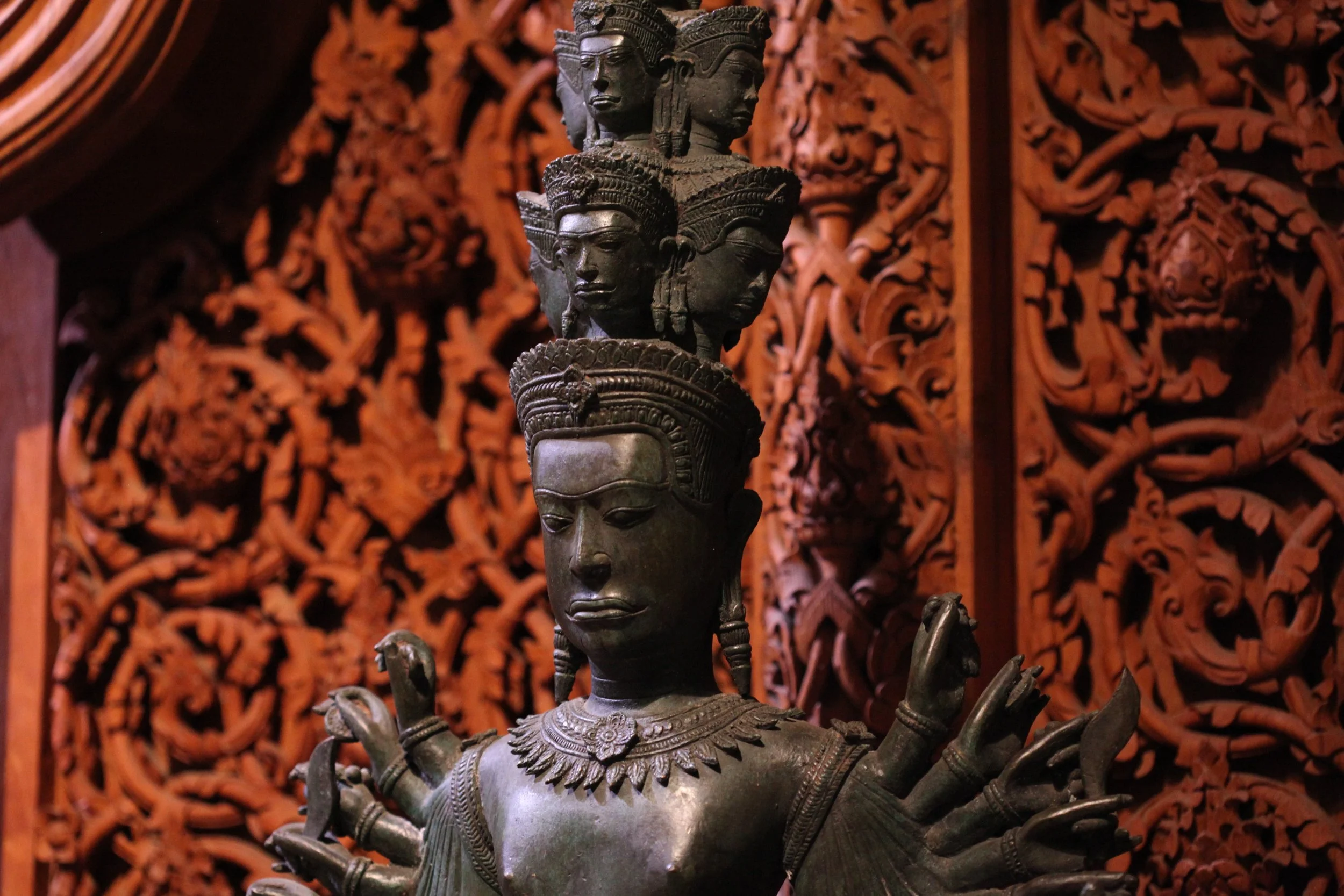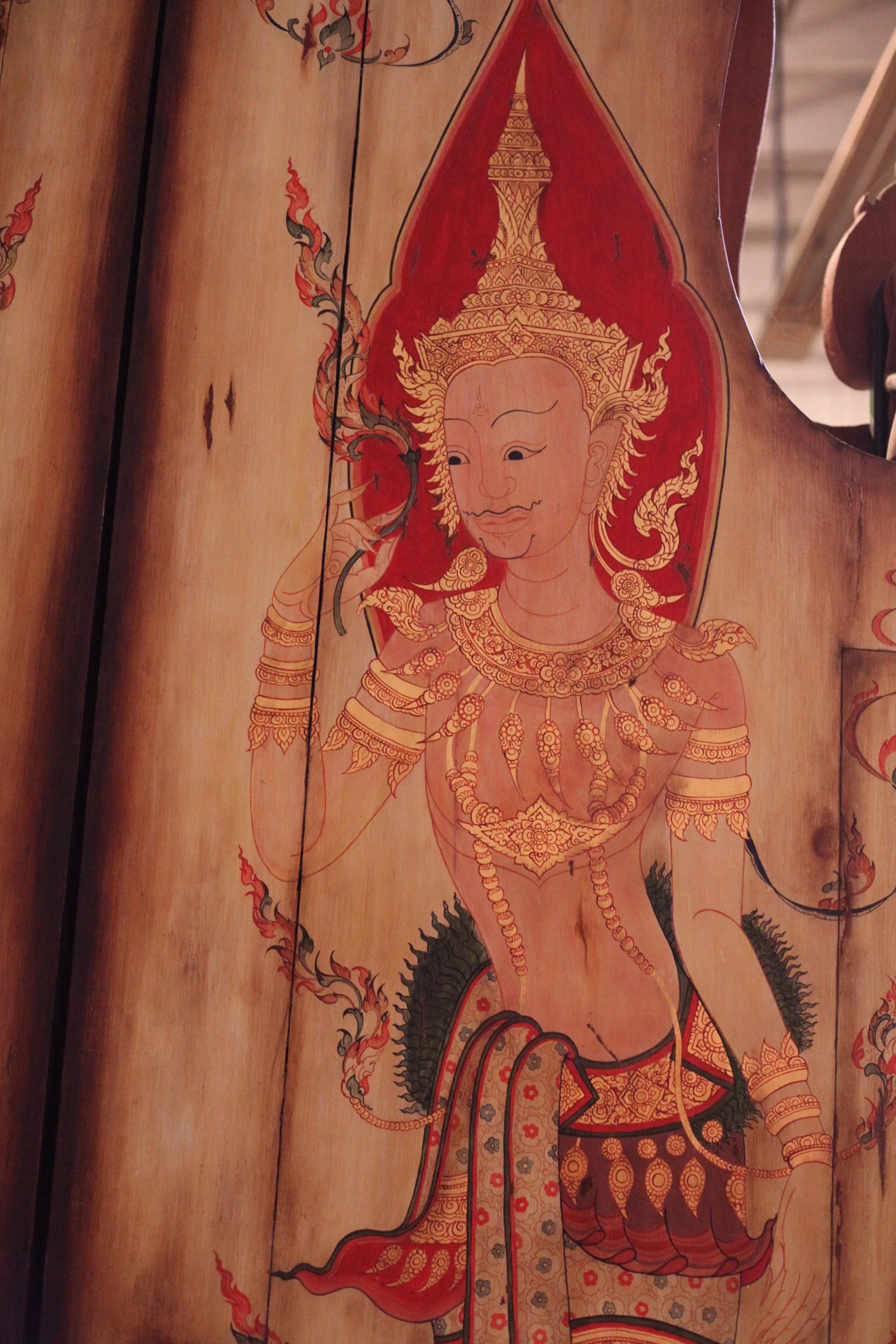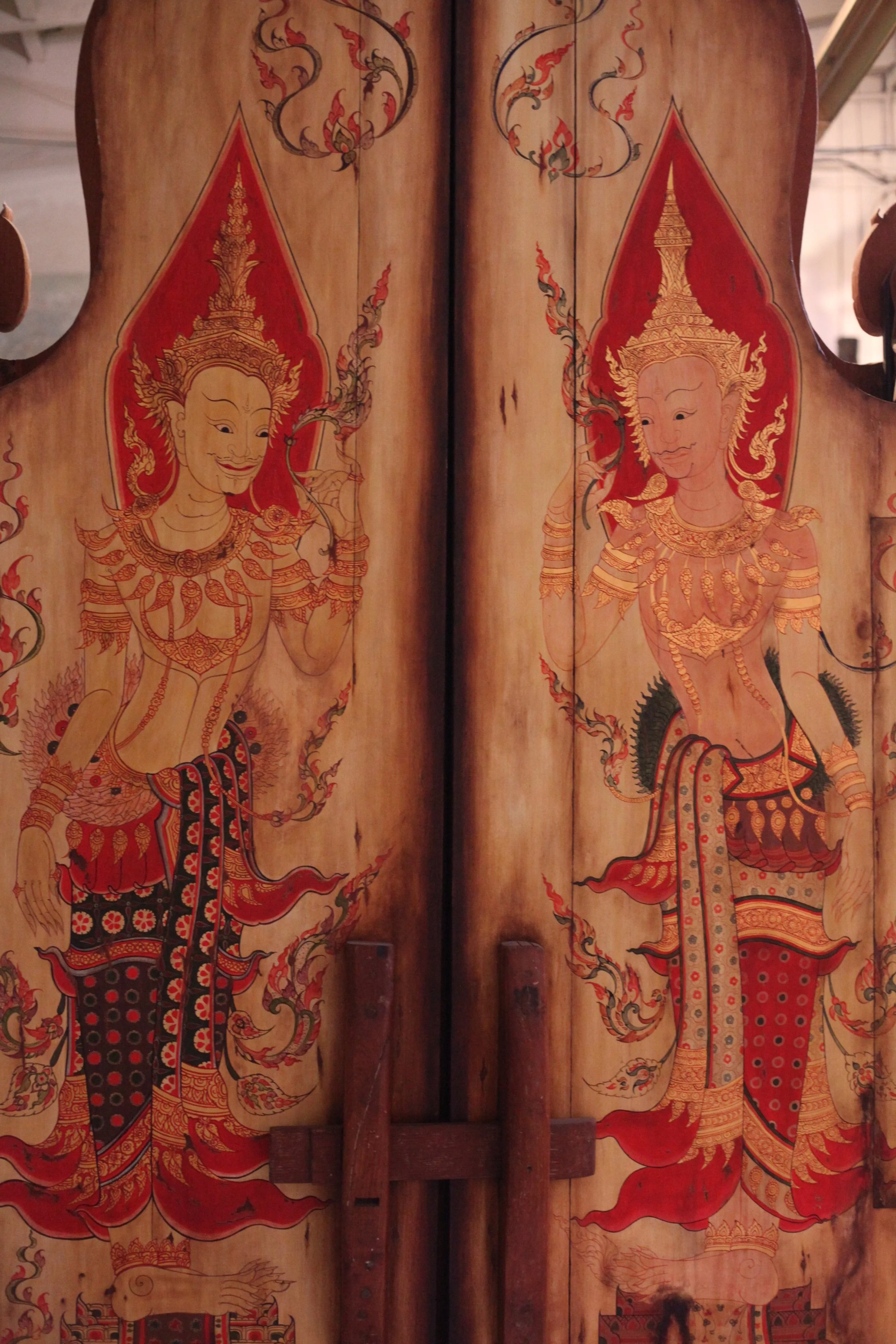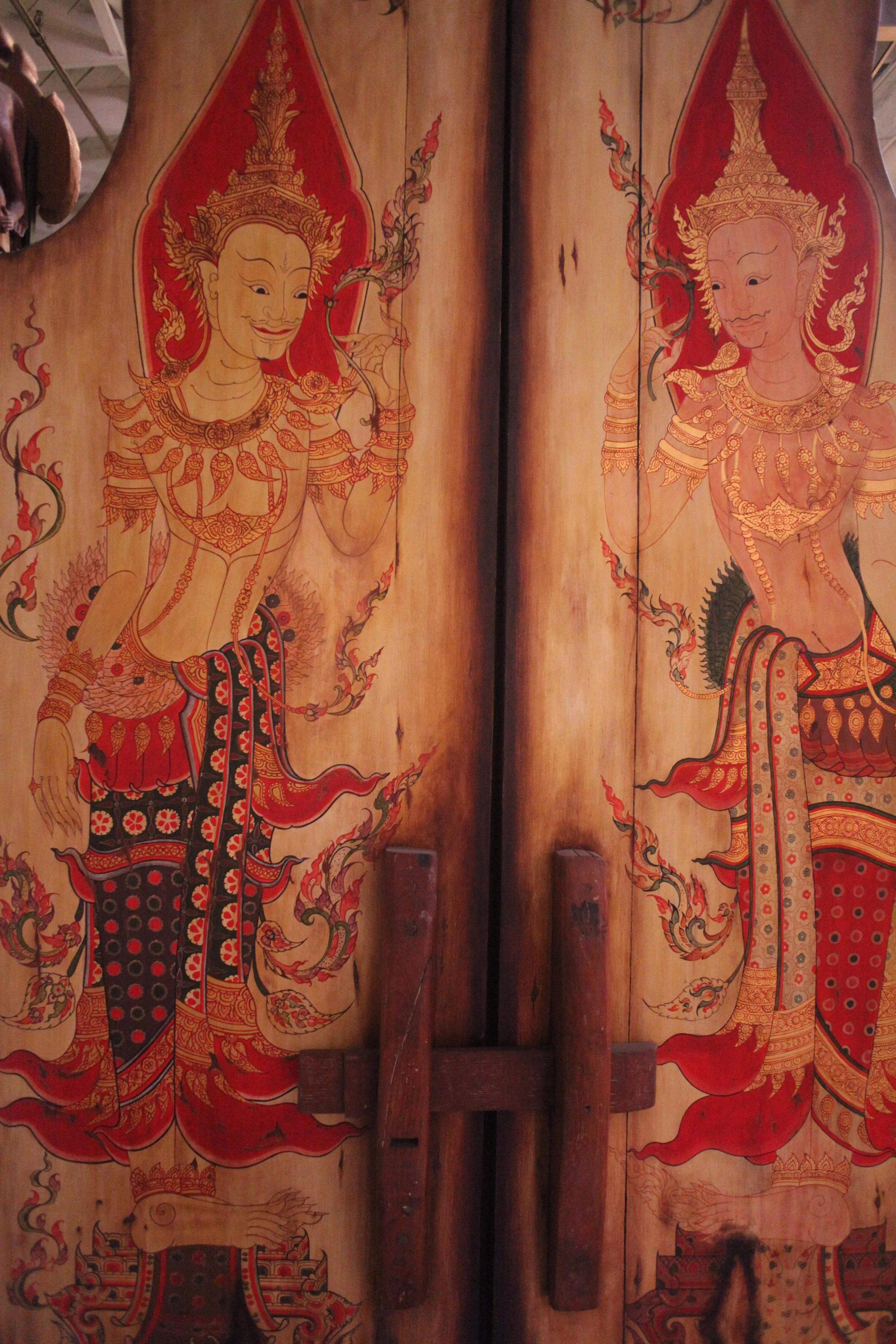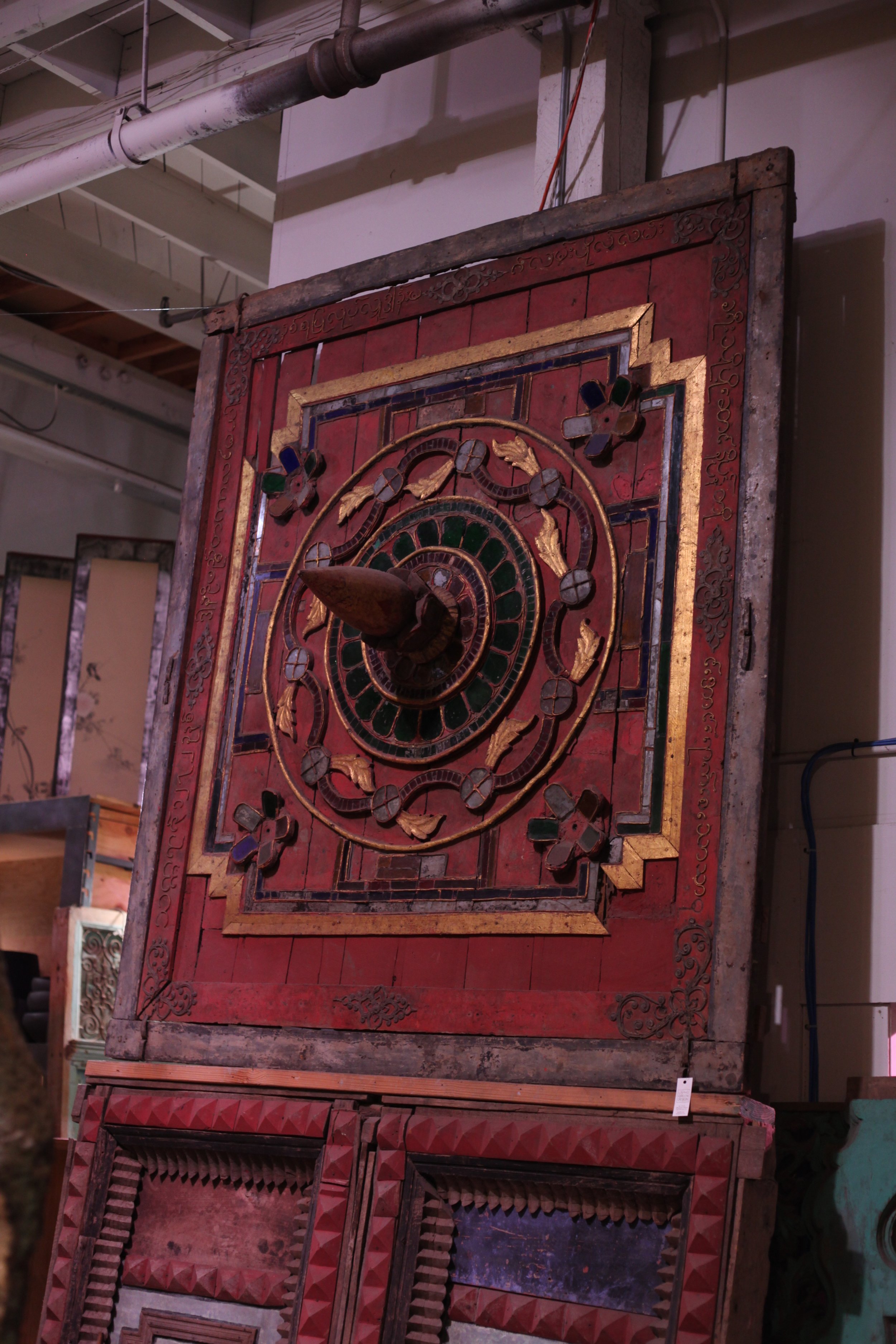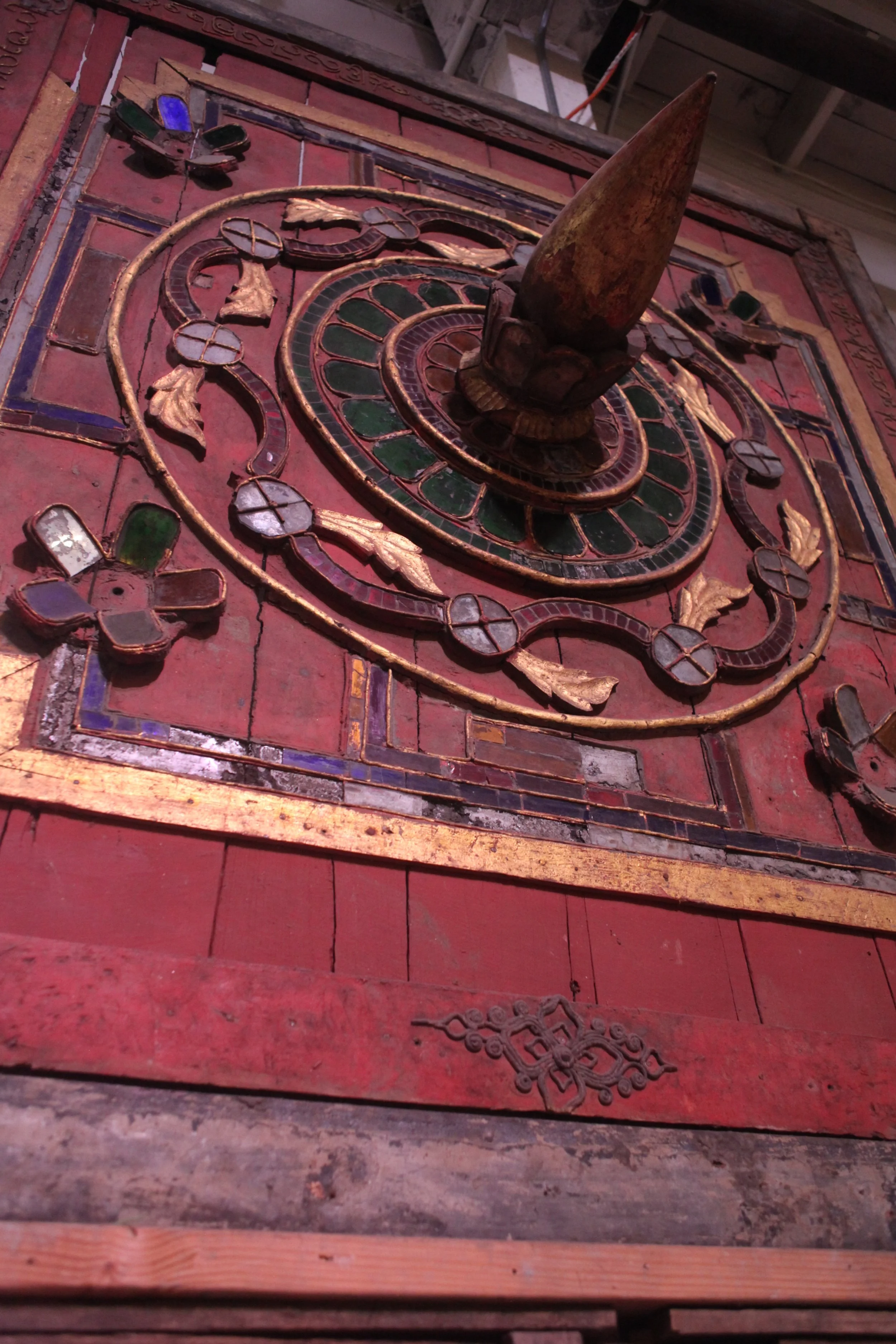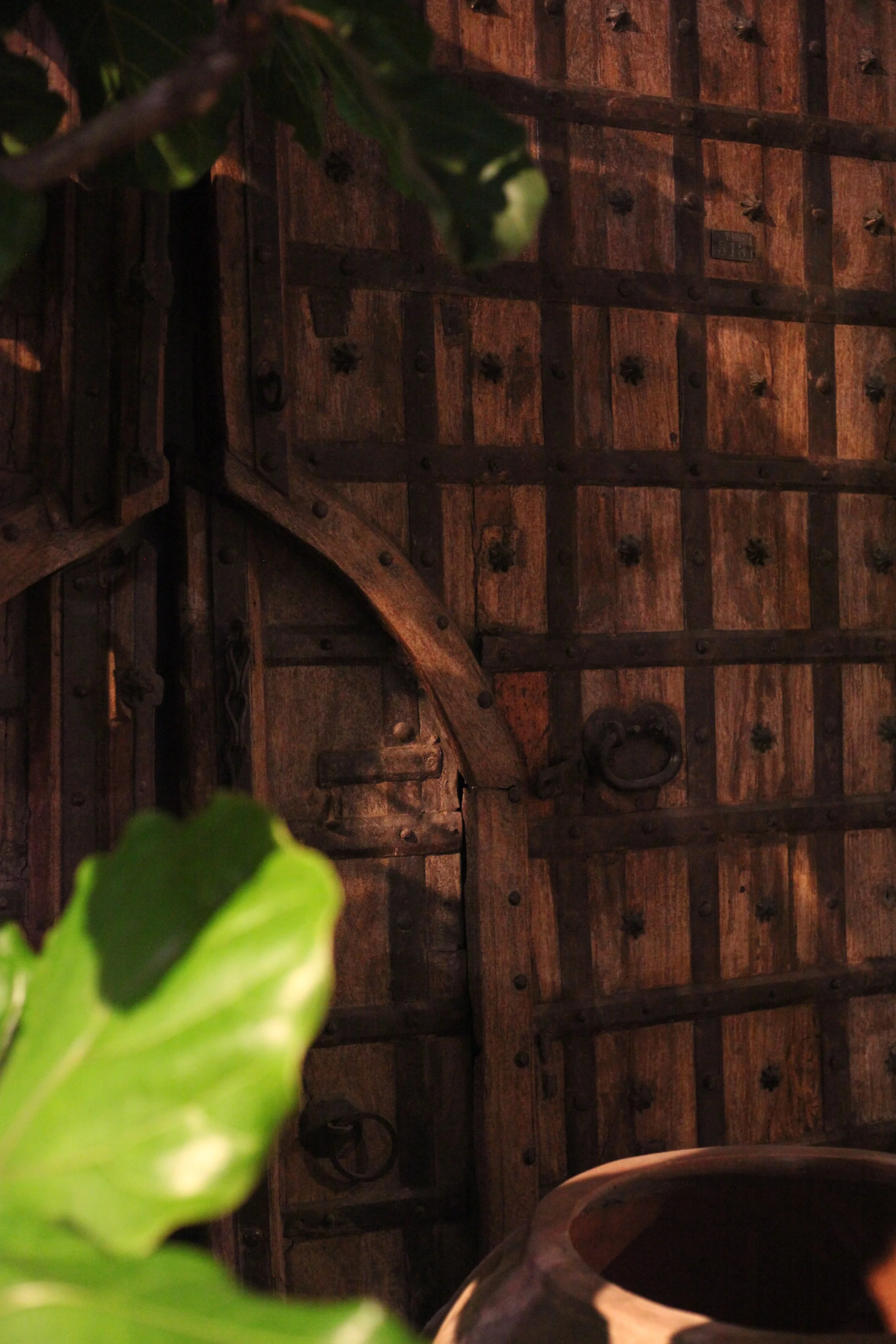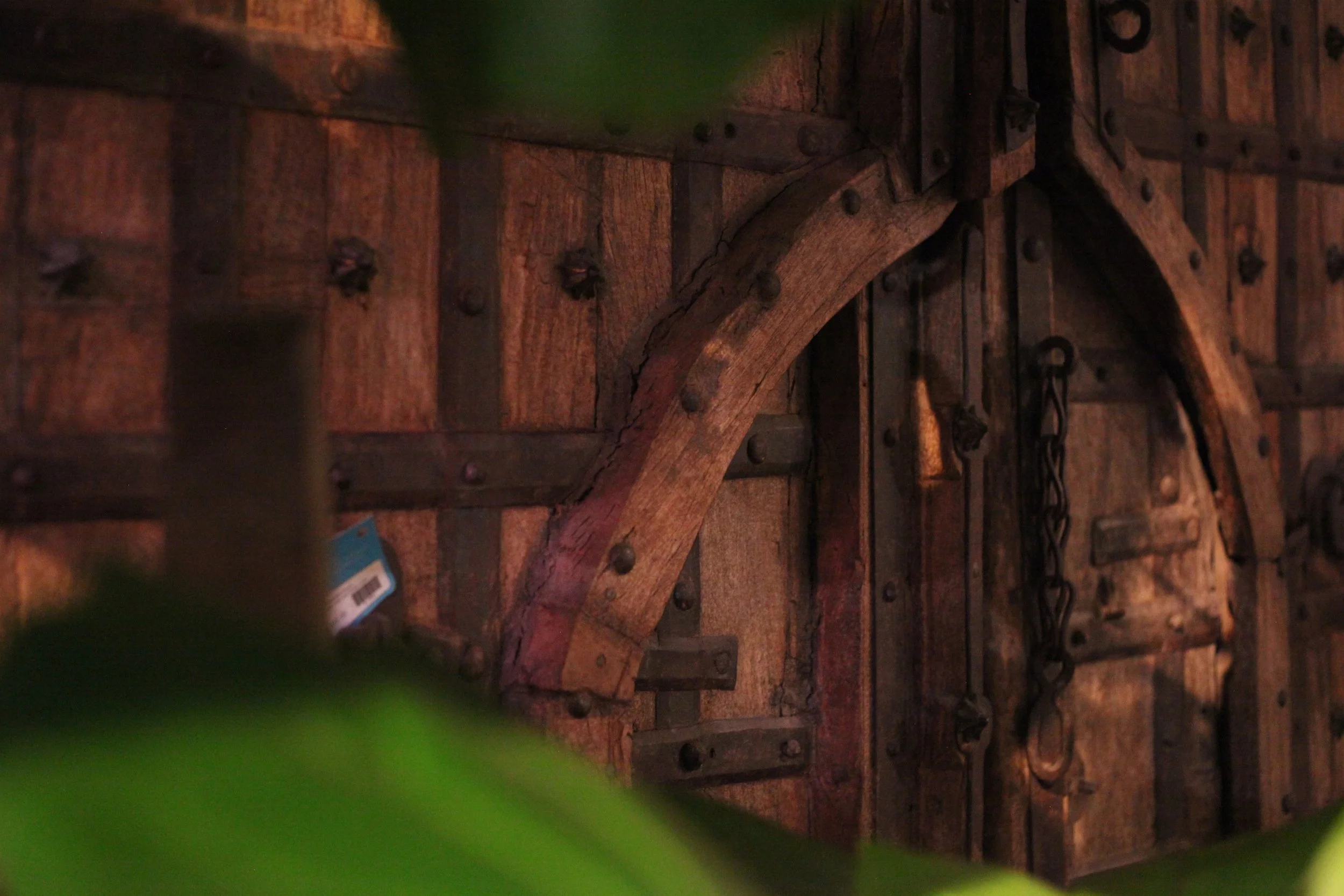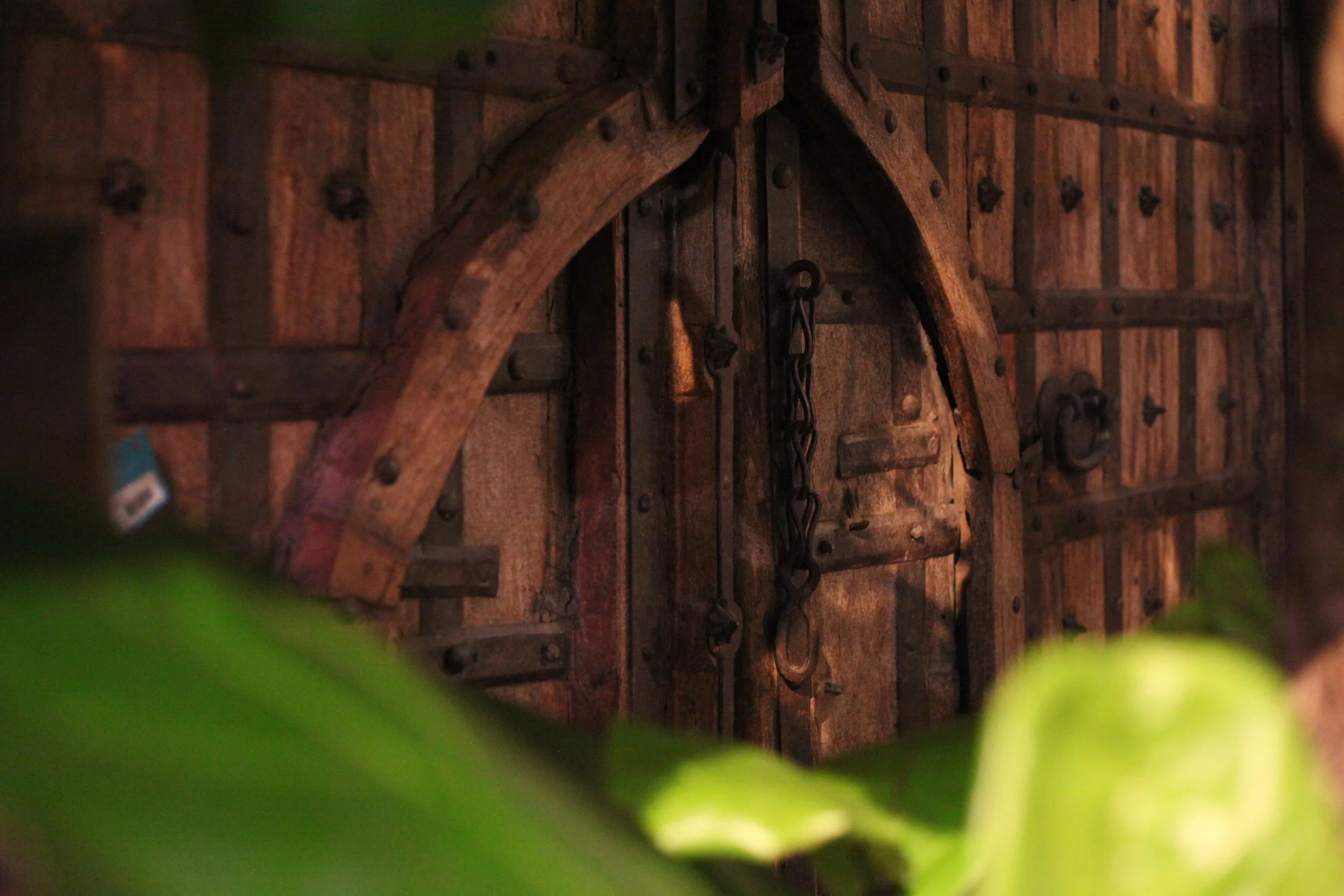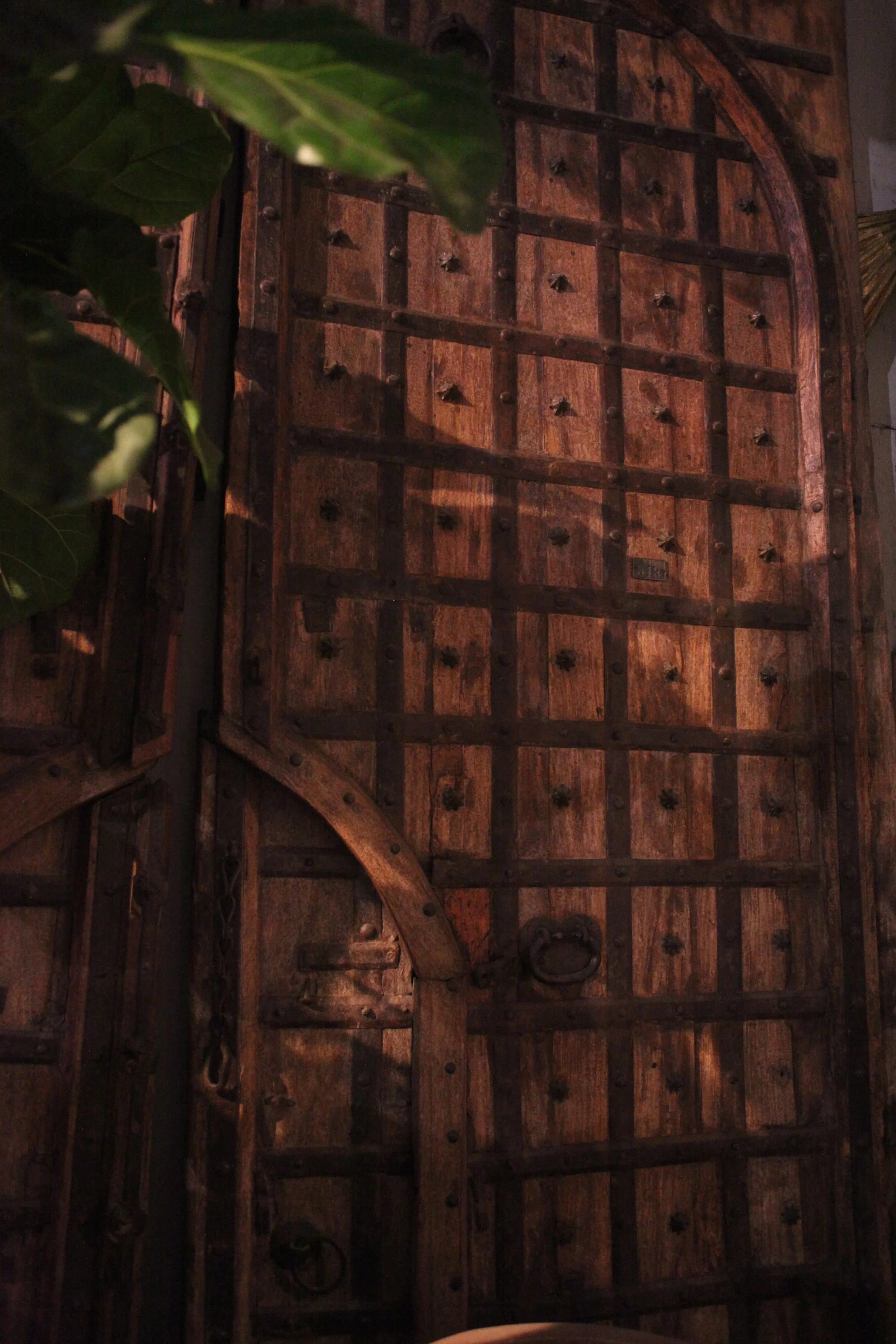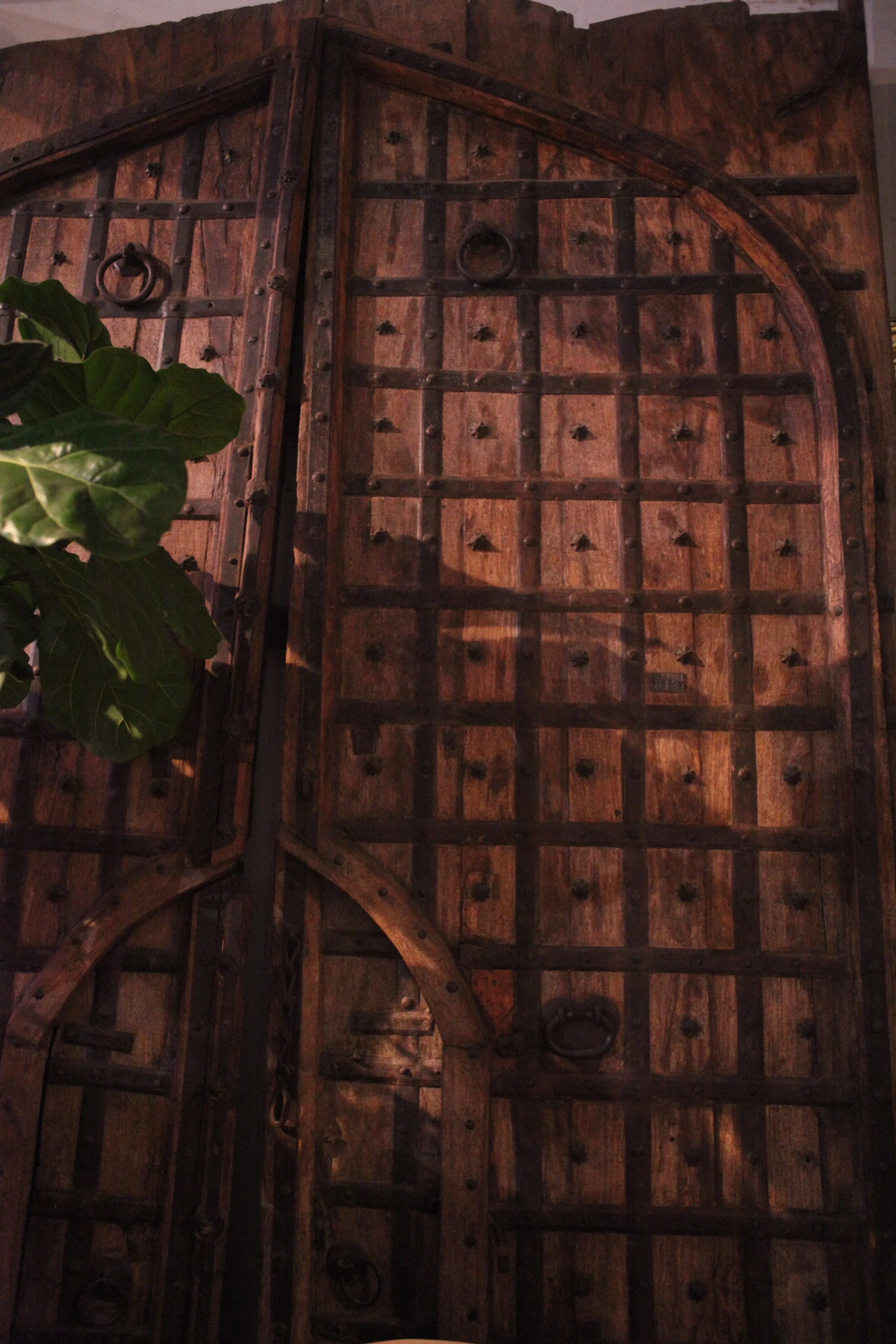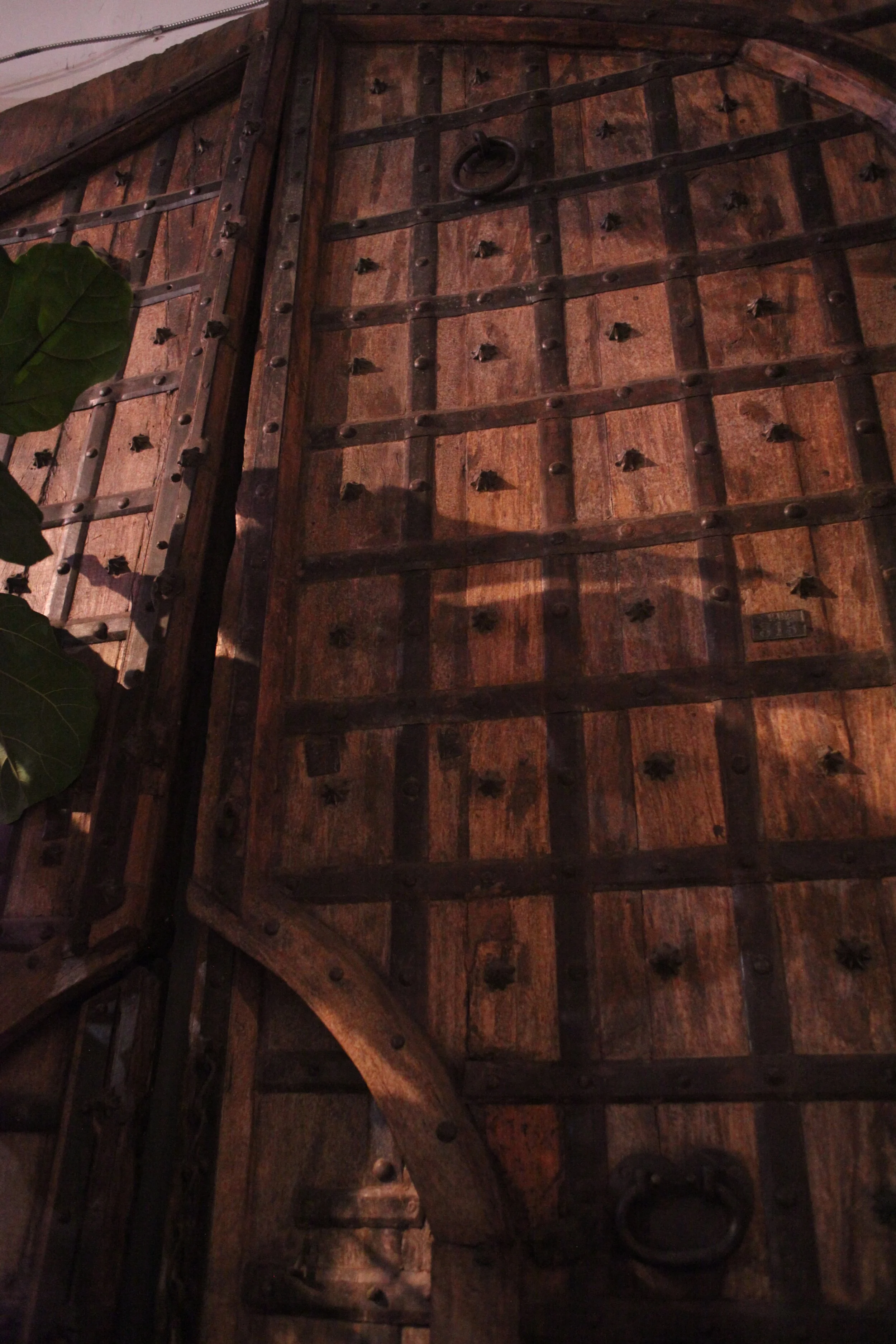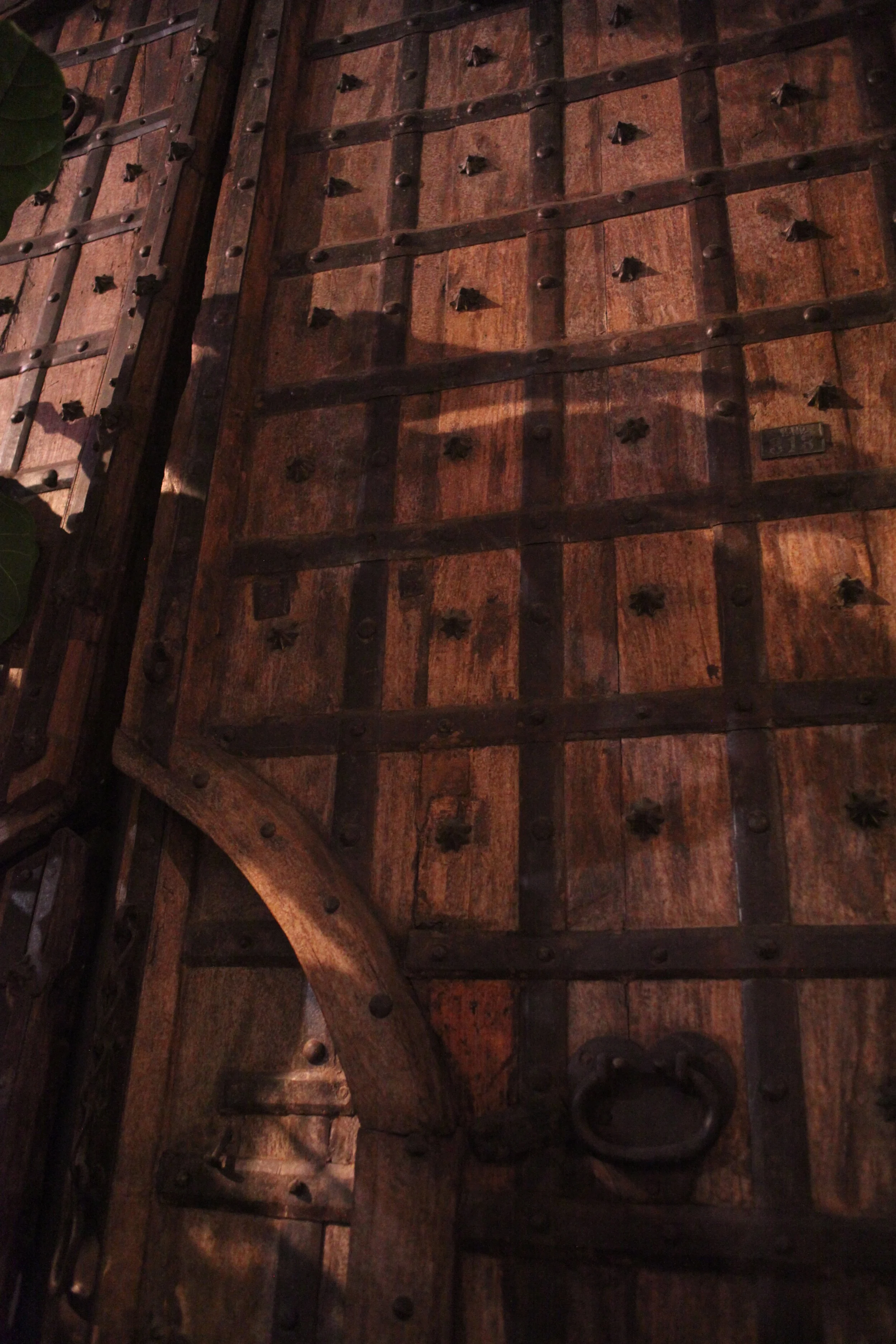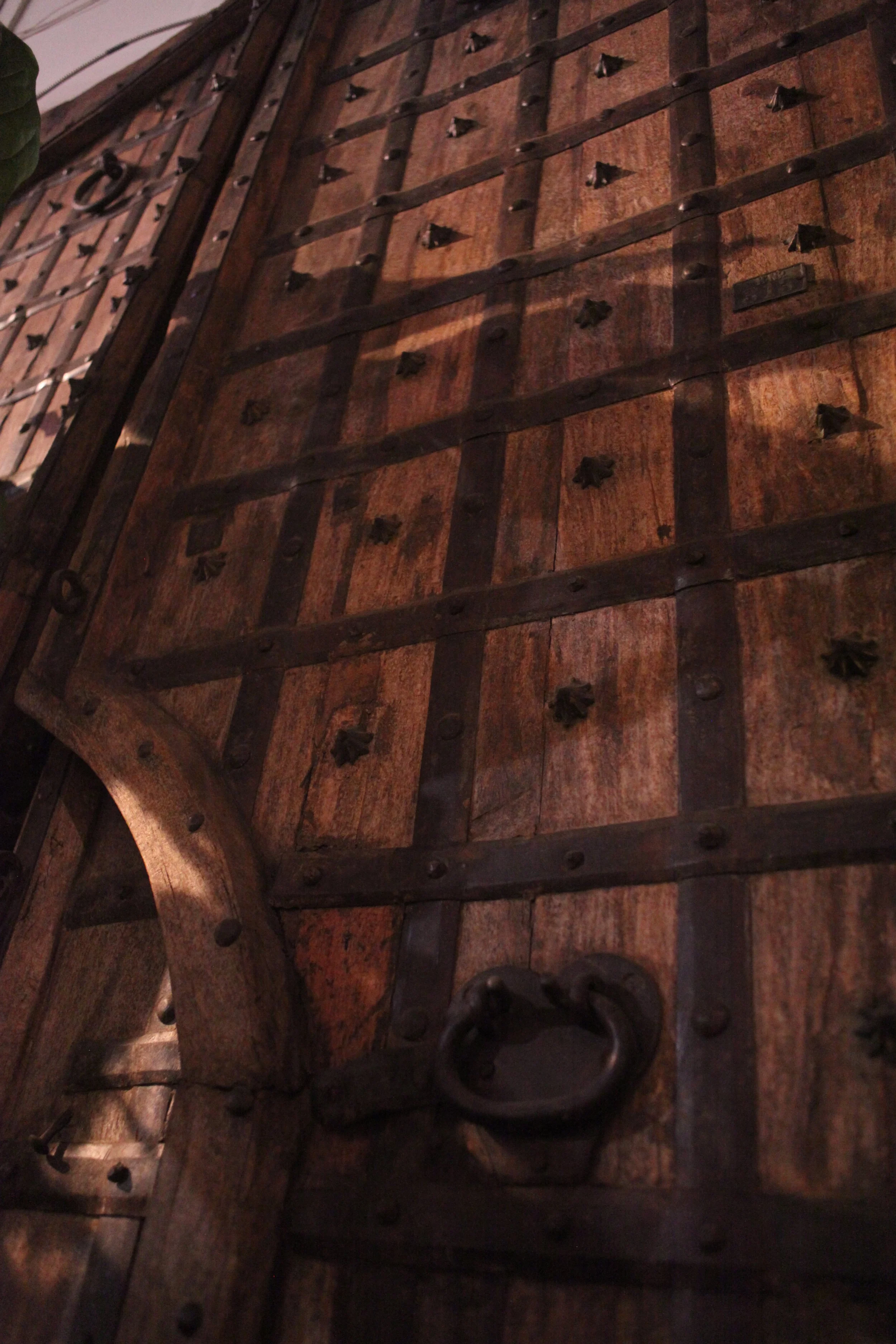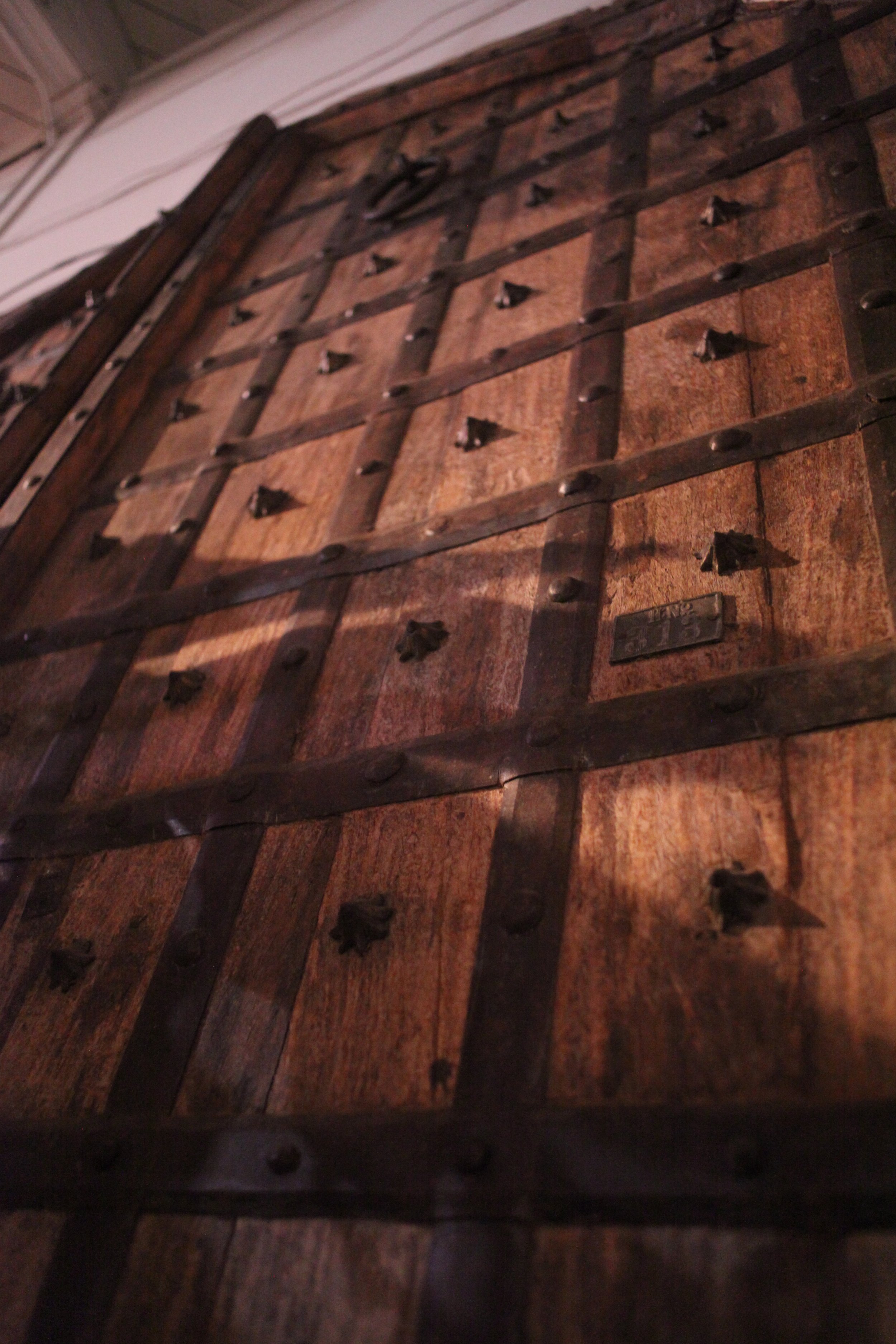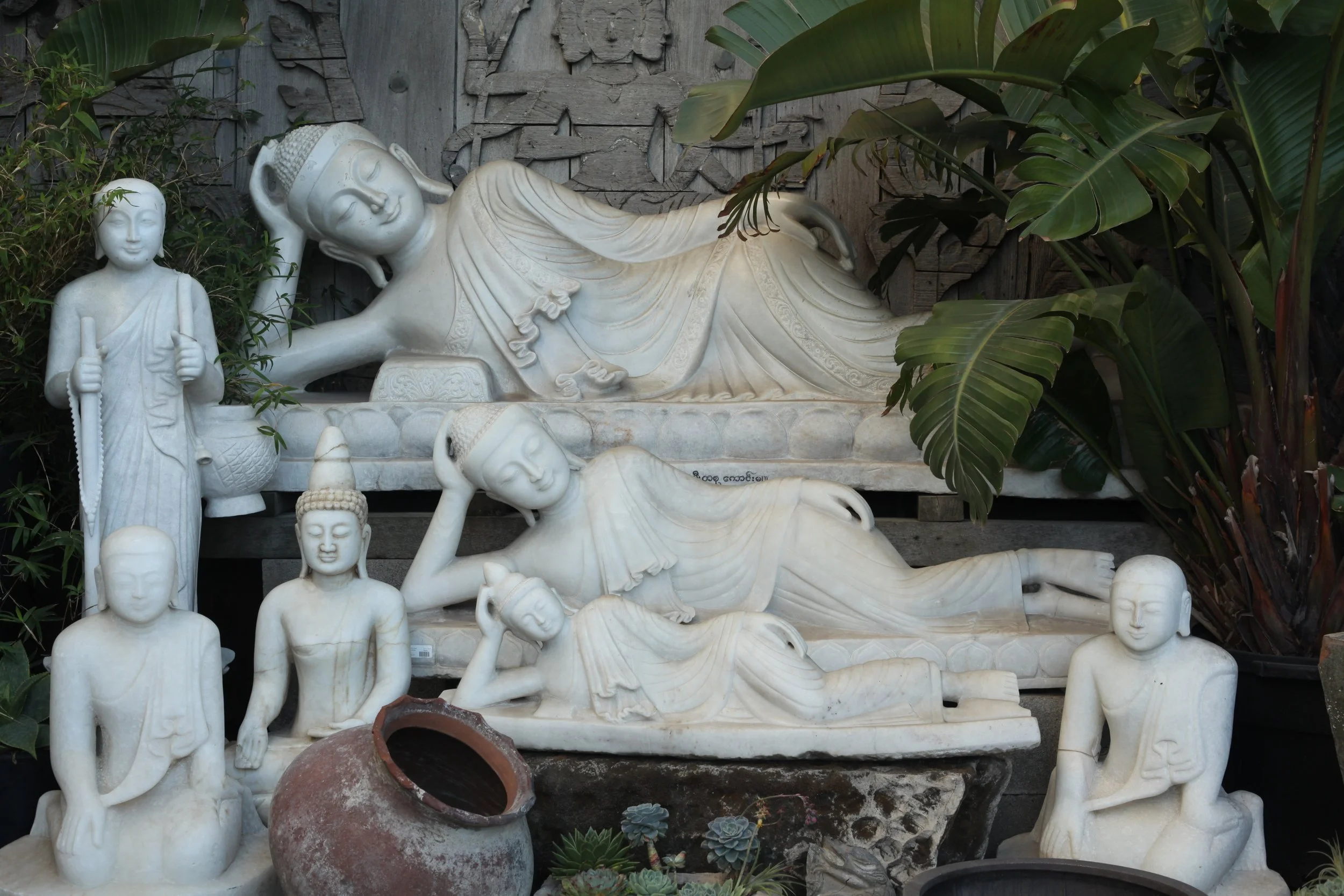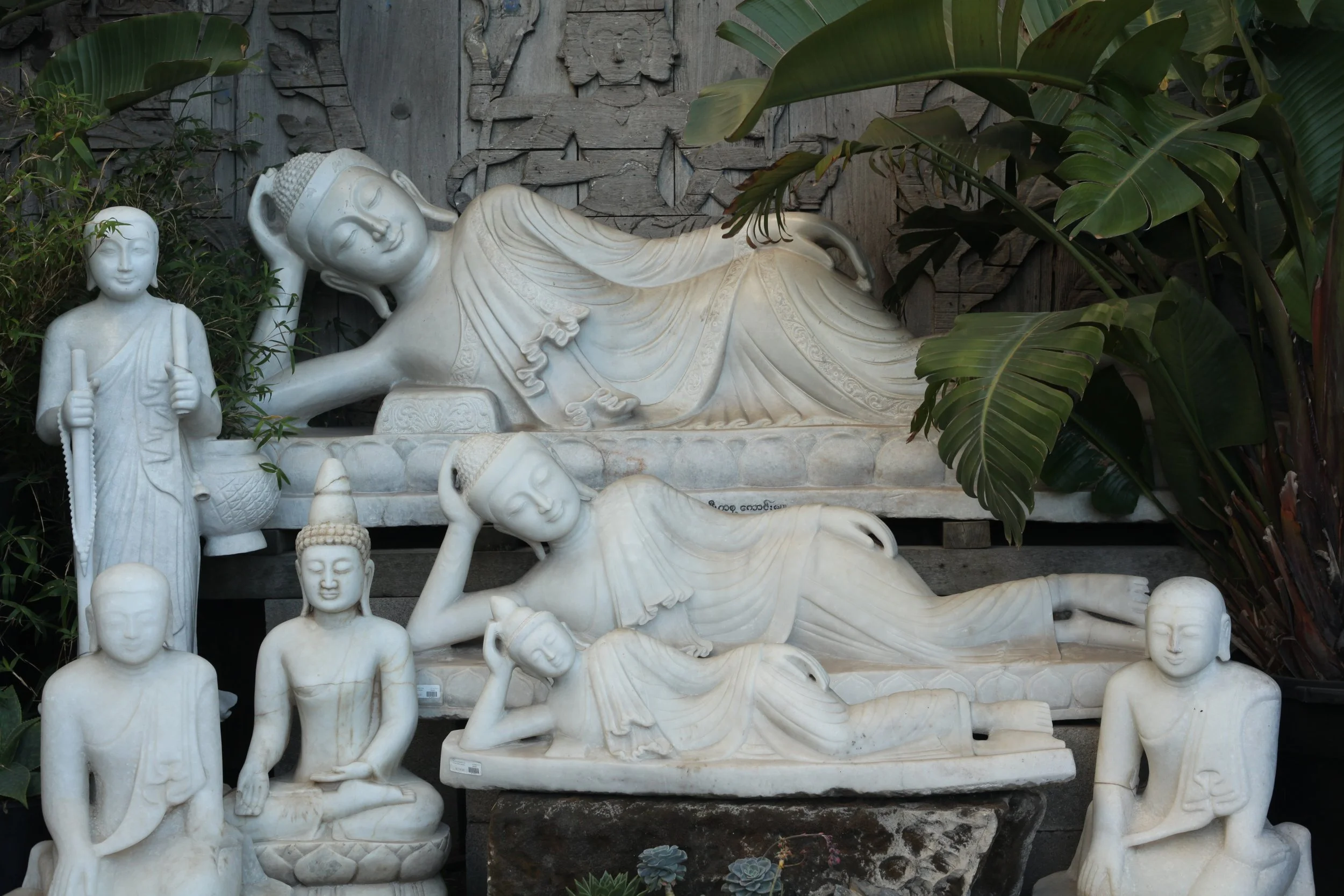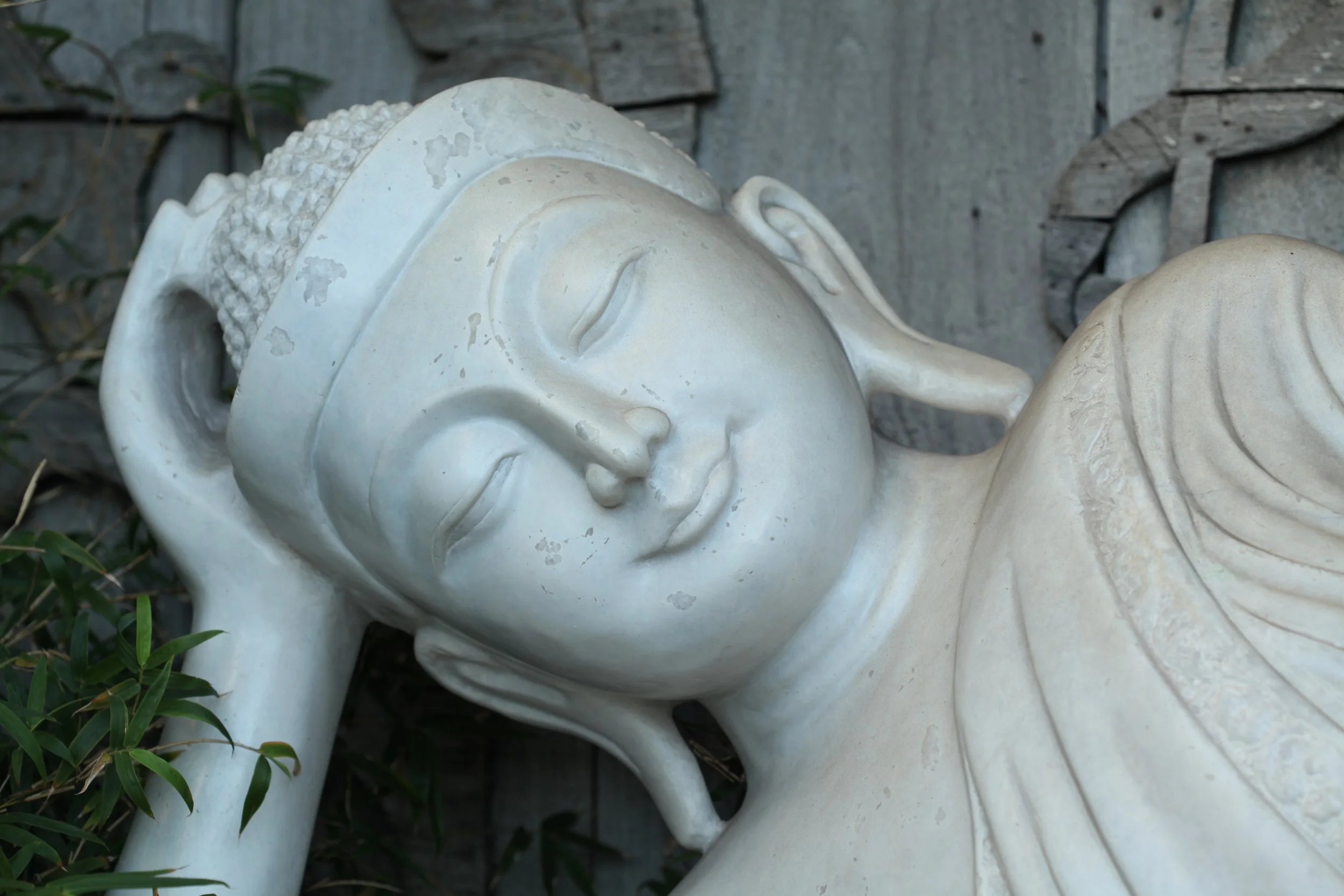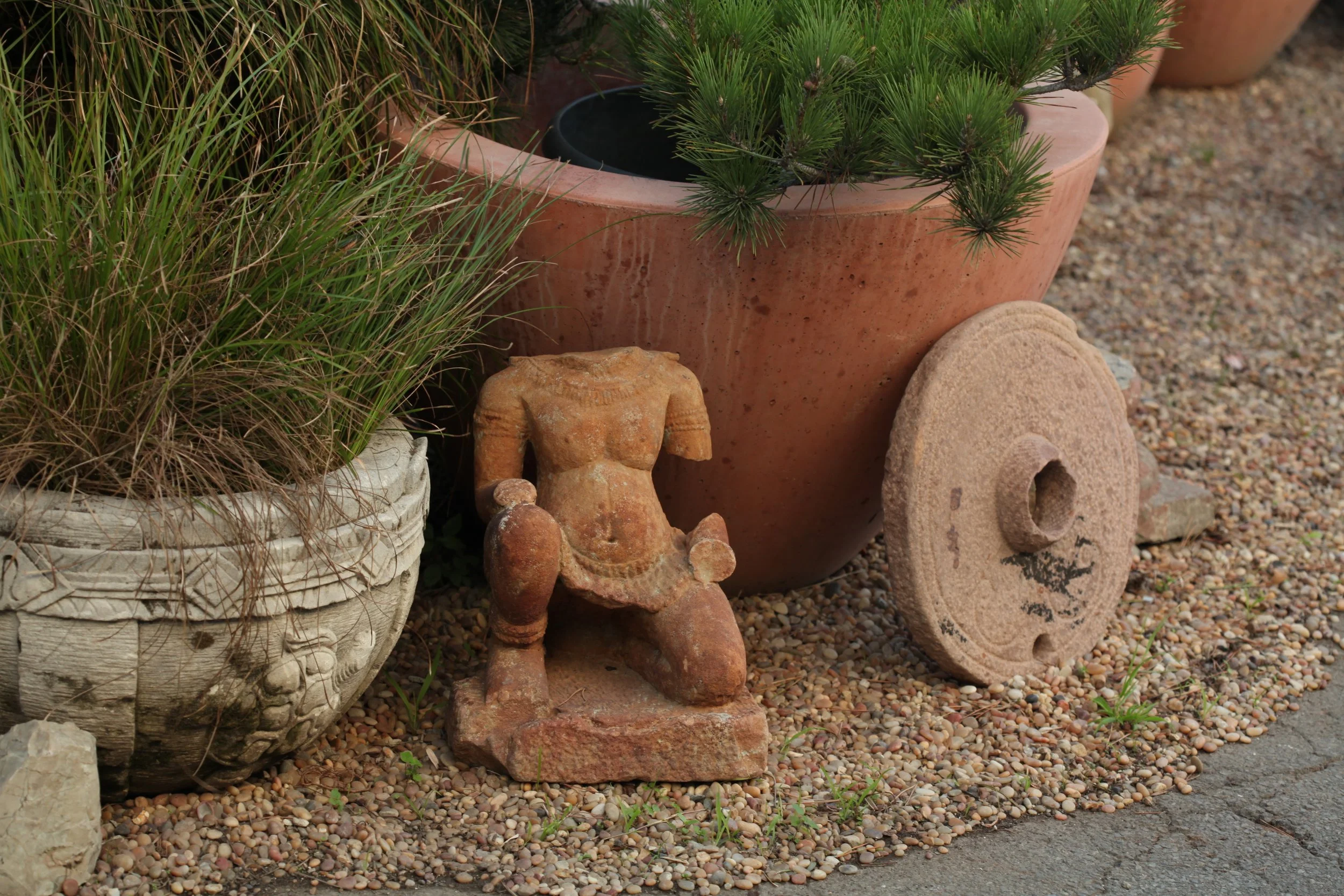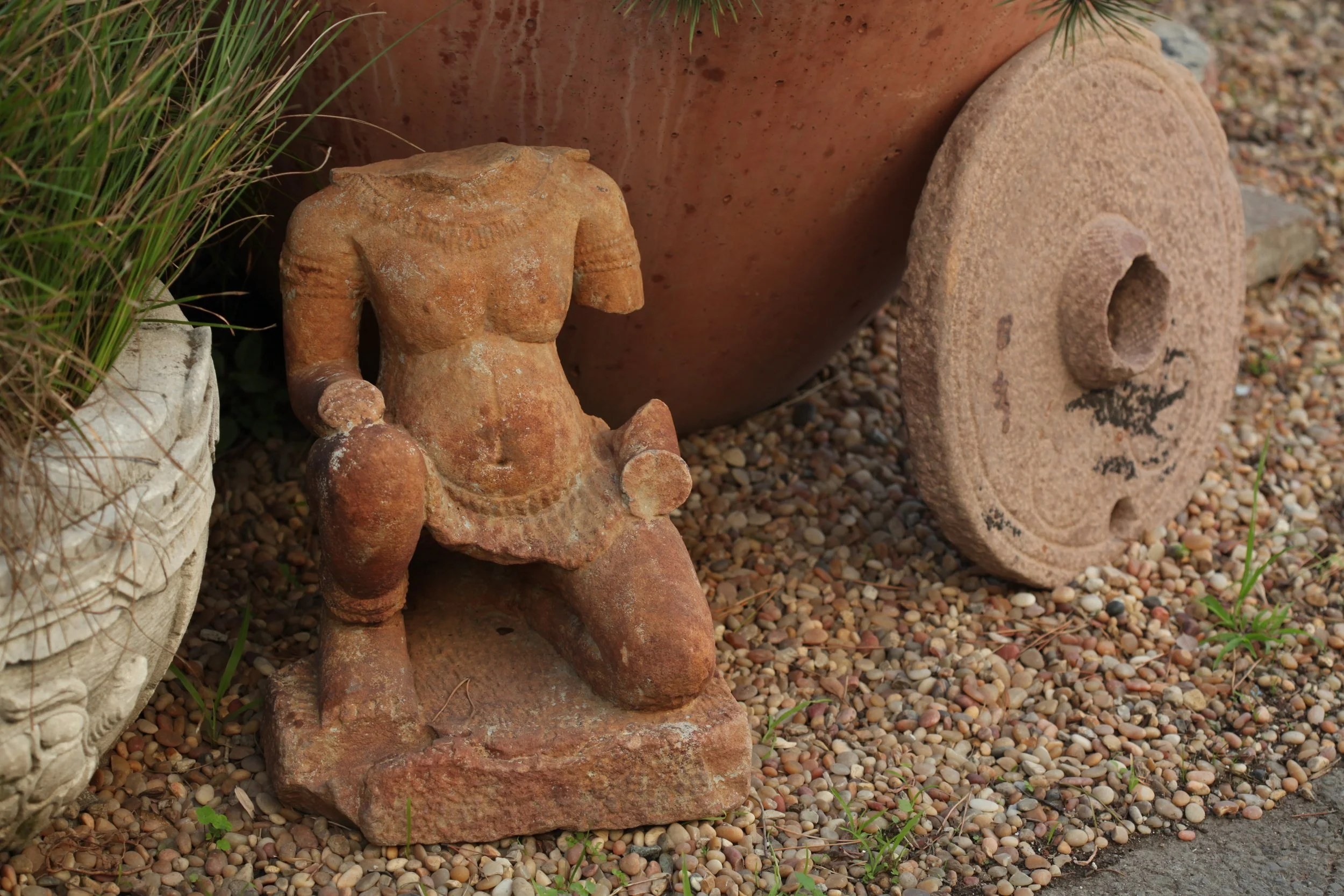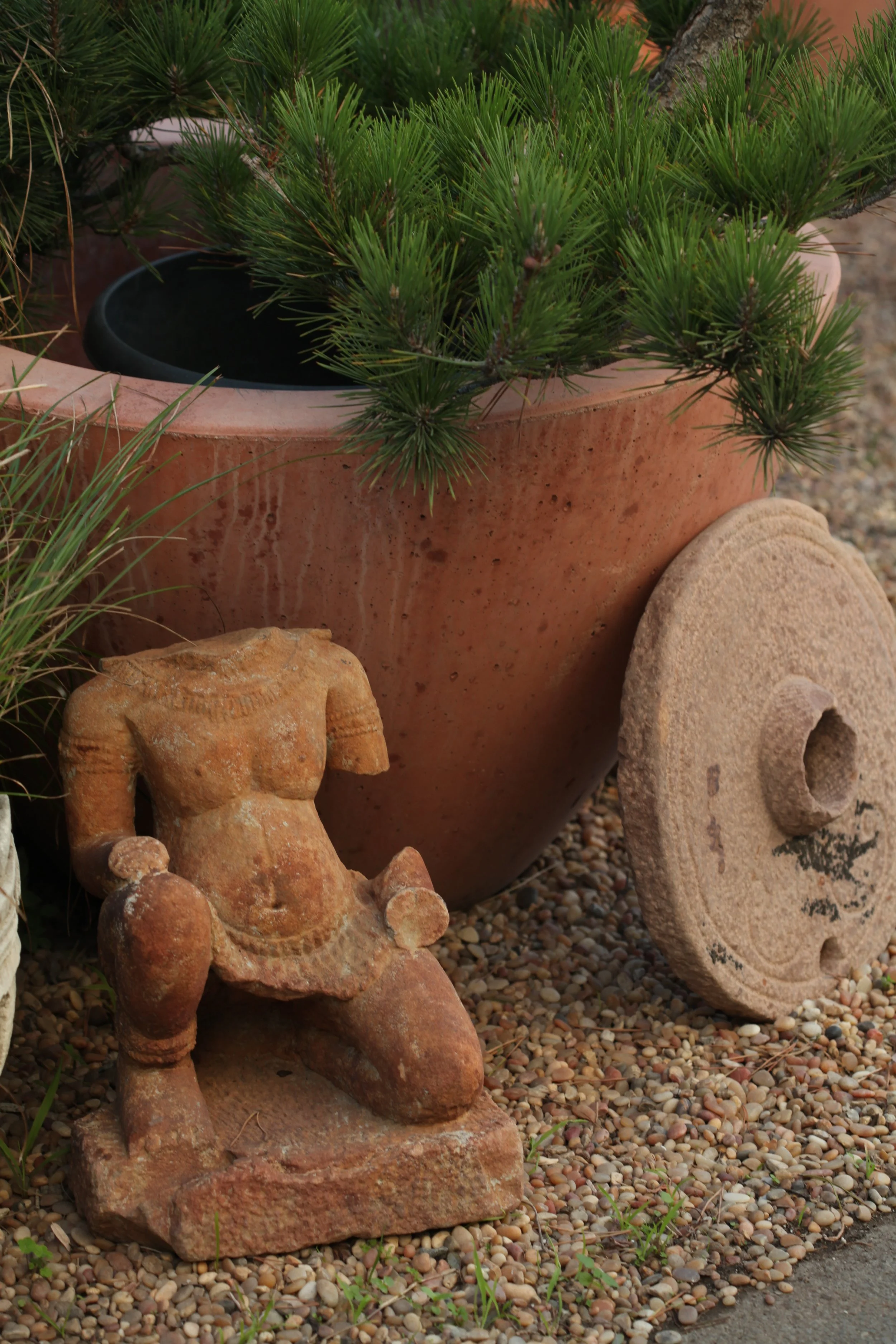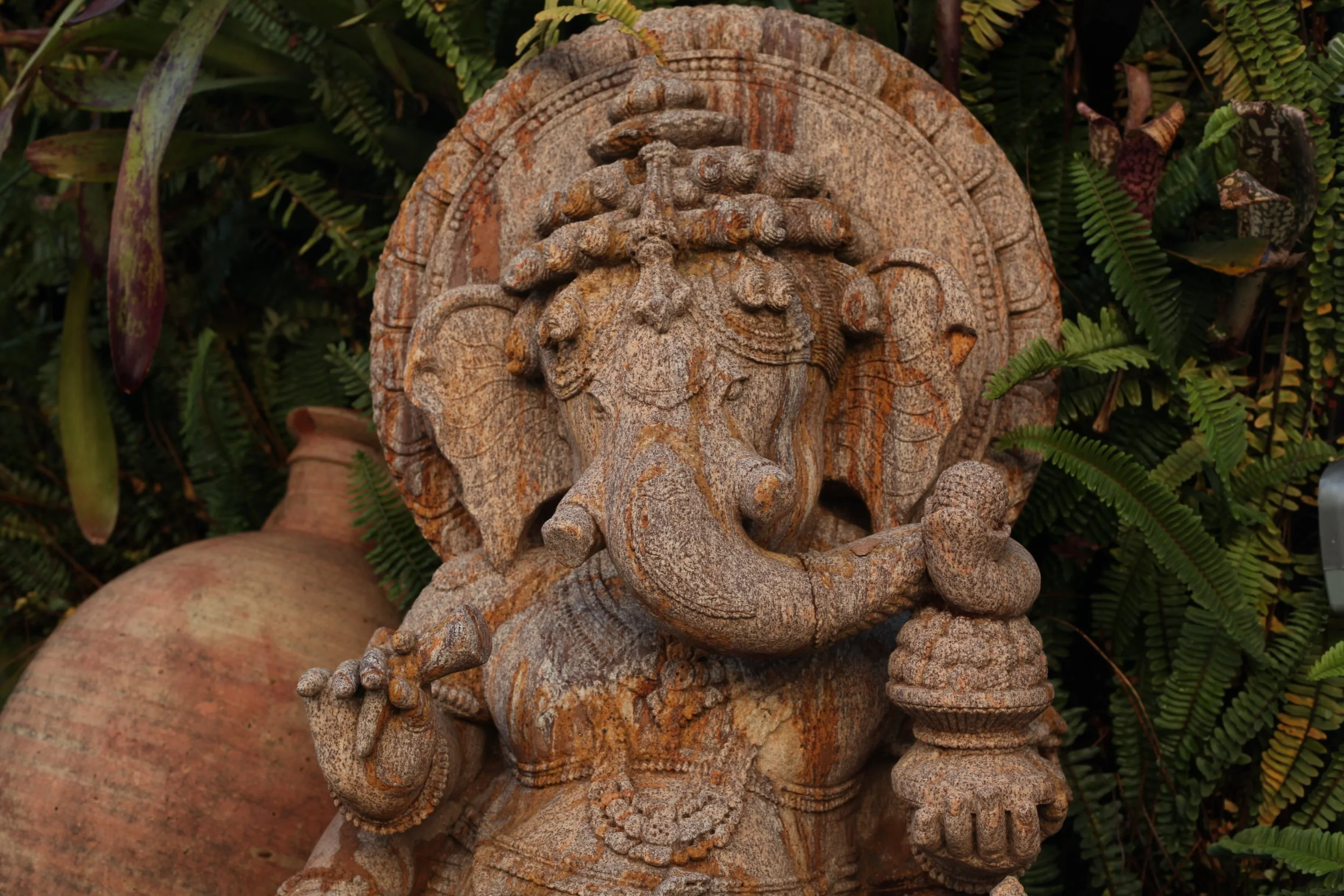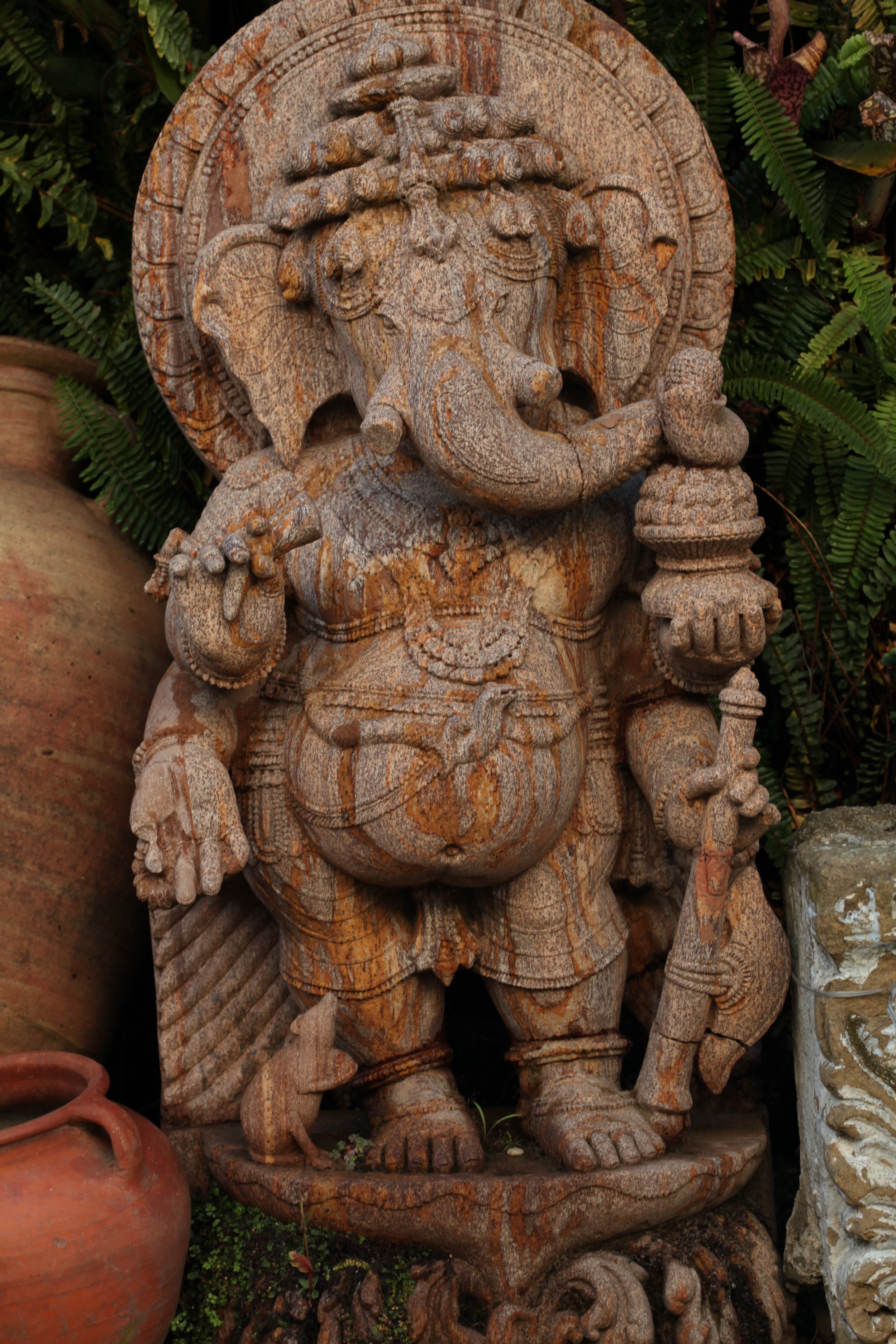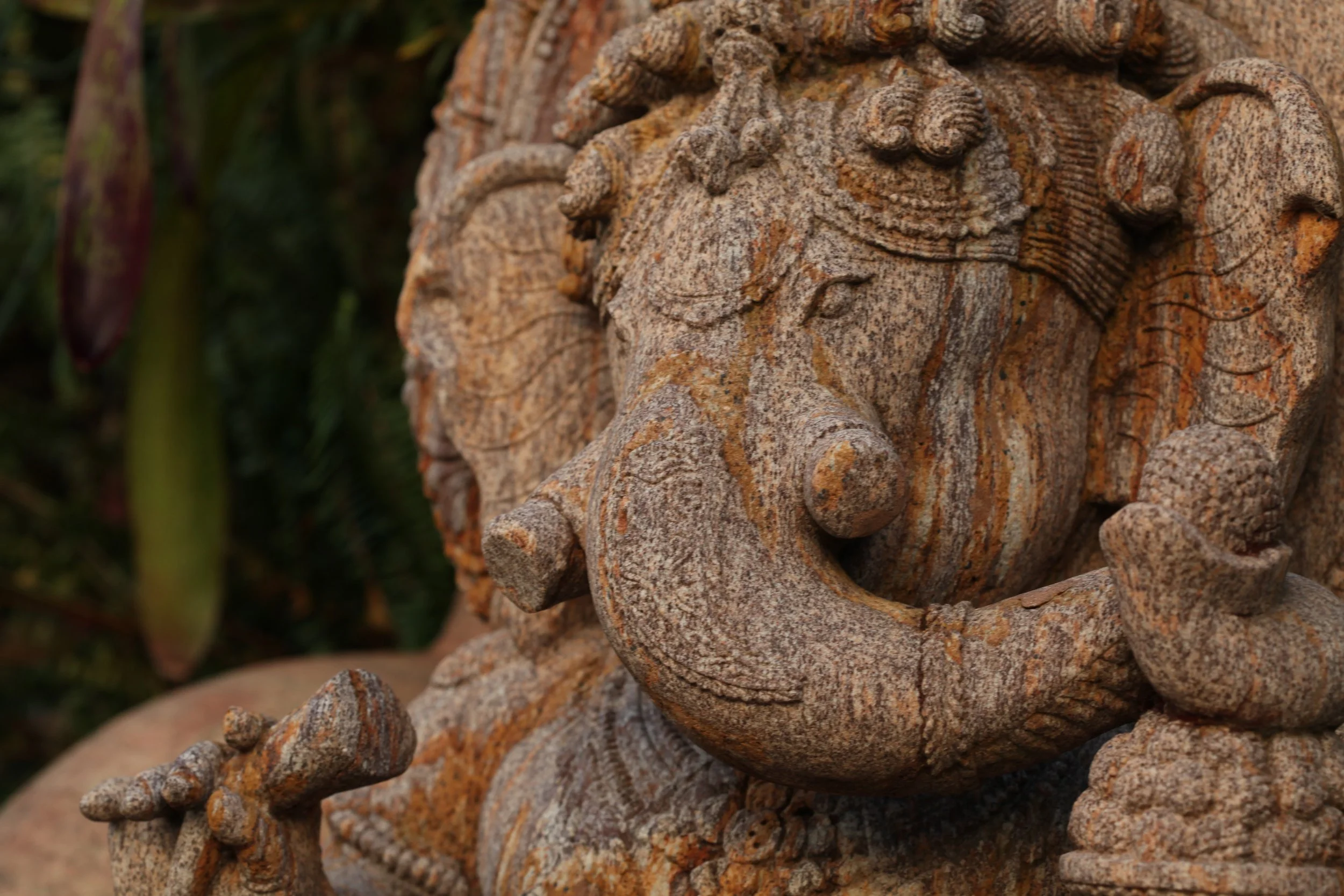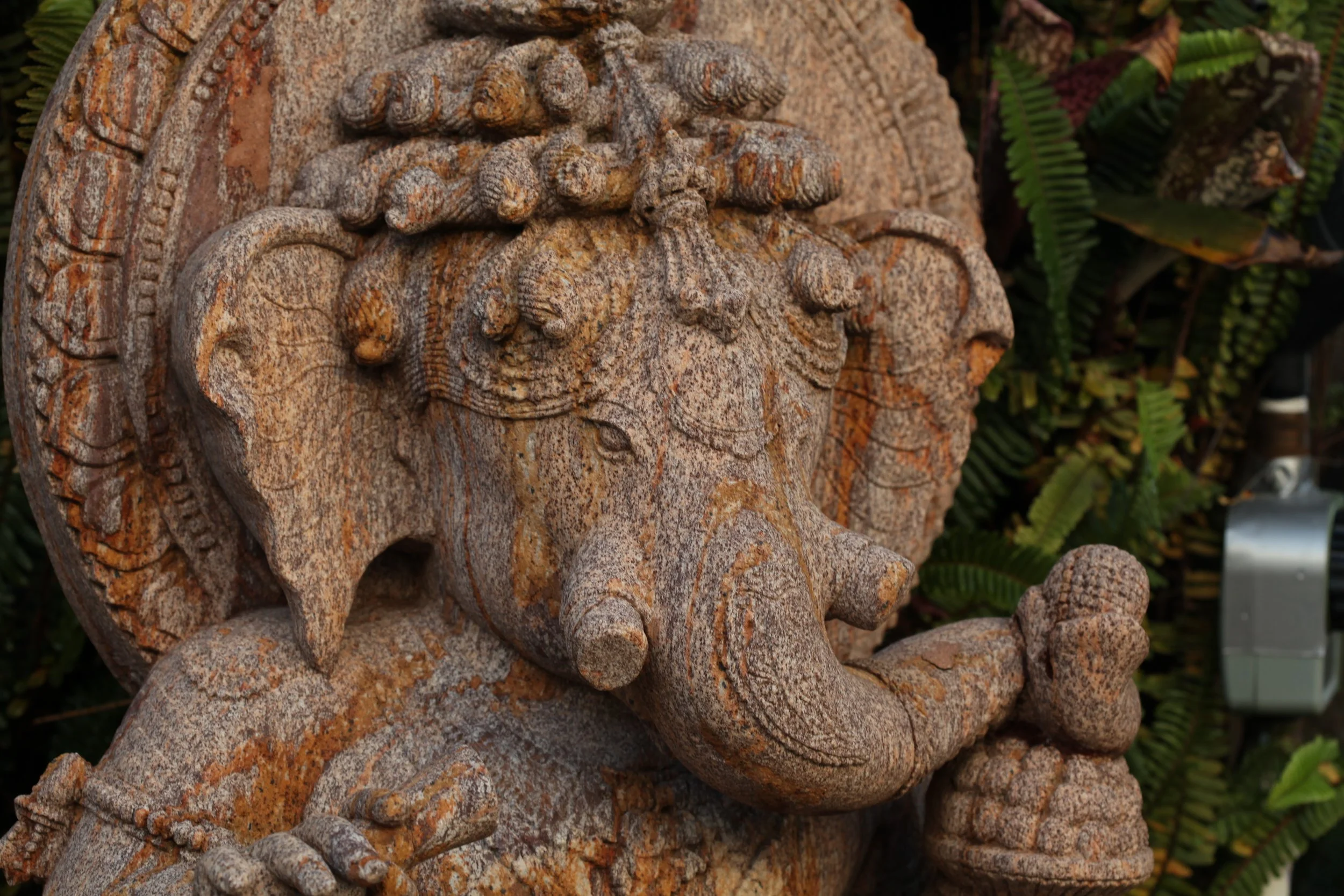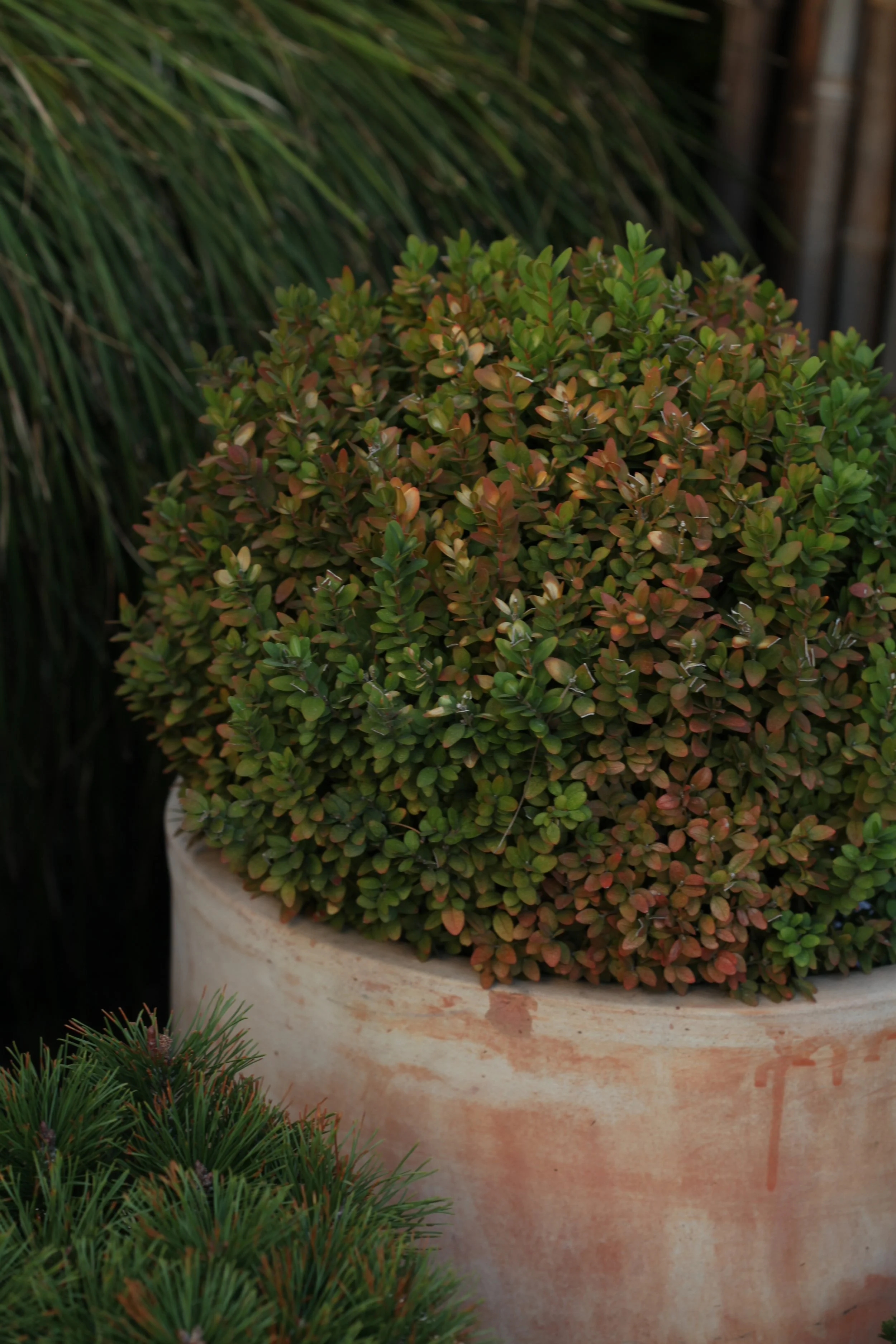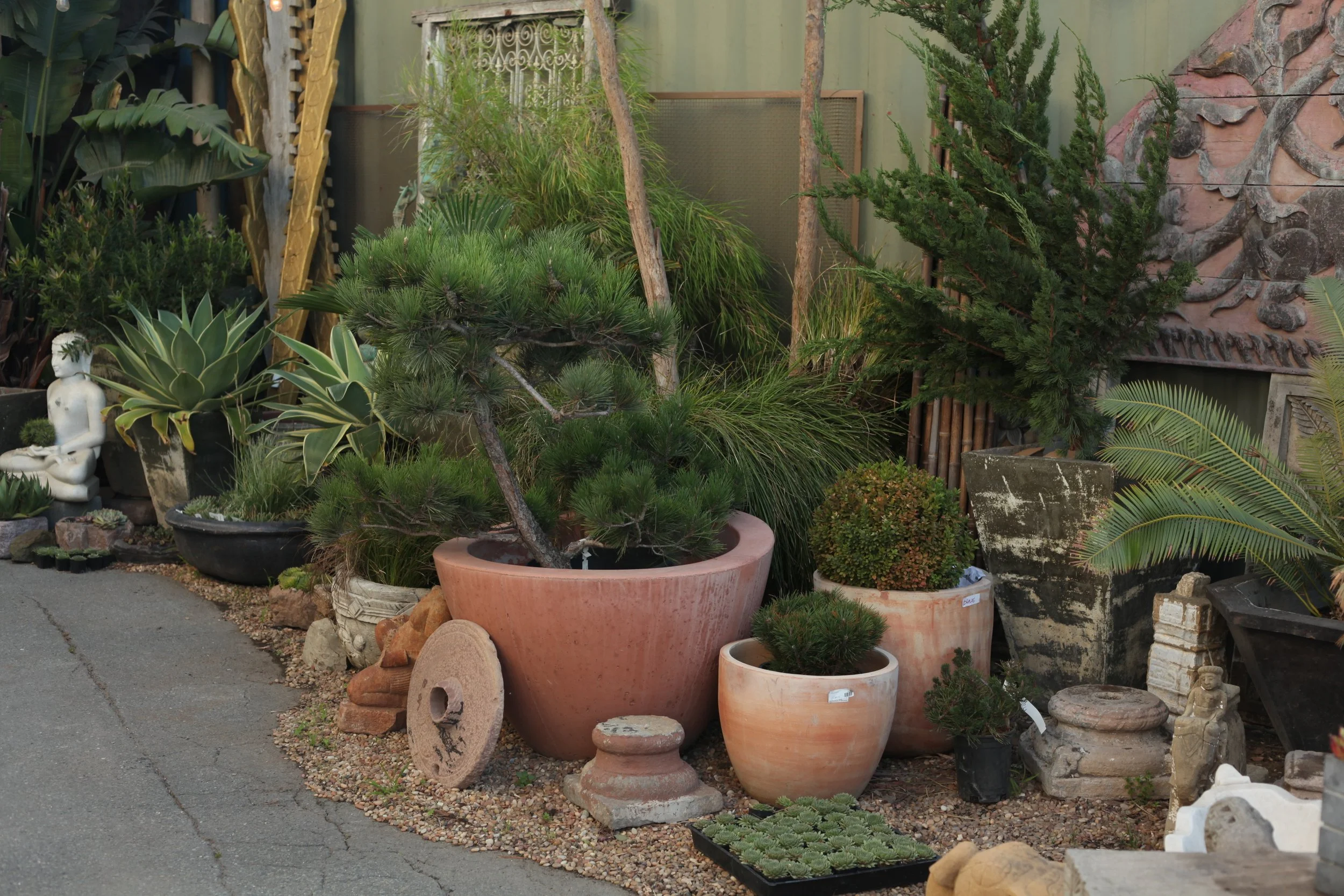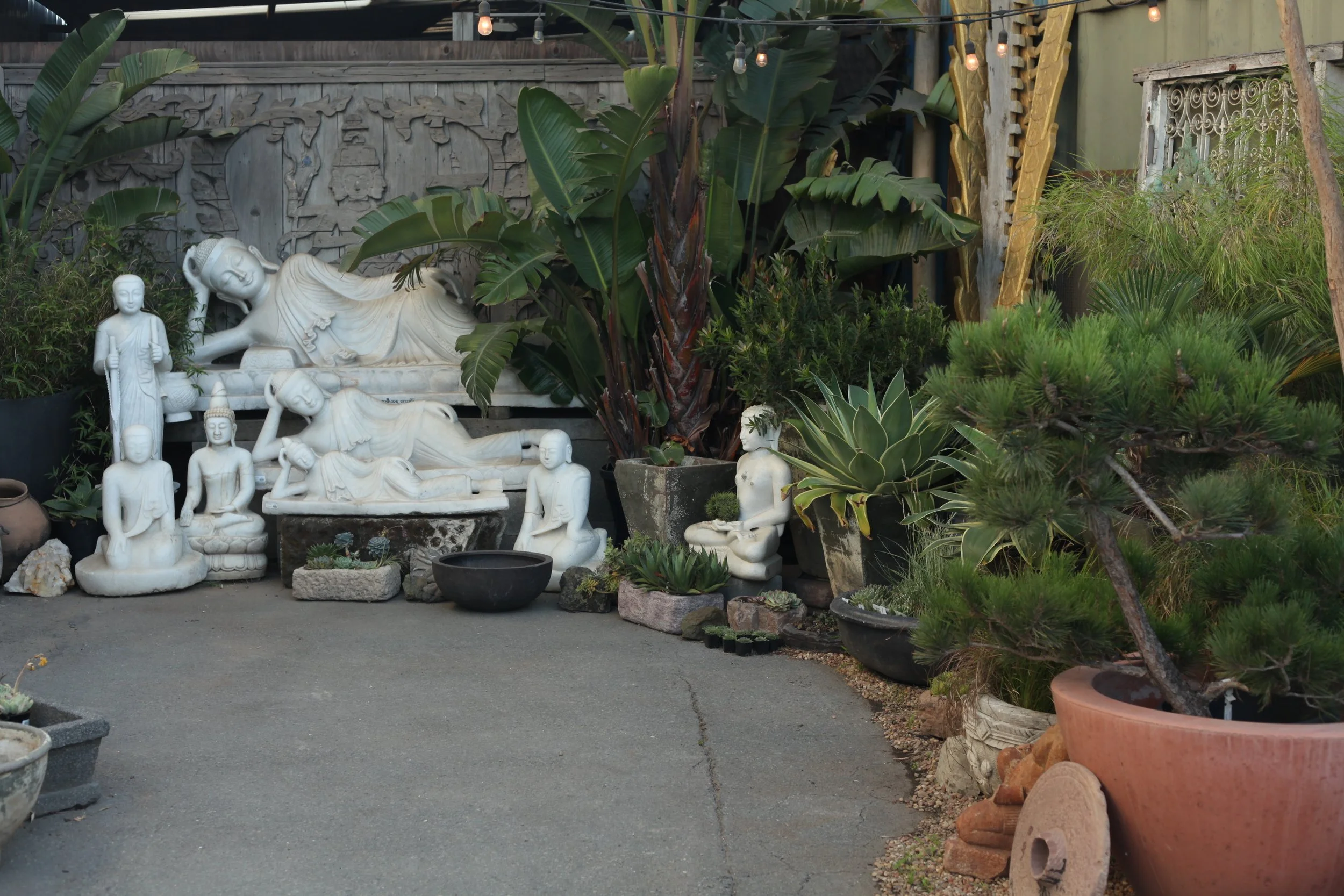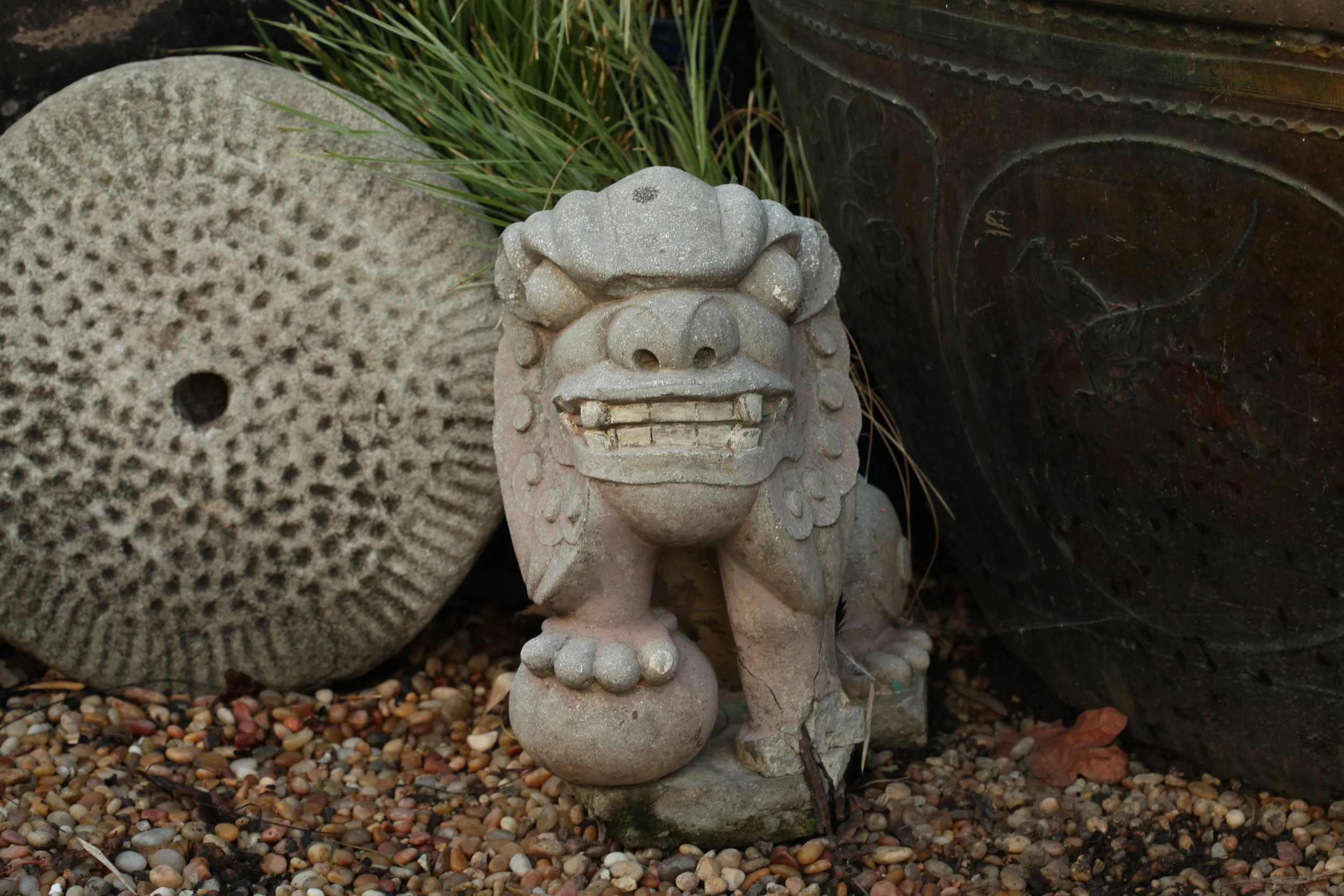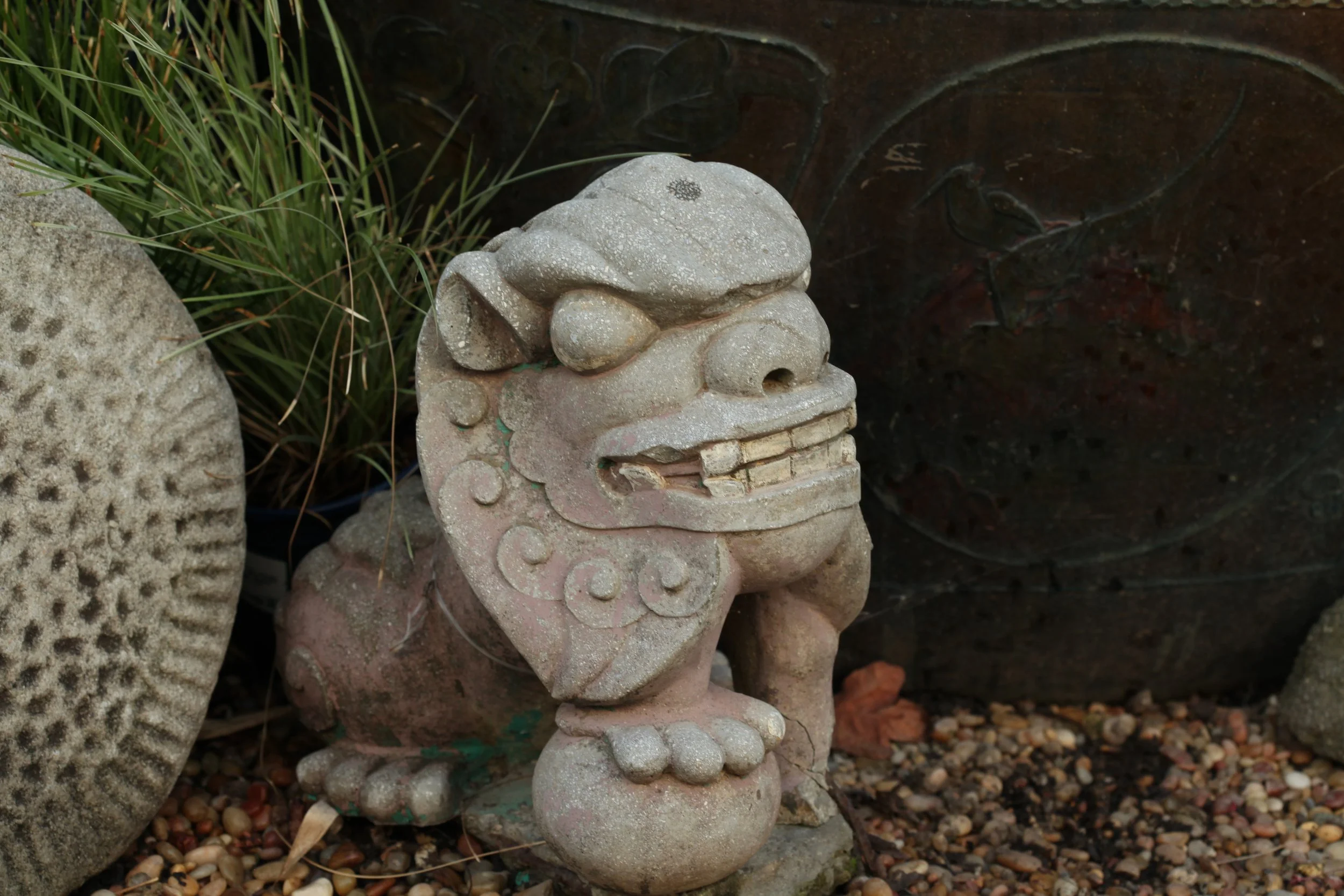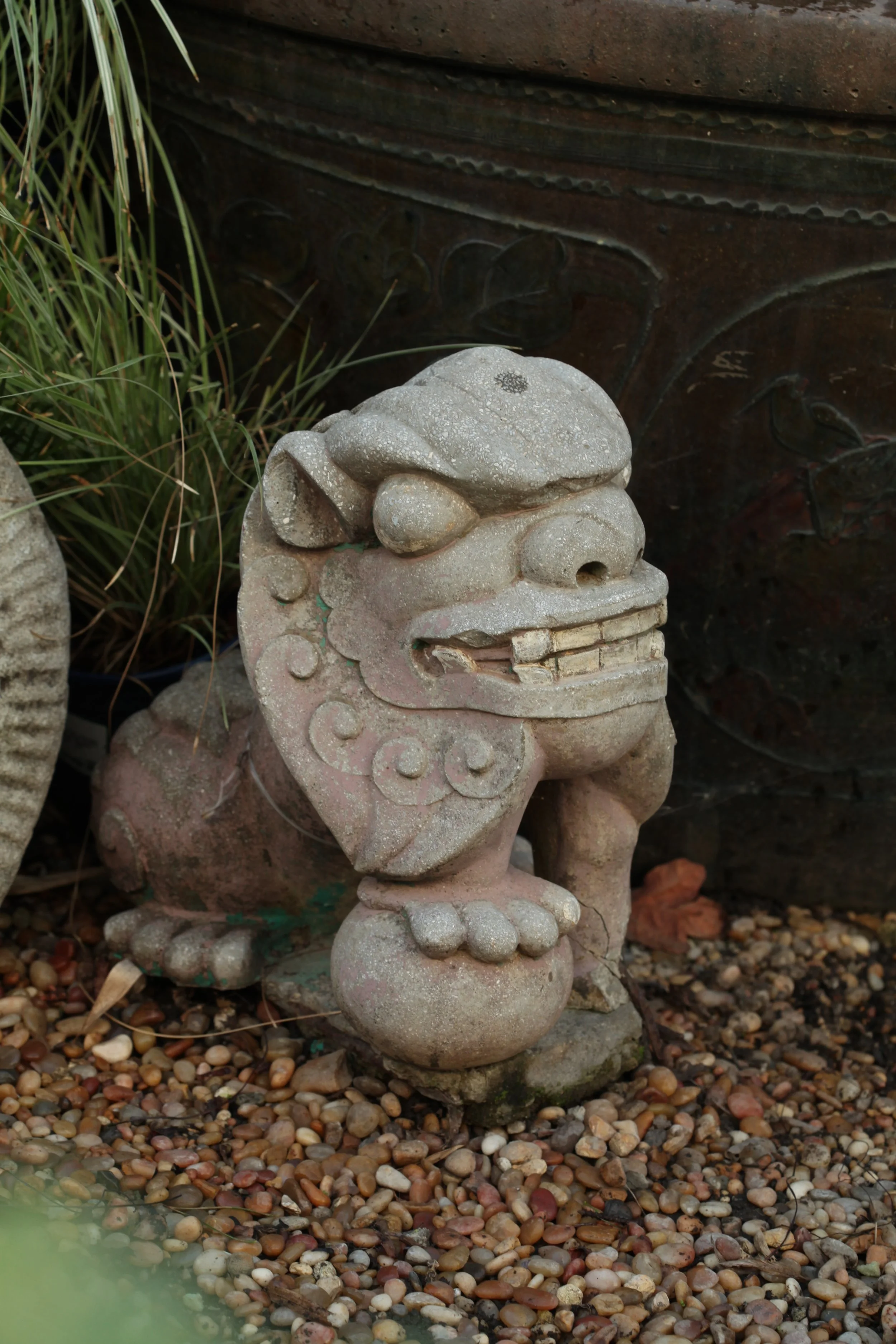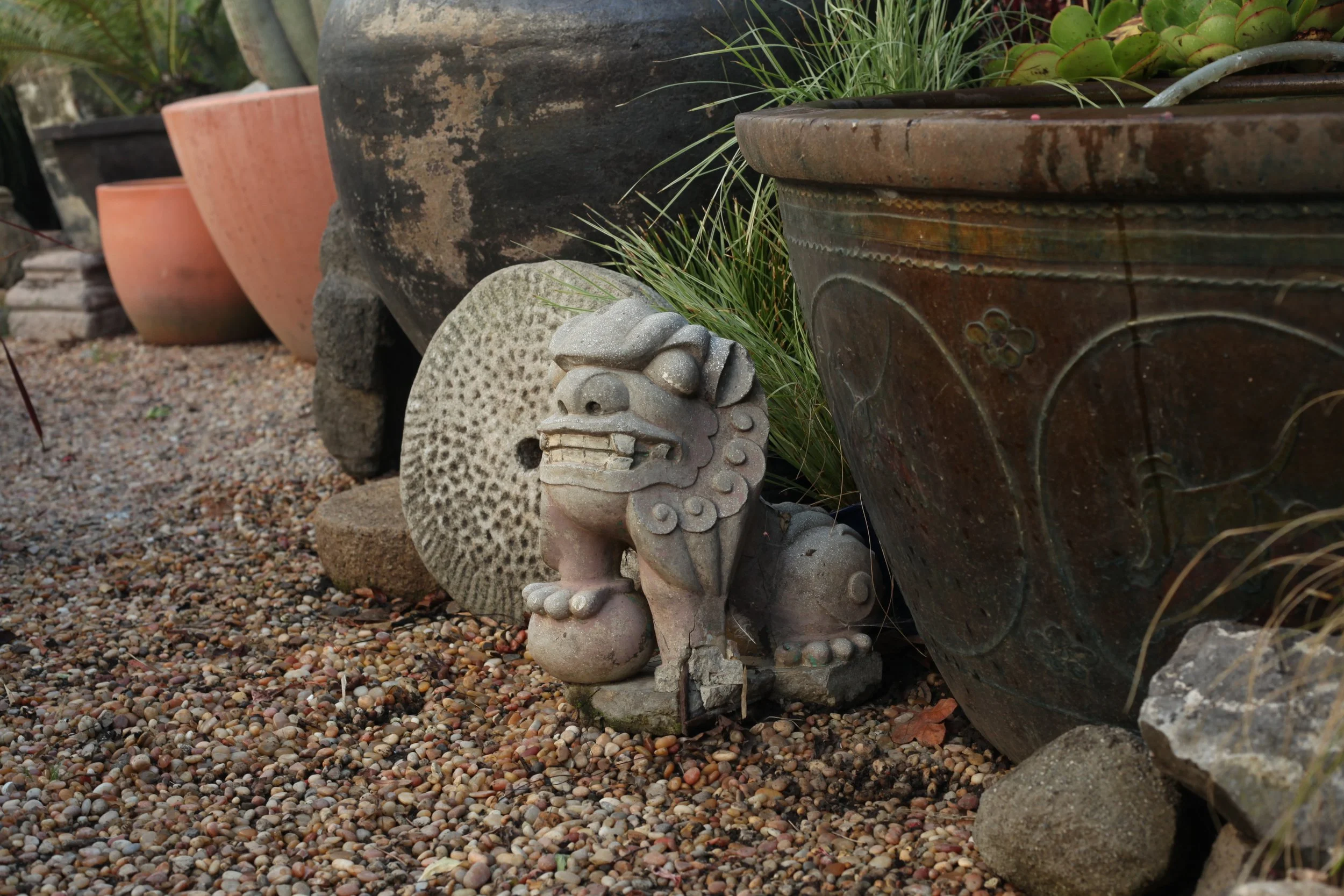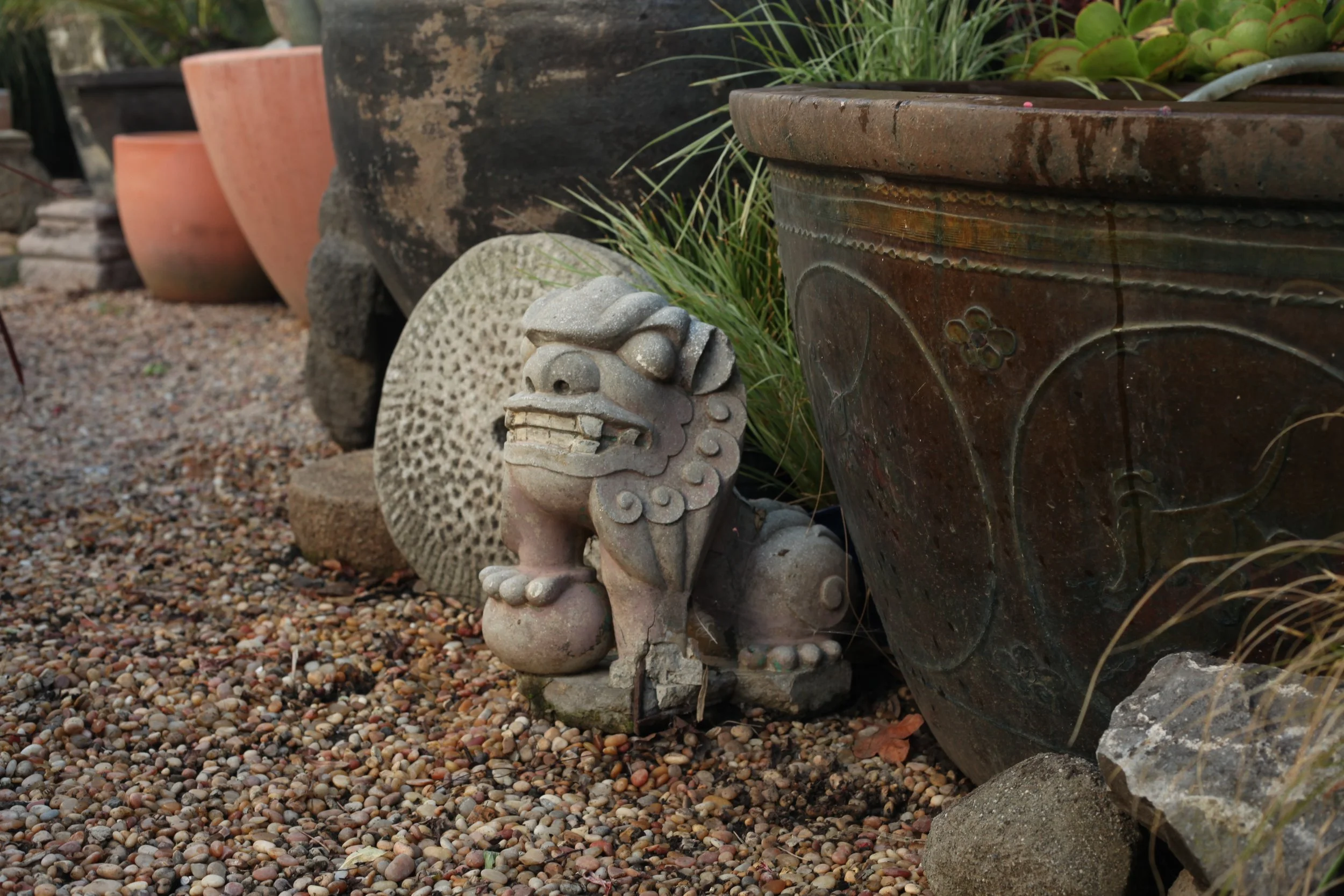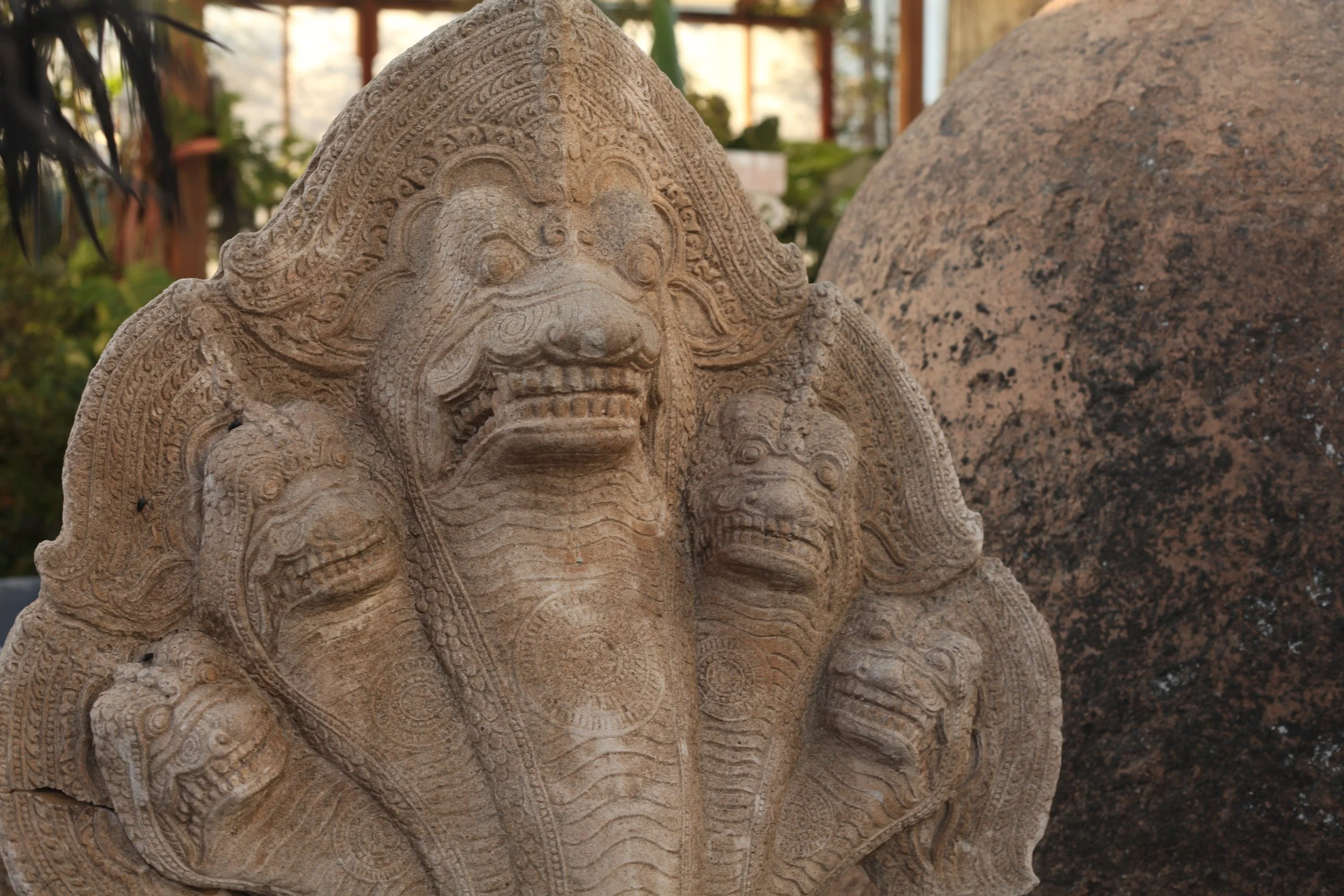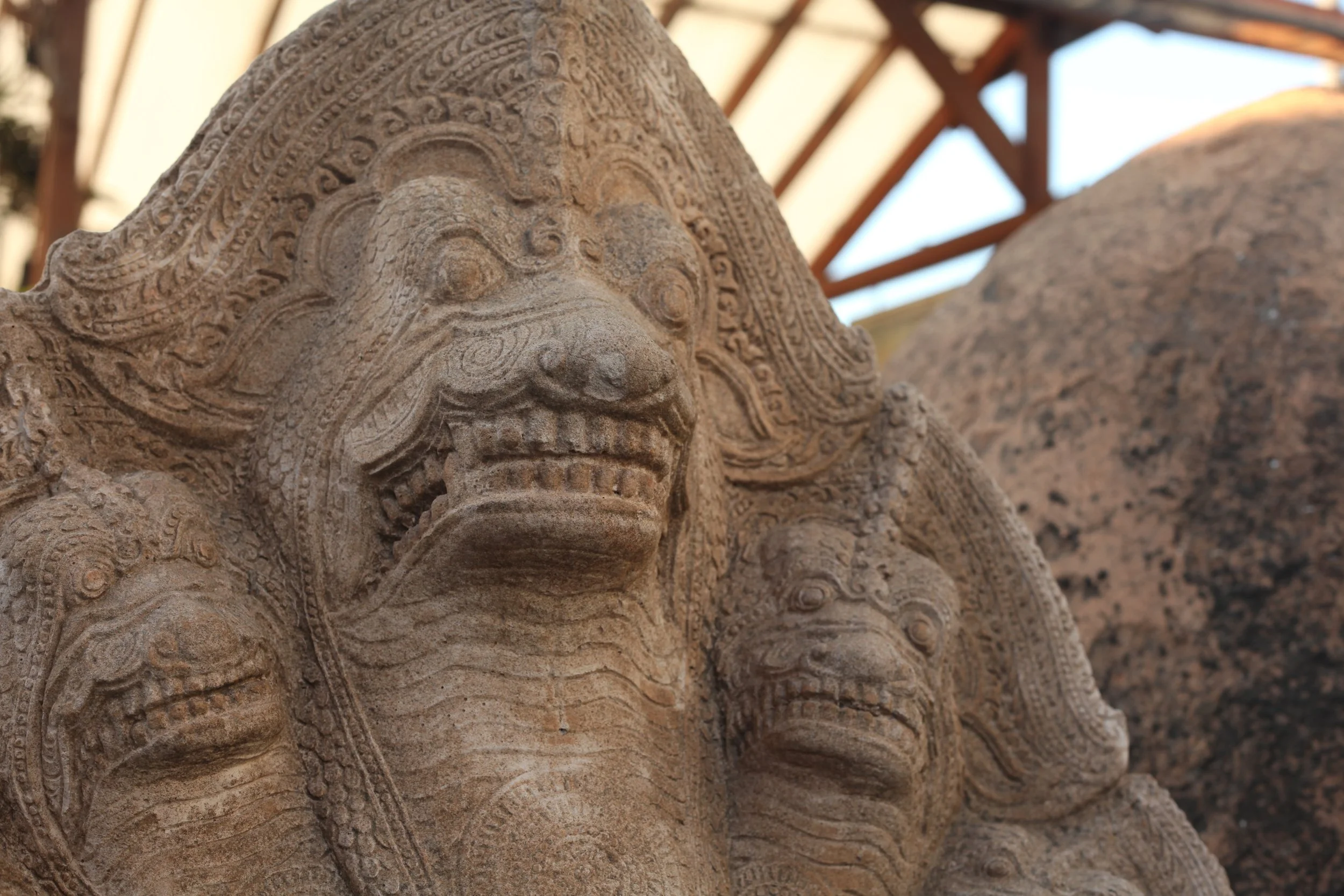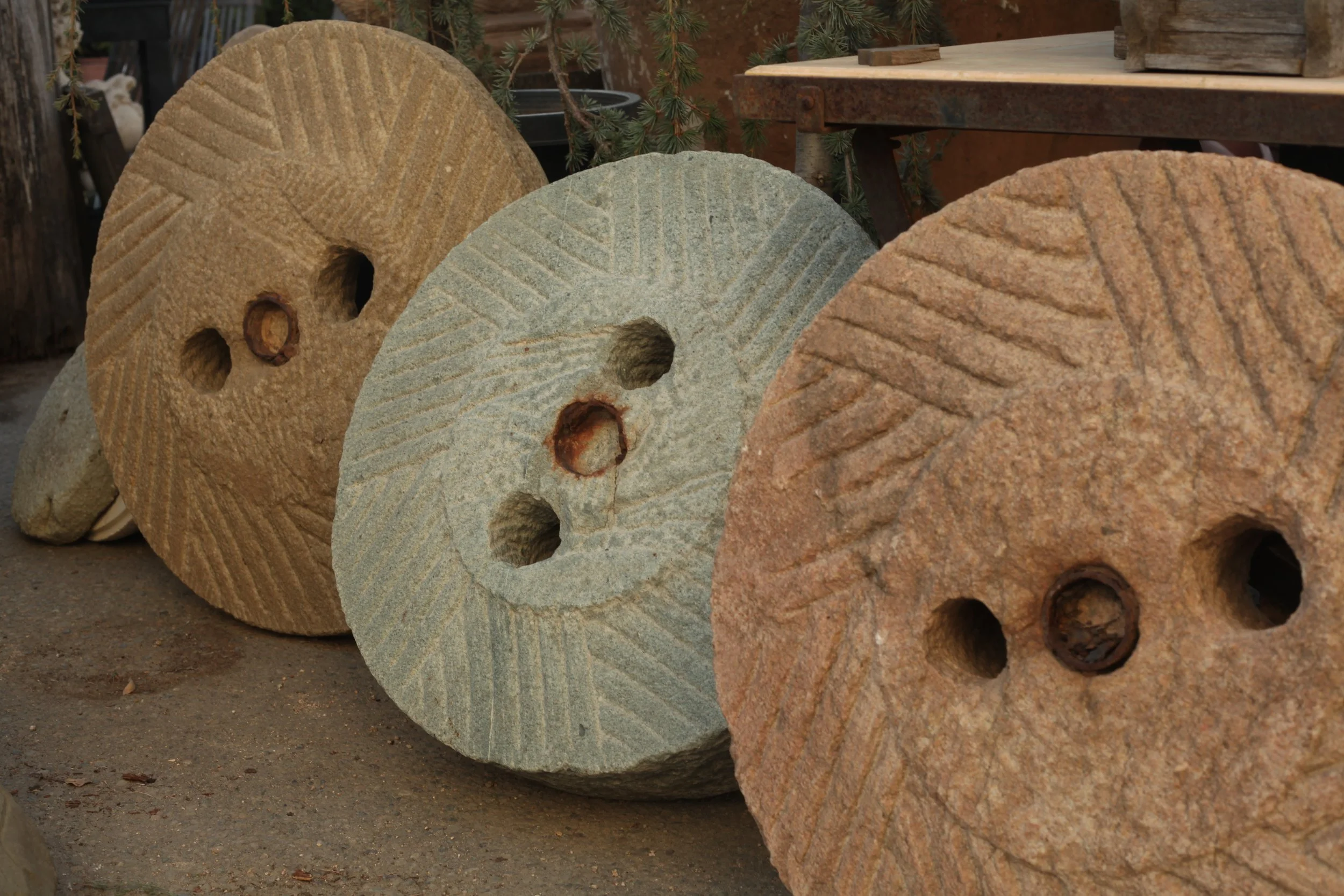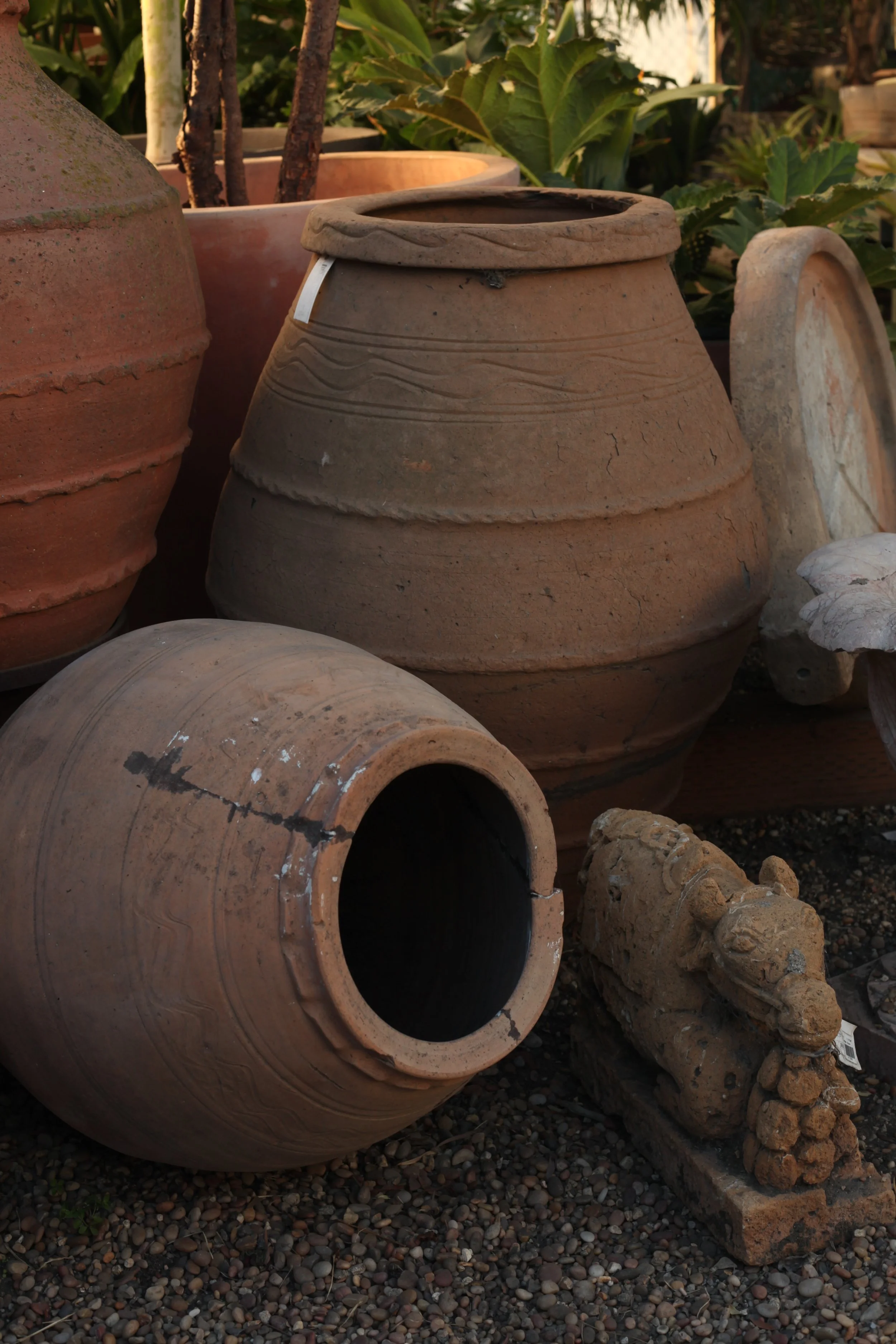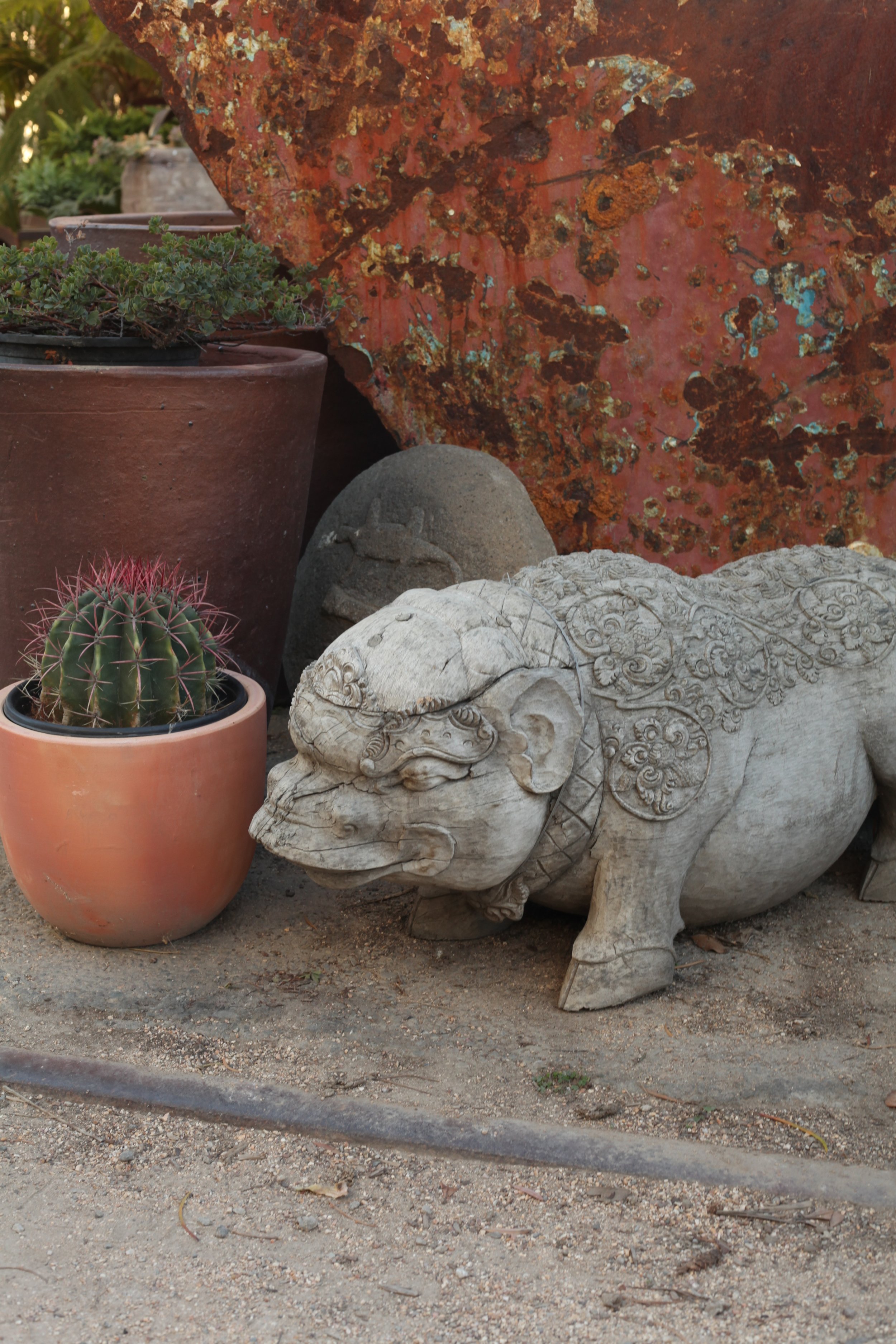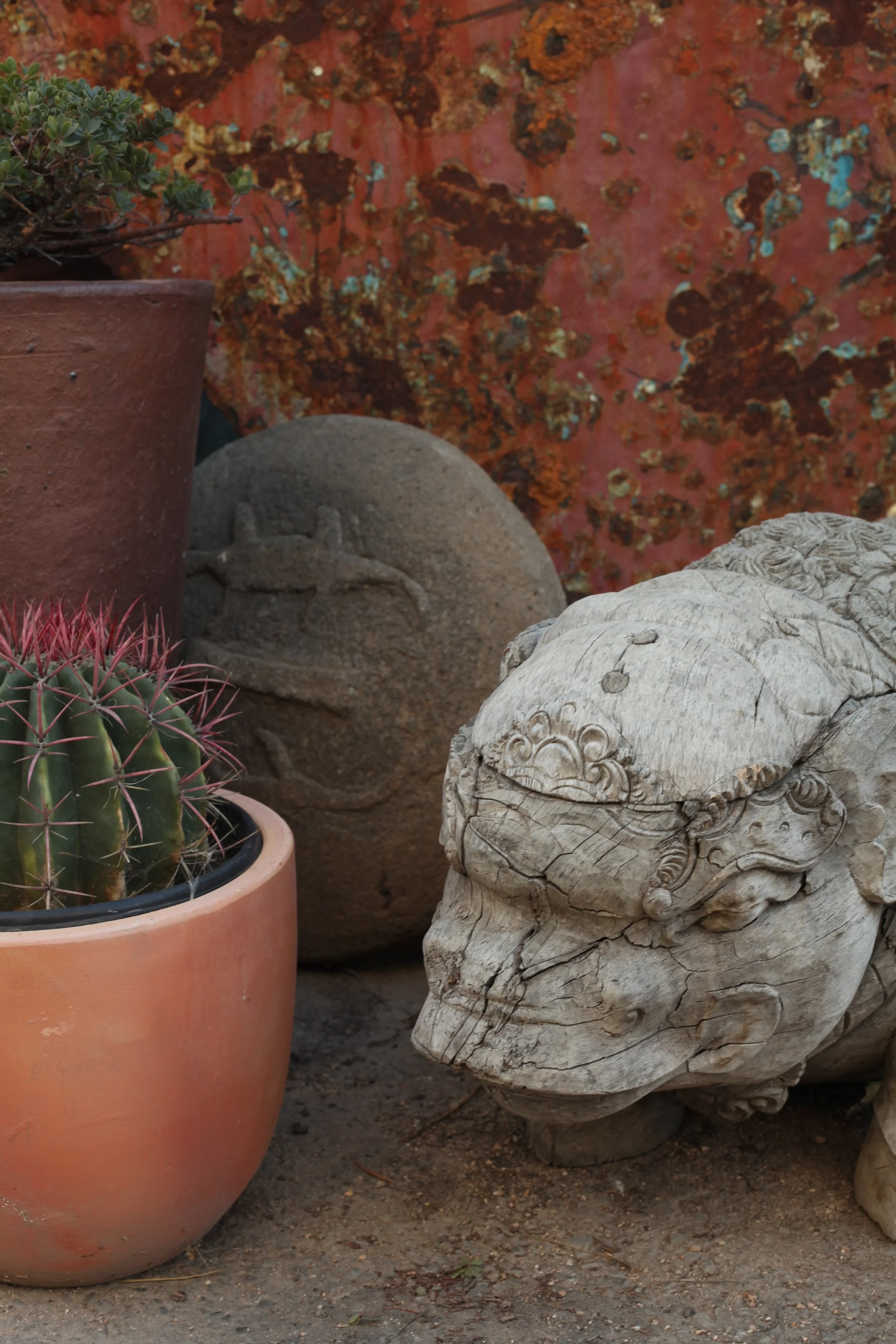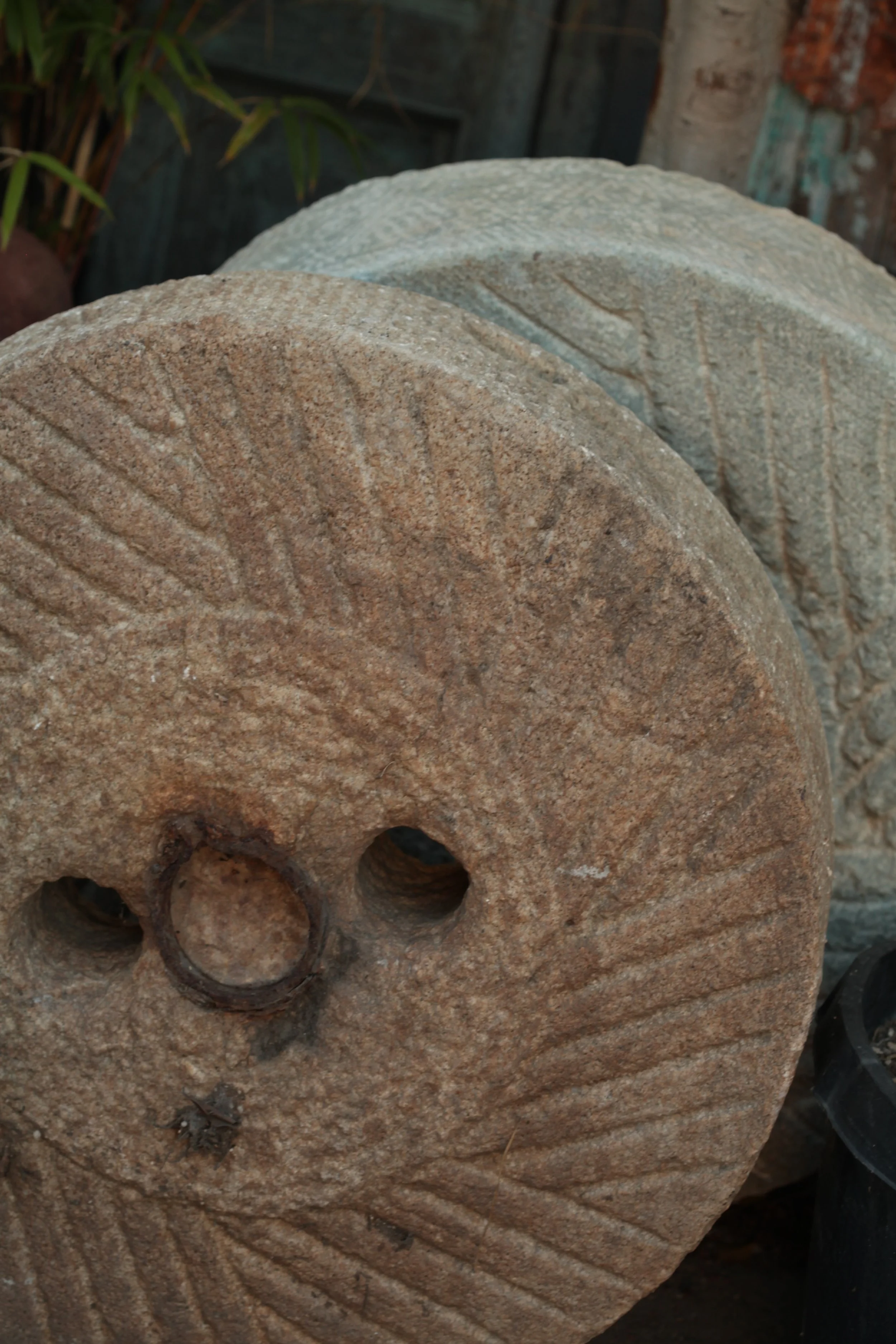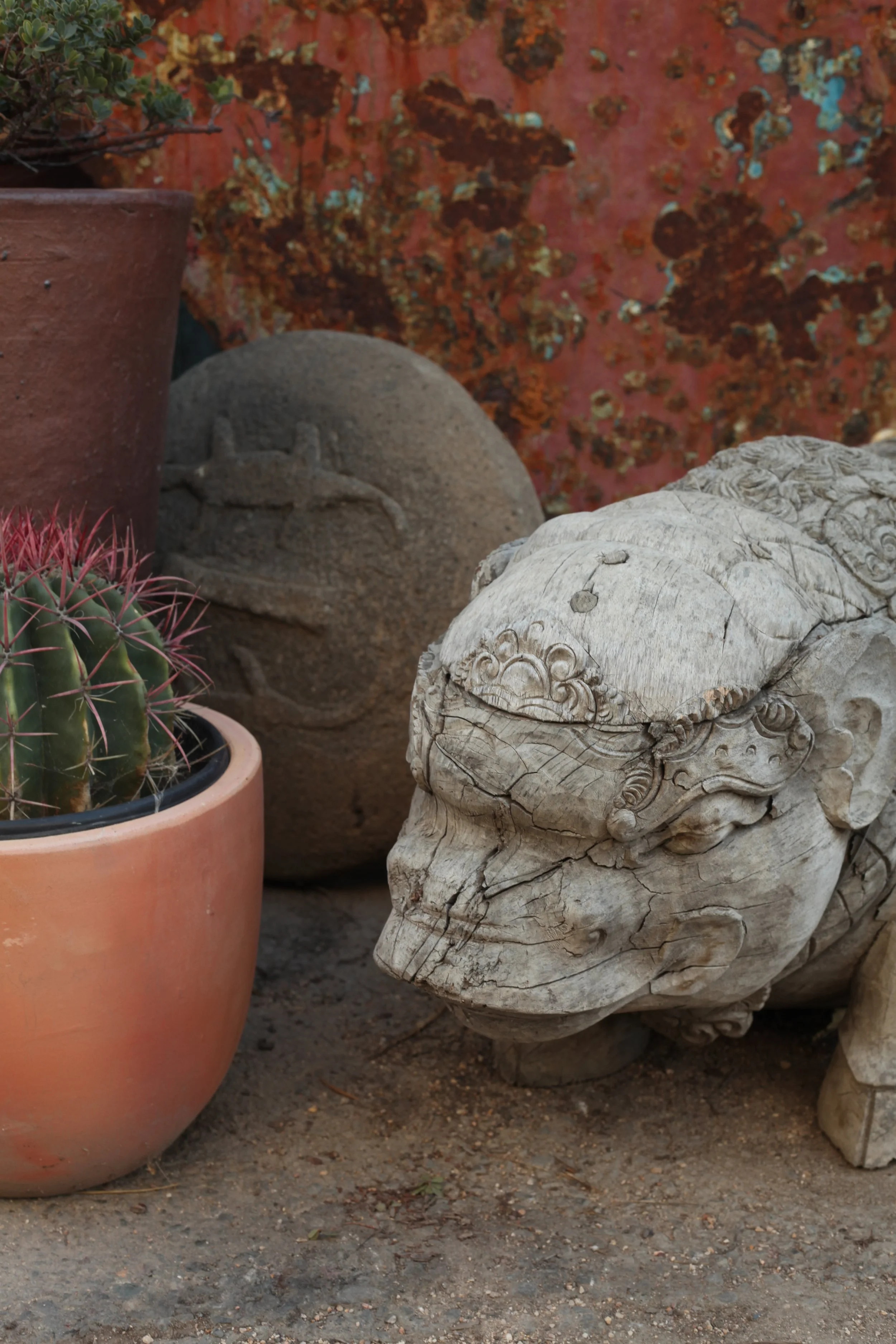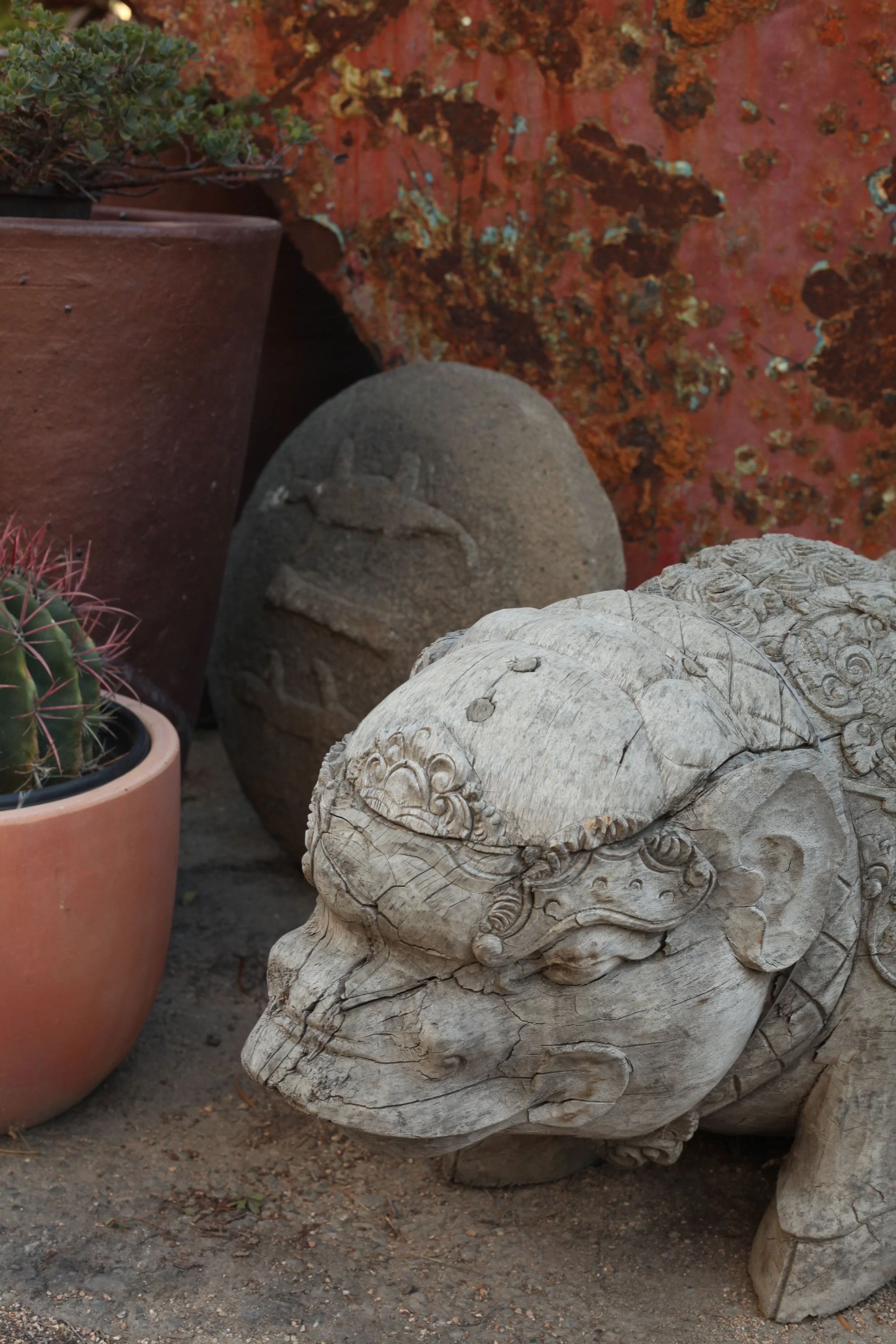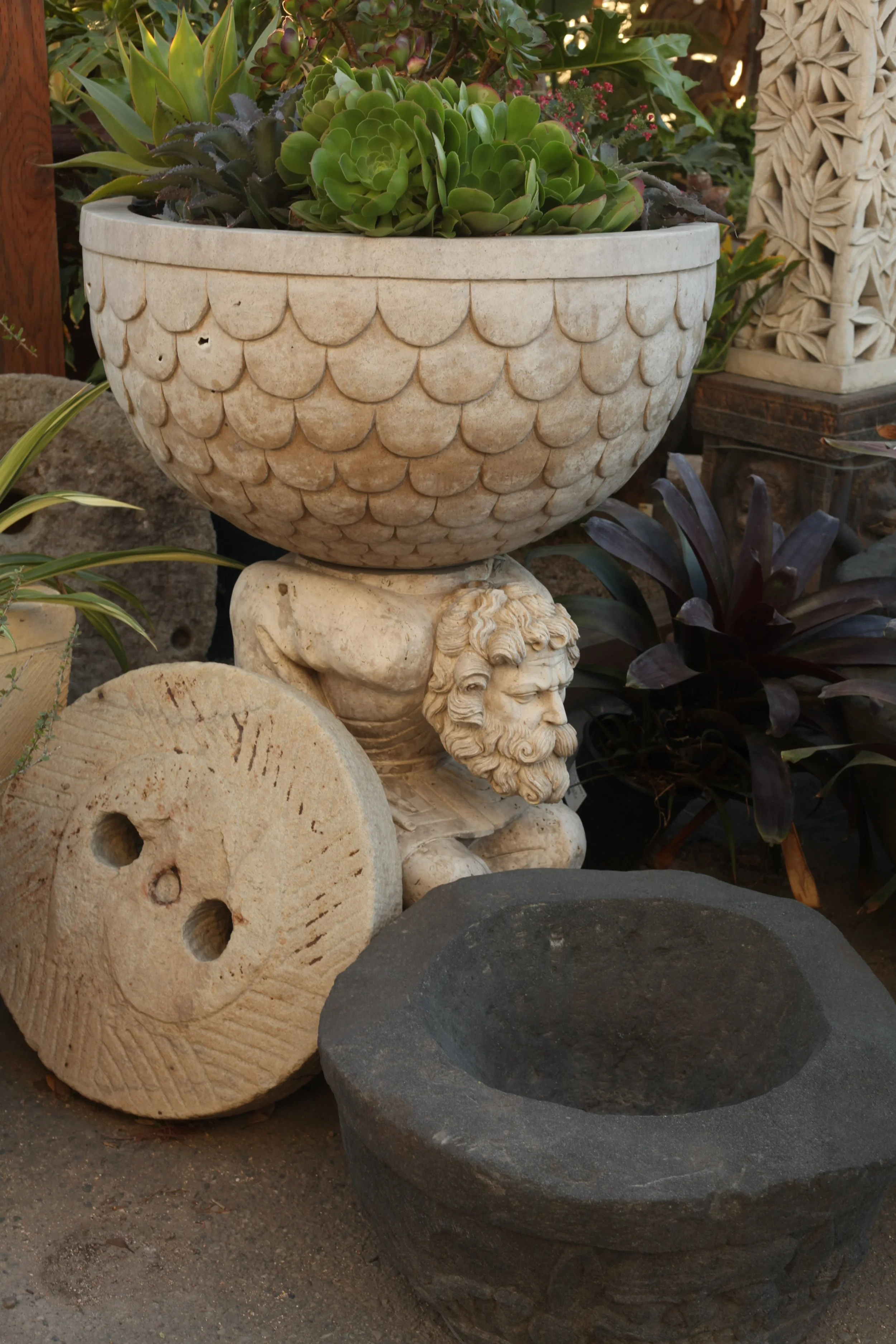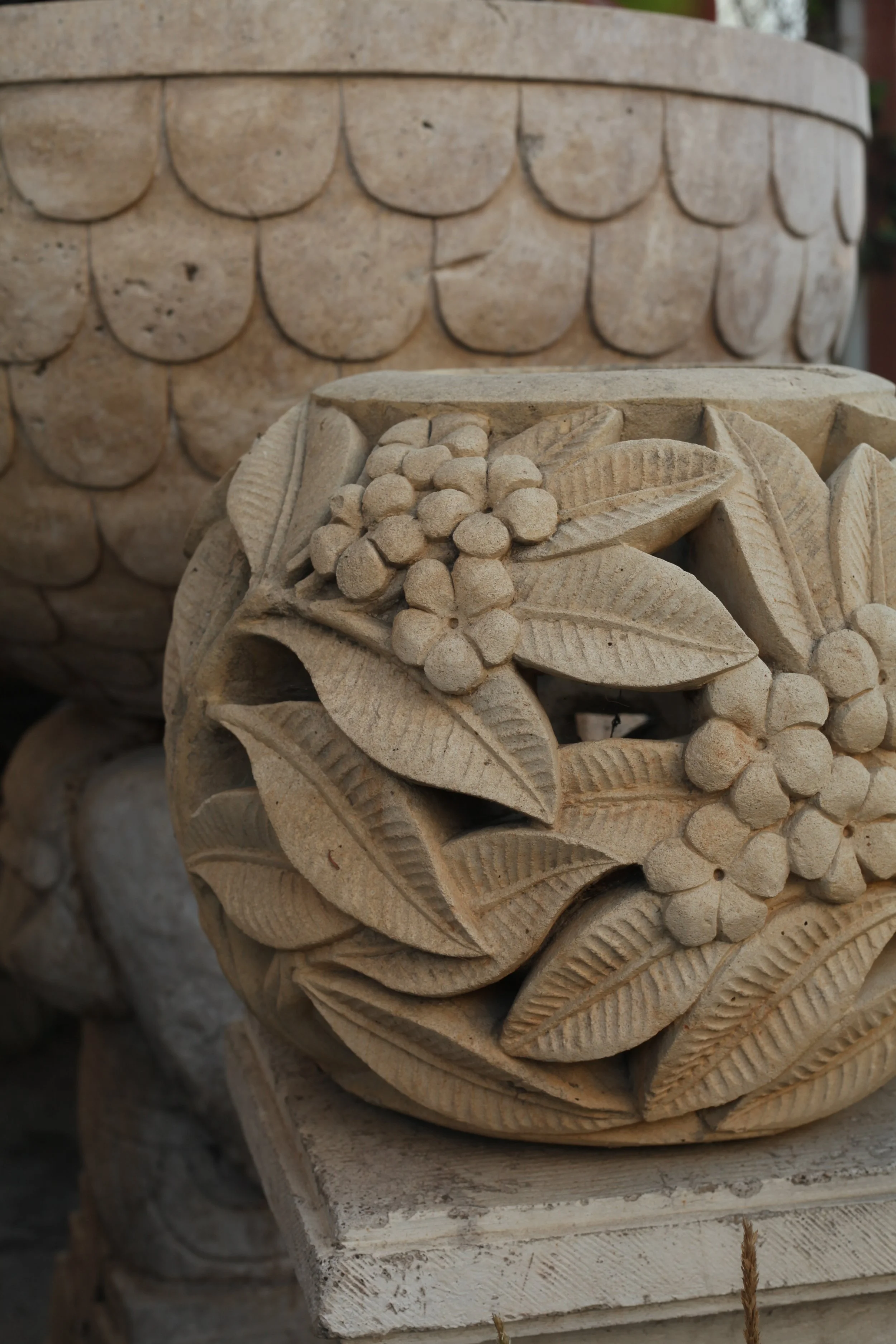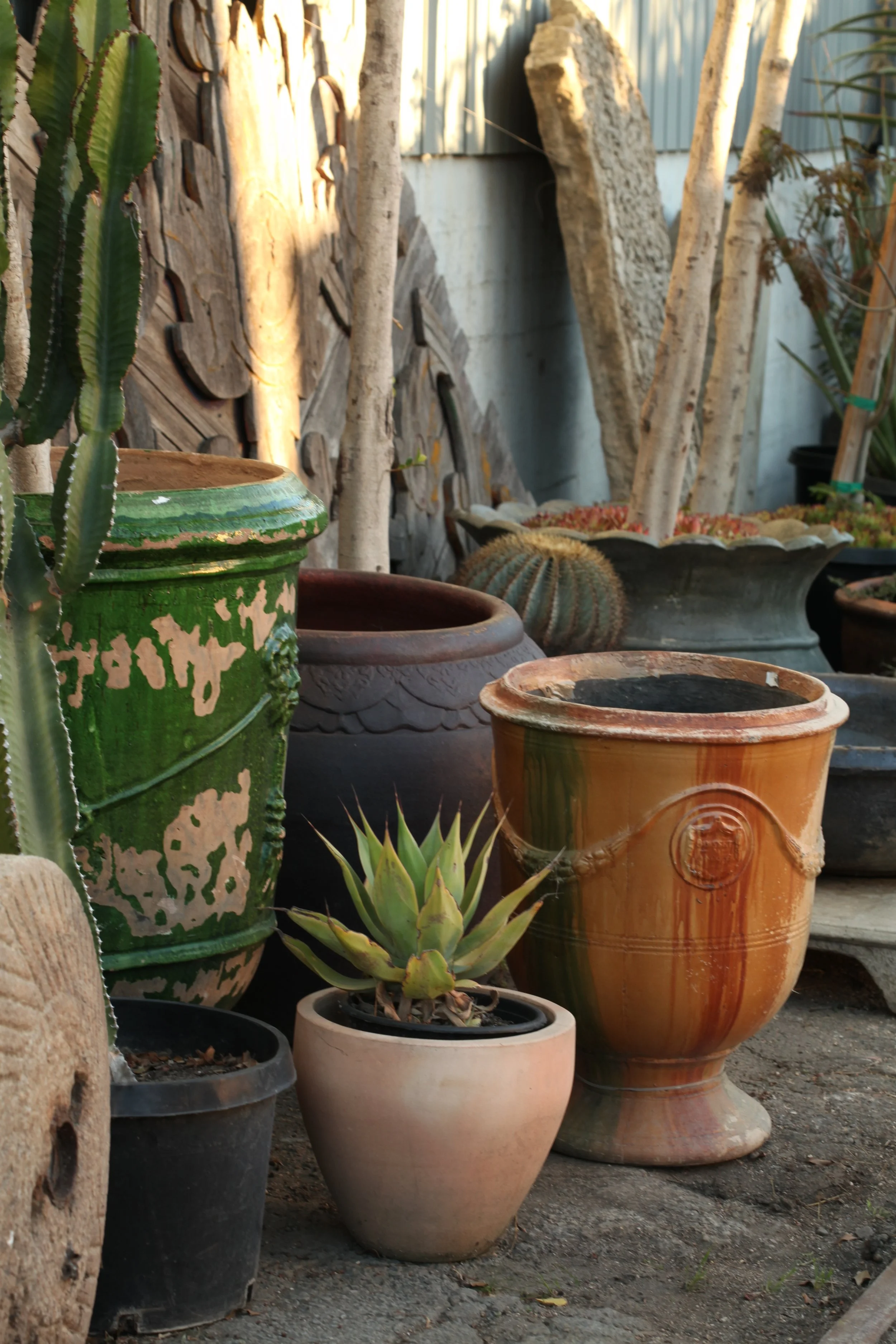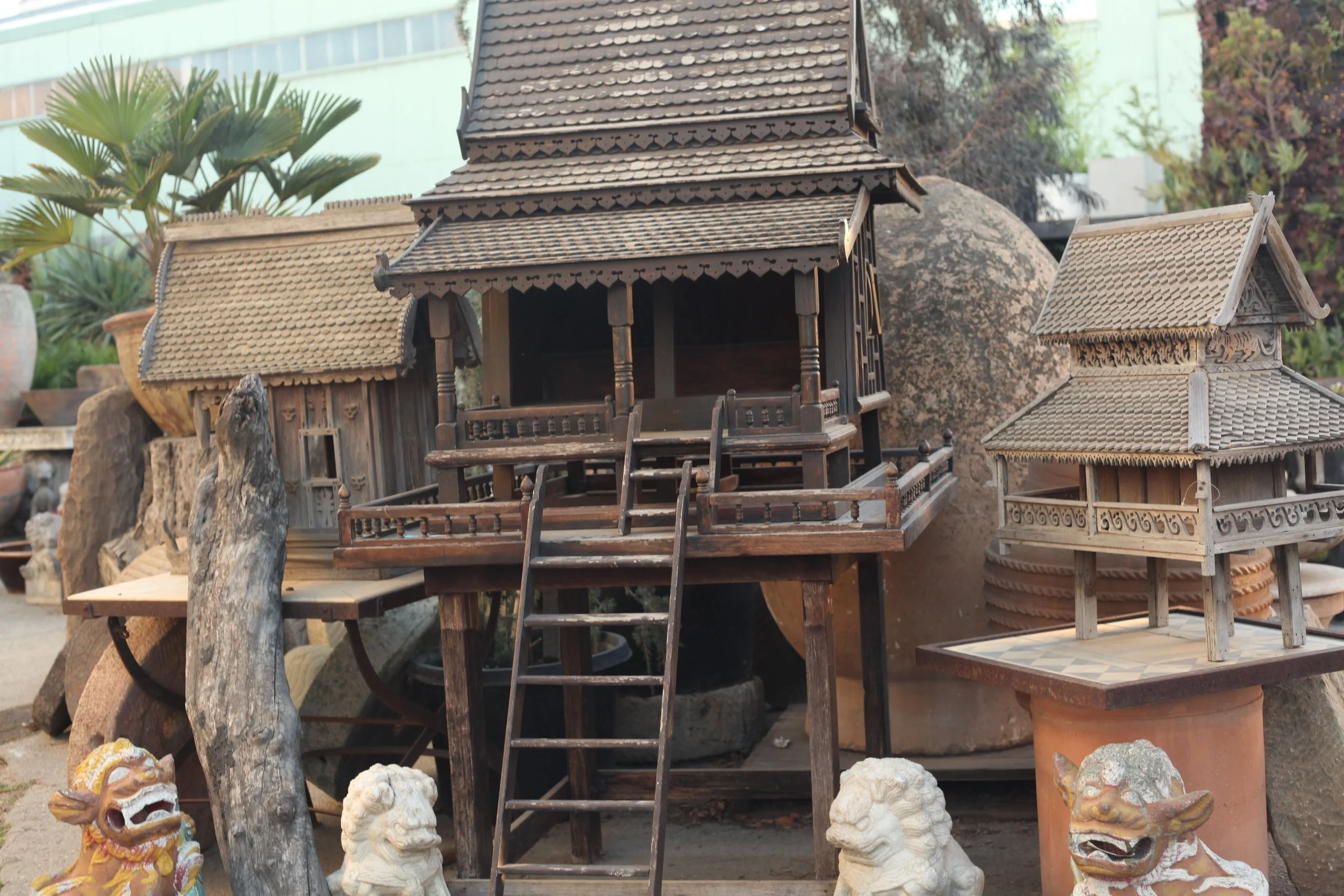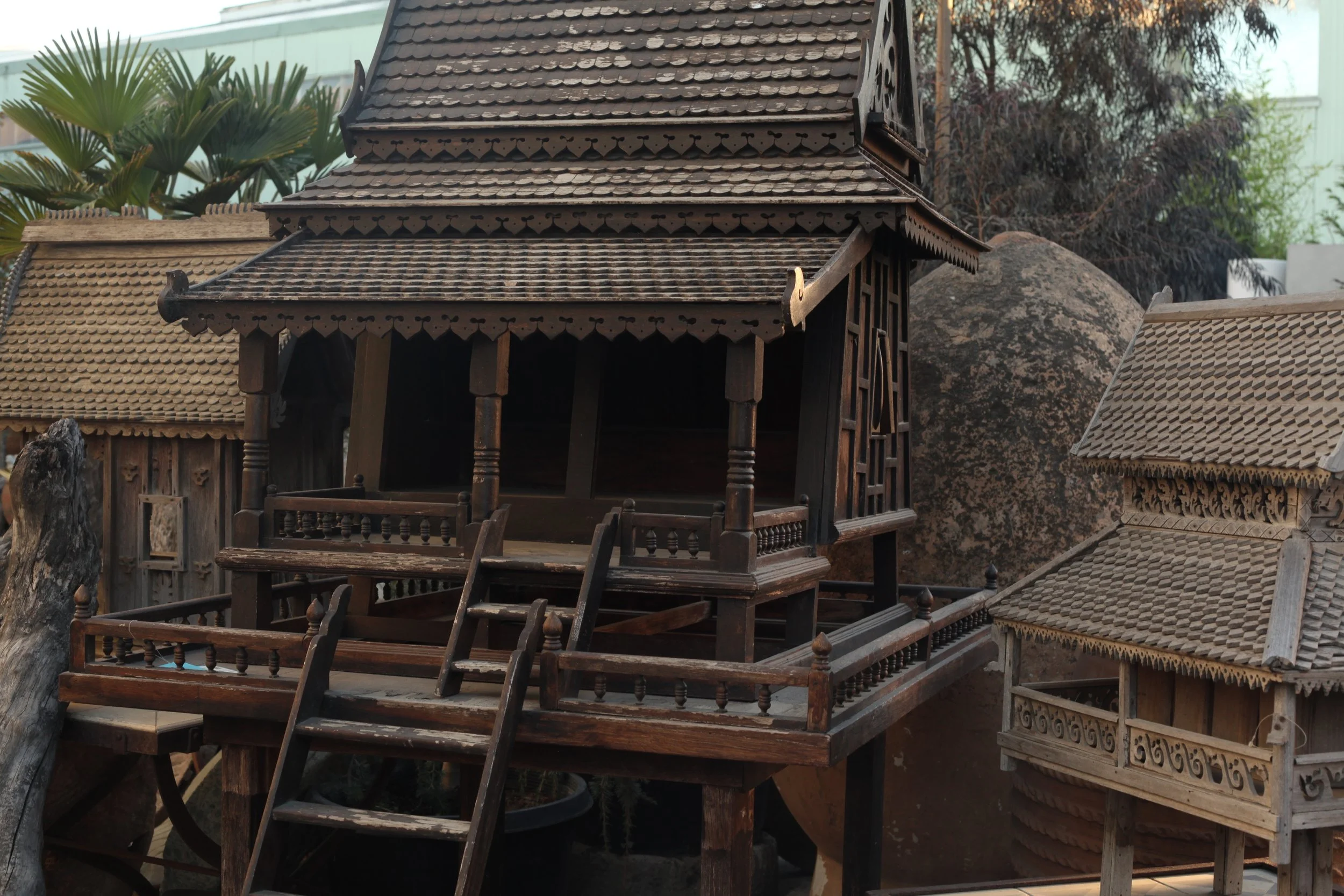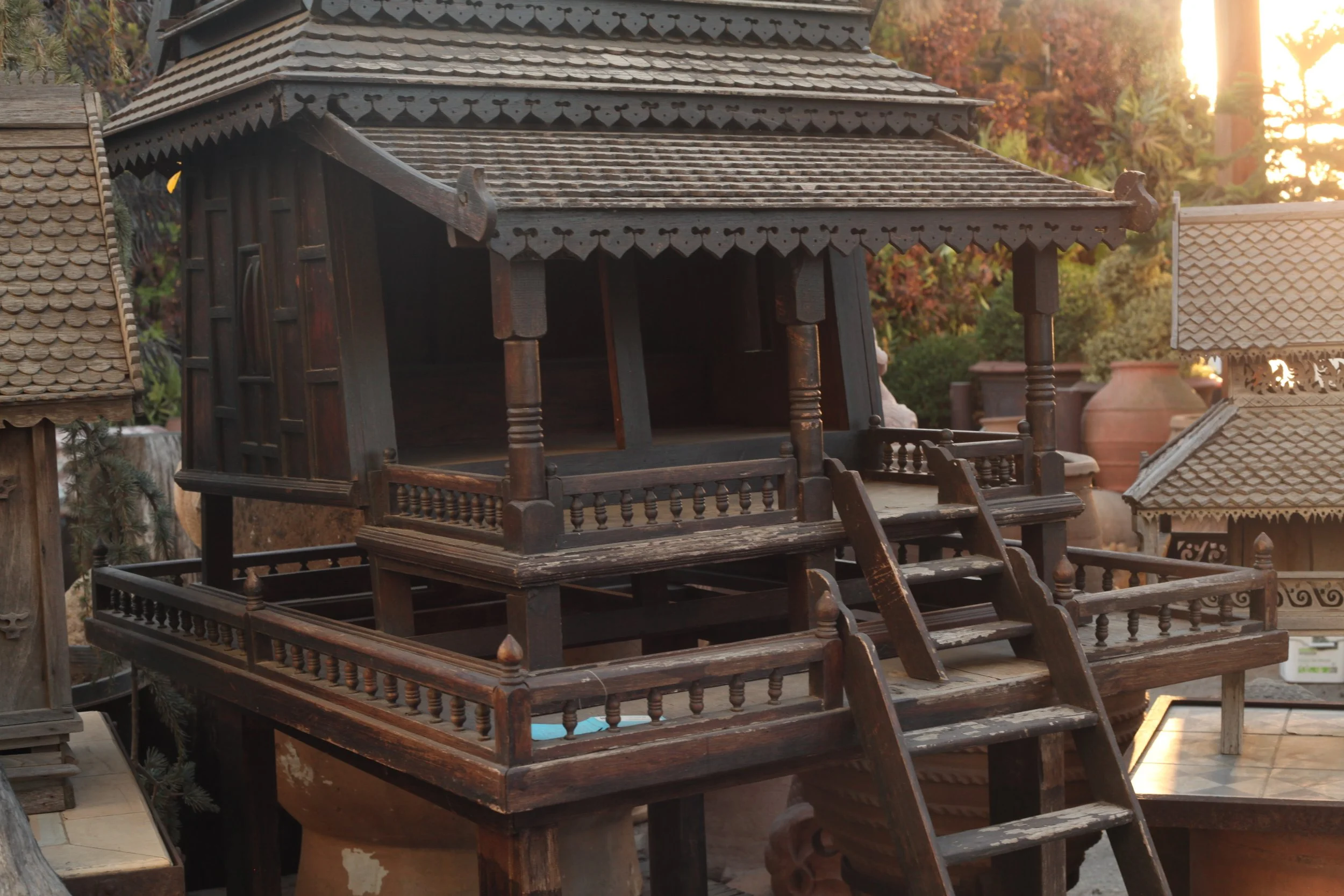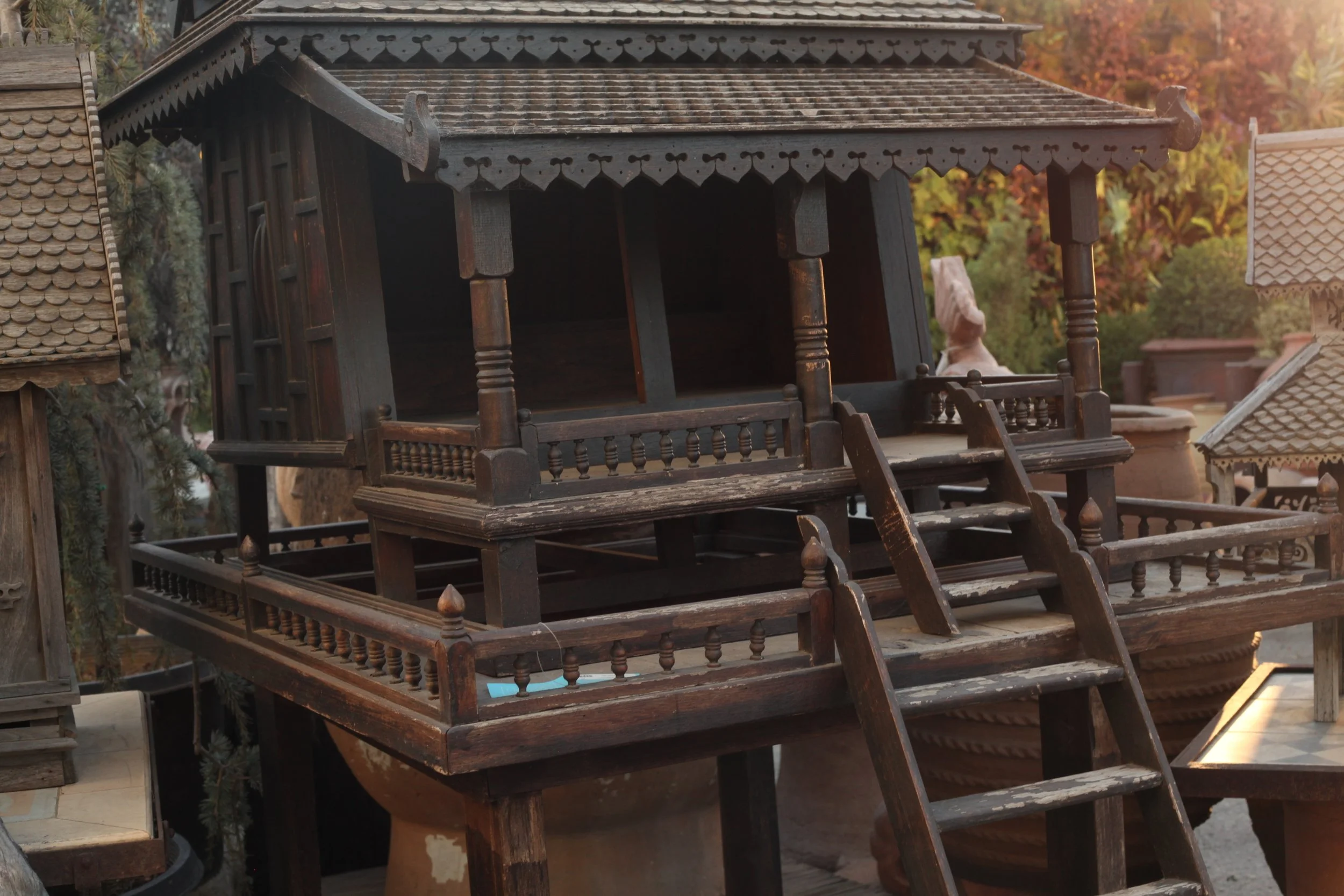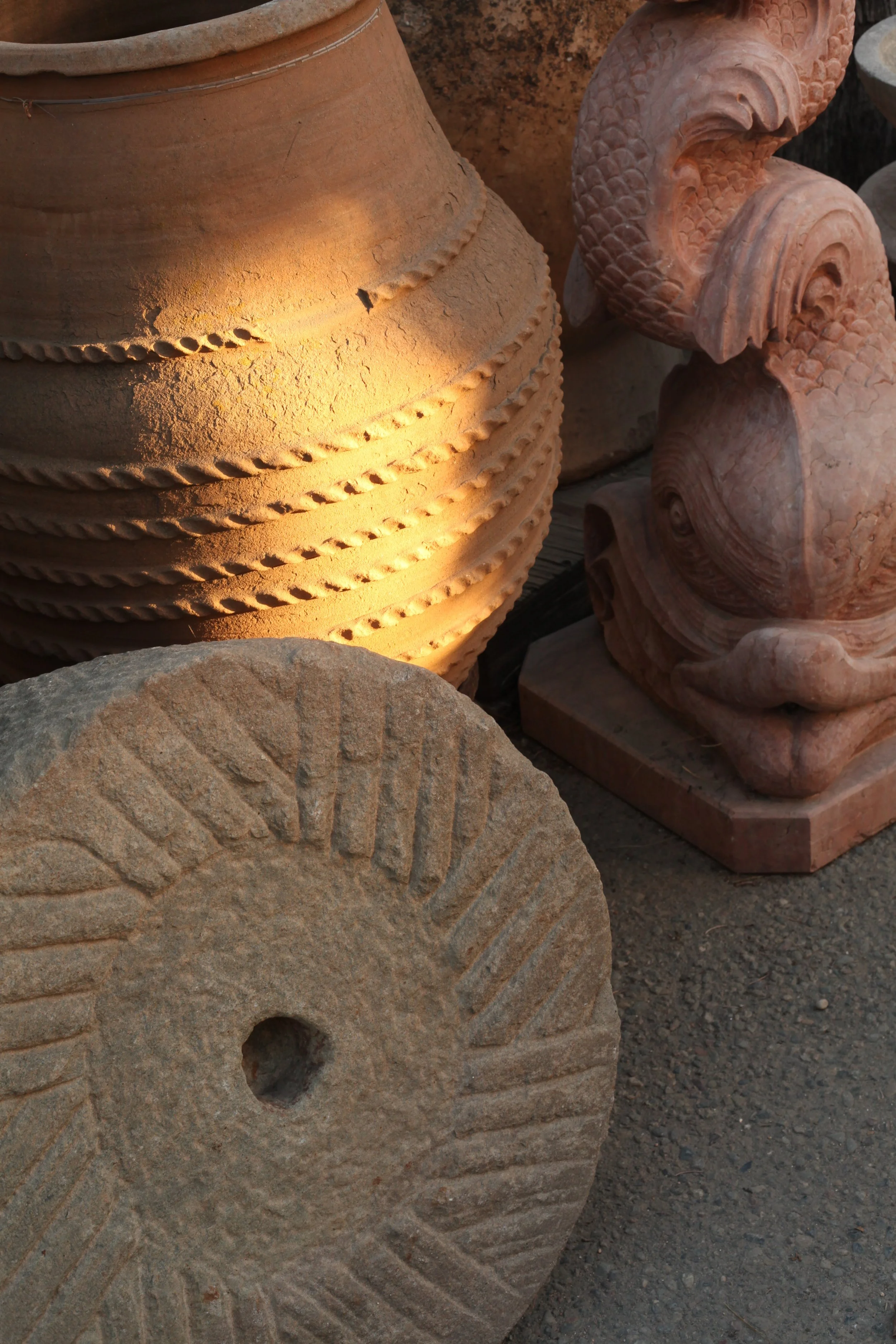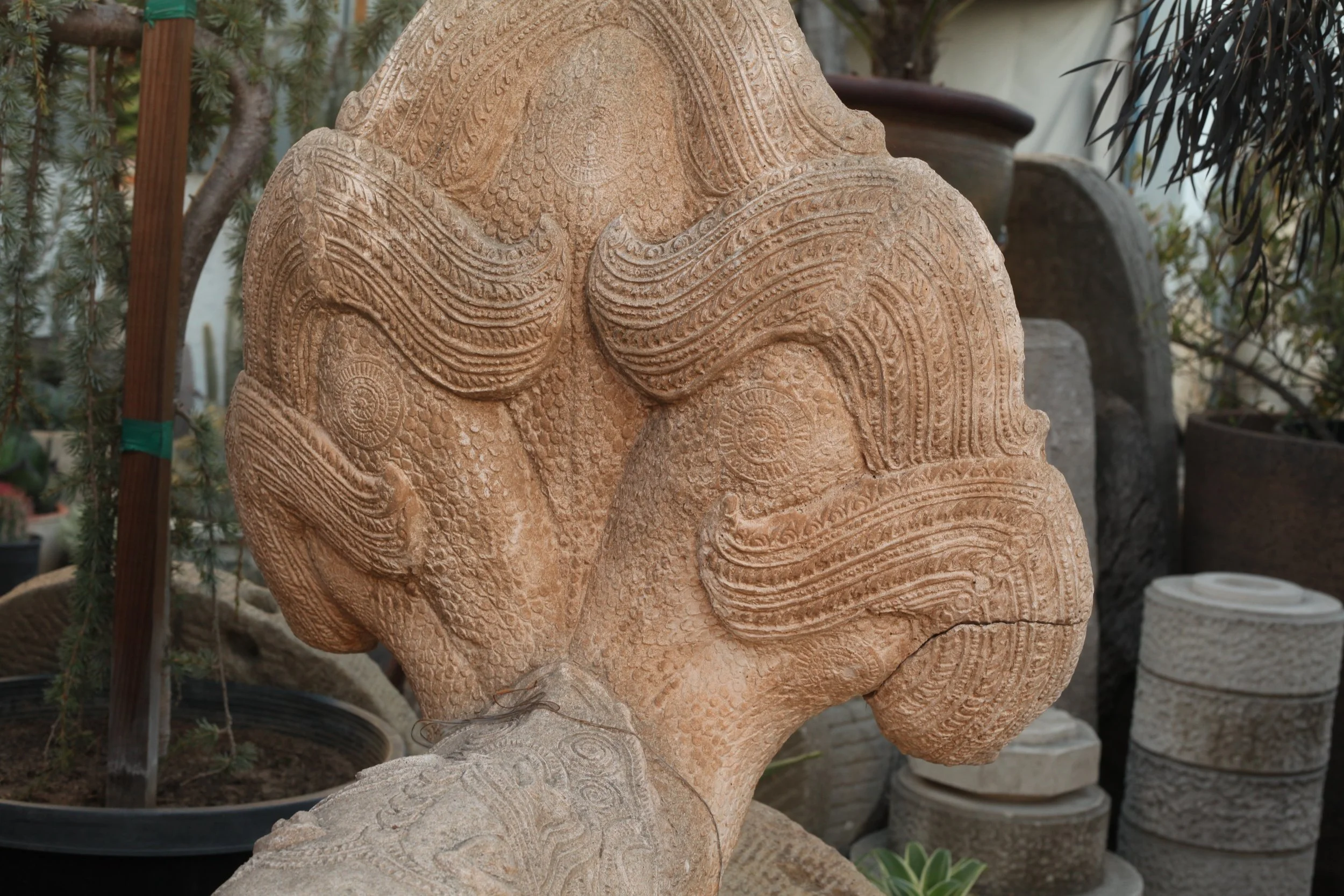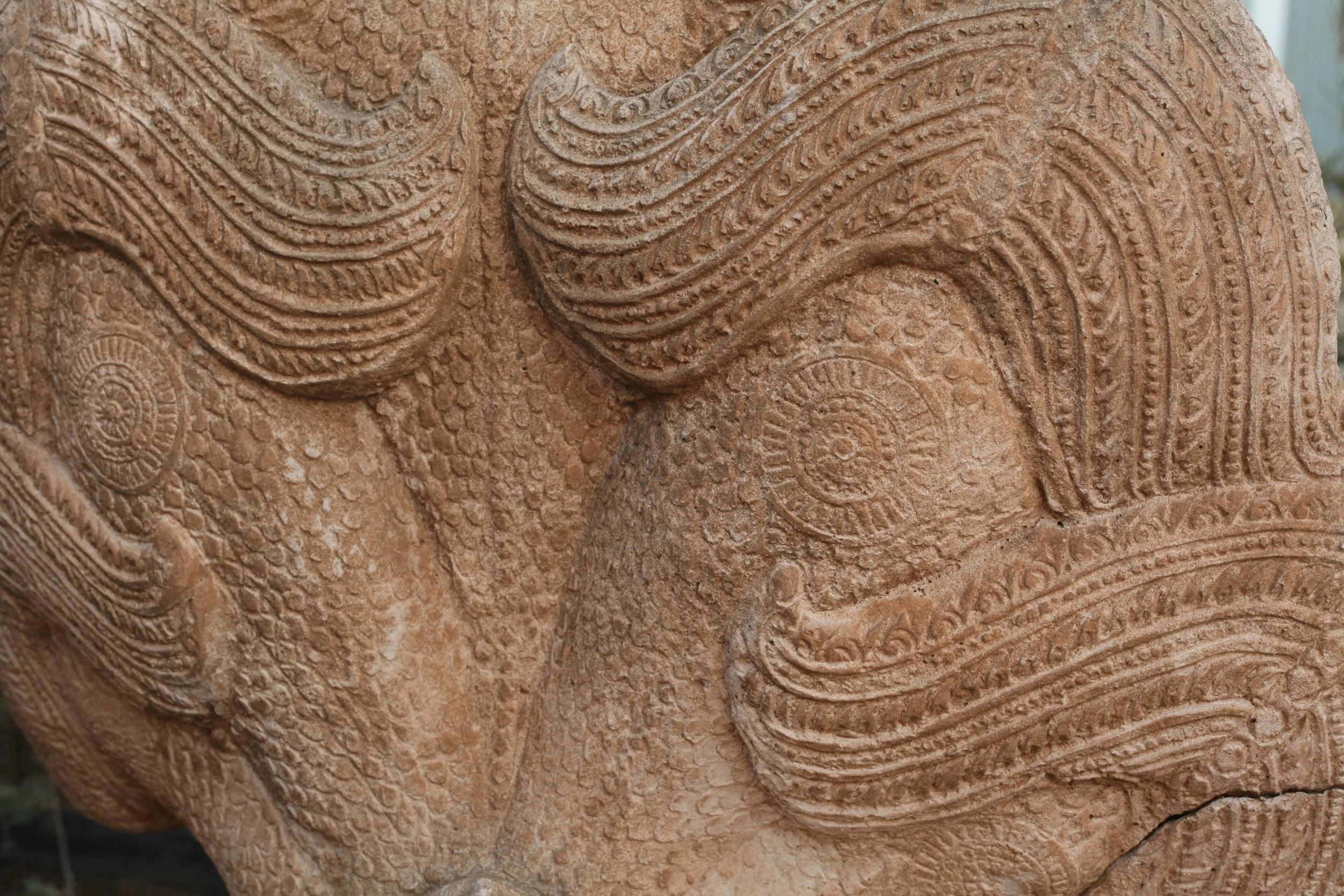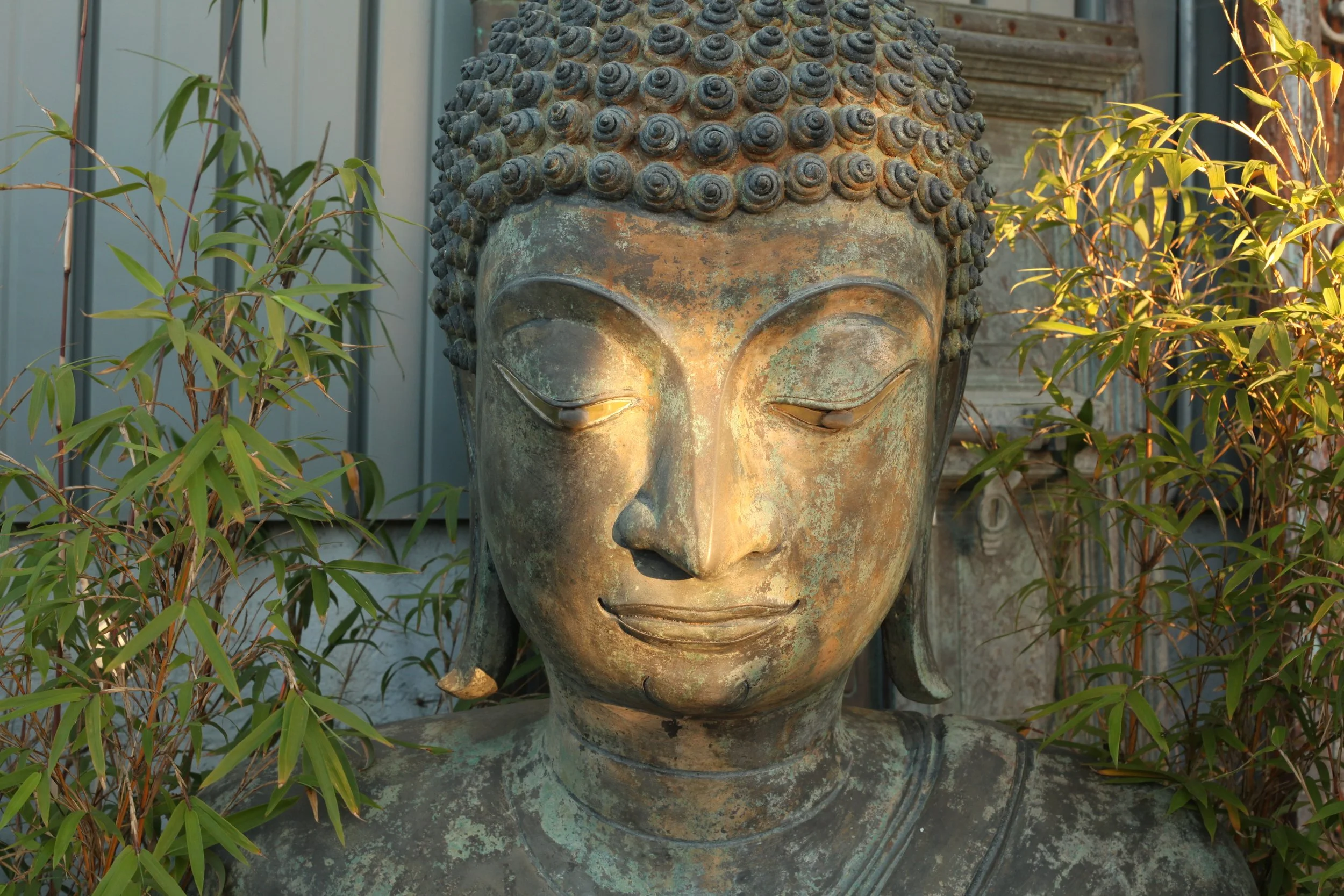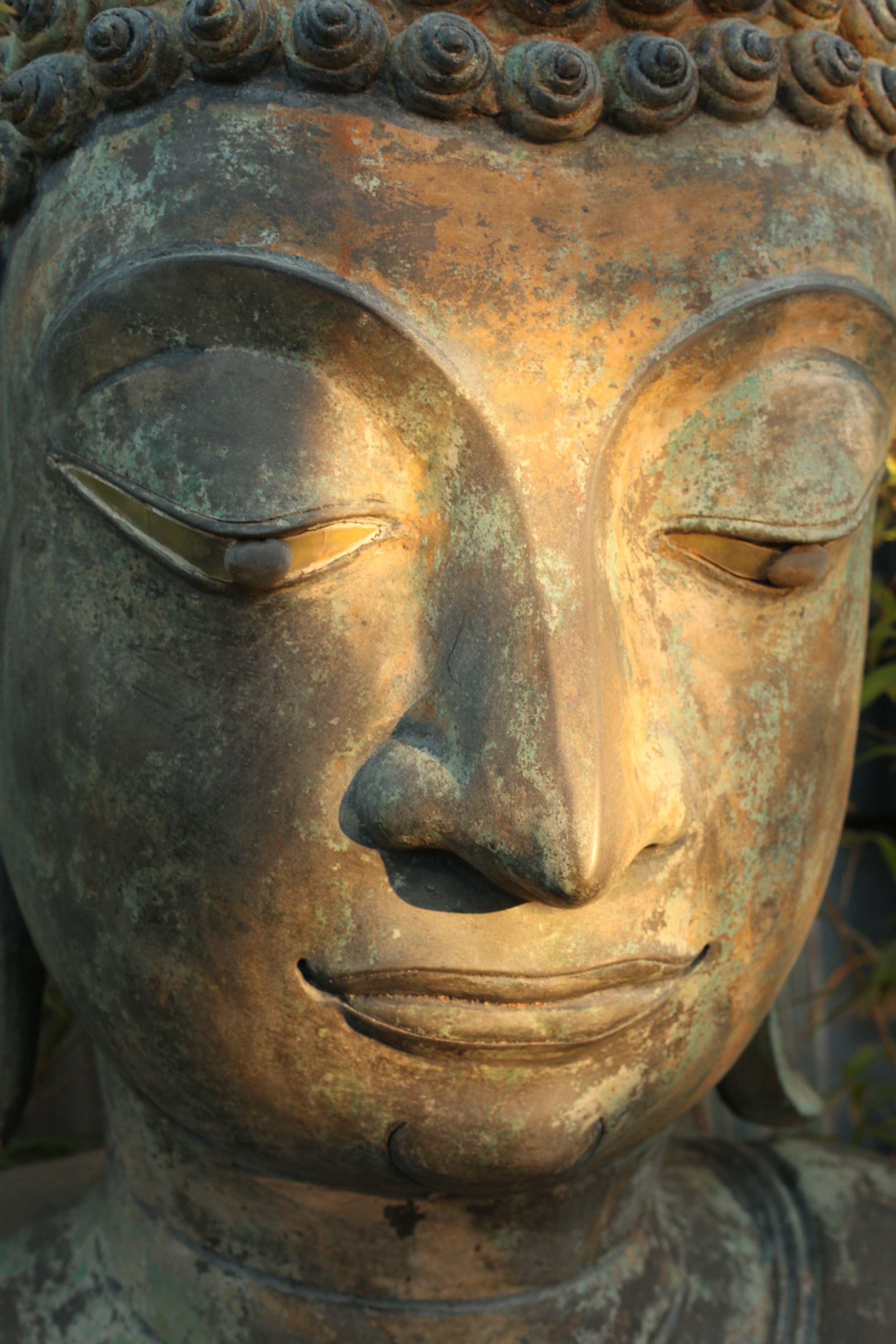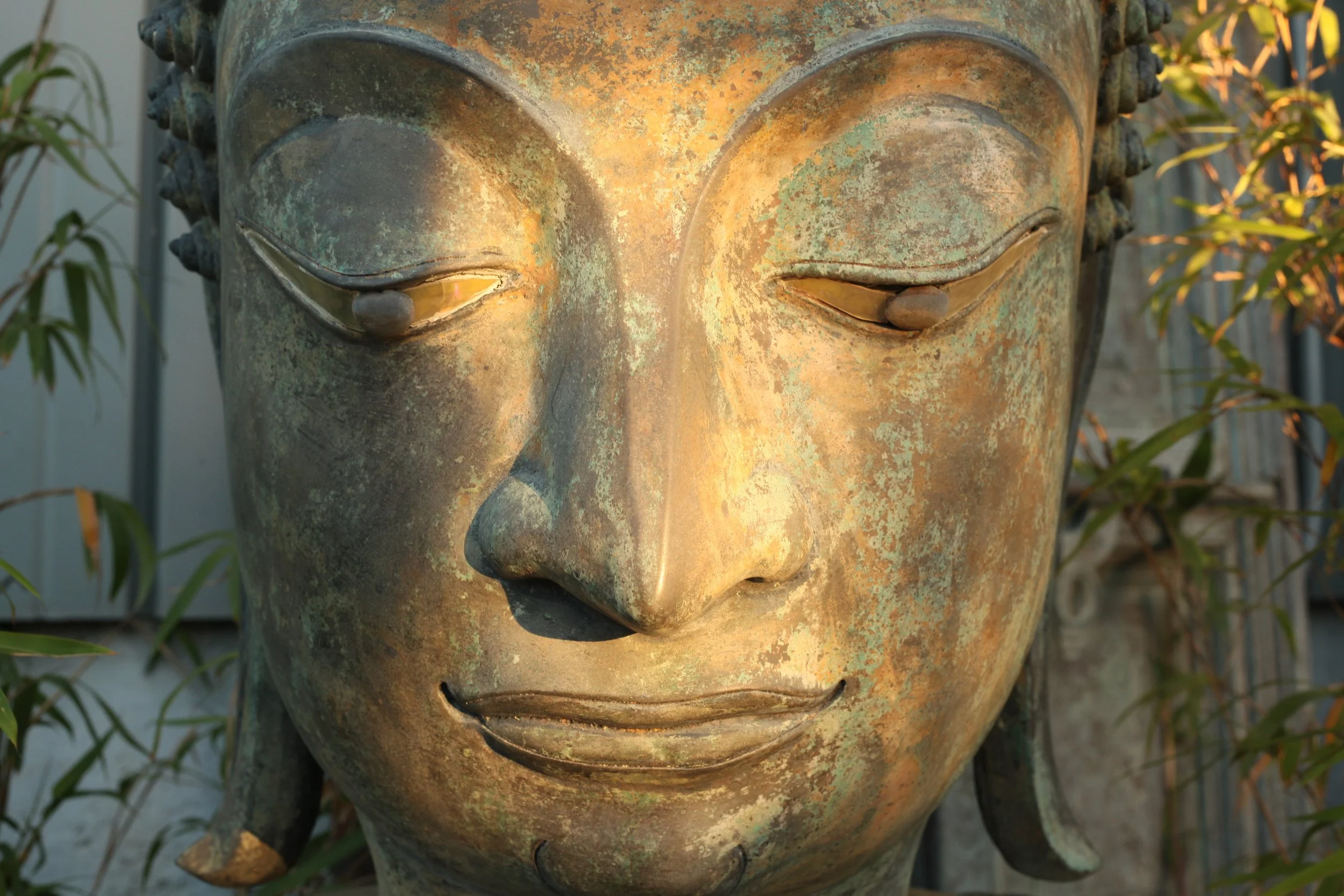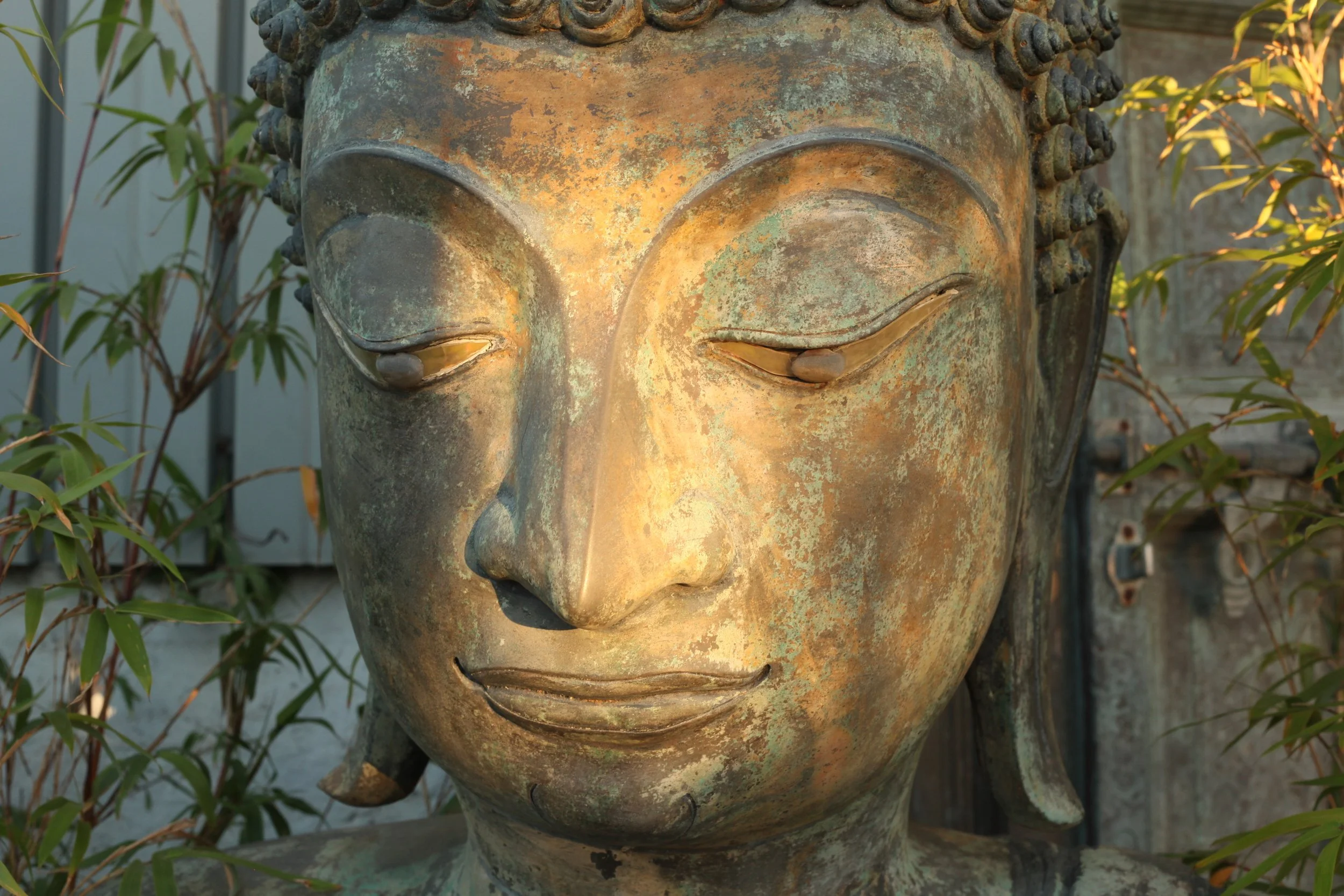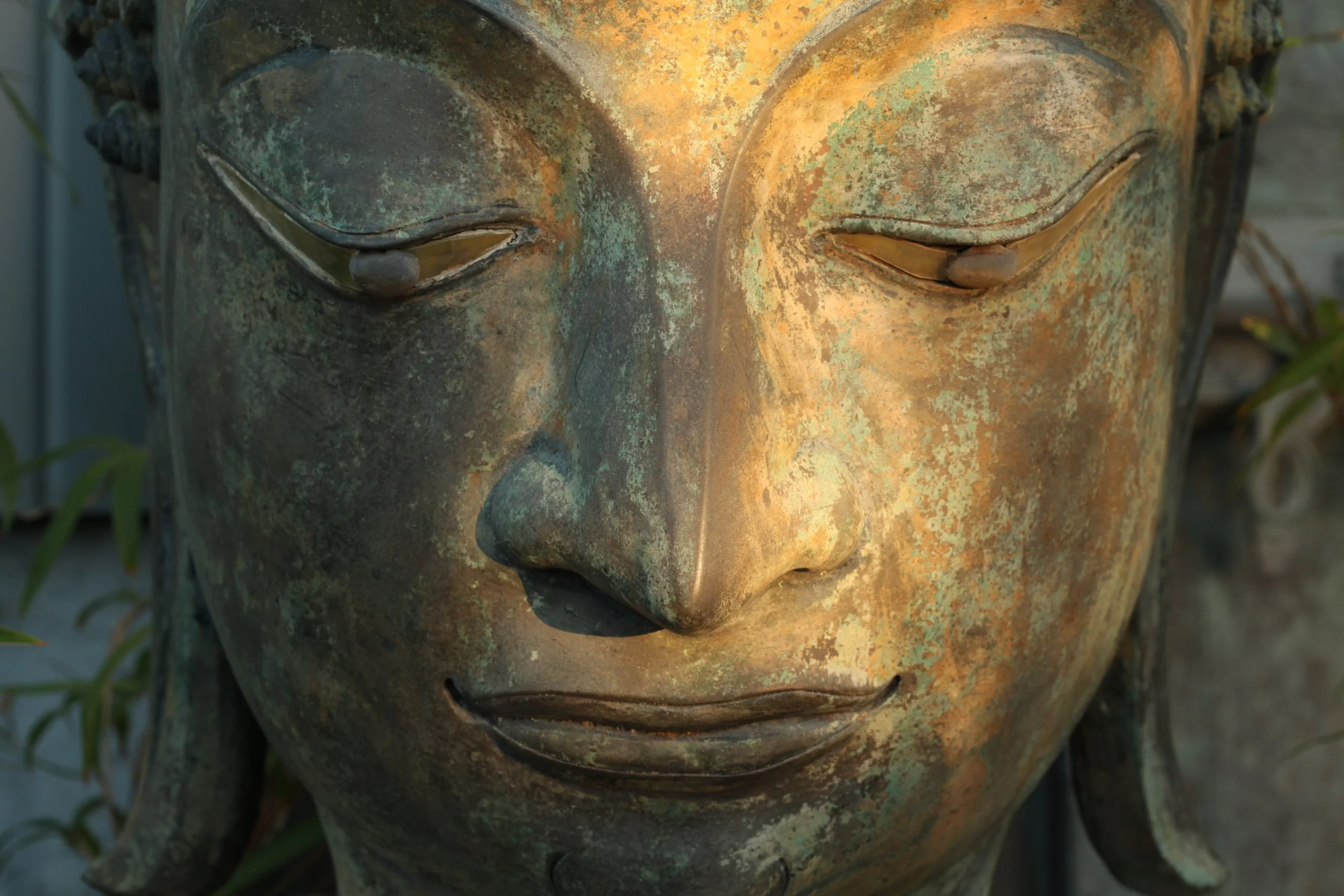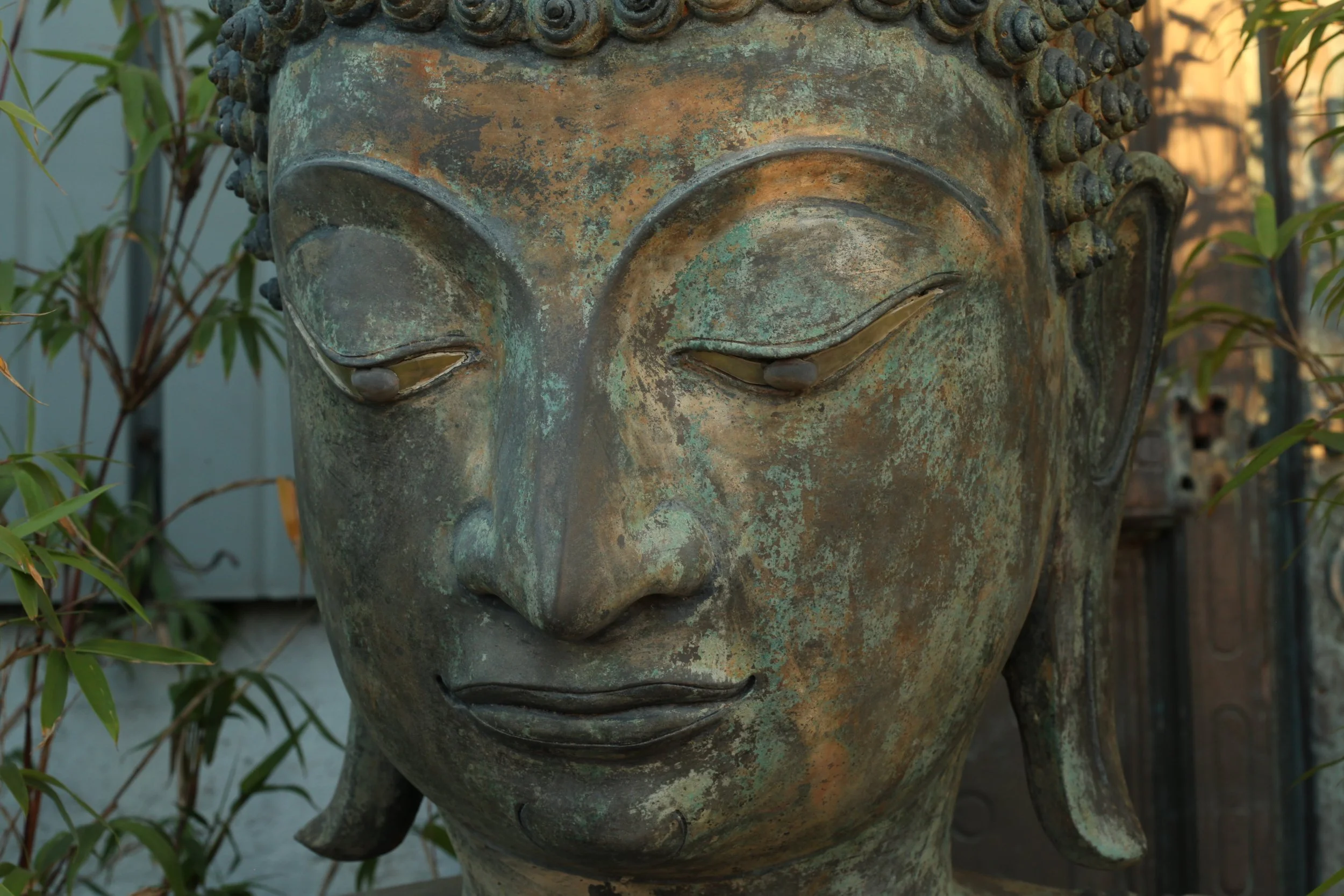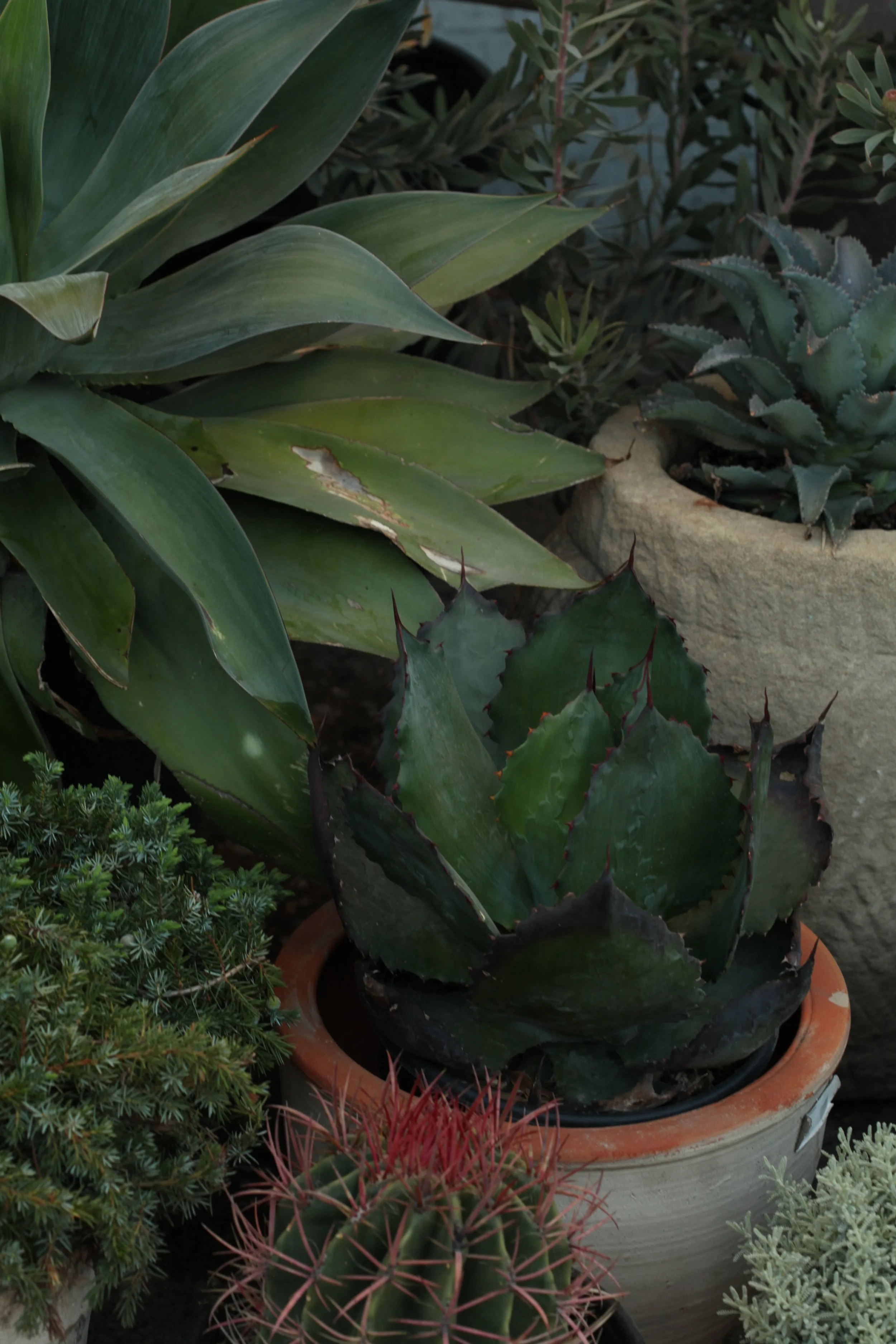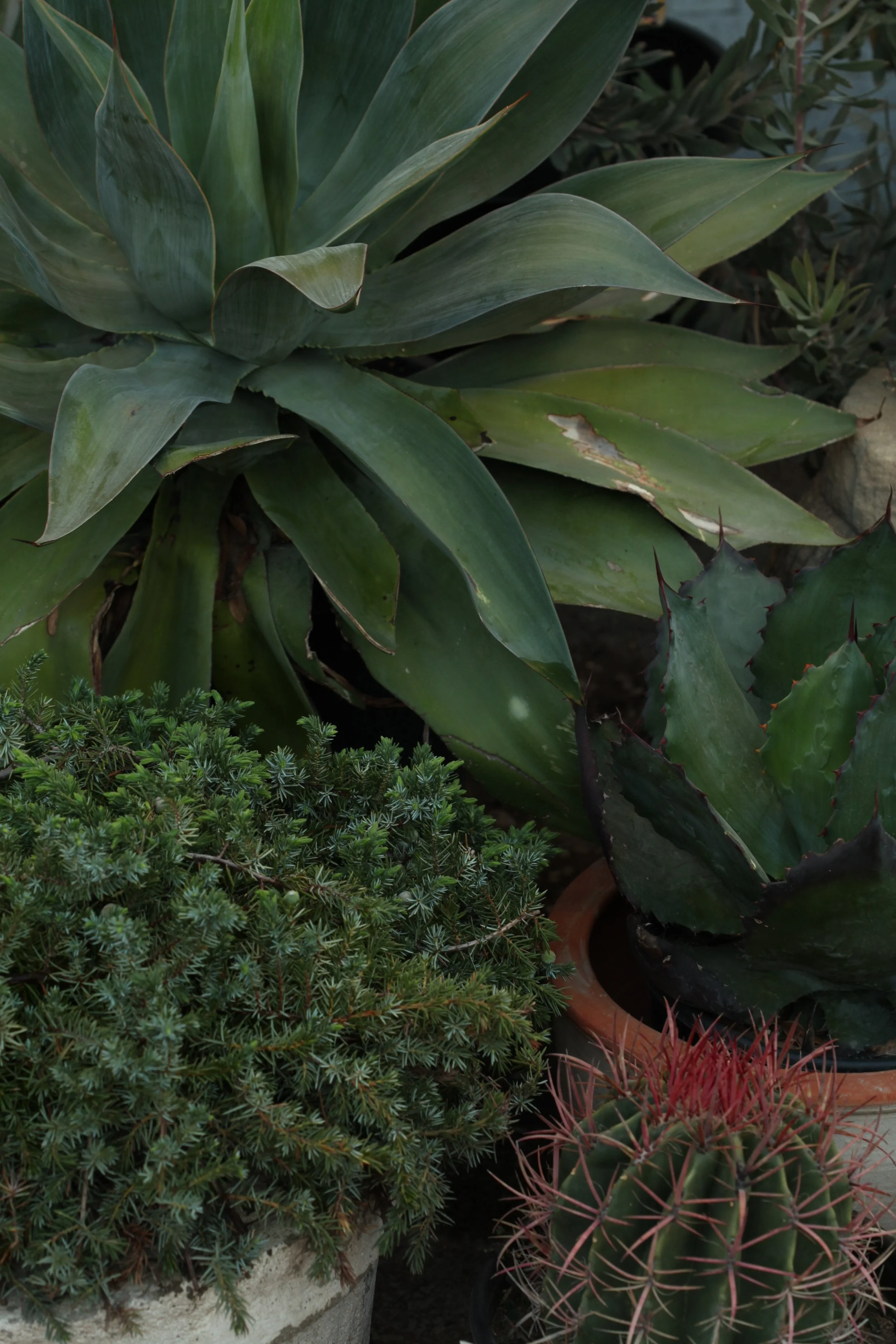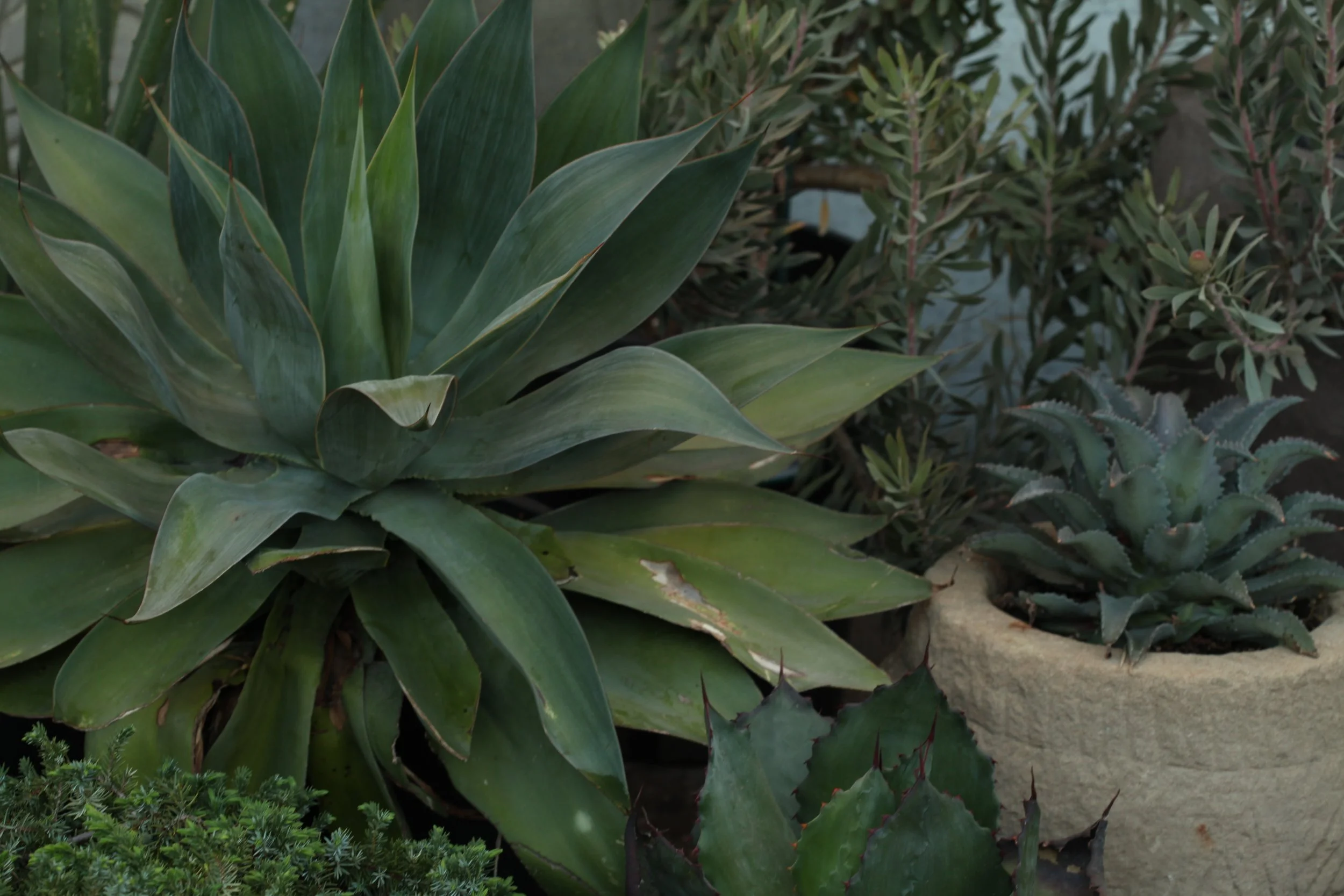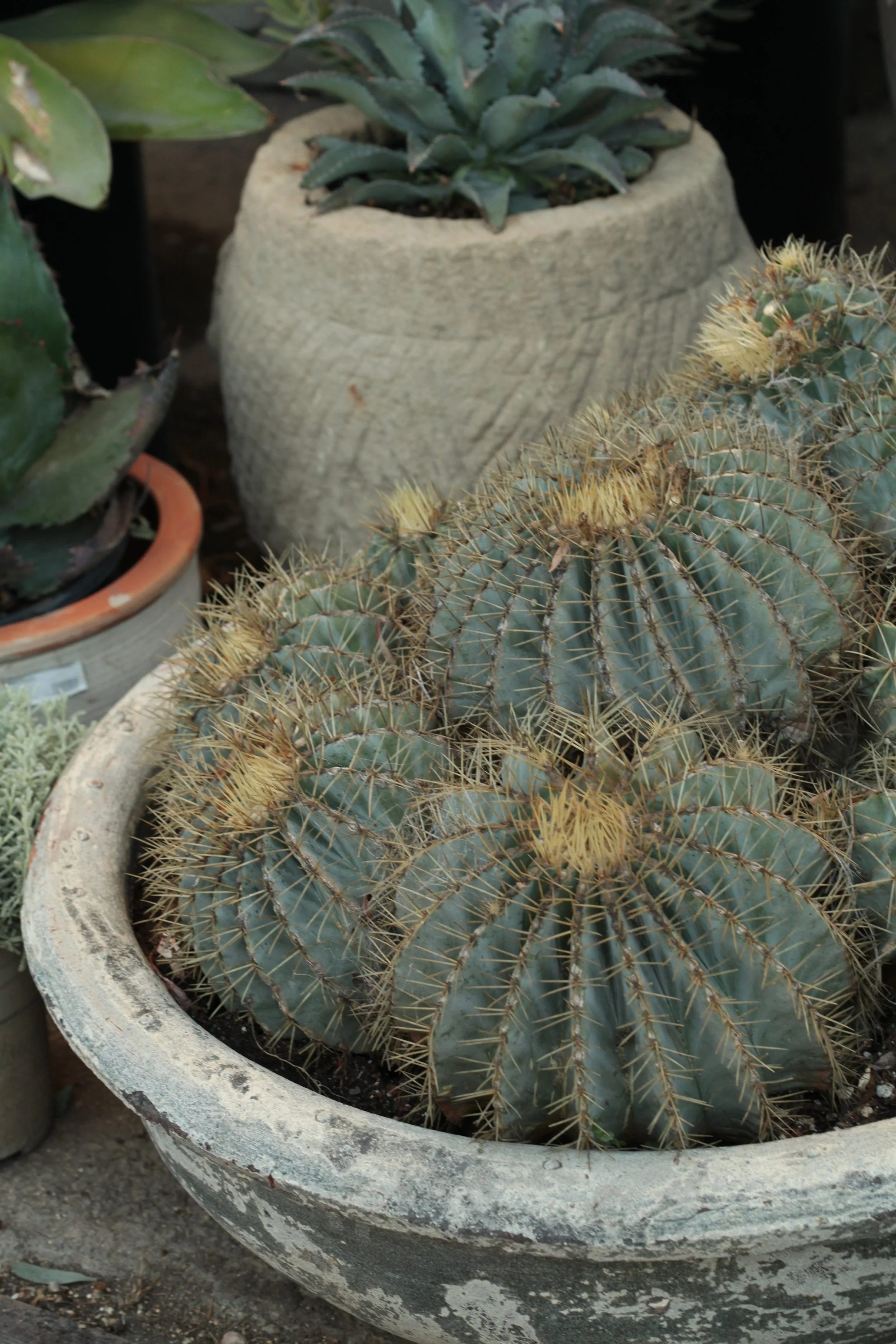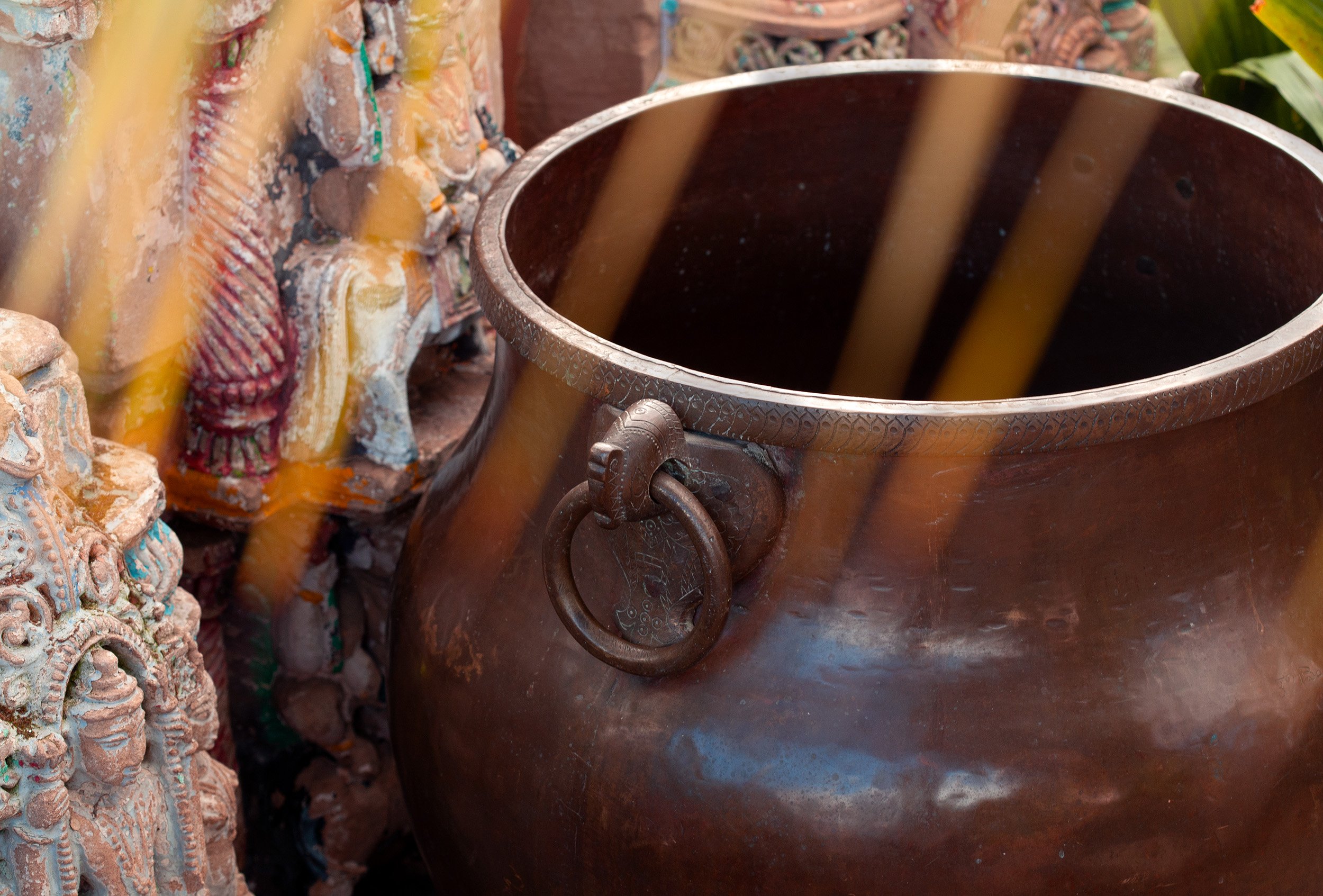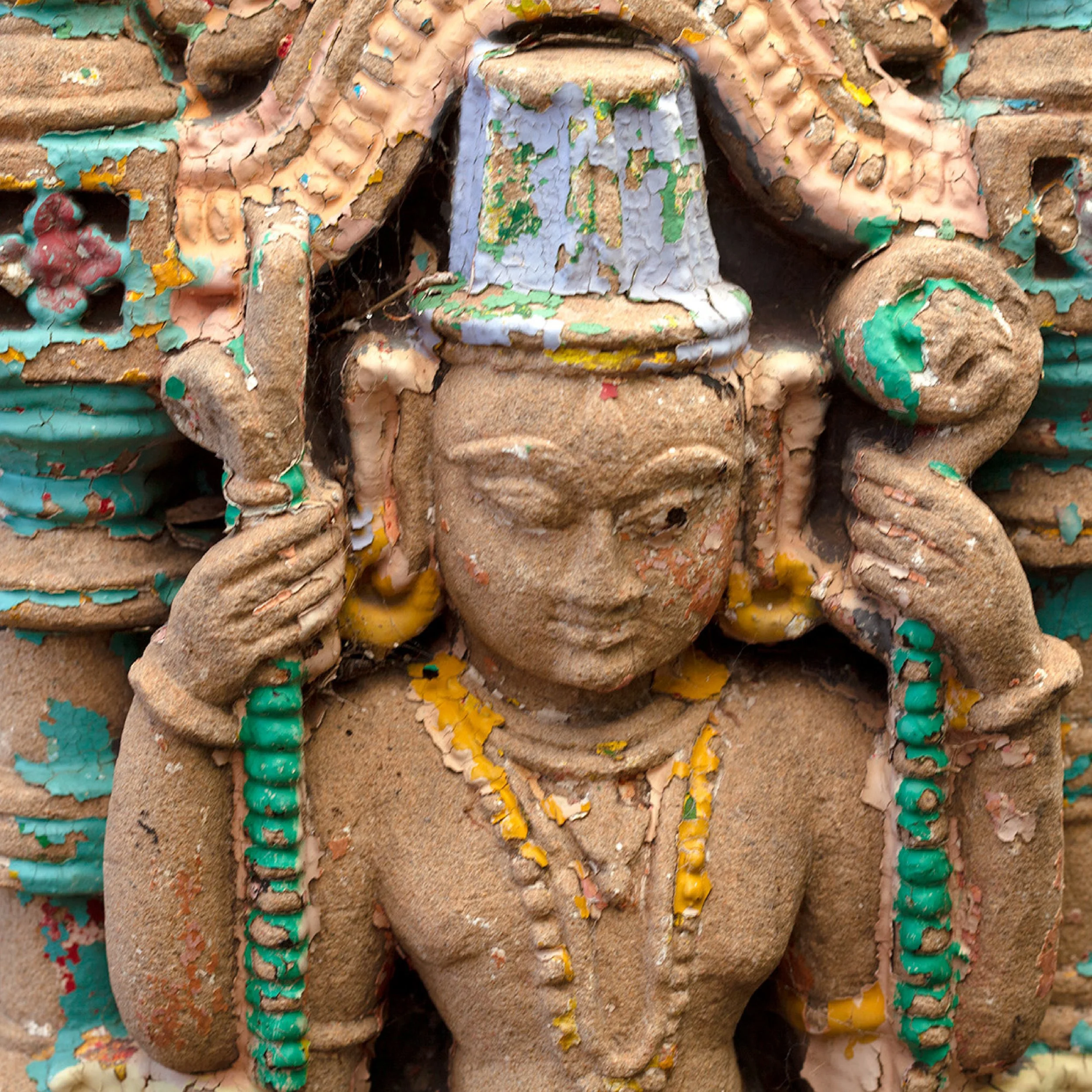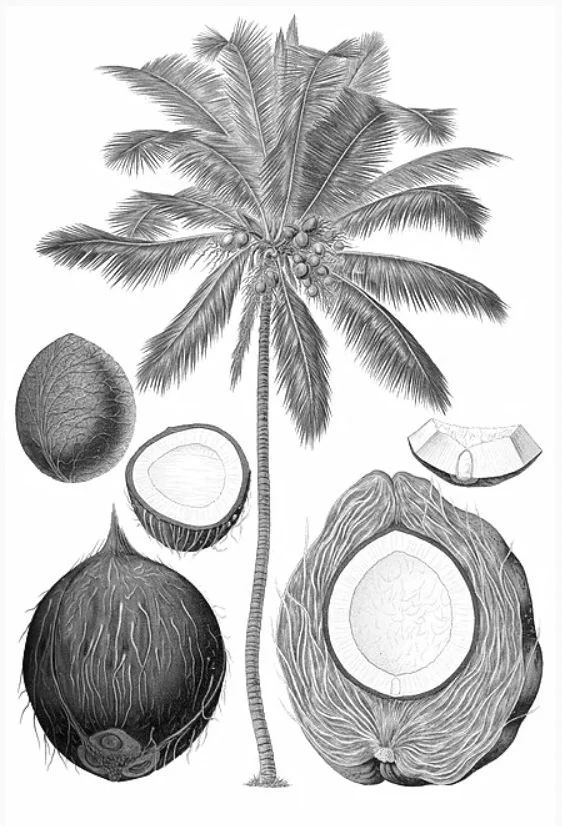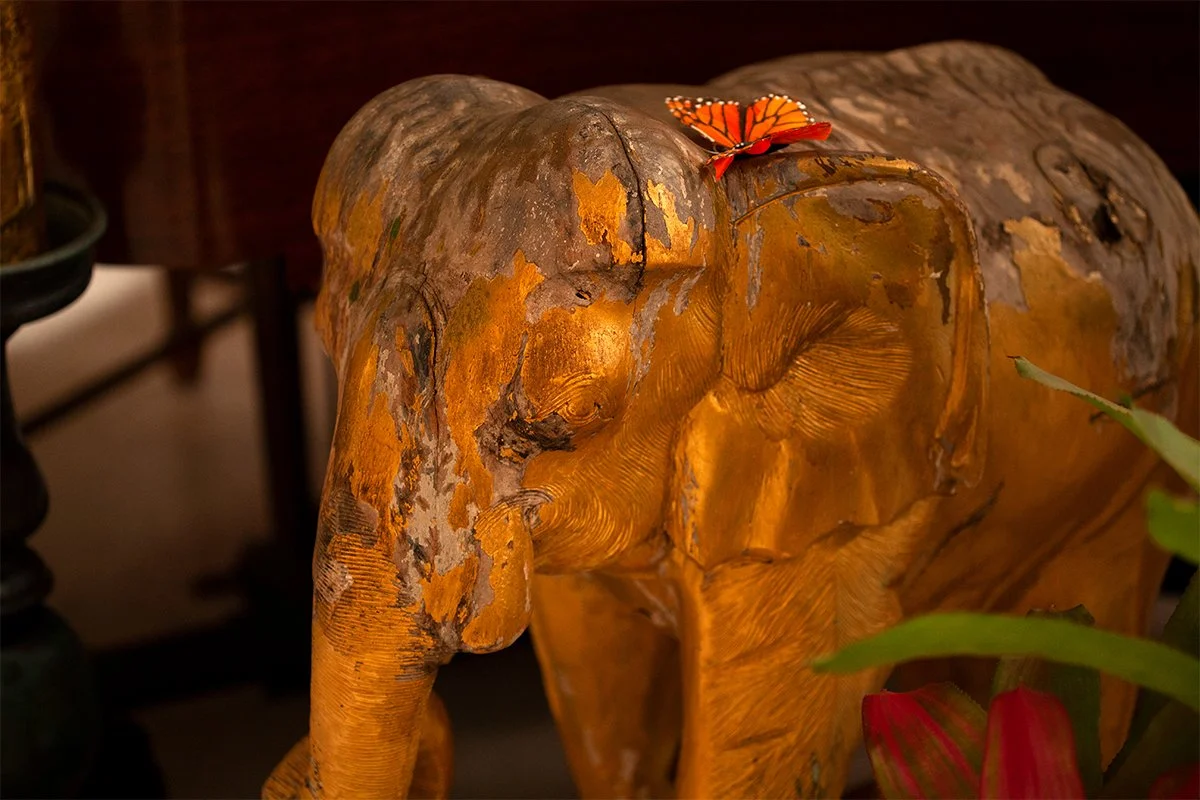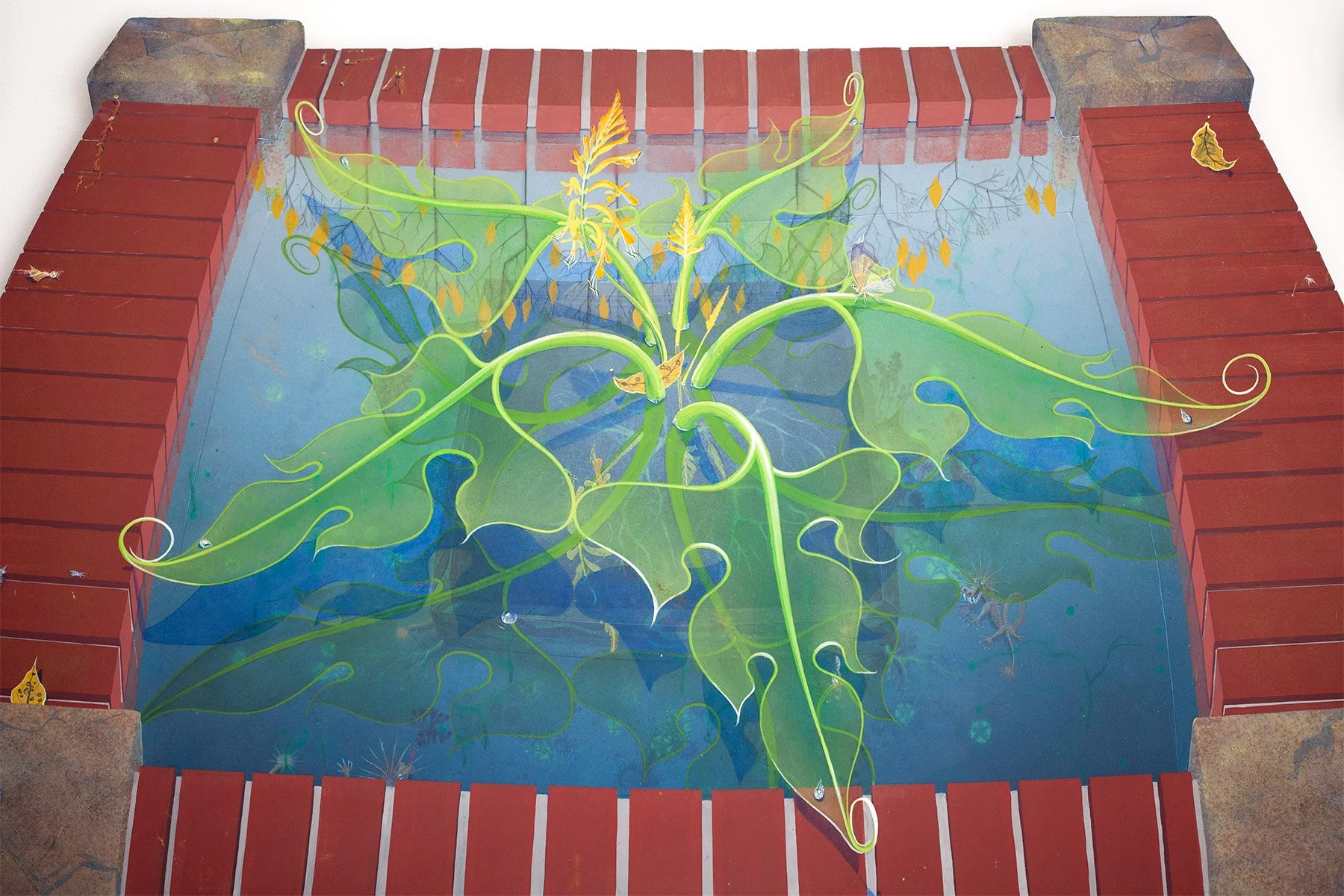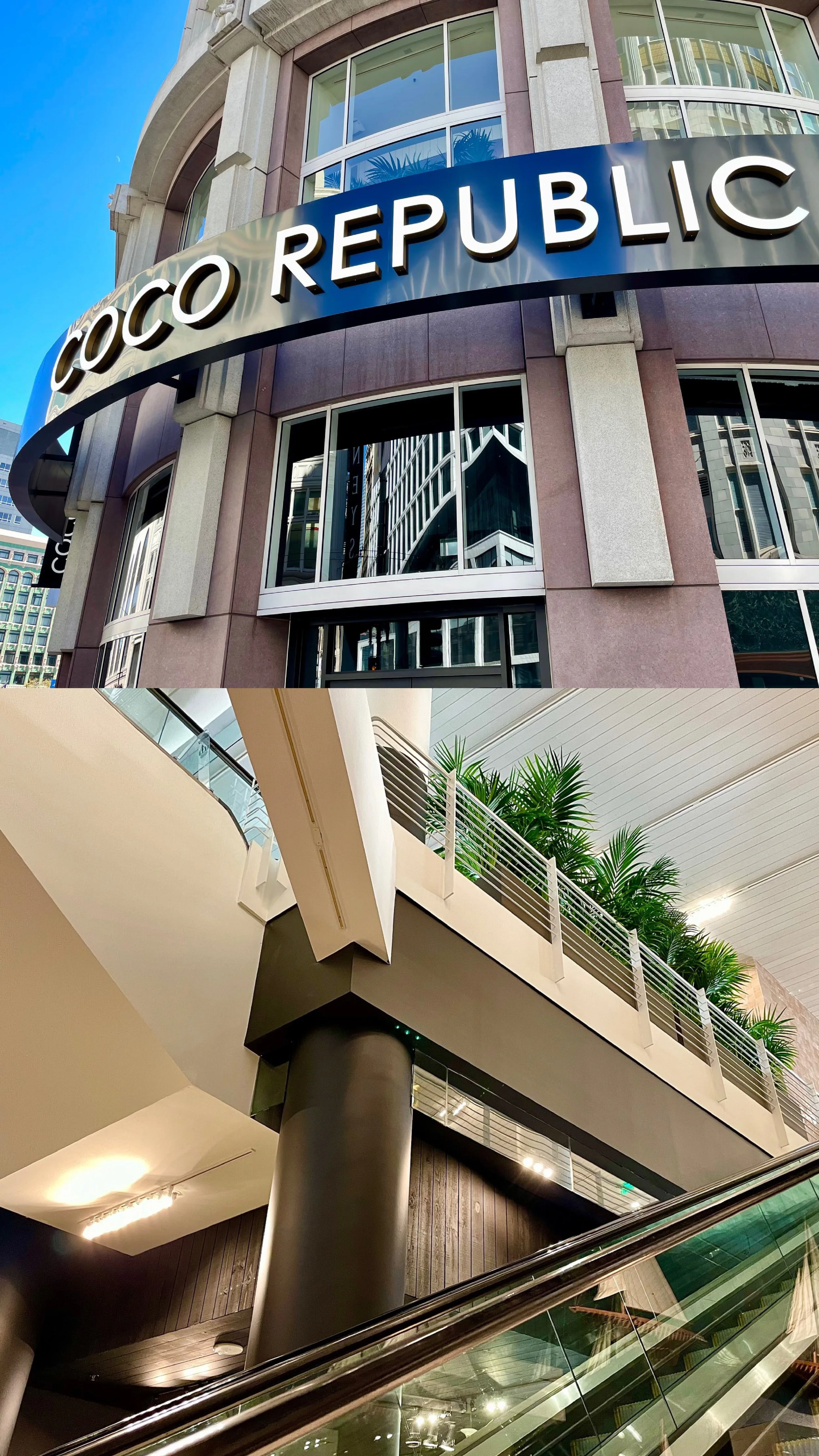Michelle Derviss Mini Post (Alternate images below text)
Showing this Thursday at Living Green Design with Andrew Dewitt:
Cross Pollination, Biomorphic Expressions in Clay by Michelle Derviss
“As a practicing garden designer, the study of botany and horticulture has greatly influenced my development in the ceramic arts.
Drawing inspiration from plant propagation and seed collecting trips in the jungles of Borneo, the cloud forests of Costa Rica, the verdant coastal and mountain ranges of Greece, Morocco and Japan, the world's wildly diverse plant and animal kingdoms have greatly inspired my biomorphic ceramic sculpture creations.
Plump seeds splitting with new life, the smooth husk of an empty fruiting pod, the opalescence of a beetle's body , these are the visual experiences that inspire me to sculpt in clay.
A cross pollination occurs when I start the sculpting process. My field sketches metamorphosize as I reinterpret natures forms into soft malleable clay.
What was once a recognizable living entity is reimagined and reshaped in clay.
It is in this transformation that I hope to inspire viewers to reach deep into their own sub conscience for reflective contemplation and their own personal connectivity to nature.”
– Michelle Derviss
New Ceramics by Andrew DeWitt and Michelle Derviss
Living Green Design
Gallery of Great Things
Address
Opening reception for the artists
December 1st 5–7.30PM
Alternate Images:
Up Next: Crystals and Fossils
New Ceramics by Andrew DeWitt and Michelle Derviss
Living Green Design
Gallery of Great Things
Address
Opening reception for the artists
December 1st 5–7.30PM
Andrew Dewitt’s Creative Process
Andrew was first drawn to ceramics by the incredible versatility and beauty of the material itself – a material capable of mimicking natural forms and surfaces such as stone, wood, water and flesh. More importantly though, ceramics allows all these different effects to exist seamlessly together within a single work, and thus provides a tool for the deeper exploration of the themes that intrigue him most.
Andrew’s major interest concerns the genesis and evolution of natural forms and how these forms may be abstracted to connect to design and pattern. Specifically, this inquiry includes explorations of surface to form, mutation to symmetry, and growth to decay.
The evidence of the human hand and the commitment to an ongoing dialogue with the material are essential lynchpins to his practice. It is through this constant state of problem solving and variation that new forms develop or evolve into myriad variations.
@andrewdewitt @michellederviss
Guanyin: Goddess of Mercy
Antique/Ming Dynasty (C. 1368–1644) China, wood
A Bodhisattva is a being who has gone through the stages of being a mortal, meditation, fiery cleansing, deep transformation, and attained enlightenment but voluntarily stays in the imperfect worldly realms to ease the suffering of all those who have not. This delaying of the final step, reaching Nirvana and leaving the world is seen as the ultimate act of compassion and as such, Bodhisattvas are some of the most beloved deities in the Buddhist tradition.
Guanyin or “The One Who Perceives the Sounds of the World” is deeply in tune with the human condition, the hardships and cycles of life and death. Many in the Mahayana tradition believe that when a person departs this world, Guanyin puts their soul into the heart of a lotus, places it on water and sends it to drift into Sukhavati, or the “land of bliss”. The earliest mention of her is believed to be in the famous Lotus Sutra.
She is shown here seated on a rock formation calmly in dhyanasana, legs crossed with the soles of both feet turned up (in the lotus position).
Remnants of polychrome mineral pigment on the sculpture has some paint loss and age related stress fractures. Her body bent slightly forward, her hands in dhyana mudra, the gesture of mediation. Thick robes wrap loosely around Guanyin's body with the upper chest exposed. She wears a crown bearing a calm face with heavily lidded downcast eyes and a serene smile on her lips. The back has a large unsealed cavity that would originally held consecration materials.
Minor fading. Some damage to the lower part of the figure due to age.
Dimensions: 20" Depth x 27" Width x 62" Height
$16,000
Middle Slides:
Statue of the Eleven-Headed and Thousand-Armed Guanyin (Qiānshǒu Shíyīmiàn Guānyīn) with the 28 guardian devas associated with this manifestation at her sides; located at the Guanyin Shrine on Mount Putuo Guanyin Dharma Realm in Zhejiang Province, China
Shrine to a Tang dynasty (896) carved stone statue of the Thousand-Armed Guanyin (Chinese: Qianshou Guanyin) in Shengshui Temple (內江聖水寺) in Neijiang, Sichuan, China
---------------------------------------------------------------------------------------------------
Bronze Vessel Reproduction.
A copy of an Archaic bronze ritual food vessel tripod and cover. Ding.
Period between Warring States and Han Dynasty ( 475-221 BC)
The deep, globular body is raised on three cabriole legs and has two upright decorated loop handles. The sides are cast with two bands of tightly arranged interlocking dragon scrolls. The domed cover is decorated with related bands, separated by three auspicious animals resembling tigers The surface is mottled with green patina encrustations.
Clay Pottery
Period: Ming C. 1368-1644
A large round gray pottery decorated with soft blue trim and right below is a red pigment band decorated with key motif . Small gold fish swimming in the soft light blue-green environment surrounded with stylized curly water plant.
Pre Christmas Sale Posts
This Friday and Saturday at Living Green Design
Start Soon
Pre Christmas Fall Sale: 20% off all Inventory!
The Gallery of Great Things tour begins first and foremost with a dear friend to Living Green & Davis Dalbok, our principal designer:
Born in Venice, Italy, March 27th, 1936, Luciano Tempo was a designer and antiques dealer based in Carmel by the Sea, California, for nearly fifty years. A true Master of Design, Luciano did everything from curating Hollywood celebrity estates to commissioning bronze, marble and travertine decorative objects and furnishings around the globe.
Featured above from the Living Green Collection: (1.) A stunning Burmese gilded & wood carved Naga dragon with brilliant colored glass decoration, displayed on original supports - late 1890s to 1920s. (2.) A Chinese carved, Luciano Tempo marble table of scales inset with bronze frame and table base. (3.) Carlo furniture coconut shell armchair.
#LucianoTempo #CarmelbytheSea #Carloshowroom #KasbahTamadot #Marbletable #Bronzetable #Italianfurniture #MerchantofVenice #AtlasMountains #GalleryofGreatThings
Post 2 · September 1st 2022
“Casbahs are to Morocco what castles were to medieval Europe: fortified dwellings for nobility, with high, crenelated walls, towers and interior courtyards. Ruined casbahs, some deserted and some inhabited by squatters, dot the landscape, especially here in Southern Morocco.
But unlike medieval castles, casbahs are still being built. New ones, or clusters of casbah-like dwellings often made of adobe, the sun-dried clay suited to a hot, dry climate, are constructed alongside old, crumbling ones that have not withstood time and the elements.
Mr. Tempo’s casbah is an exceptional example, a highly individualistic indulgence in comfort and luxury. Every room and surface is a feast for the eyes. While the ensemble pays homage to traditional Moroccan style, the details are pure Luciano Tempo.”
– Florence Fabricant, Dec. 24th, 1992
Click the link in our bio to read the full New York Times article. (https://www.nytimes.com/1992/12/24/garden/south-of-marrakesh-a-new-old-casbah.html)
#AtlasMountains #KasbahTamadot #LucianoTempo #GalleryofGreatthings #LucianoAntiques #Asni #Asnivalley #Morocco #Marrakech
Post 3 · September 23rd, 2022
“A culture can be understood by studying its collective mythology… There can be no community without collective stories. The path of a community or even a civilization is determined by the quality of the stories it is built on, the mastery of the storytellers who keep them alive and the degree to which they stand the test of time.”
– Sumeet Banerji, ‘Strange Places’
The story of Parusharama follows the sixth avatar of Vishnu. Parusharama is Vishnu with the axe who decides to curb the egos of the ruling classes. The end of this story is said to have taken place on a beach in Karnataka, India. A beach which Sumeet, our showroom photographer, visited while home in India on a vacation which he described as a tour in study of what it means to put present day sense of place within the frame of mythology and discovered “a juxtaposition of observable geography and mythology.” Sumeet was inspired to take this trip from a guru of his in Bangalore, who taught him art since childhood. After his close study of mythology, it seemed natural to visit the sites where these stories occurred – and thus began a project of mapping the mythological avatars of Vishnu. Above is included a photo from Sumeet’s trip of this beach and a painting depicting the myth that occurred there.
When Sumeet came to photograph some of Living Green’s many treasures his eye was drawn to our collection of ‘Karnatakas’ as Davis calls them: The Holders of the Holy Water.
These beautiful bronze and brass vessels are used on special occasions in India at the entrances of temples and around the home, to be filled with water and floating flowers as an Indian form of Feng Shui - Vastu Sastra - a practice and field of study which utilizes conscious arrangement to foster well-being and prosperity.
Sumeet elaborated further that when water is introduced to a space it activates the energetic flow of the room, aiding to heal and replenish its surroundings.
Slide 3: Rainy beach in Gokarna, India
Slide 4: Painting, Source: Drshenoy, Creative Commons
Slide 5: Temples and sculptures carved into caves in Badami
#vastusastra #urlis #puja #35mm
Post 4
Forty million years ago the Earth was covered with tropical forests. Palm trees grew as far up as Alaska. Australia was connected to Antarctica and India was just beginning to collide into Asia (The Himalayan mountain range was formed by this collision).
The Eocene Epoch (Greek for “New Dawn”) was called this because it marked the beginning of new types of fauna. One tree that has its roots in the early Eocene is the coconut palm. The coconut seed has been an important part of human history. It was a portable source of food and water during long sea voyages and has always been an invaluable building material.
Shown above are ingeniously (and sustainably) crafted chairs and mirrors by master Italian Designer Carlo Pessina made from polished coconut shells on site in his studio in Bali.
Slides:
Ancient Plant Garden, San Francisco Botanical Garden Redesigned and Reimagined by Davis Dalbok and Tim O’Shea {Tag} of Green 17 Design
Plant and Dinosaur-Foot Stamped Concrete, San Francisco Botanical Garden by Davis Dalbok and Tim O’Shea
Mandalay Buddha 20th Century, Burma
Polished Coconut Shell Chairs and Mirror by Carlo Pessina Hand Crafted in Bali {Tag Carlo Furniture}
Bronze Flames Luciano Tempo
Available now at the Gallery of Great Things, San Francisco. Inquire for details.
#sfbotanicalgarden #carlofurniture #balitravel
Post 5
The transition from harvest to winter is a time to celebrate the spirits. Spirits and ghosts are often thought of as beings that live in the transitional spaces: the space between the material and physical world, between the past and the present moment and so on. Many believe that we can be blessed and protected by our ancestors and these beings that exist outside time.
‘Spirit Houses’ are miniature shrines often placed in the corner of a house or business to entertain and place offerings to the guardian spirits of the space. They have been used for centuries and in many different countries.
Serpents are also protectors of sacred sites. When threatened, snakes such as cobras and rattlesnakes often hold and defend their ground rather than retreating. They are also seen as messengers between the Upper and Under-world because they live in cracks and holes in the ground.
Offerings made at Spirit Houses are often in the form of flowers or sweets: “Sweetness is explained by the observation that sweet spirits naturally have sweet tooths.”
Spirit Houses large and small, now at Living Green Design
The Gallery of Great Things, Open Tuesday–Saturday 10AM–5PM
20% off Nov 4th and 5th
Slides:
Spirit Houses, Thailand Teak
Five Headed King Naga (snake), Stone
Seven Headed Naga over a Linga: Lepakshi Temple, South India
Buddha Protected from a Storm During Meditation by the Multi-headed Serpent Mucalinda Burmese 19th Century
References: Winn, Patrick Public Radio International (PRI). Retrieved 18 August 2018.
#spirithouses #naga
Tour of the Gallery of Great Things, Living Green Design
Topics Coming up:
Scripture Chests, Story of Buddha
Mirrors, Shrines, Doors, Portals
Caryatids
Snakes, The Underworld
Doris Duke Collection, Boat
Palace Doors
Currency from Nigeria, Gold leaf Paintings
Crystals and Rocks at Living Green
Lampo Leong
Avatars of Vishnu
Elephants
Han Dynasty Owl Urns
Birds (Golden Panel, Sculpture, Archie Held, Garuda)
Hurricane Lamps
Tom Kress
Alice In Wonderland - Rabbits
When the Coco Republic executive and design teams visited the Bay Area to find the ideal plantscapers to craft their vision of a highly curated and sophisticated indoor rainforest environment, their search ended after visiting our conservatory of specimen tropical foliage in the Bayview. At once they realized this wasn’t just a plant shop. Living Green has an established interior plantscaping heritage.
The collaboration developed into the lush installation now on view at 55 Stockton Street, just off San Francisco's iconic Union Square. A pair of unusual palm specimens are featured in the soaring 70ft escalator atrium.
These two specimen palms are a cross between the rare Wodyetia bifurcata and a veitchia palm, to create the unique hybrid Wodveitchia. The Wodyetia bifurcata or ‘Foxtail palm’ is endemic to a small, isolated region in Northern Australia that has been called a “lost world” for animal and plant species. The headland is surrounded by a field of granite boulders that have prevented bushfires and kept moisture in the rainforest. As a result, some of the animal species have existed in isolation here for millions of years.
Most of the world was unaware of the existence of this 'spectacular' palm until 1978, when it was discovered and brought to the attention of the outside world.
Coco Republic is a “a design led, lifestyle brand founded in Australia in 1979. Coco Republic is synonymous with quality, service, and a sophisticated attention to detail.”
Coco Republic officially opens today, October 18th at Union Square, San Francisco.
Sources
[1] "Nomenclature of Queensland". The Courier-Mail. Brisbane: National Library of Australia. 30 September 1935. p. 10. Retrieved 5 November 2014.
[2] "Cape Melville National Park: Nature, culture and history". Department of National Parks, Recreation, Sport and Racing. 10 October 2013. Retrieved 26 October 2013.
[3] Zoe Mintz (28 October 2013). "'Lost World' In Australia Uncovers New Species On Cape Melville". International Business Times. Retrieved 3 August 2014.
[4] usbg.gov plant-collections Accessed 10 Januray 2018
[5] “The area has been recognised for its rich biocultural diversity,” Palm and Cycad Societies of Australia webpage on Wodyetia bifurcata Accessed 3 May 2008
Pre Christmas Fall Sale At Living Green Design
Two days only!
November 4th and 5th (Friday and Saturday)
Crystals, pots, beautiful plant material, and treasures from around the world for indoors and out
Gallery Hours: 10am –5pm · 1485 Custer Ave, San Francisco
DM or call for details (415) 864 2251
{Adapted to Instagram Post and Email showing a collage of a number of items}







